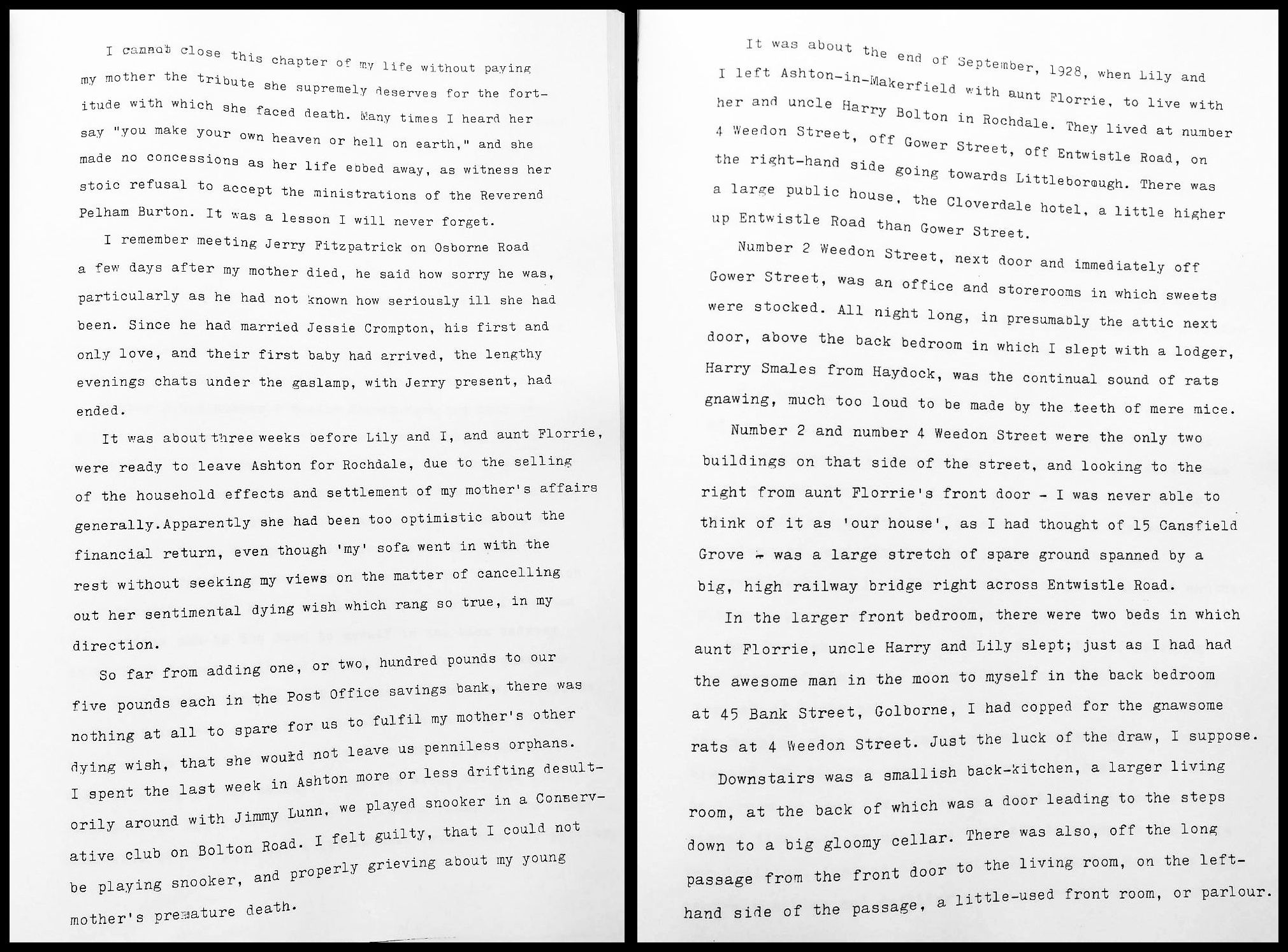Sam Pierce - A Working Class Autobiography

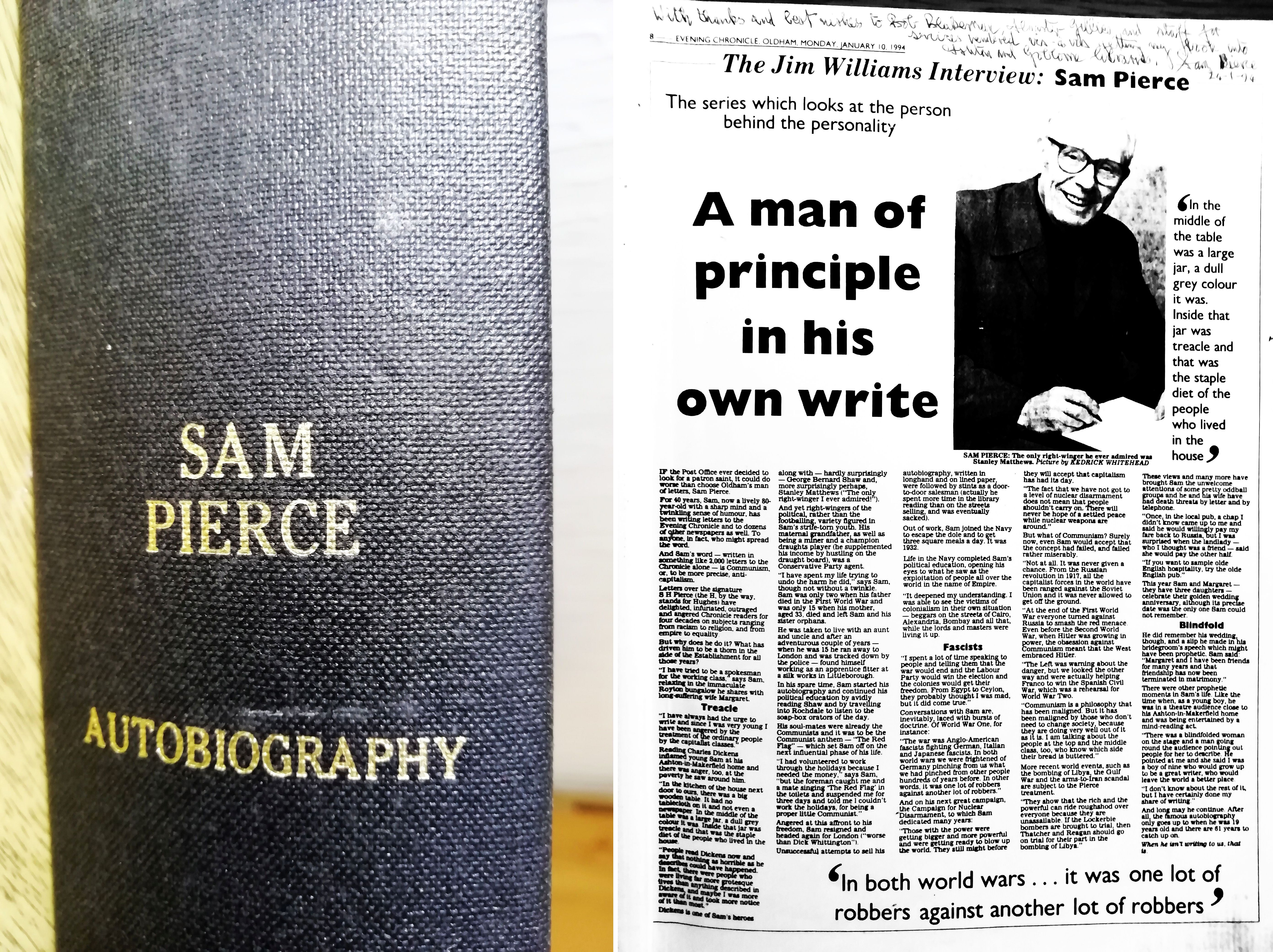
Samuel Hughes Pierce was born at 80 Old Road, Ashton in Makerfield, on 29 July 1913. Shortly after learning that his father had been killed in action at Ypres, Belgium, Sam moved with his mother and younger sister to Golborne. They returned to Ashton in 1923, eventually settling in Cansfield Grove. On leaving school, Sam secured a position with Thomas Crompton & Sons (“this busy little works set right in the heart of rural beauty in Downall Green”). His career there was cut short by the death of his mother at just 33, leaving Sam an orphan at 15. He and his sister went to live with an aunt in Rochdale, but the relationship was never an easy one and Sam ran away to London.
Unfortunately Sam was unable to interest a publisher in his story, and seems to have got no further than documenting the first two decades of his life. The typescript copies of “A Working Class Autobiography” which can be found in local libraries and at Oldham Local Studies end with the author, now 19, waiting at London's Victoria Station for a train that would take him to Chatham where he had arranged to board a Merchant Navy ship.
The acute poverty that Sam had witnessed in Ashton and Golborne, and the apparent futility of the sacrifices made by his father and others of that generation in the First World War, left an indelible impression, shaping his later political views and actions. Among the causes he espoused after World War II were the Campaign for Nuclear Disarmament and the establishment of what became the People's History Museum in Salford. He spent his last years in Oldham, having been made life president of that town's Trades Union Council, and gained a reputation as the frequent writer of “endearingly blinkered letters about politics” to the Oldham Evening Chronicle and other papers.
But it's time to hear from Sam Pierce himself... We'll follow his story up to the point of his departure from Ashton in 1928.
[NOTE: Sam's original typescript is reproduced in the best quality achievable in the circumstances. For ease of reading you may wish to use the “zoom” function on your browser to increase the magnification. Or try viewing the single page images - without illustrations - here.]


Above: 80 Old Road (left of steps) on 17 April 2025. Daisy Bank has no date-stone but, presumably, was built in the late 19th century. Nearby are “Kensington Vale 1894” (no. 26 etc), “The Willows 1899” (no. 38 etc), “Greenfield 1899” (no. 120) and “Tedber Terrace 1889” (nos. 149-55).
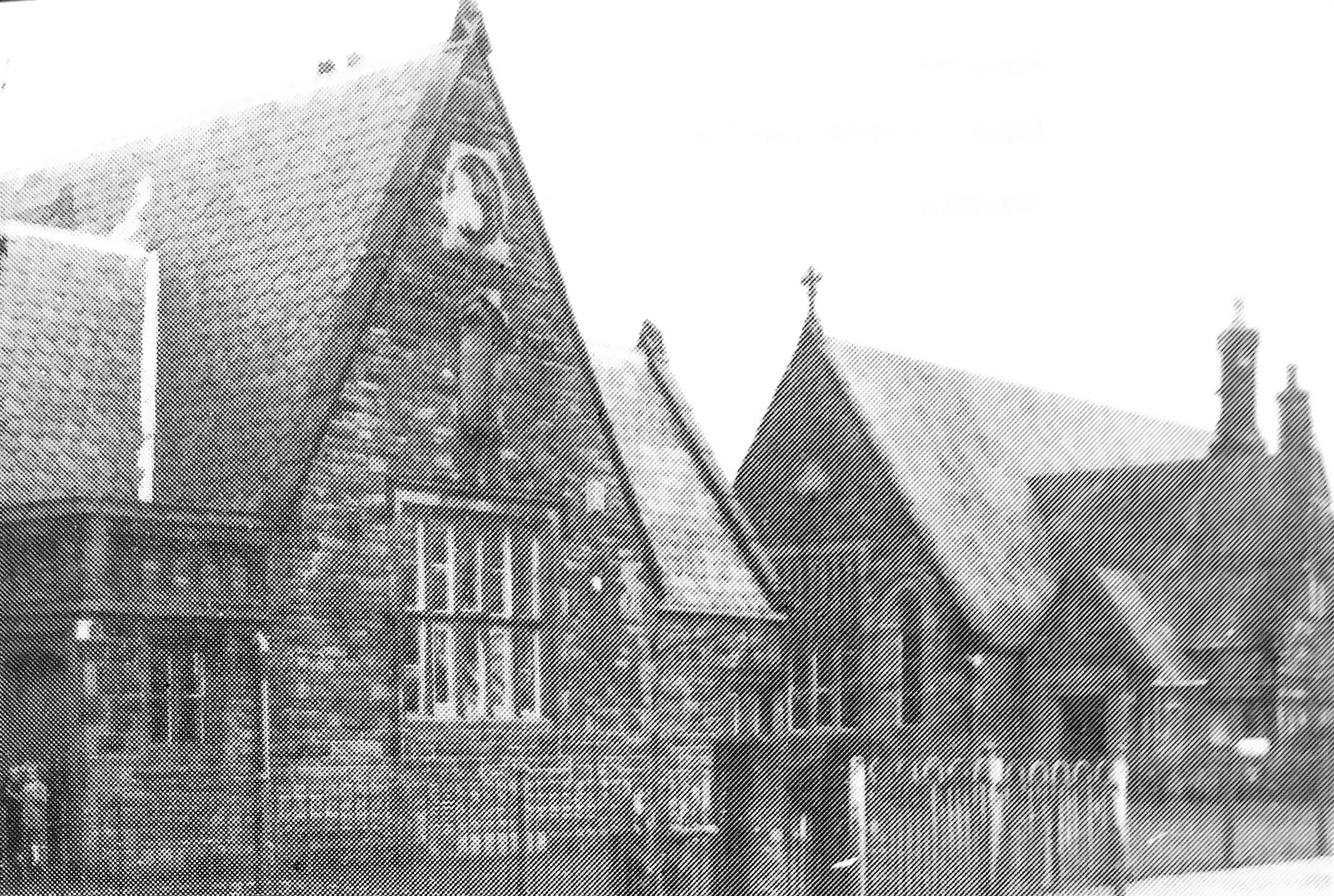
Above: The original St Oswald's School on Liverpool Road, Ashton-in-Makerfield, opened in 1846. Boys were schooled in a separate building elsewhere on Liverpool Road after 1876 and an Infants School was begun on the original site of 1846. In 1963 the schools were reconstituted as St Oswald's Primary School, bringing together the Infant and Mixed Junior cohorts. From 1965 until 1979 the Liverpool Road buildings were progressively replaced by those on Council Avenue, the former being finally vacated on 9 April. Housing now occupies the Liverpool Road sites.
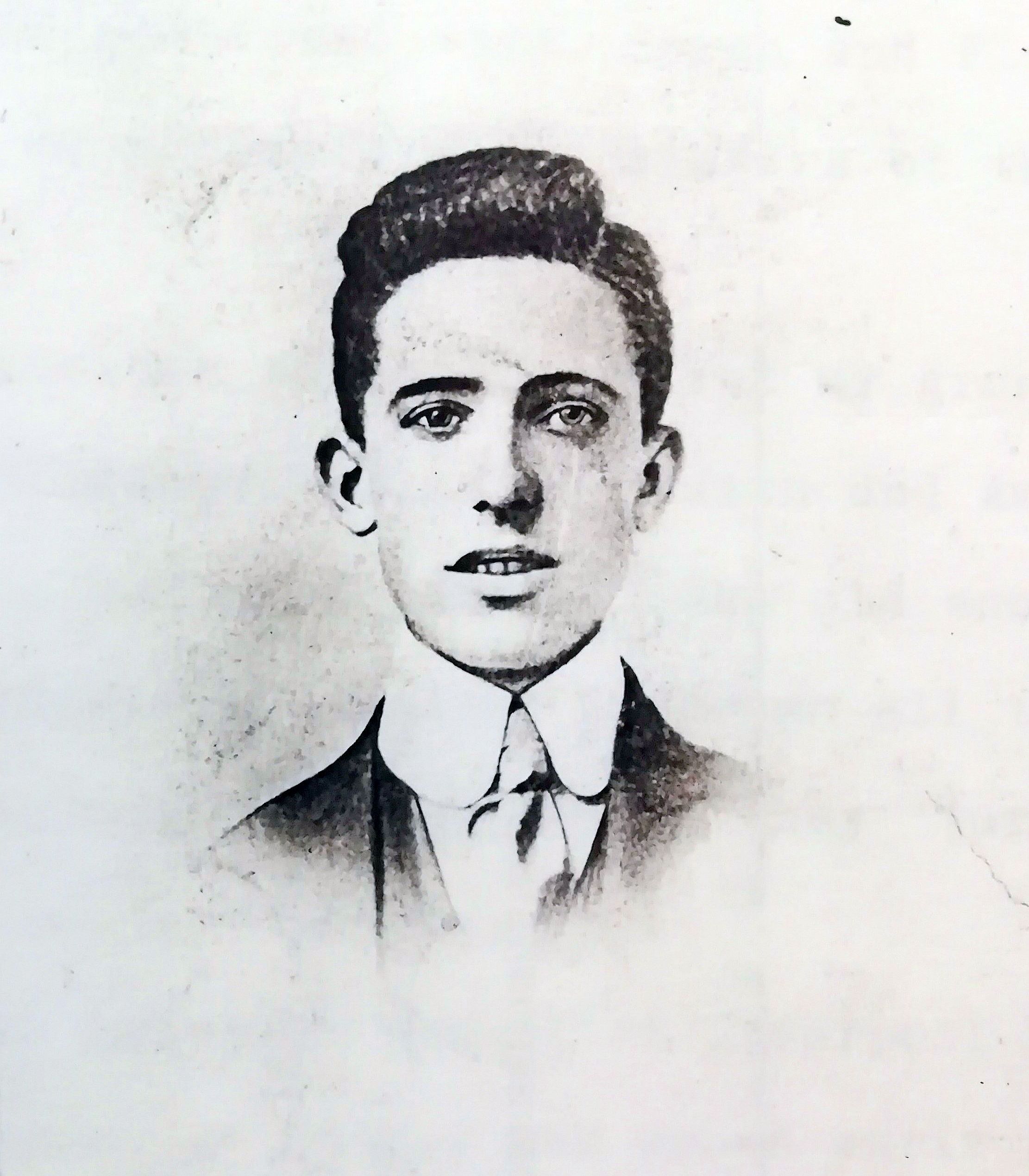
Above: “Father, Sam Pierce, about 1911-12.”

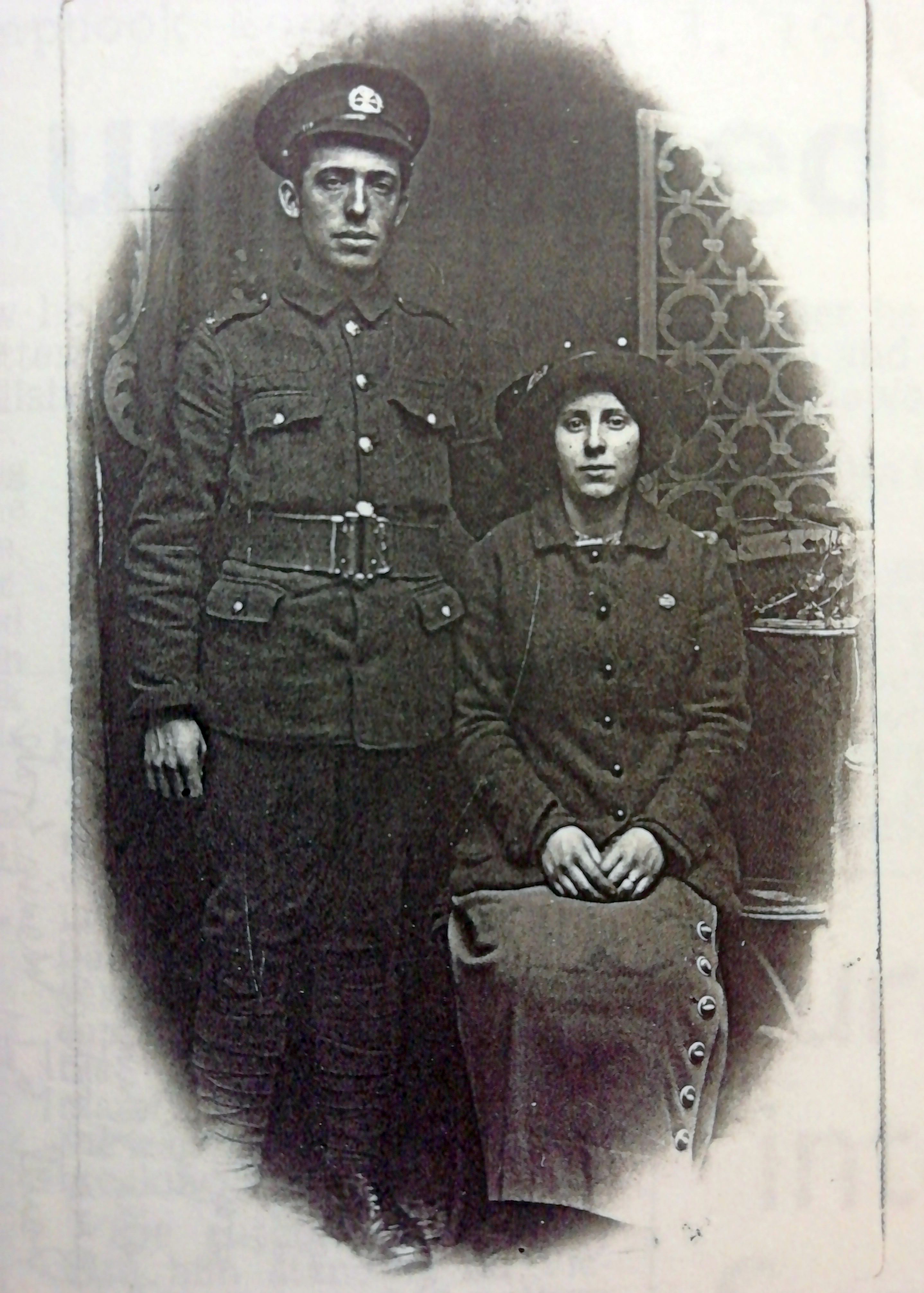
Above: “Mother & Father, about 1914; Lily - nee Leavis – Pierce and Sam Pierce. He was in the Prince of Wales Volunteers, South Lancs Territorials. Name on Panel 37, Menin Gate, commemorating about 55,000 British soldiers with unknown graves. Killed in action 16 June 1915.”
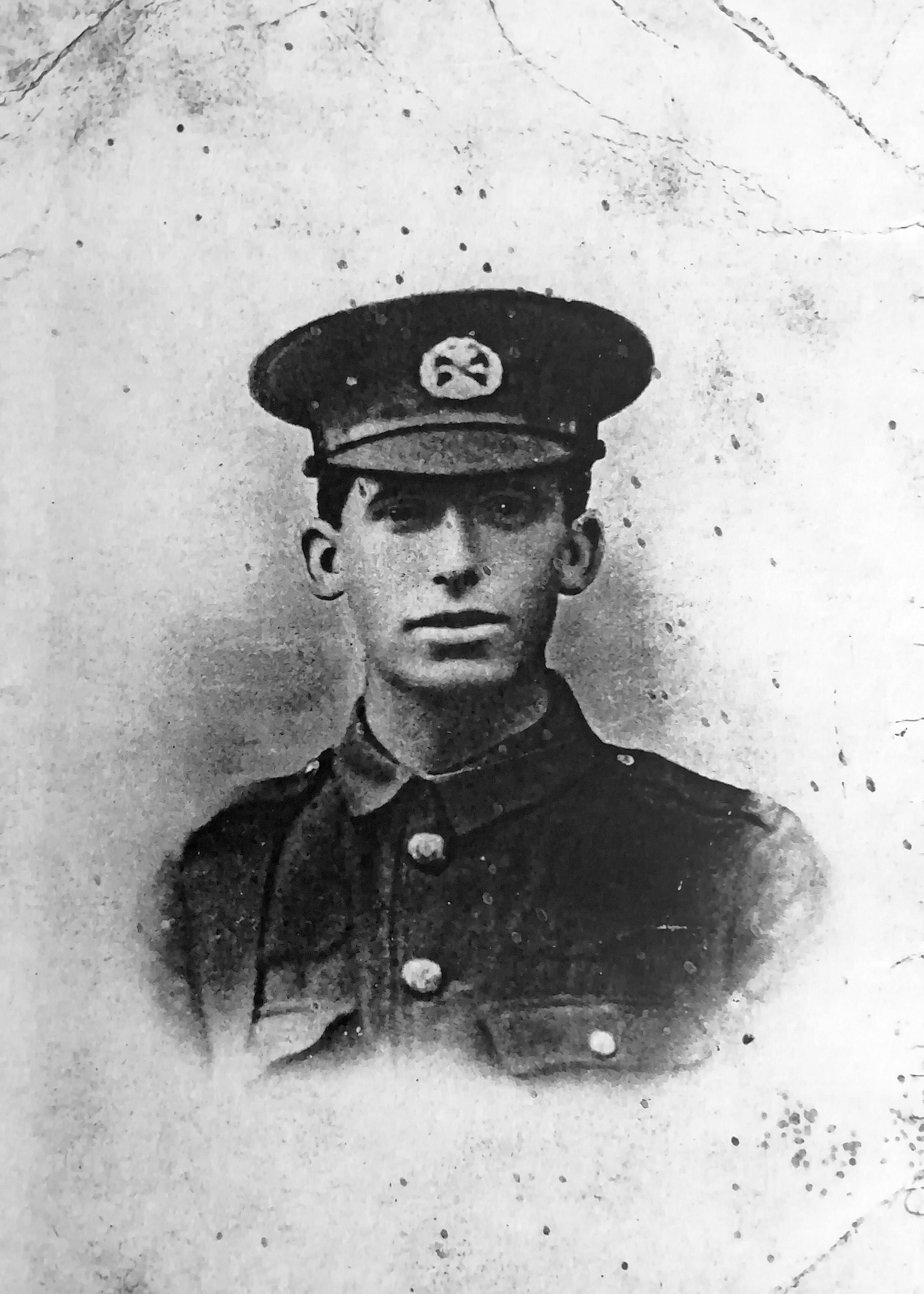
Above: “Father, Sam Pierce, in territorial uniform about 1912. (Prince of Wales Volunteers).”
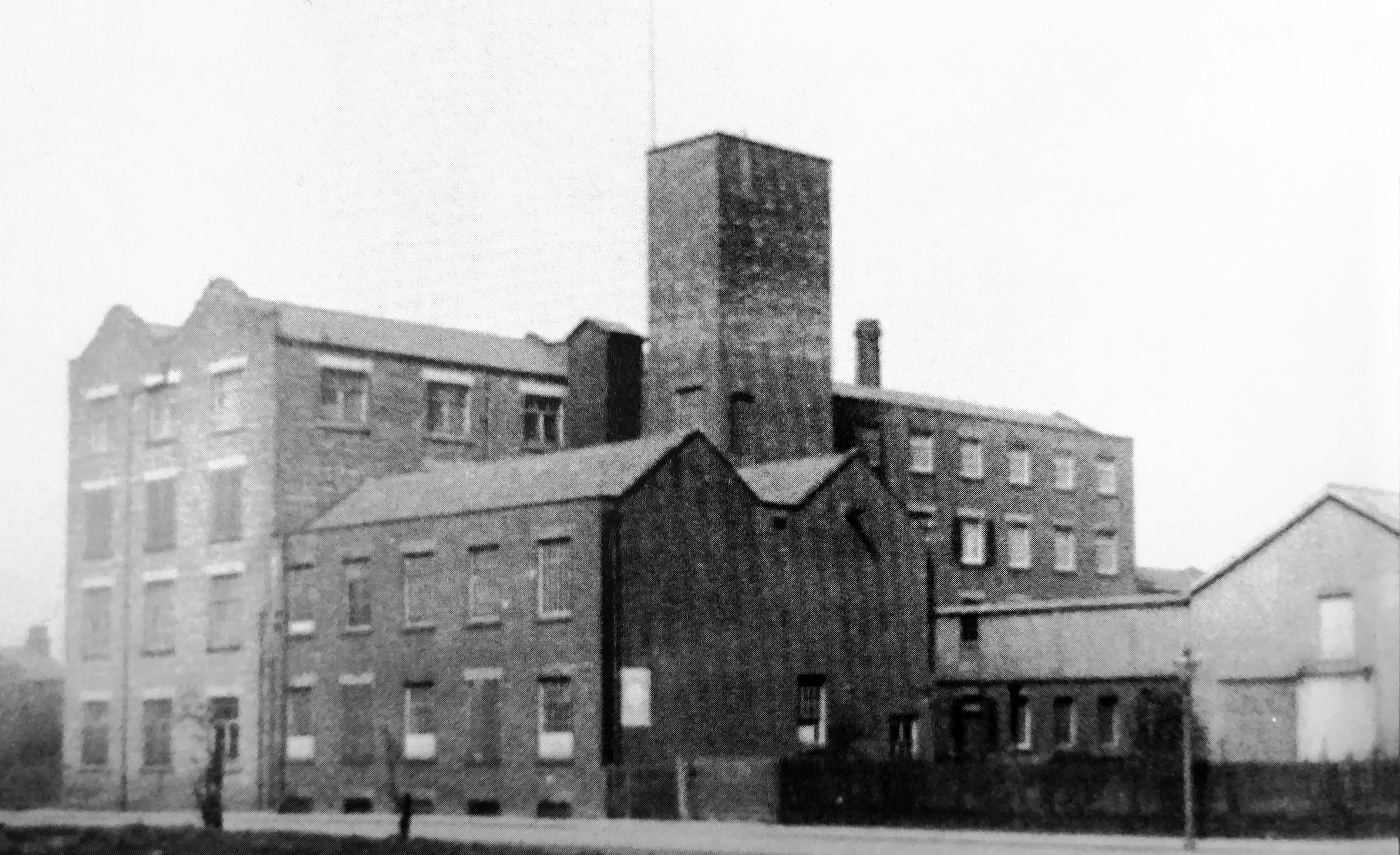
Above: Rothwell's Chocolate Works, Harvey Lane, Golborne. The founder, John Rothwell, had run a grocery shop in Wigan before establishing his original factory in 1873. The Harvey Lane premises produced a variety of confectionery products including the world-famous Walnut Whip.
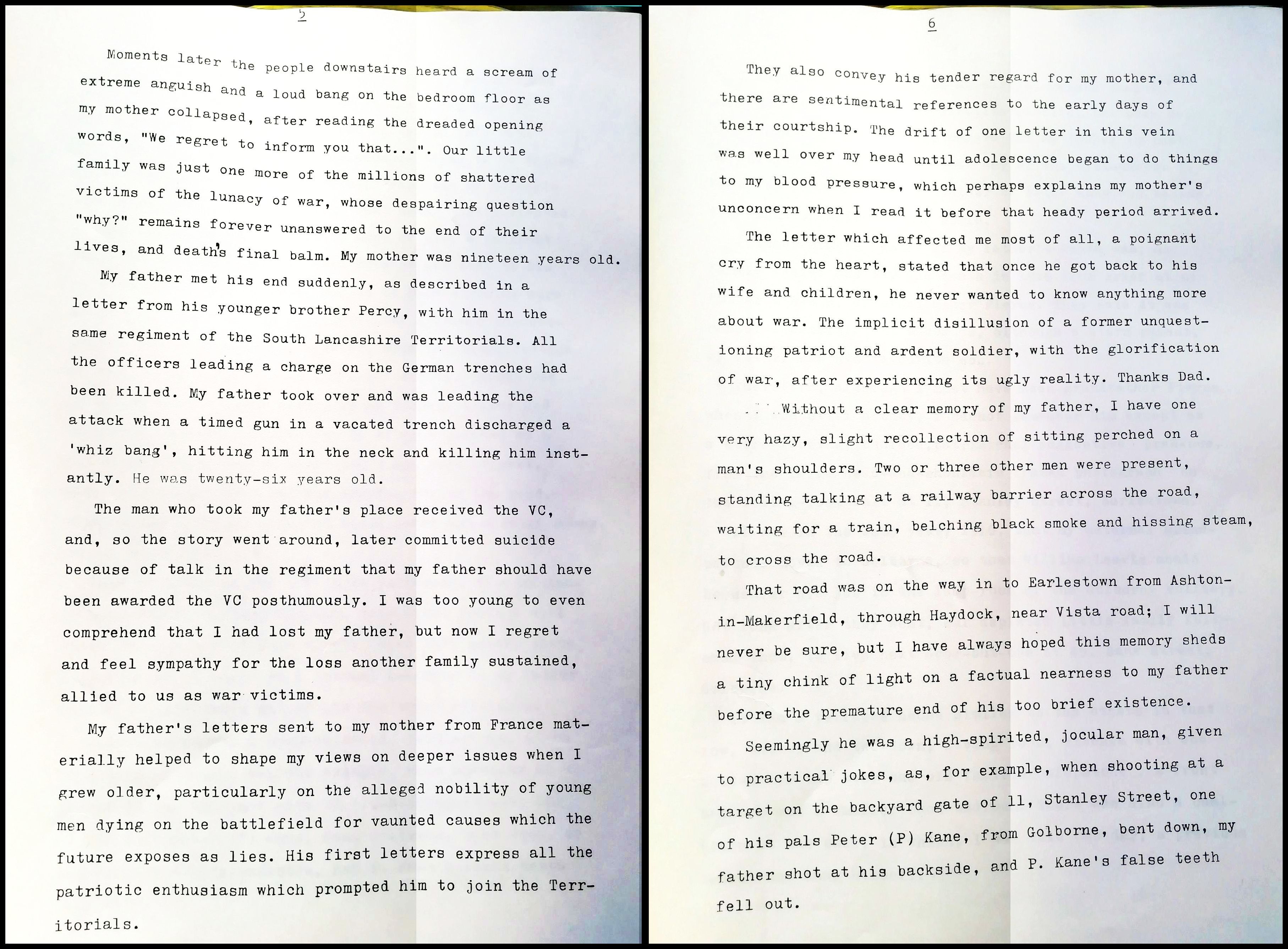
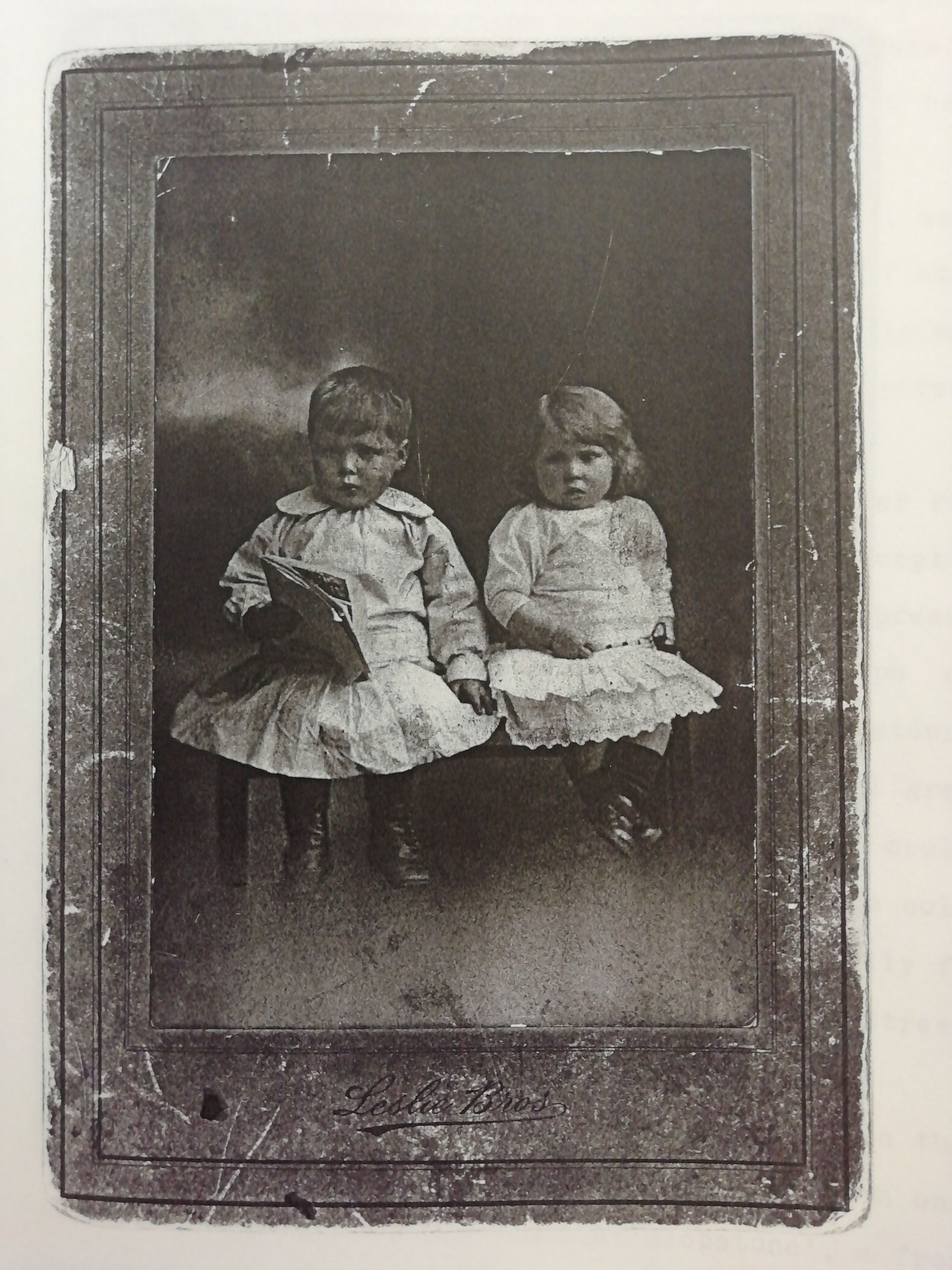
Above: “Self and sister Lily, taken about 1915”.

Above: “Mother Lily Pierce with sister Lily, self, Aunt Greta Mahoney, cousins Reggie and Marie Mahoney (Edinburgh) and Cousin Alice Naylor (6 Adamson St, Ashton-in-Makerfield). About 1915-16, after father – Sam Pierce – kittled at Battle of Loos.”

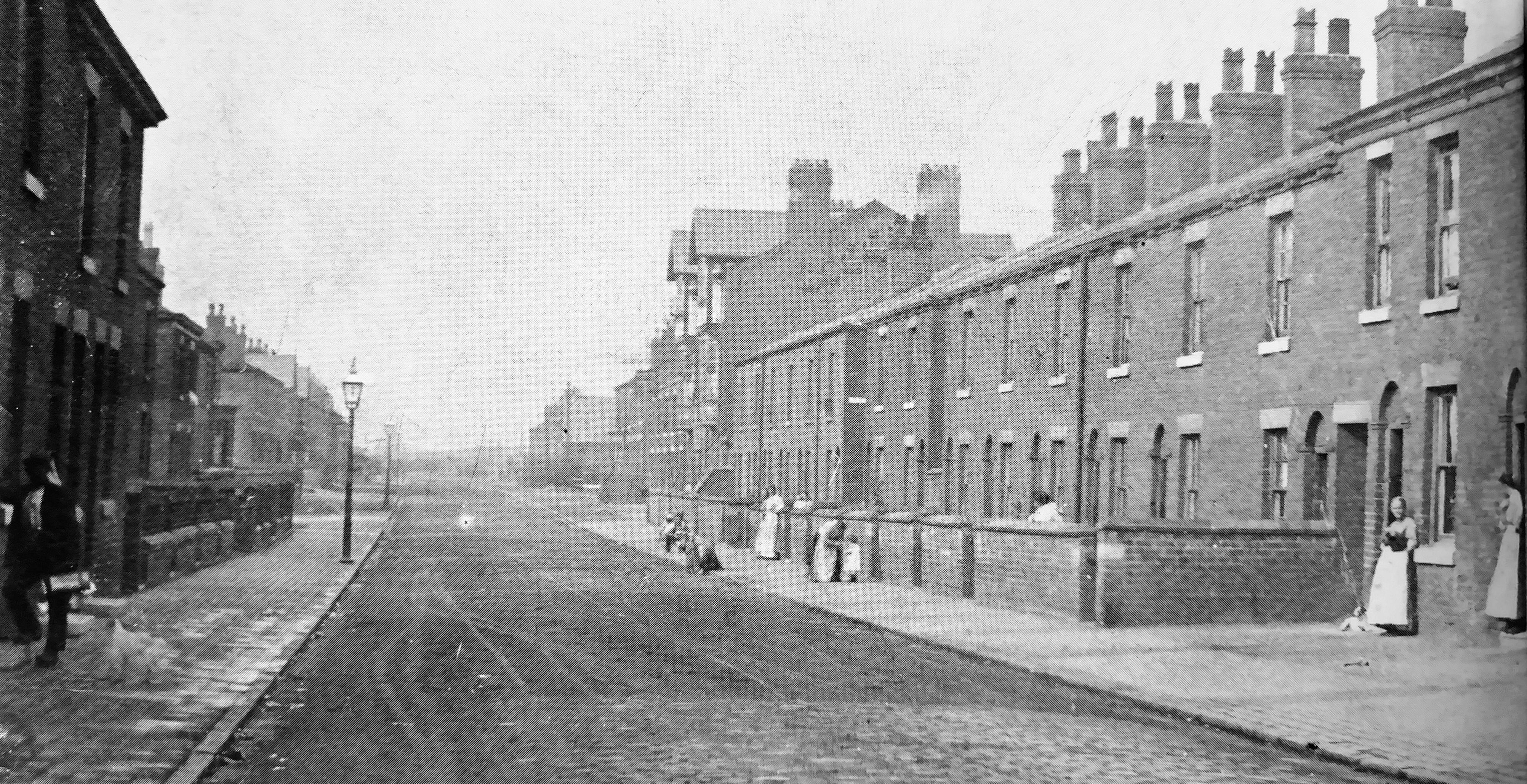
Above: Bank Street, Golborne, about 1910. The original 45 Bank Street, now demolished, was situated just beyond The Royal Hotel, seen here in the centre of the picture.
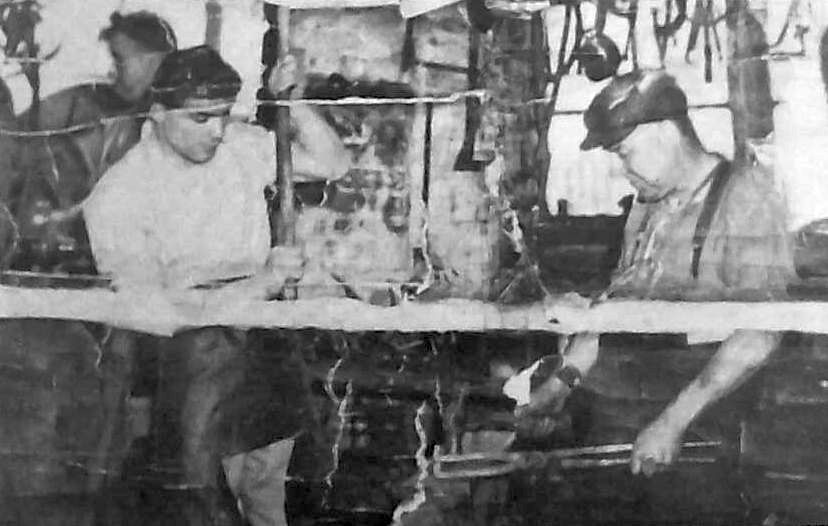
Above: Peter Kane (left) during his apprenticeship at Kenyon Lane smithy. Peter became fly weight champion of the world in 1937, winning 87 of 94 fights over the course of his boxing career.
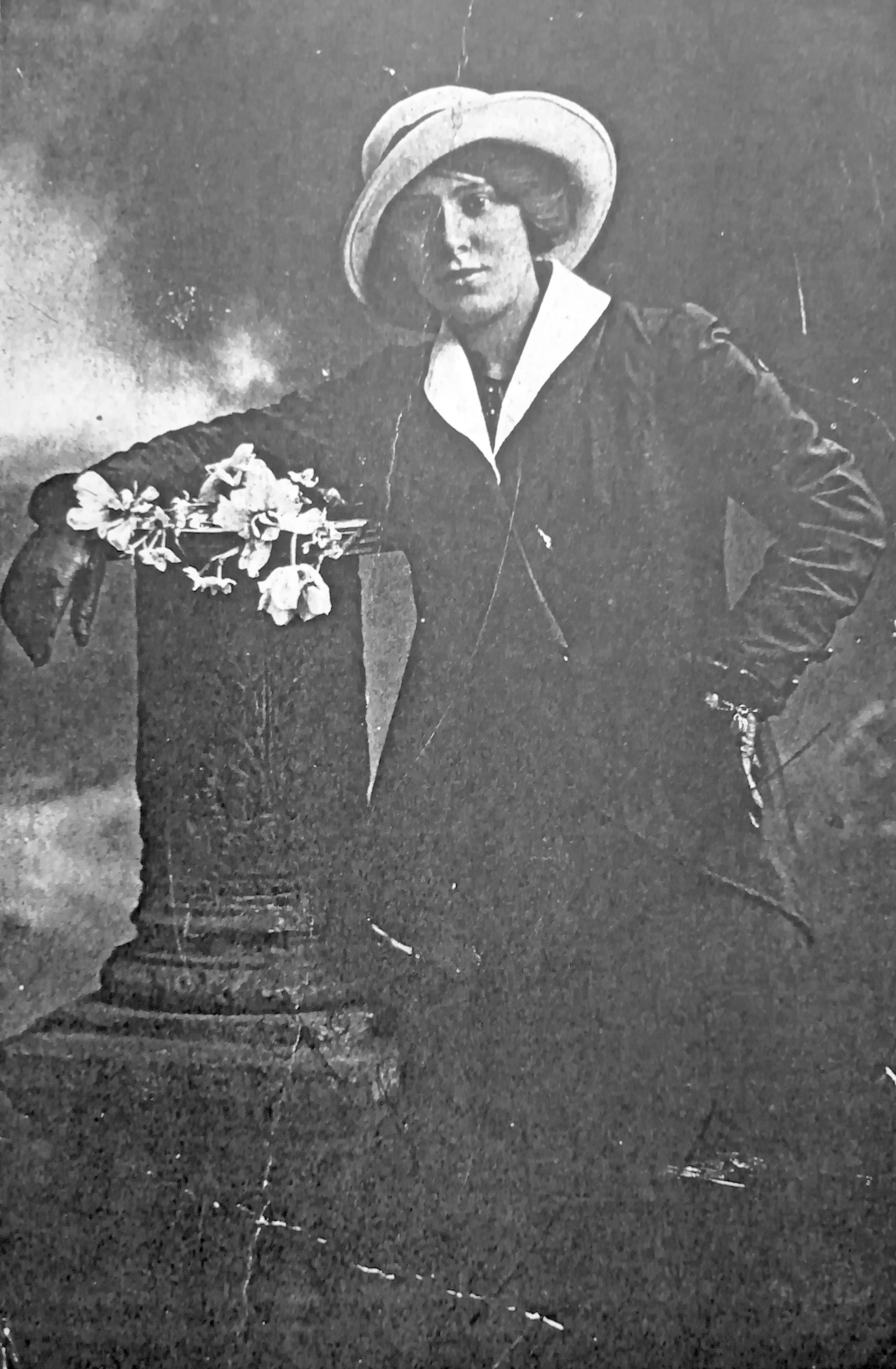
Above: “Mother – Lily Pierce, nee Leavis – about 1917”.
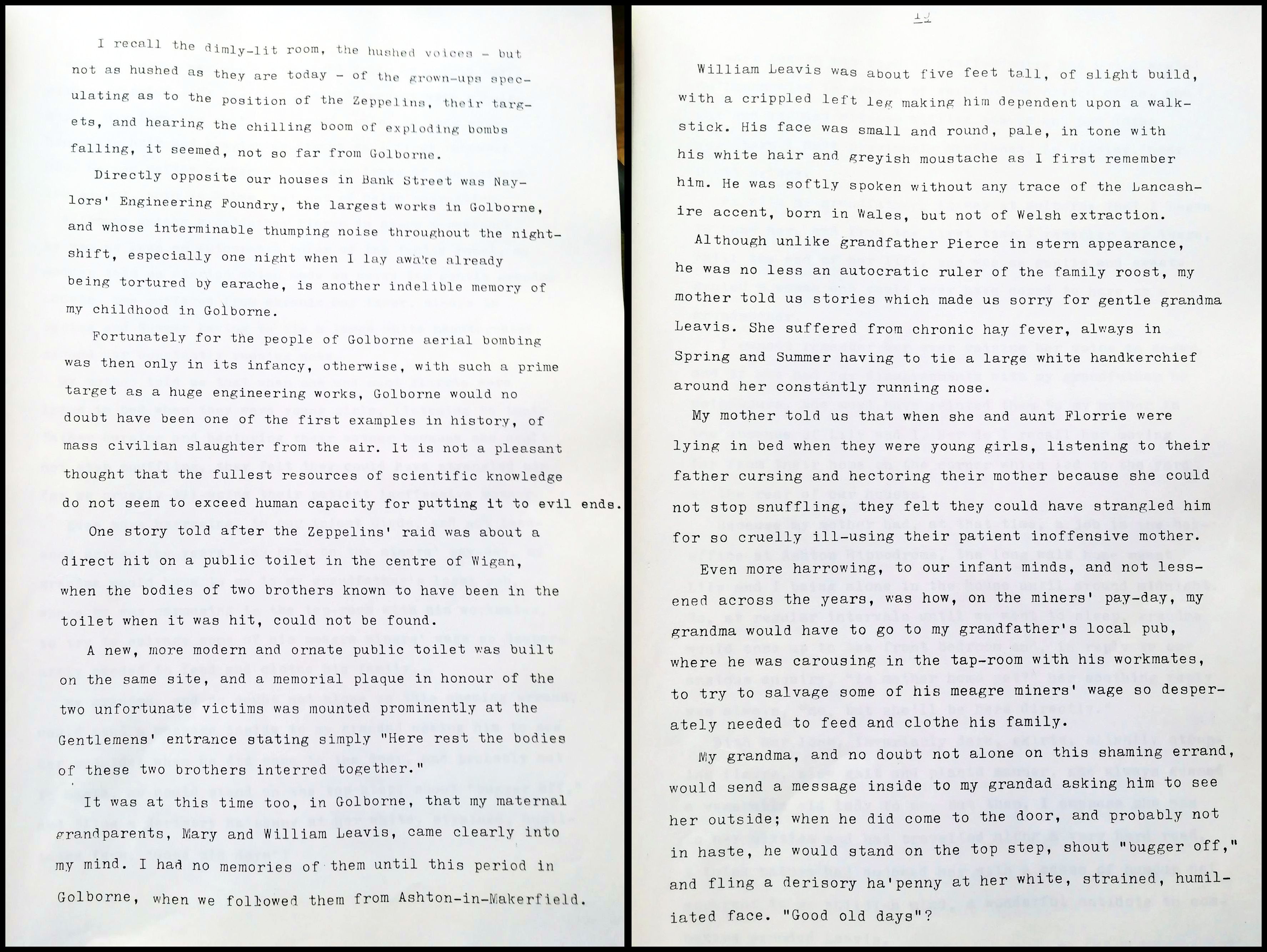
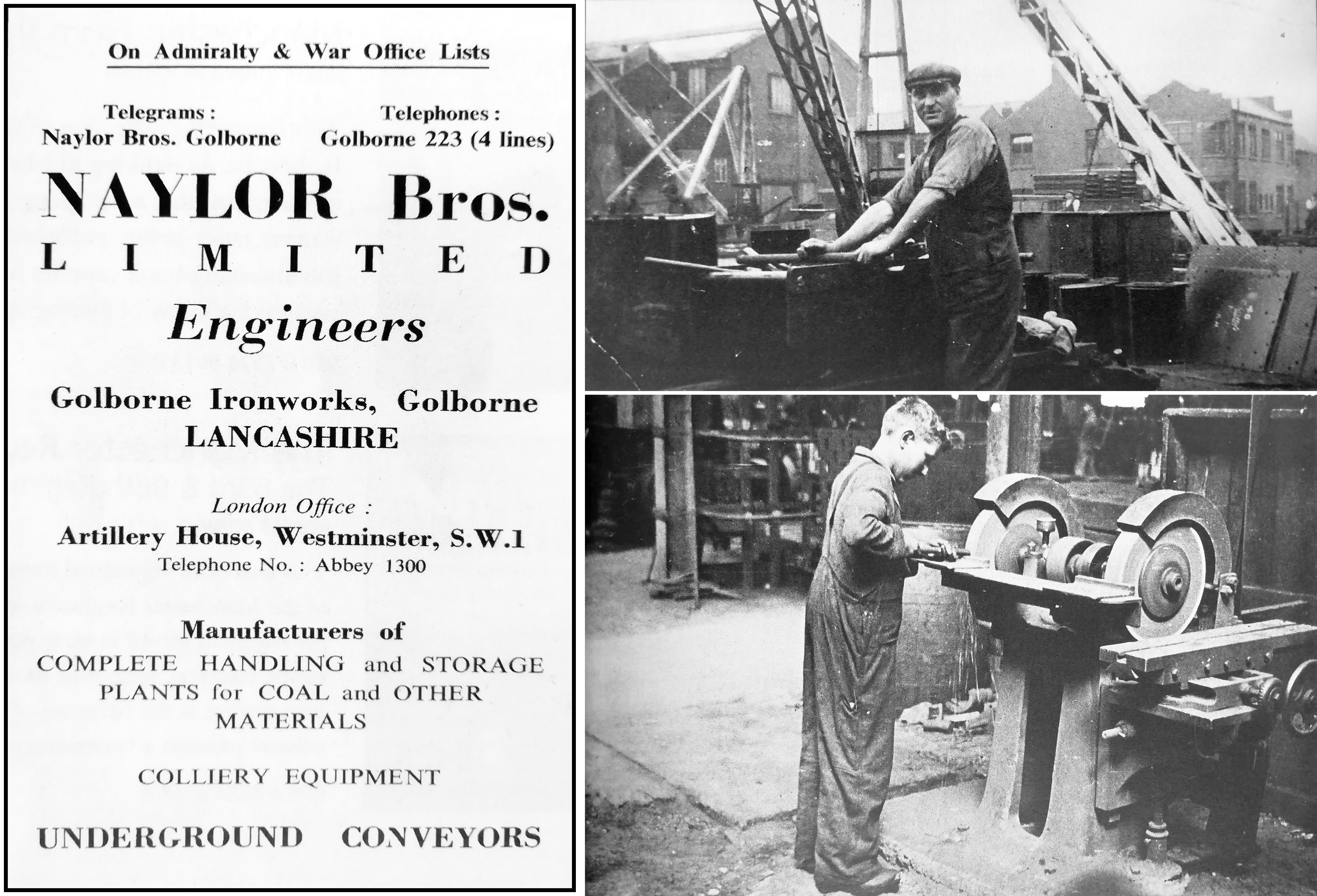
Above: Originally a family blacksmith business, Naylor Brothers Ltd of Golborne produced products for the mining and power-generation industries. William Naylor took over the Bank Street works from his father and co-founder, Joseph Naylor, and was made a Freeman of the City of London in 1965. Unit Pallets now occupies the site.
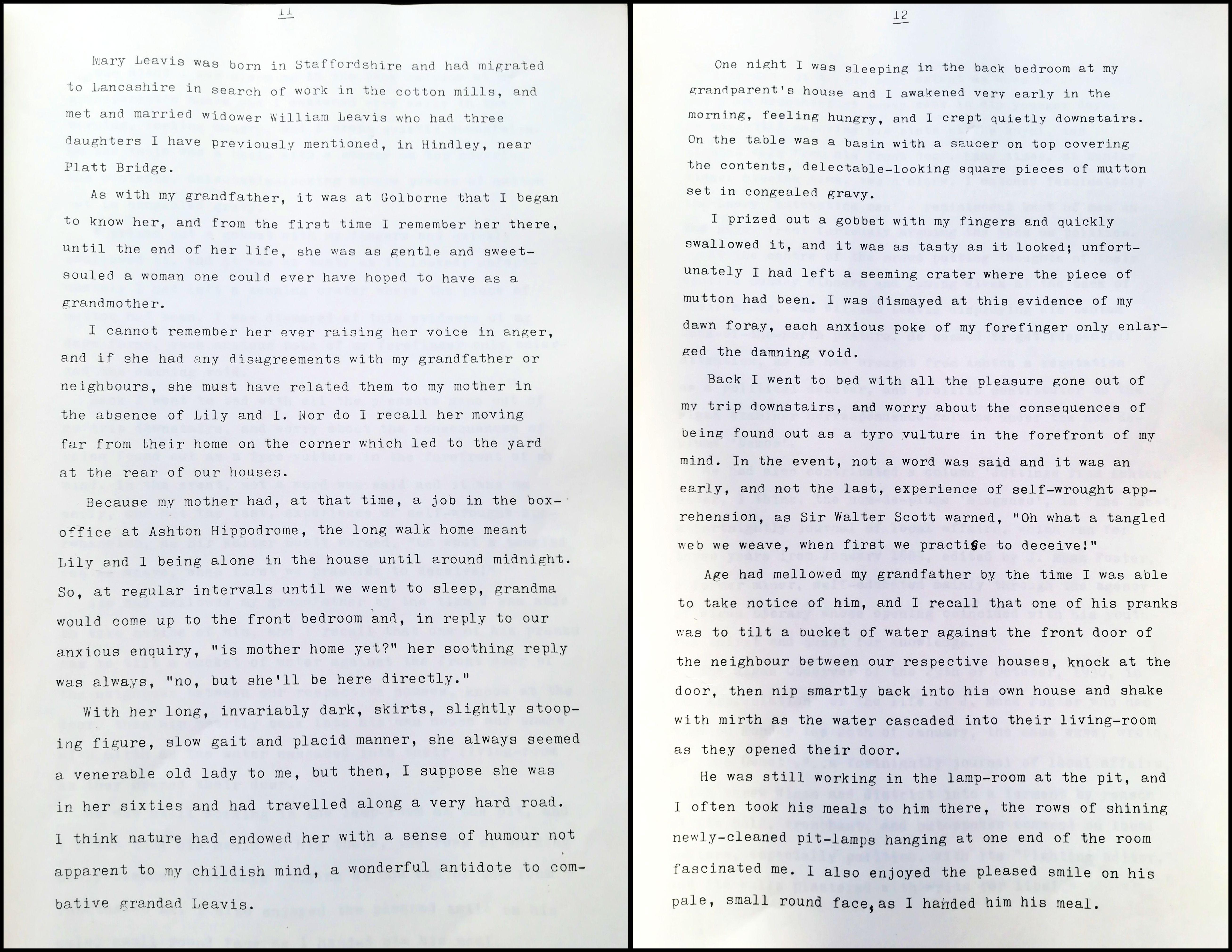

Above: There is some uncertainty about the sinking of the very first pits of what would become Golborne Colliery, but Edward Johnson is known to have been mining there by 1878. R Evans & Co of Haydock purchased the colliery with its workshops and railways etc for £26,000, the benefit of an existing connection with the adjacent LNWR mainline being transferred to the Company in August 1880. Aside from brief interruptions owing to market conditions in the 1930s, this firm and its successor bodies would continue to operate the Colliery until nationalisation in 1947. Images from a company brochure.
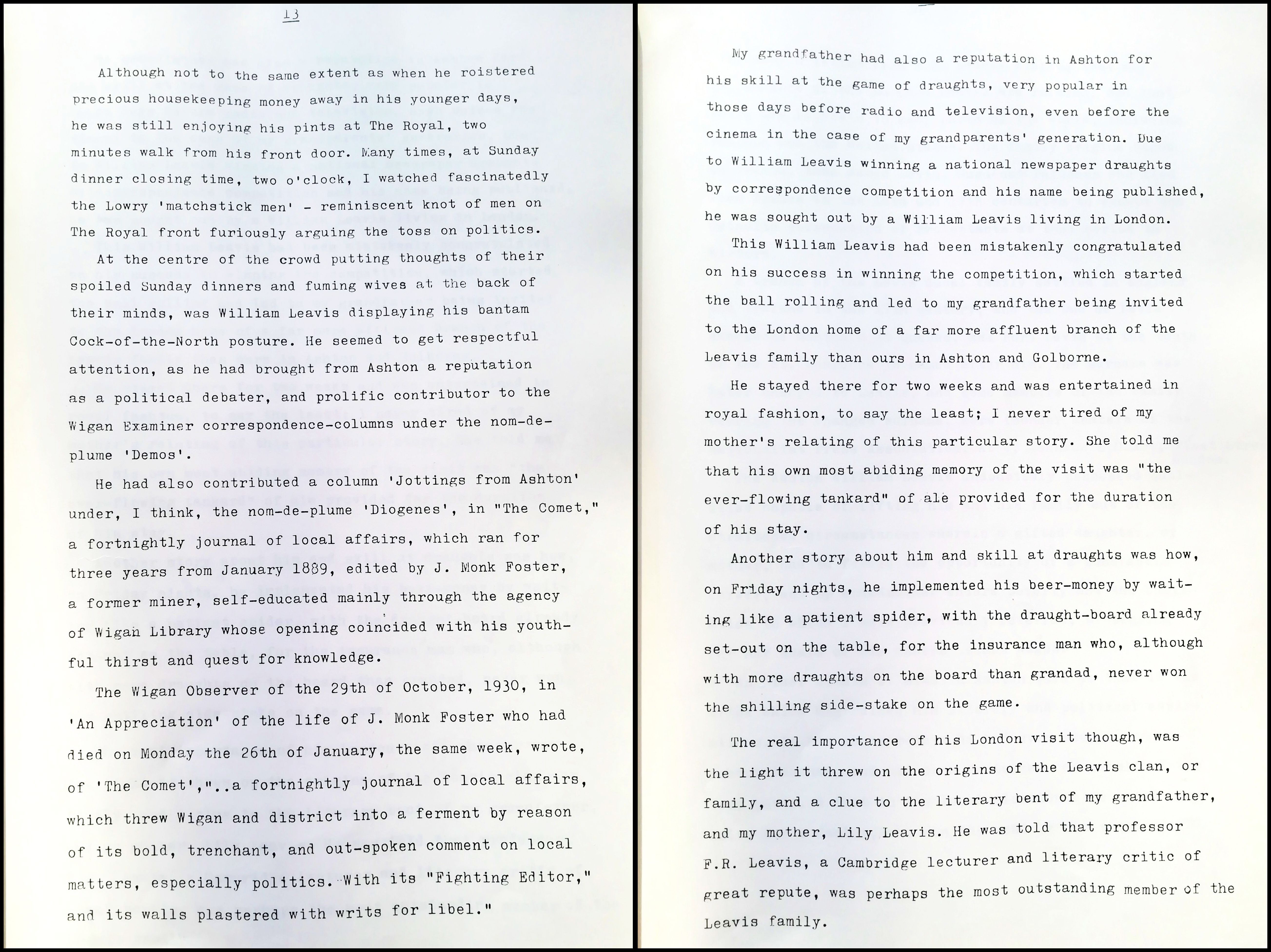

Above: Sam's maternal-grandfather, William Leavis, writing as “DEMOS” in the 14 April 1923 edition of The Wigan Examiner.

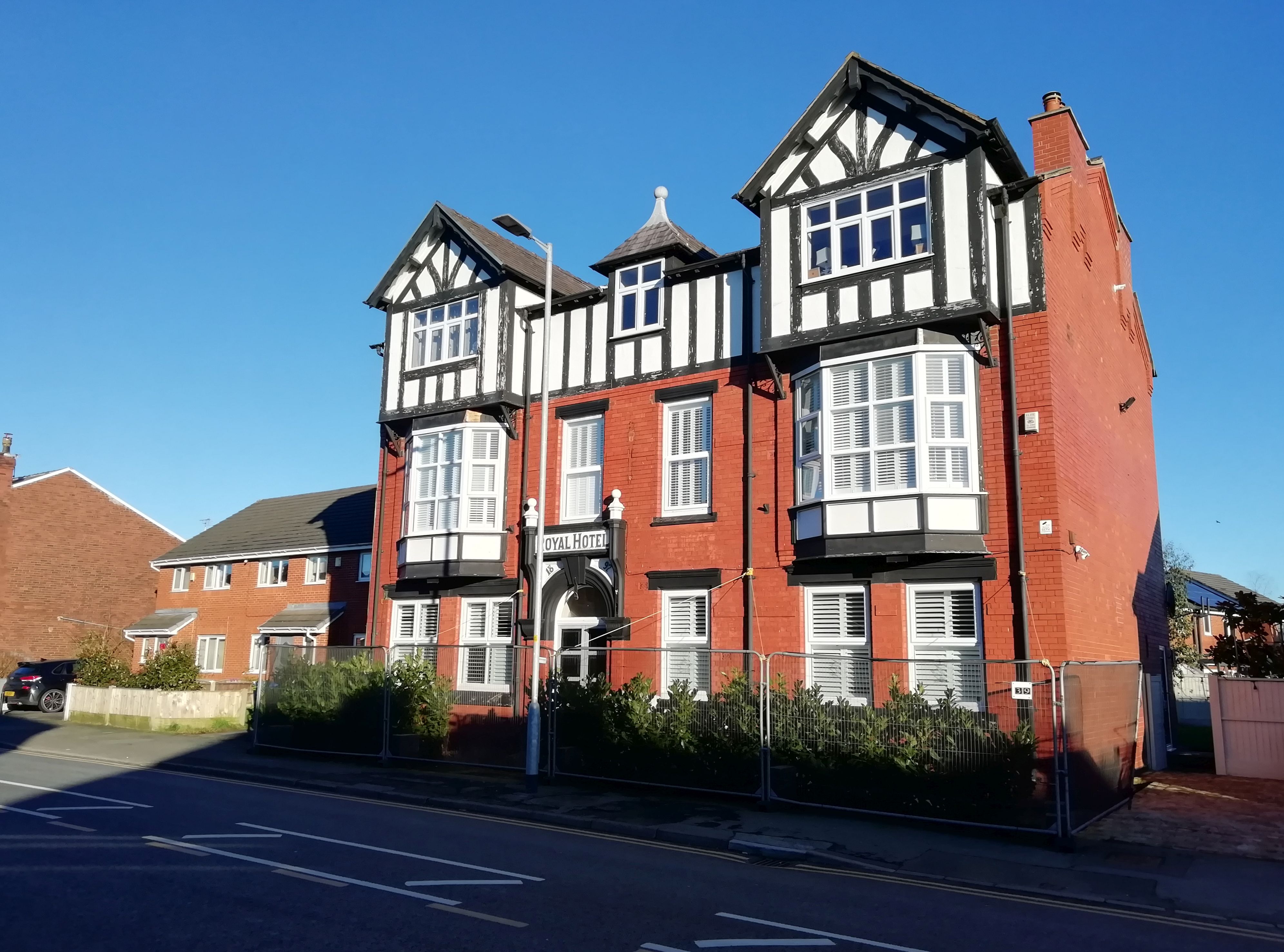
Above: Former Royal Hotel at Golborne, seen here during refurbishment in 2023. Modern housing, to the left of the photograph, has replaced the Pierce family home.
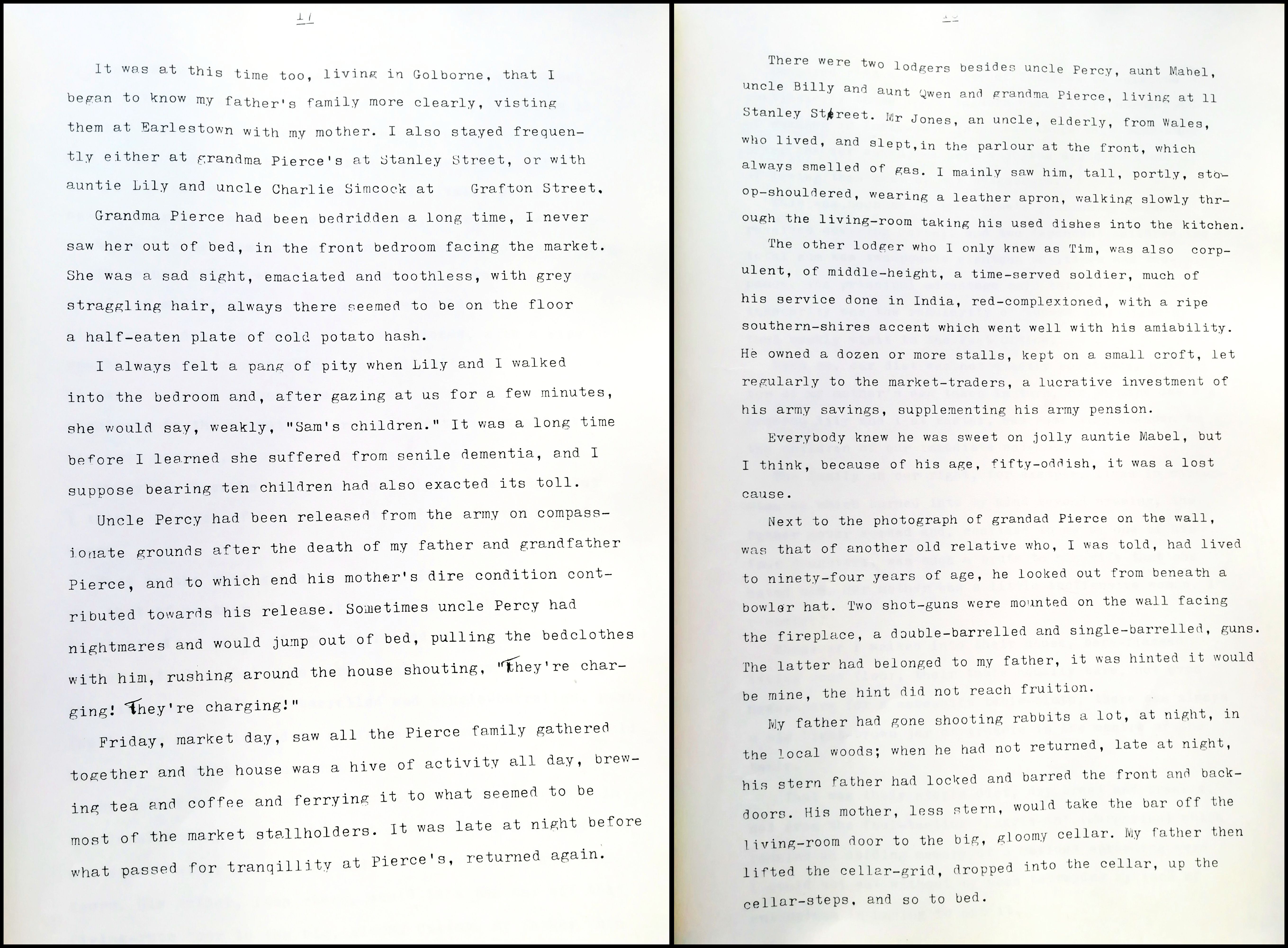
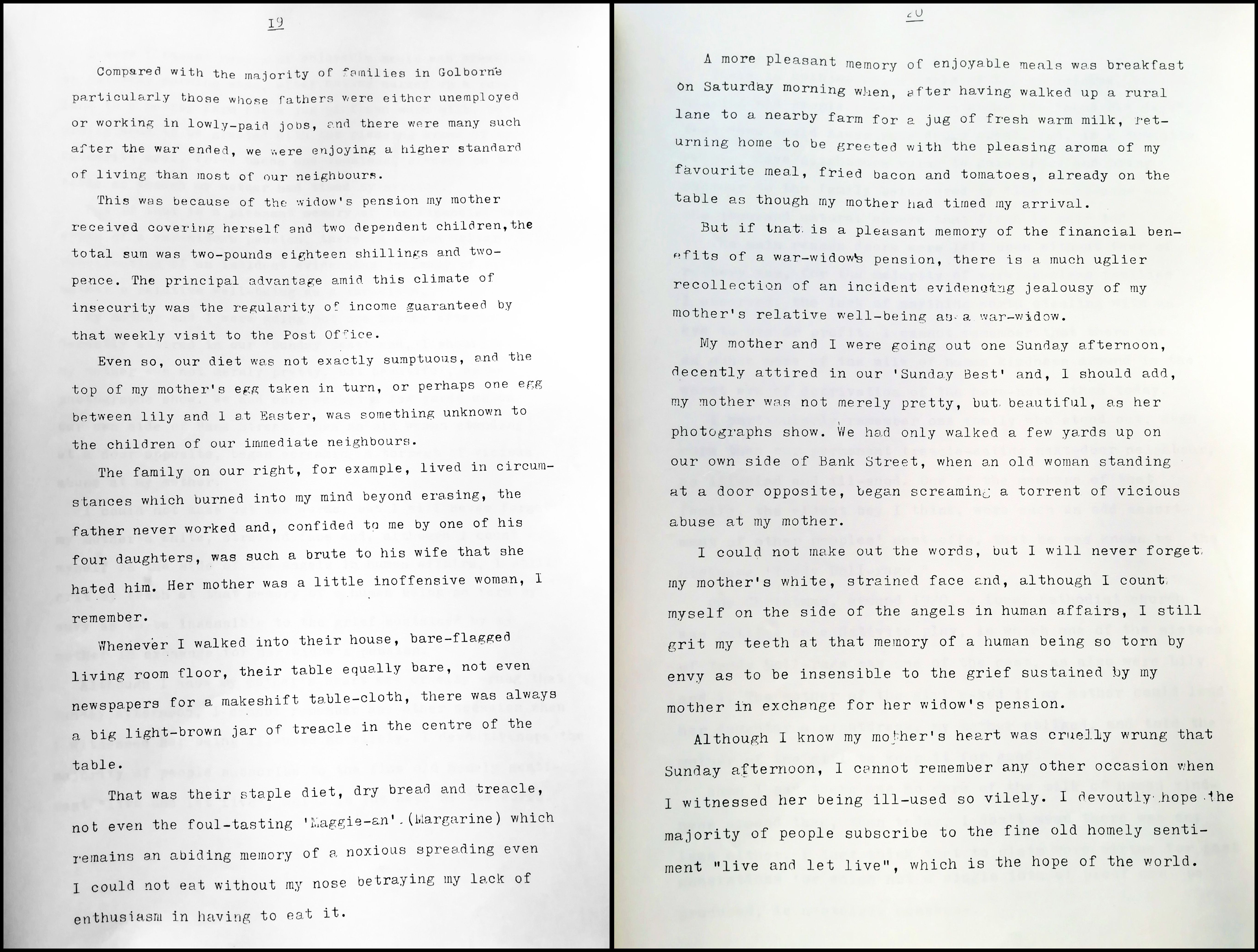
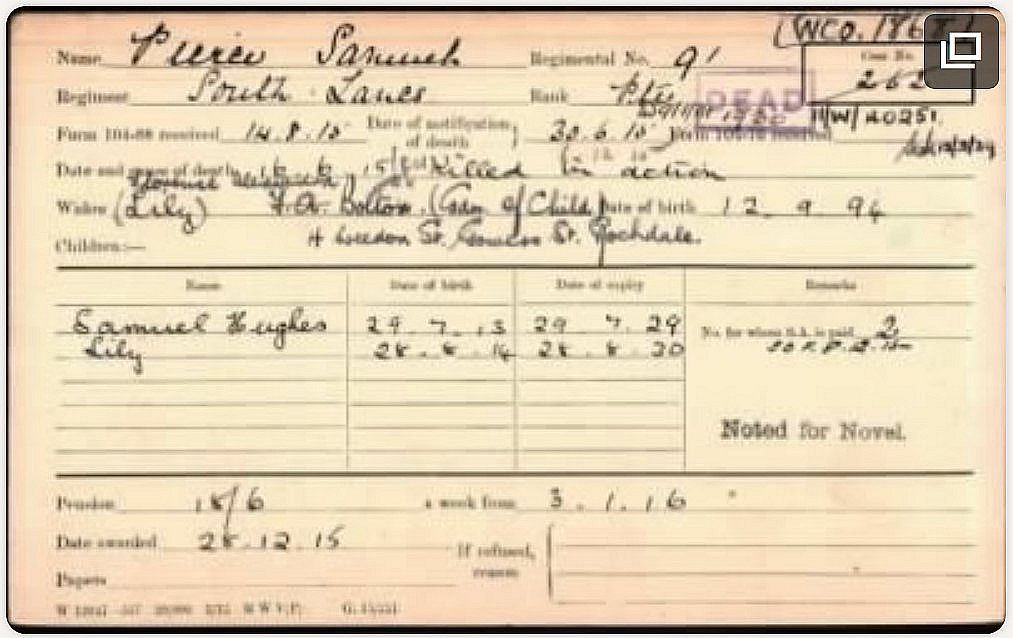
Above: Official record of War Pension award to Lily Pierce, widow of Pte. Sam Pierce, South Lancashire Regiment.

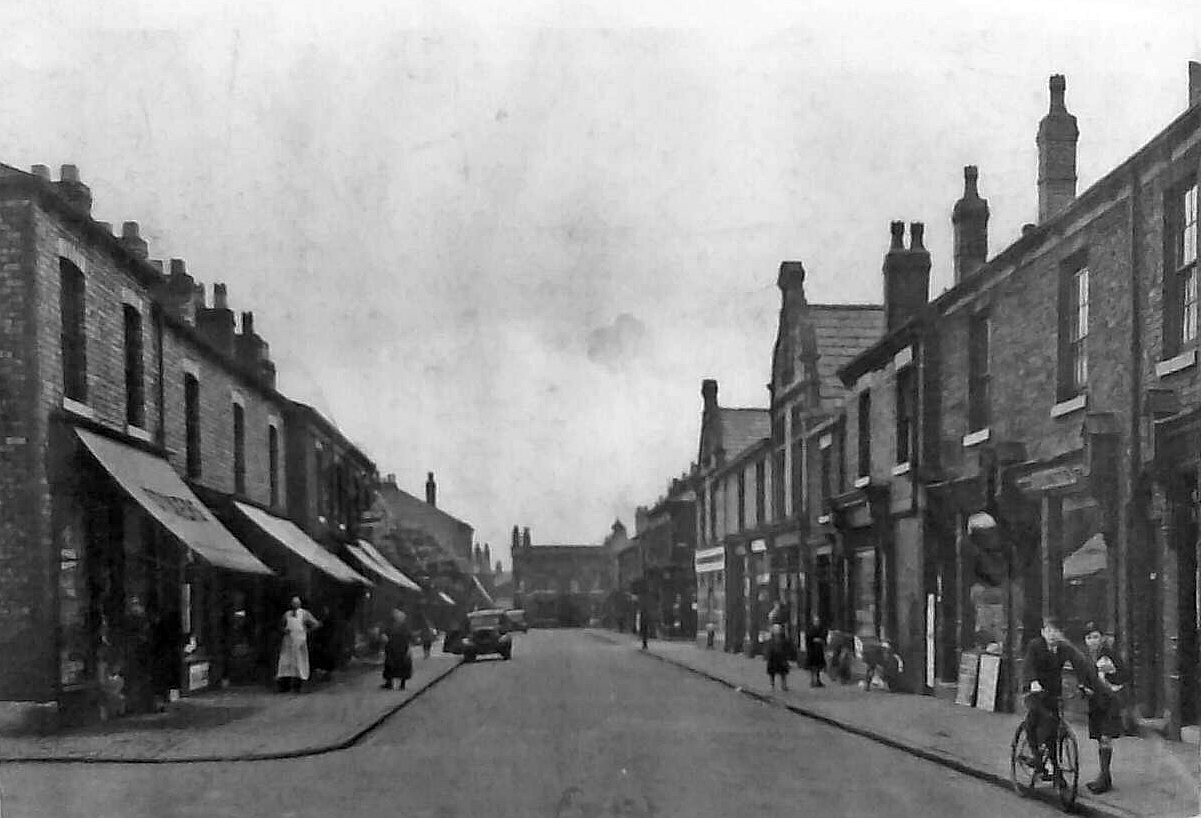
Above: Heath Street, Golborne, in the 1930s.

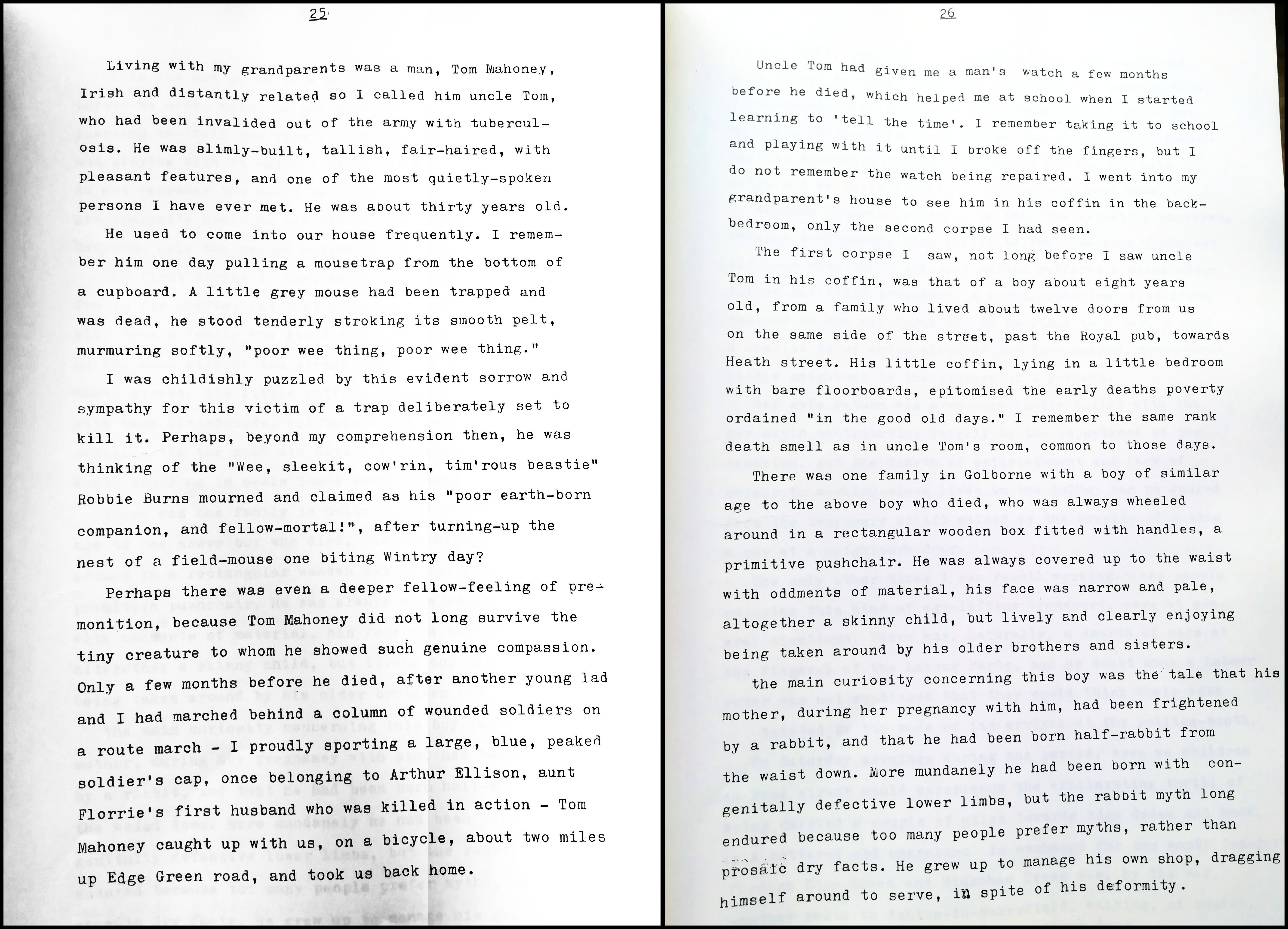
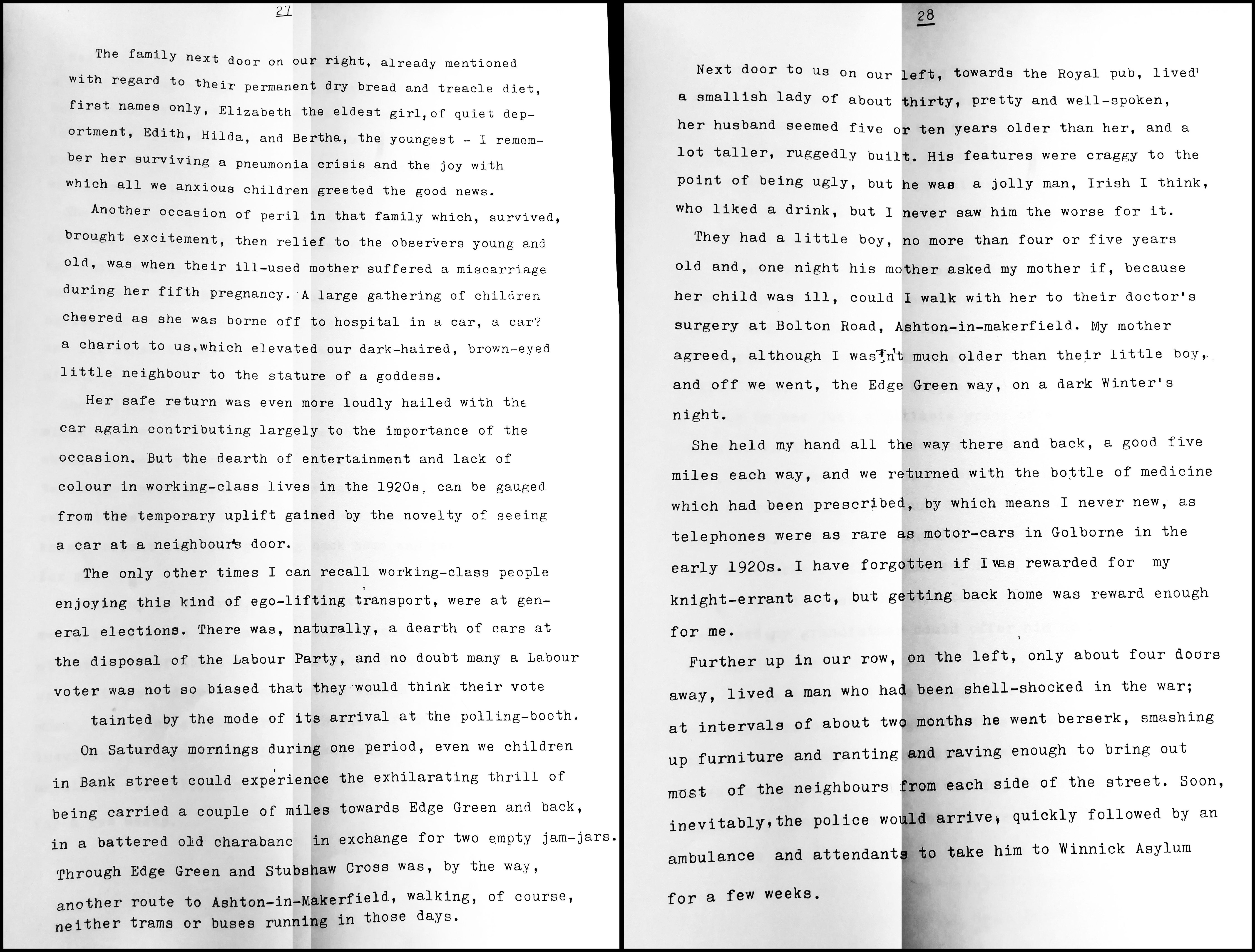
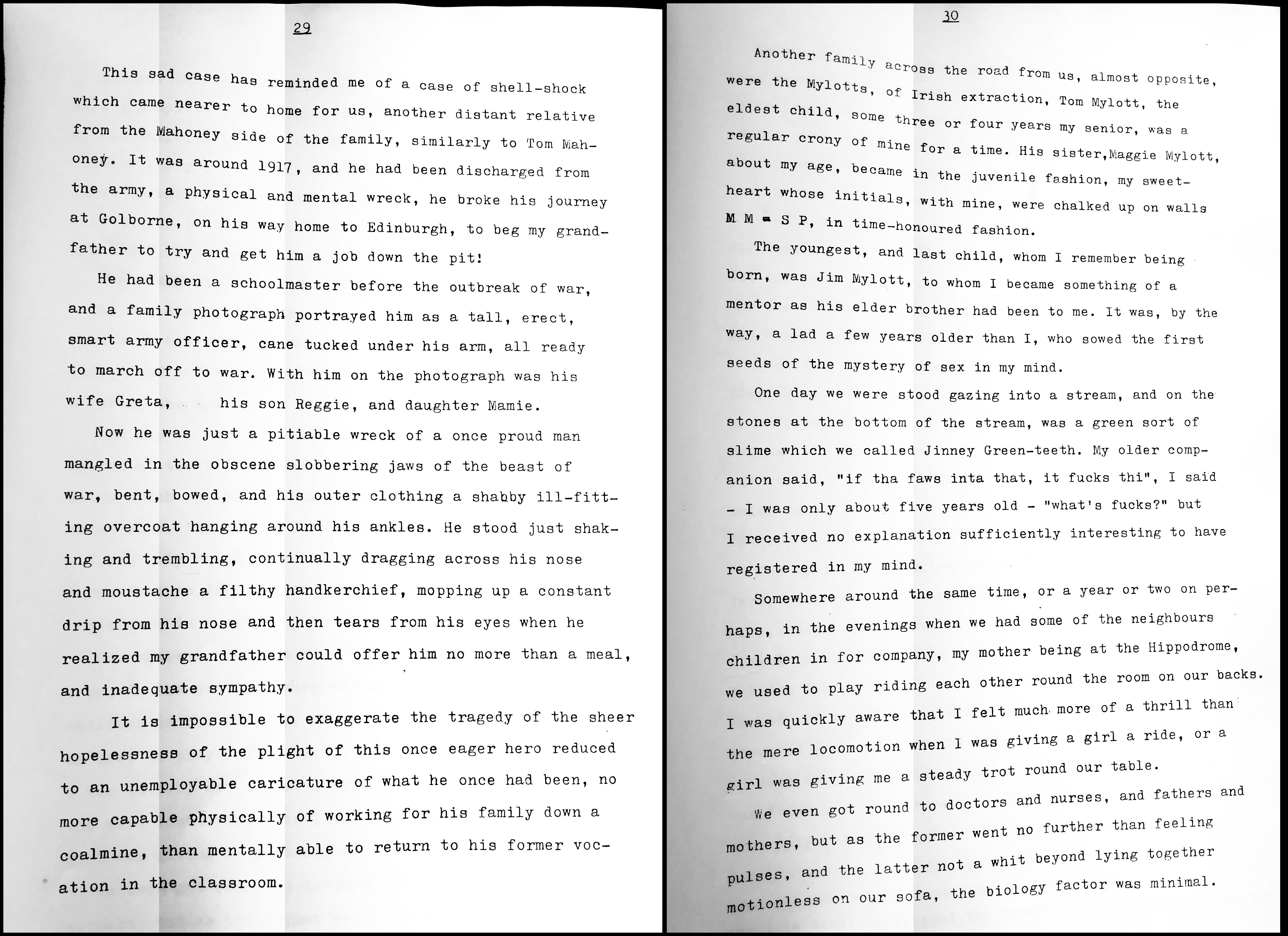

Above: Former Mylott store at 52 Heath Street, Golborne, seen here on 24 March 2022.
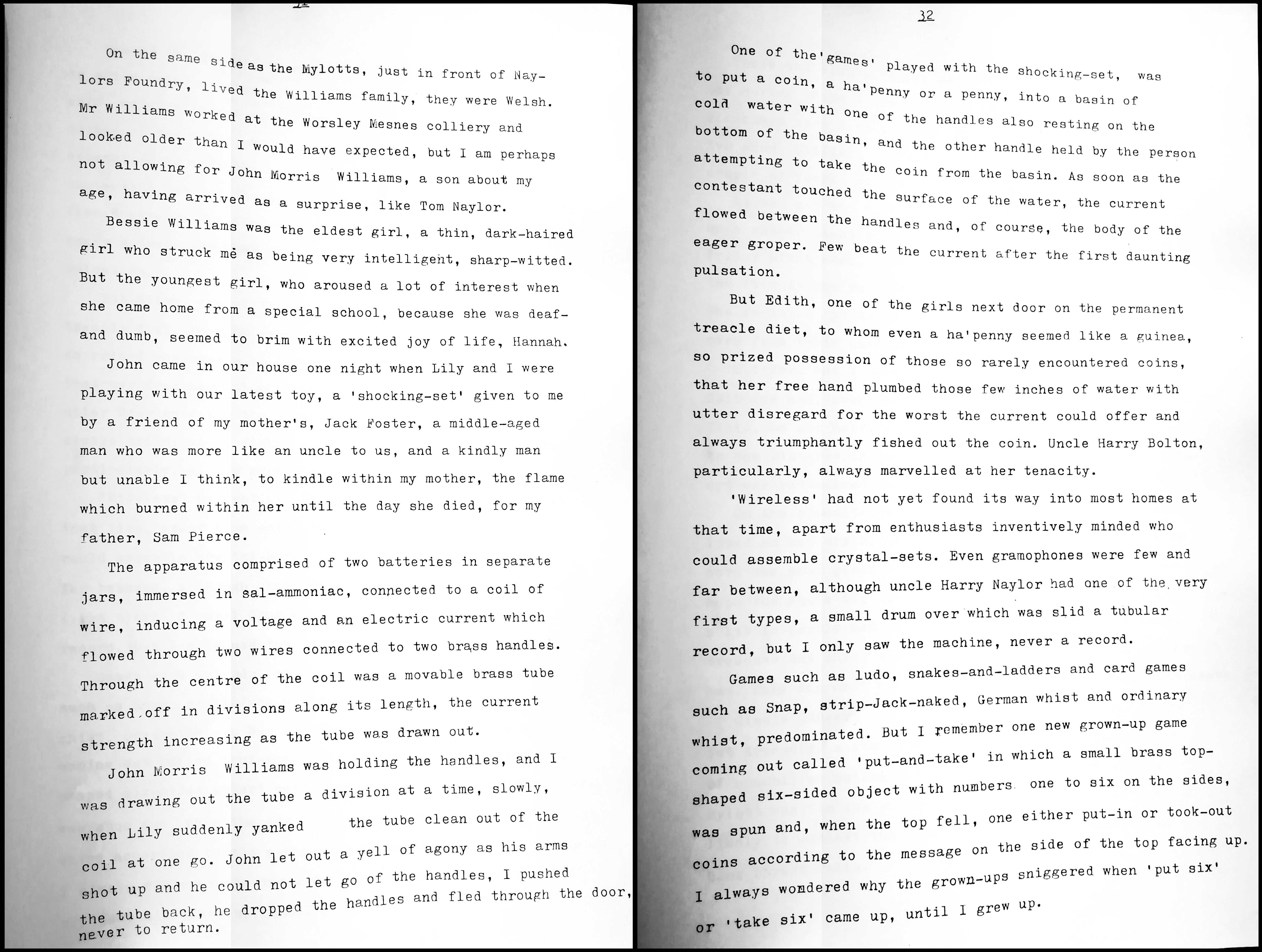
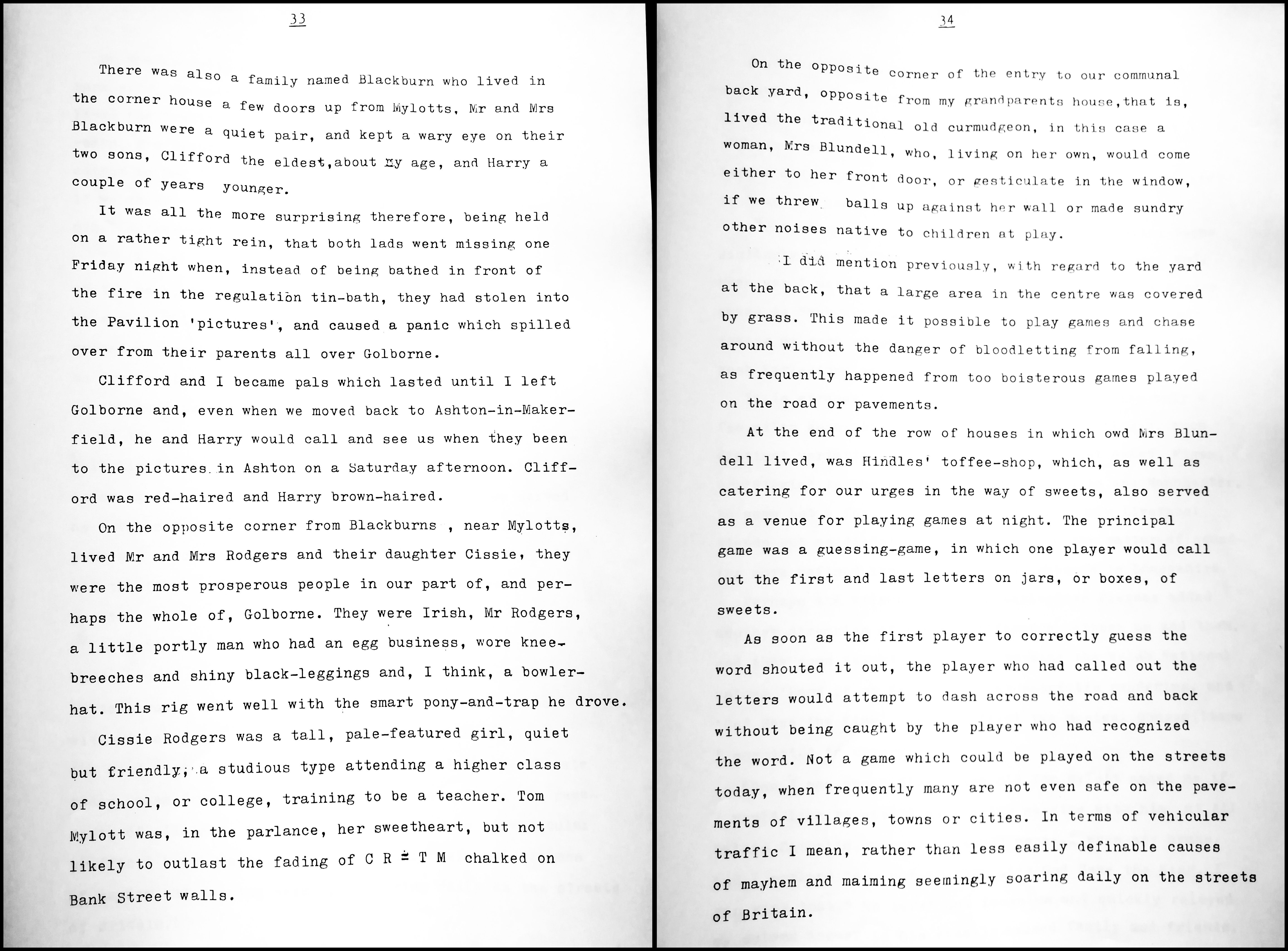
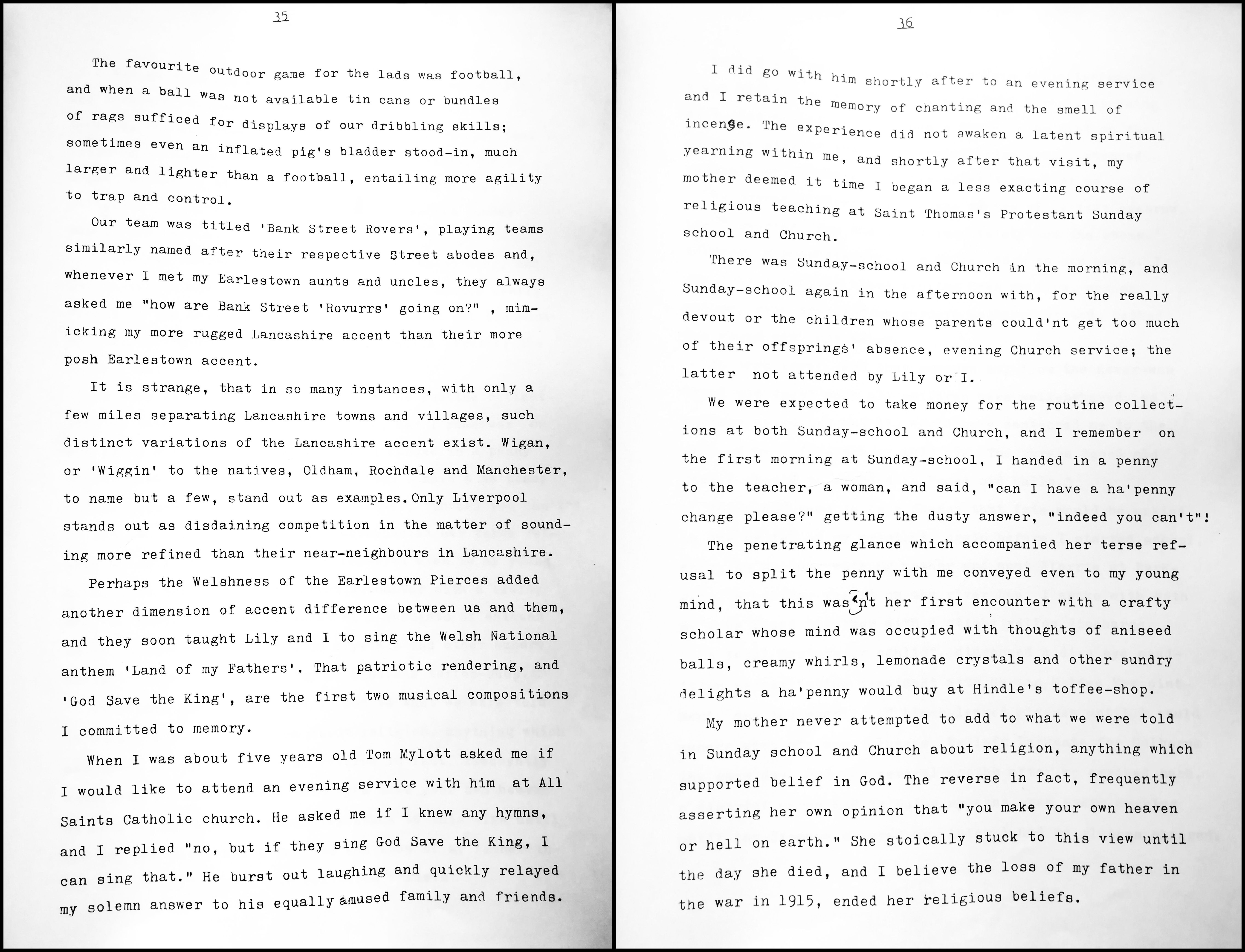
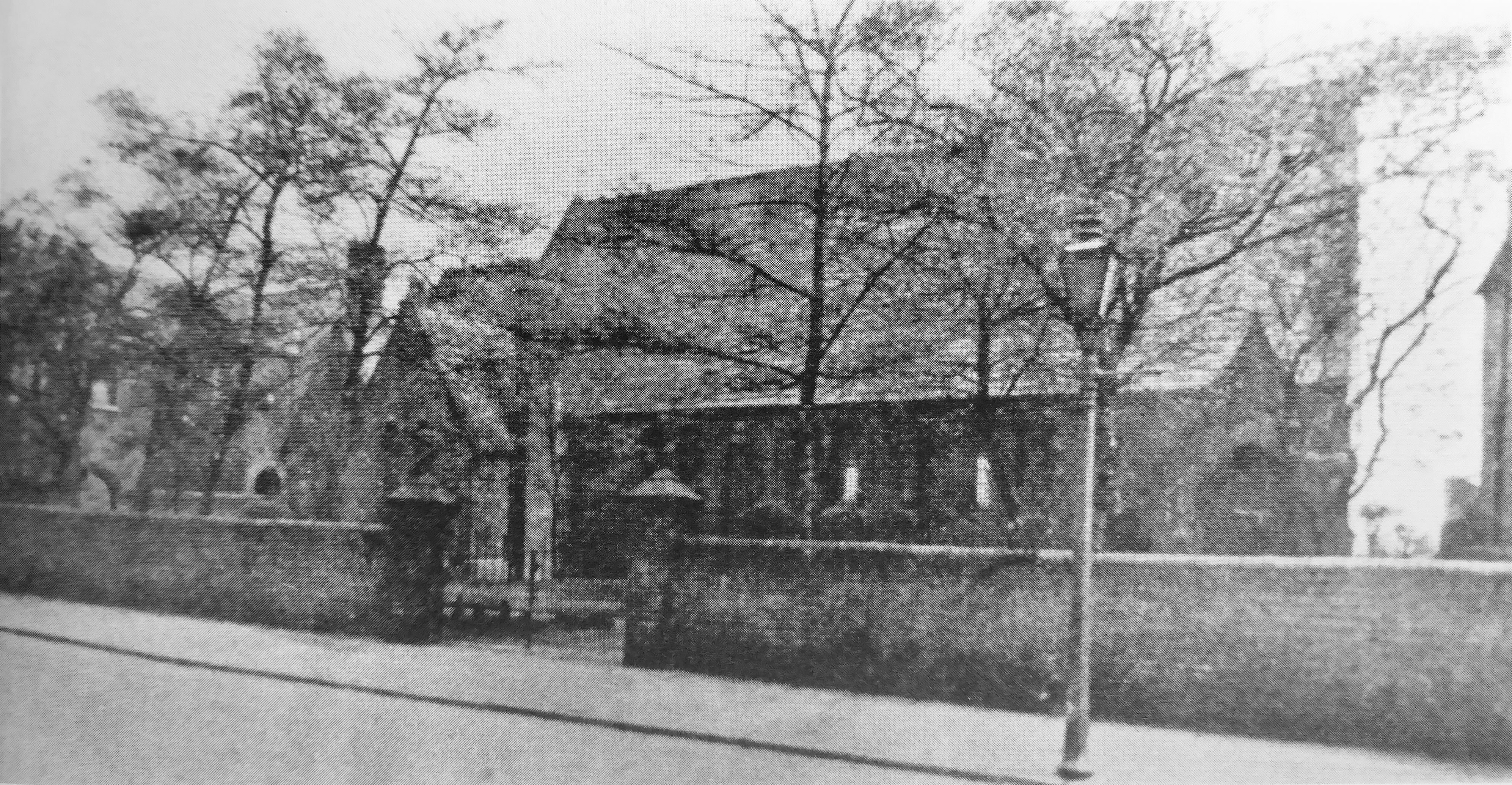
Above: The original All Saints RC Church on Church Street, Golborne, about 1863. Problems with mining-related subsidence at the Church Street site eventually led to the construction of a new building on High Street in 1927.

Above: Members of All Saints Church processing along High Street, Golborne, in the early 1930s.

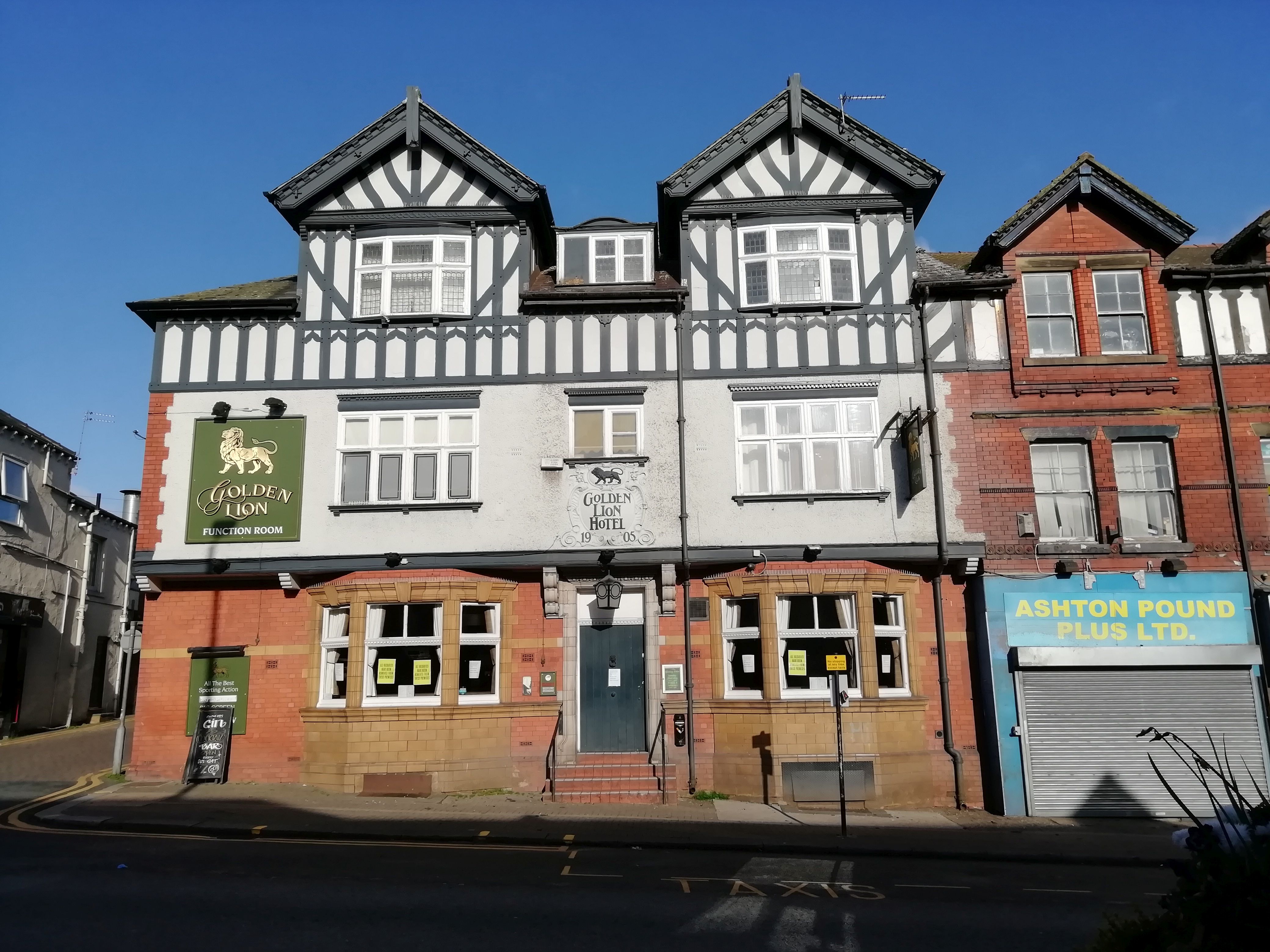
Above: Golden Lion, Ashton-in-Makerfield, photographed on 6 April 2020.
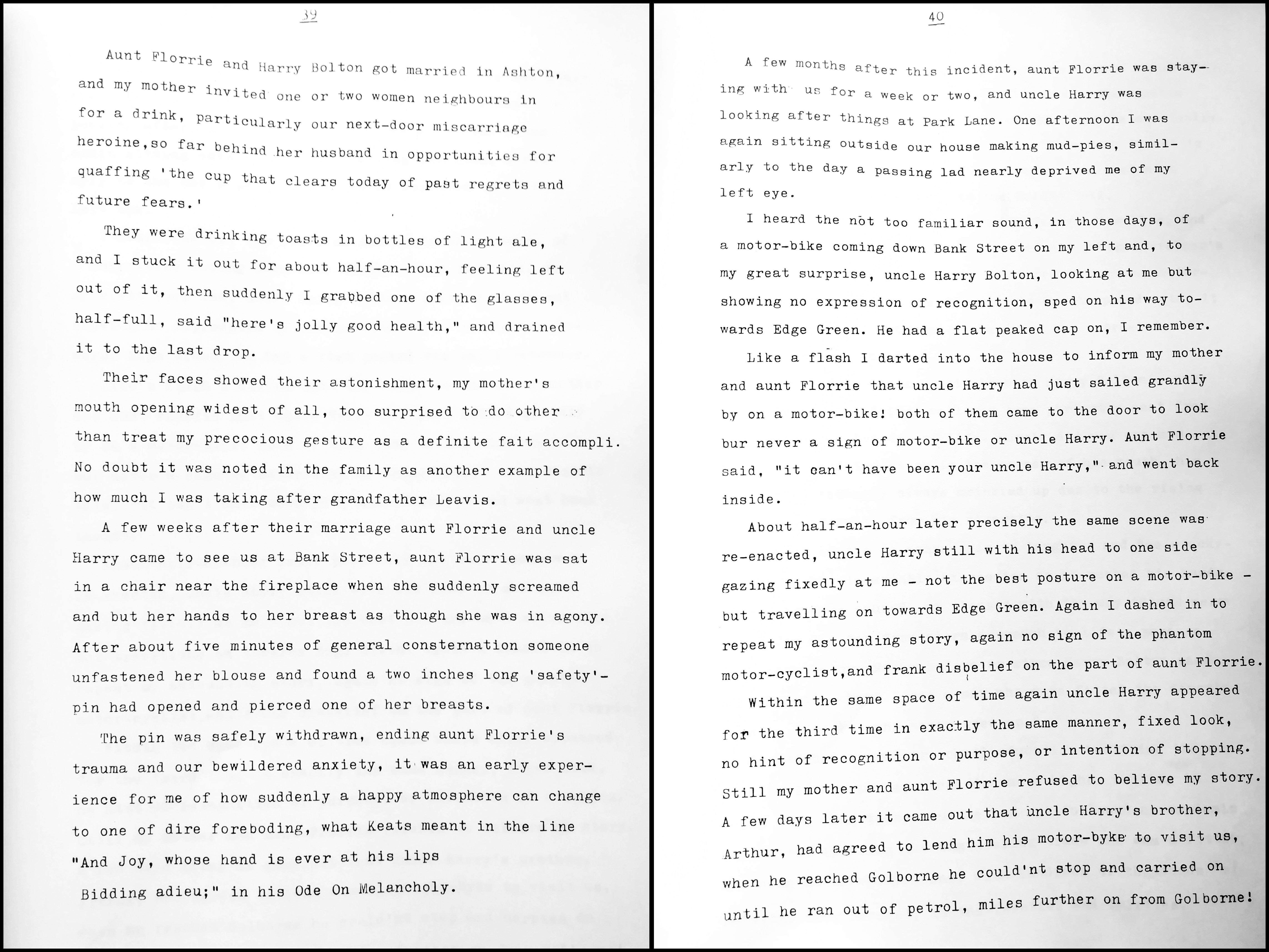

Above: Former Golden Ball pub at Bryn; now demolished, although the small cottage at the rear is still standing.
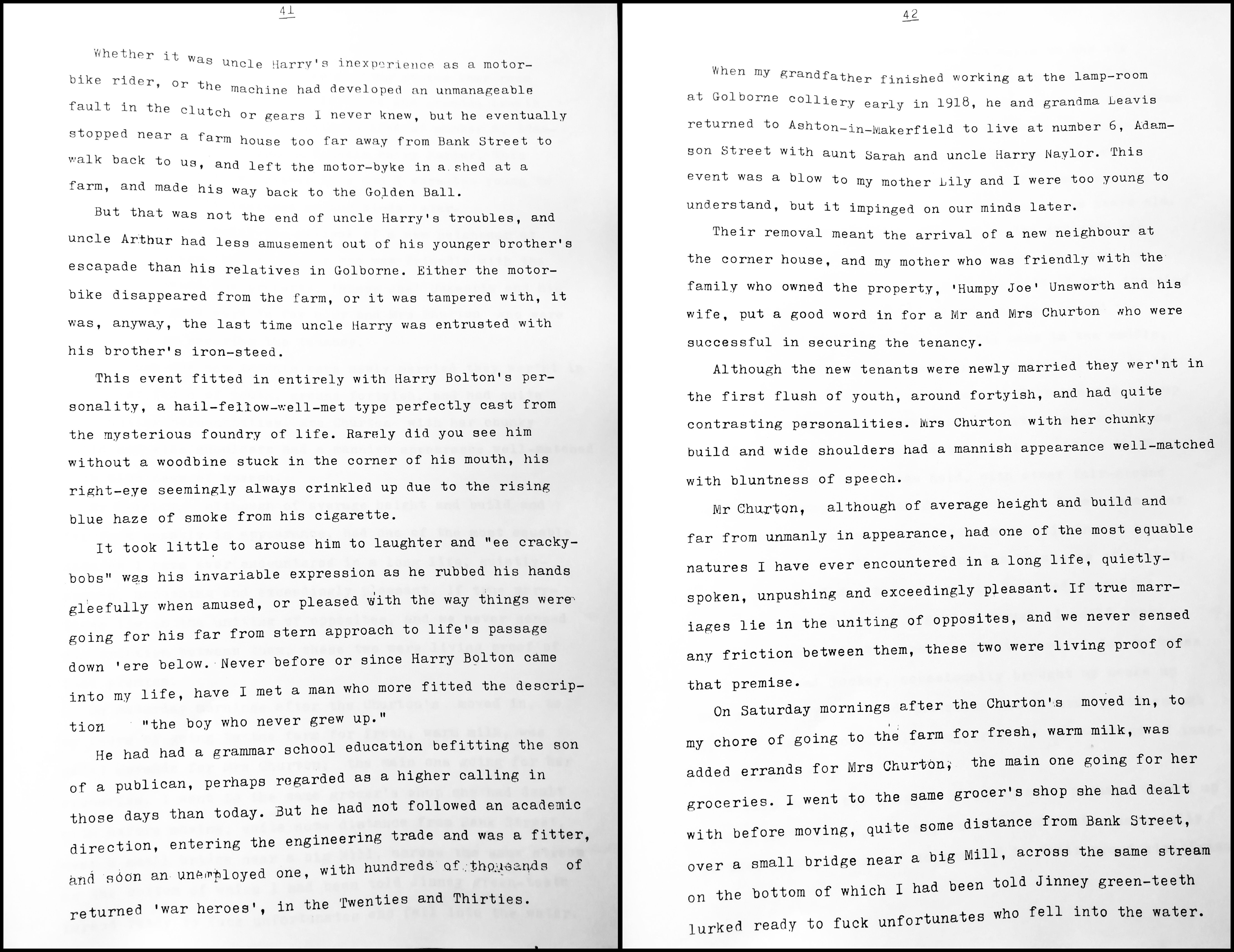
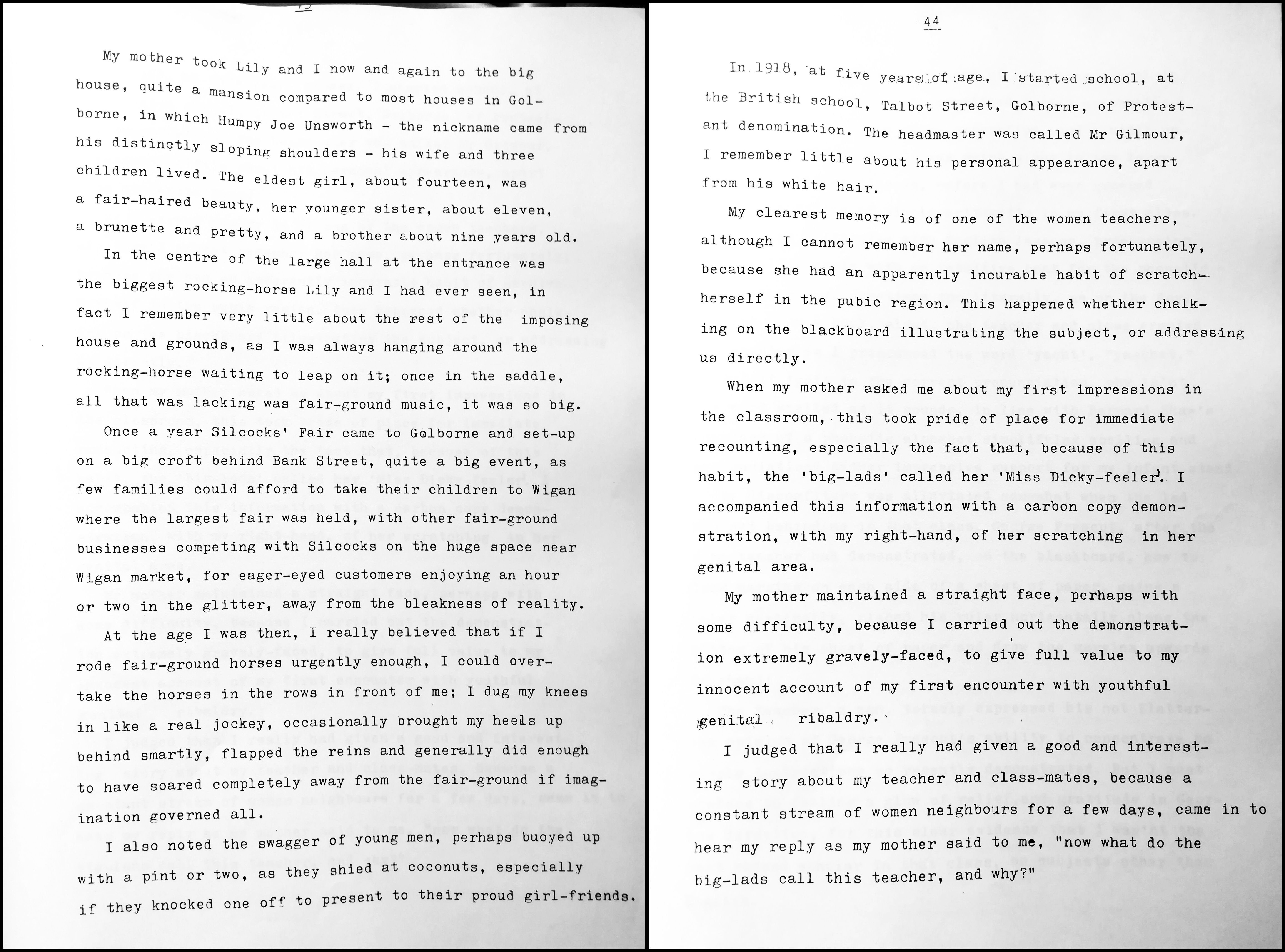
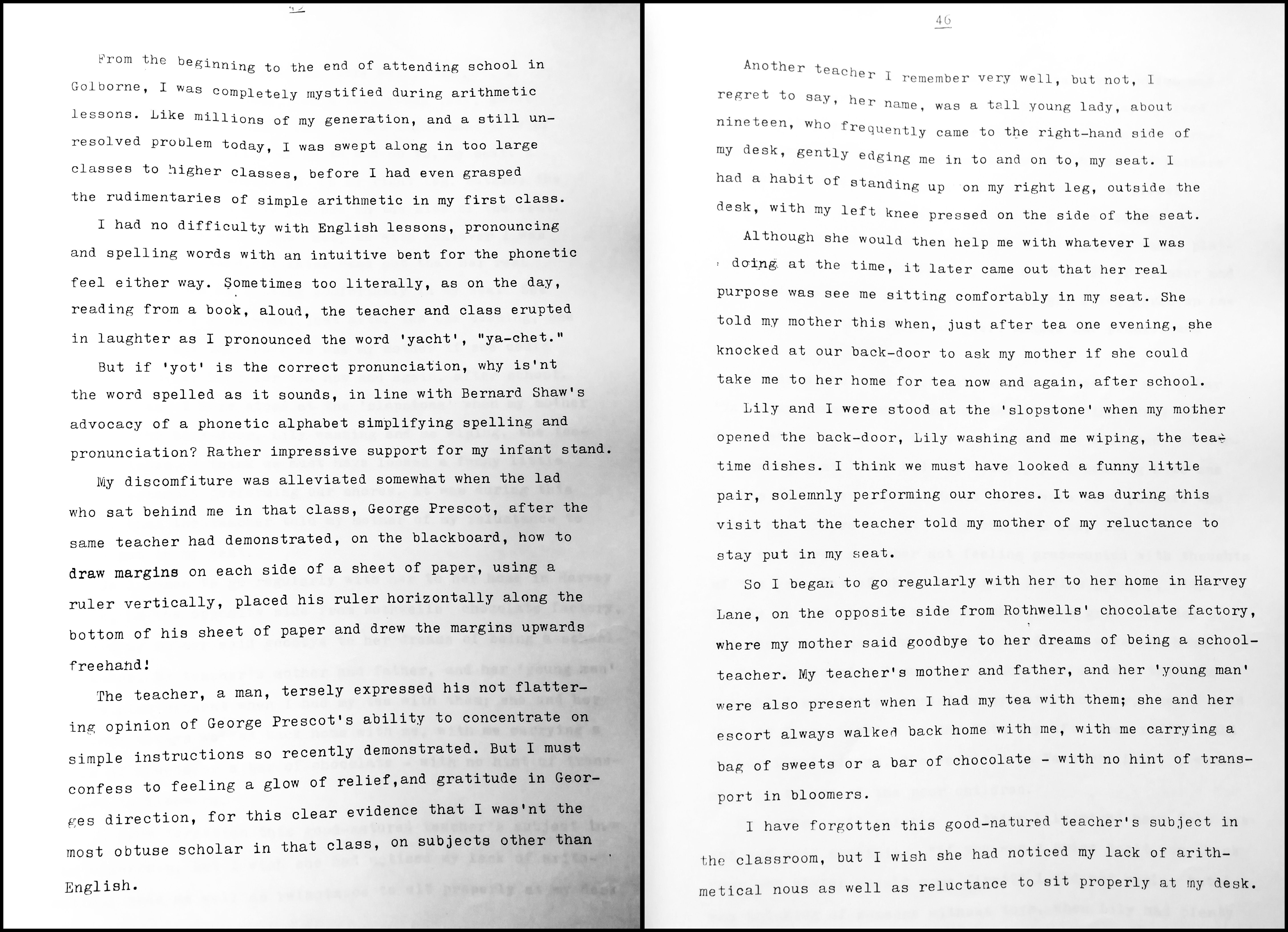
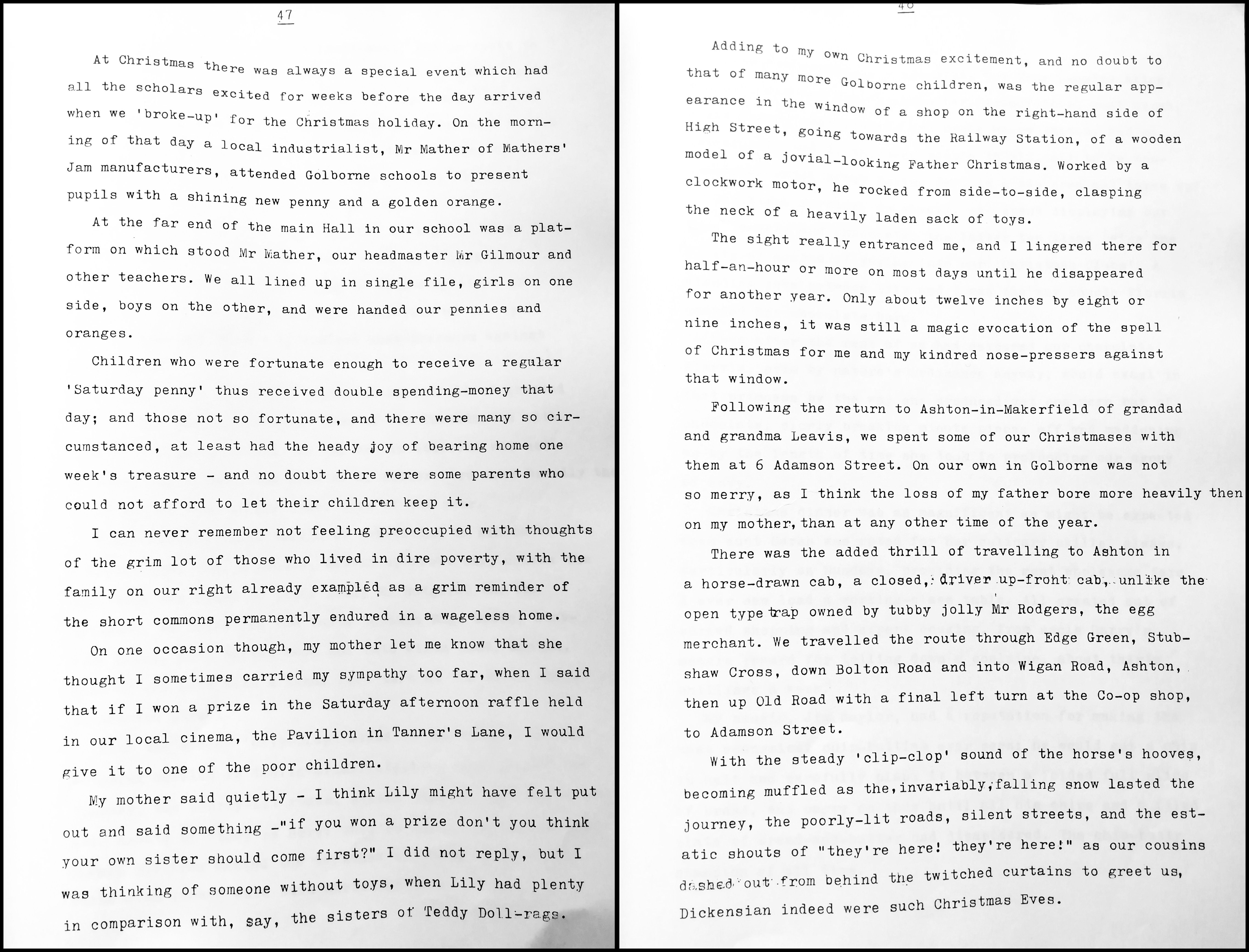
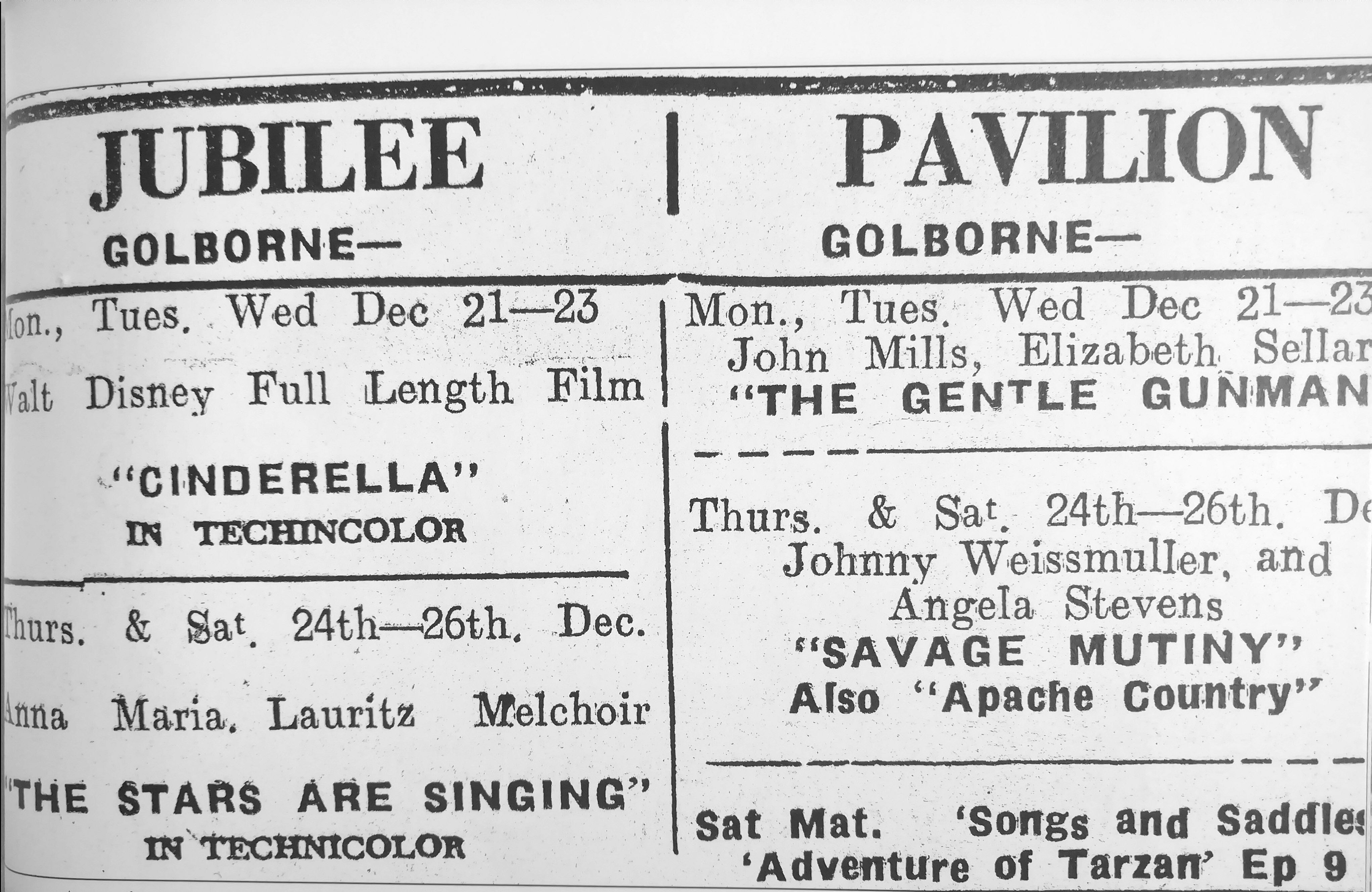
Above: Advertisements for the Jubilee and Pavilion Cinemas at Golborne from The Leigh, Golborne & Hindley Guardian, 18 December 1953. Opened in the 1920s, the Pavilion on Tanners Lane closed for the final time in February 1959.
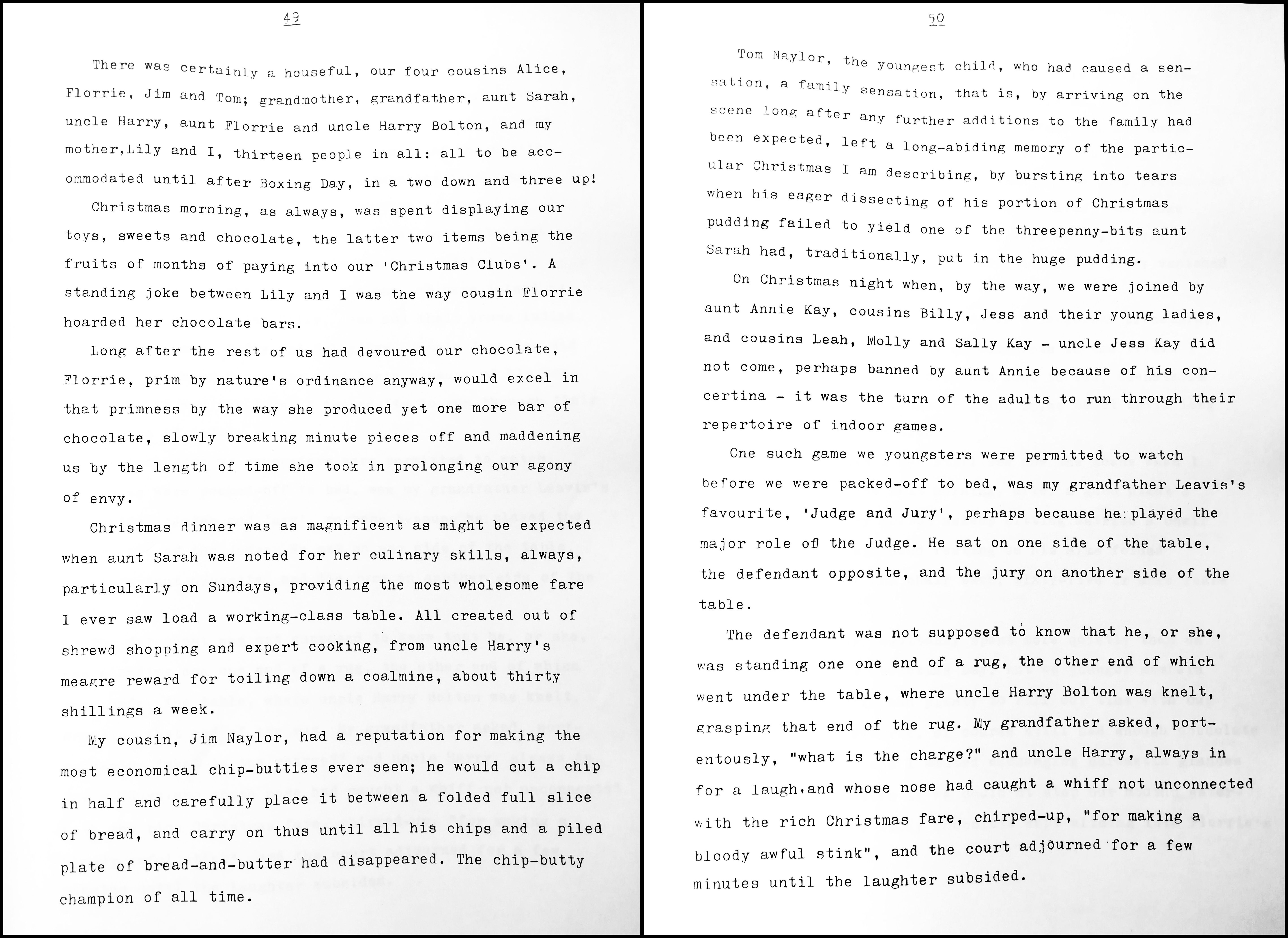
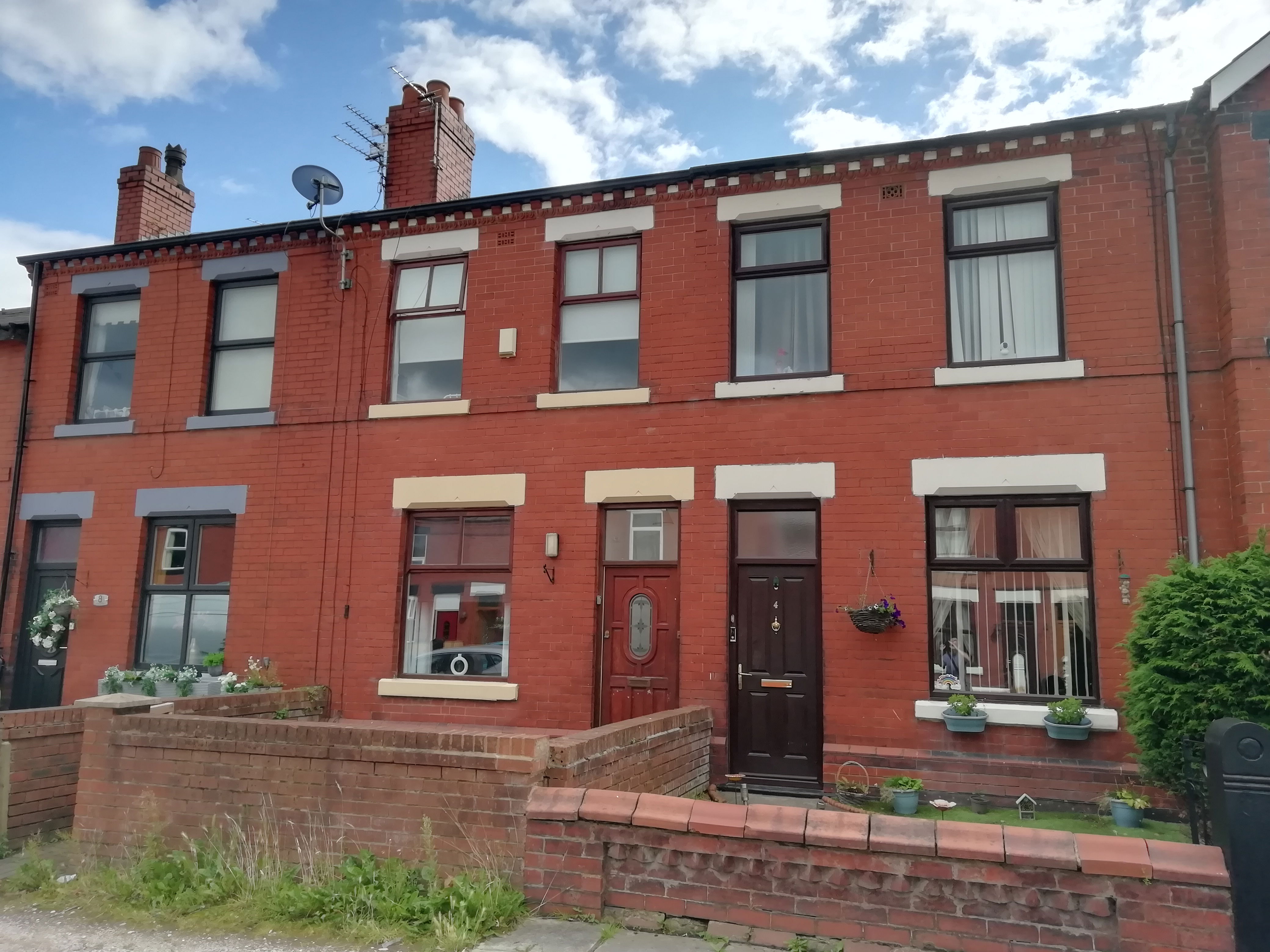
Above: Adamson Street, Ashton-in-Makerfield, photographed on 7 August 2023.

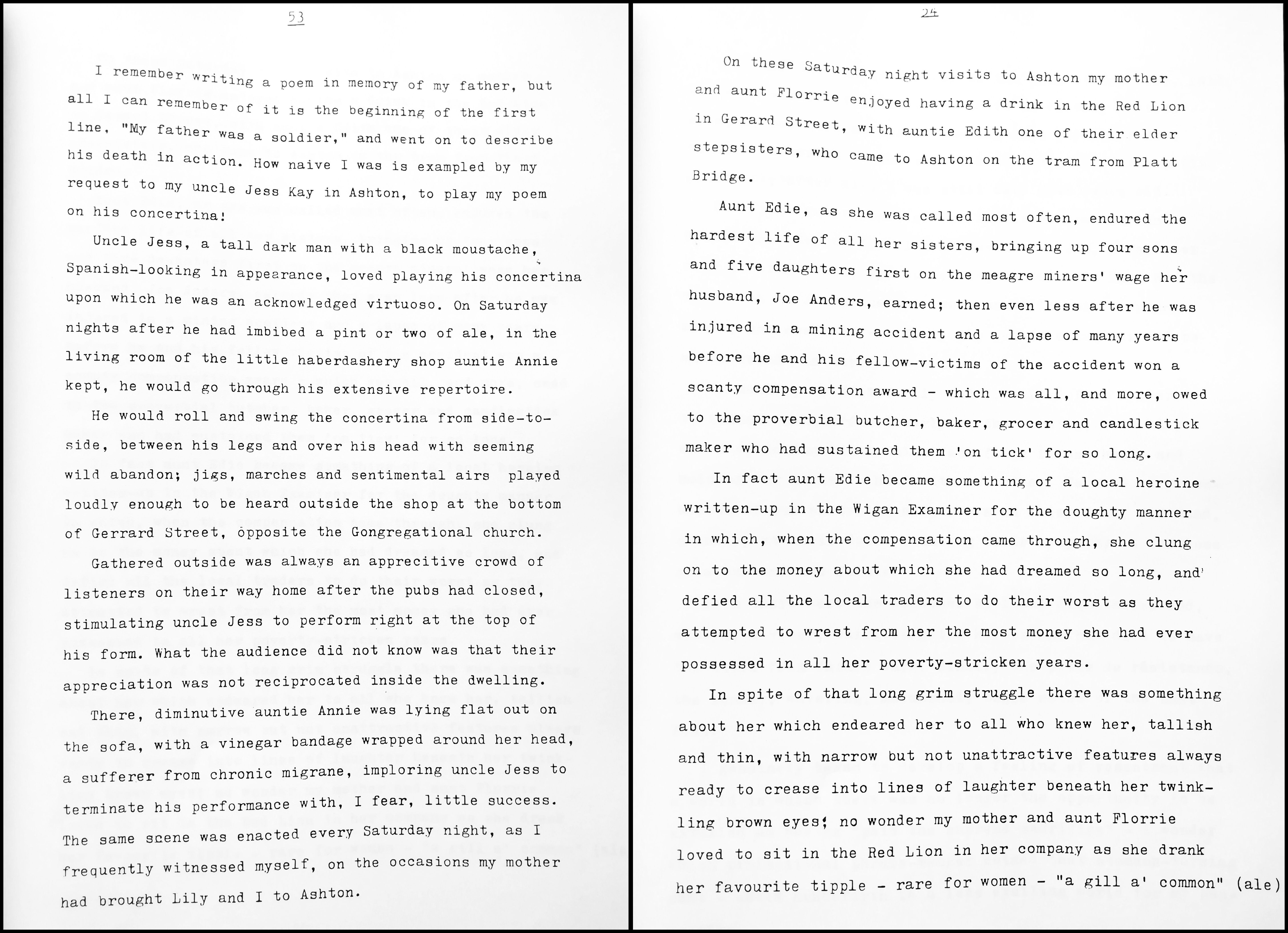

Above: The Red Lion on Gerard Street, Ashton-in-Makerfield, photographed during renovations in 2022.
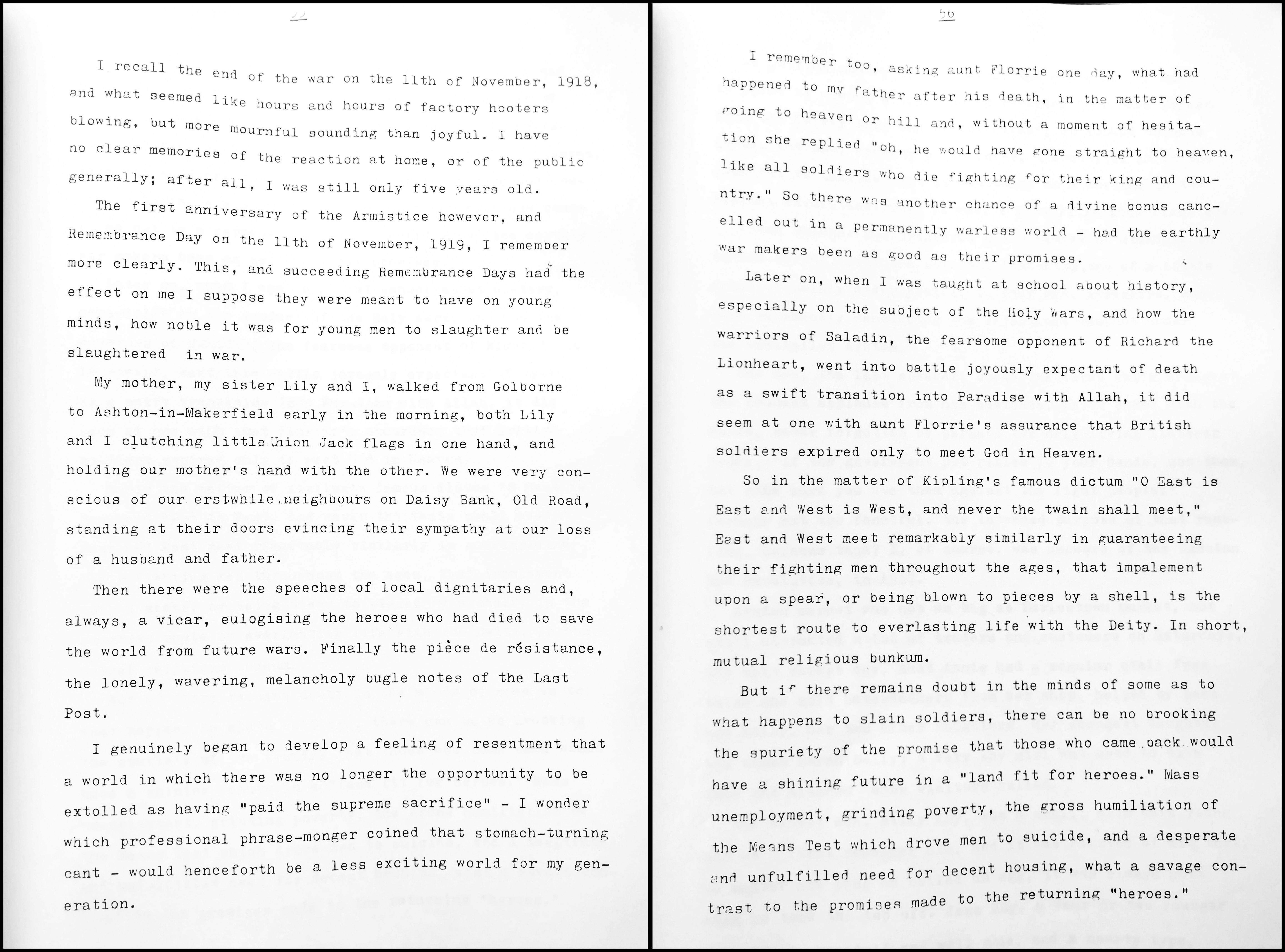
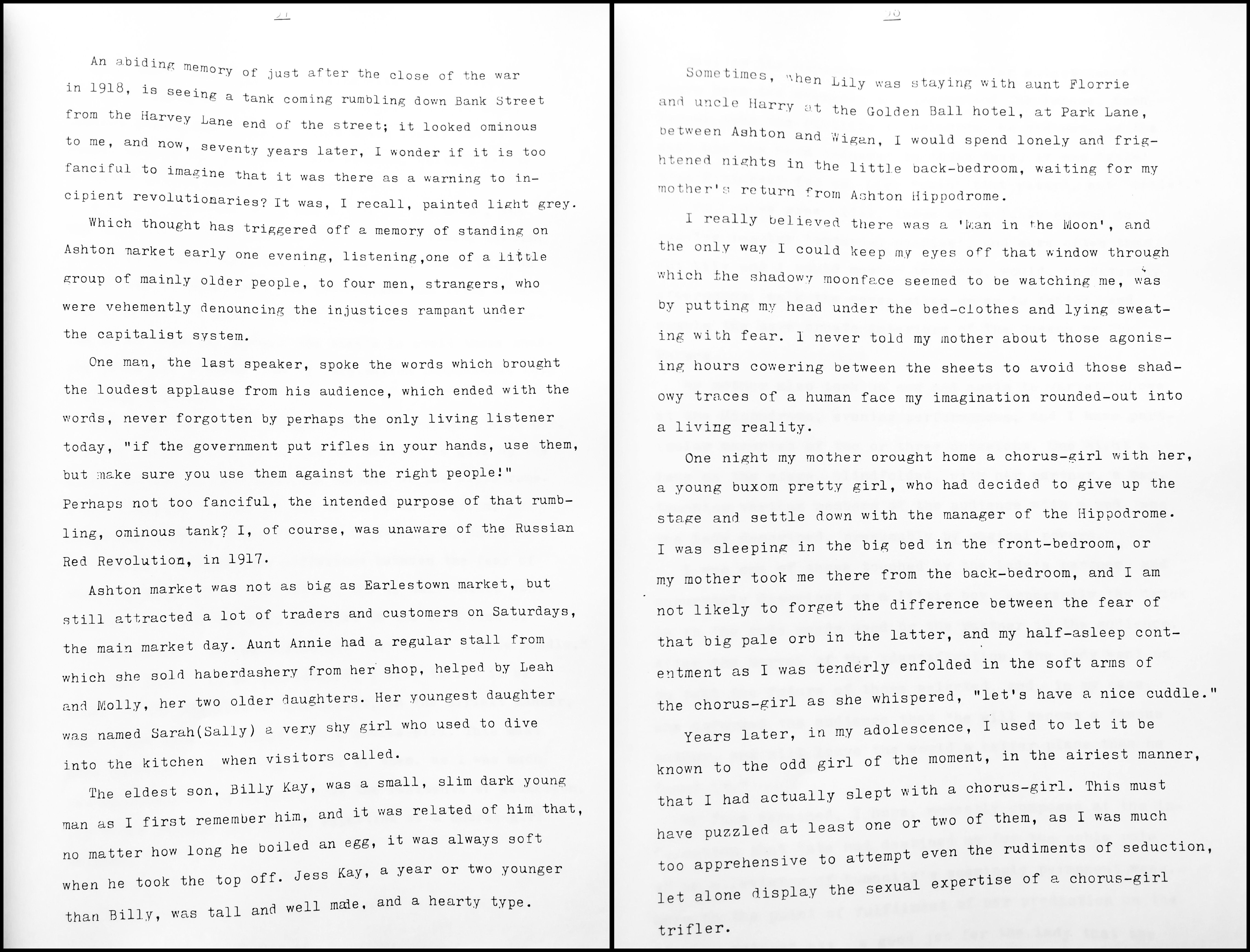
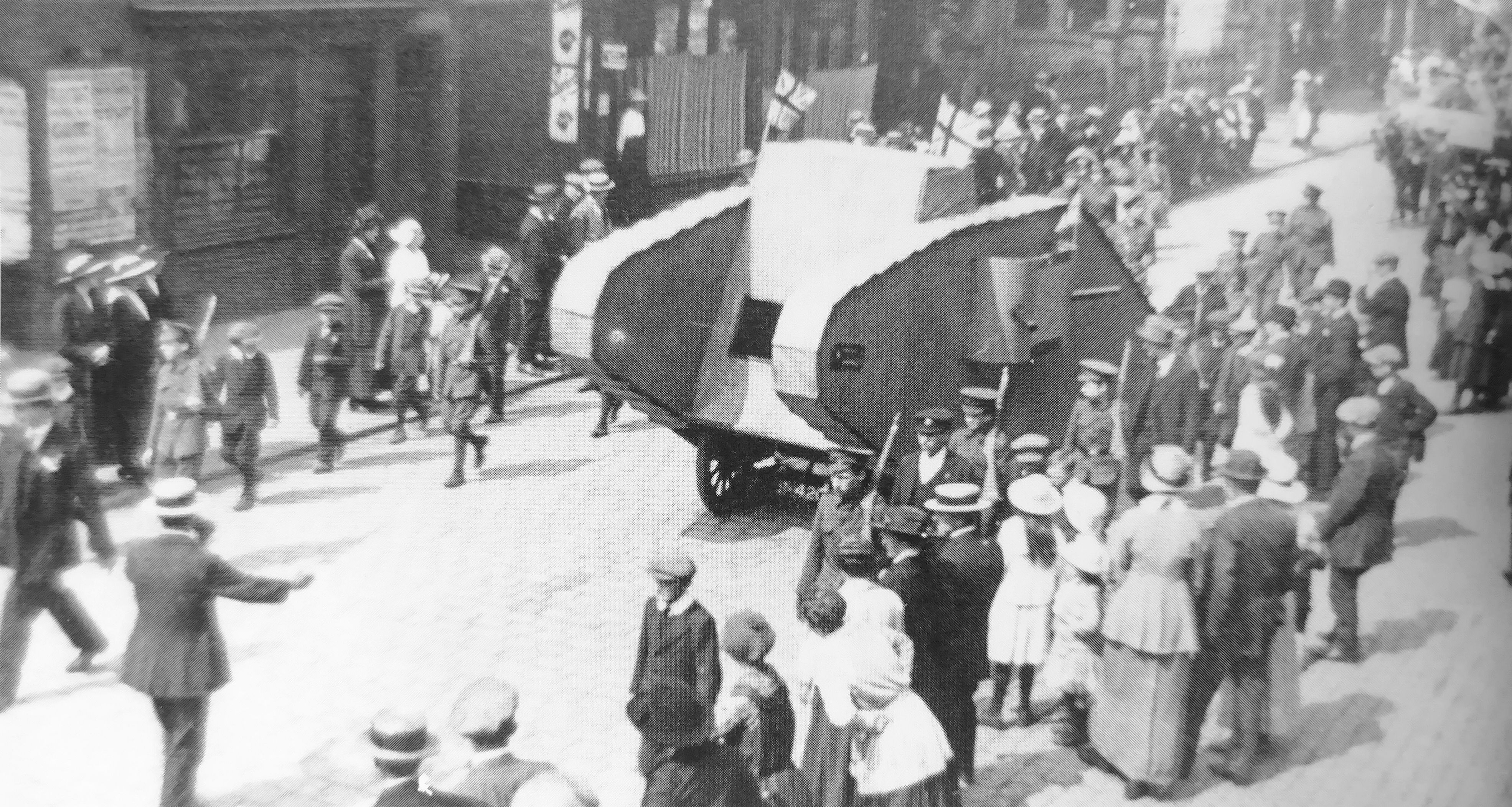
Above: “Humpy's Tank” at Golborne Carnival on 20 May 1918. Sam's recollection may be faulty here: the “Tank” was in fact a wooden frame made by Naylor's employees Joe and Ernie Richards which was then placed over a car belonging to local resident Joe Unsworth.
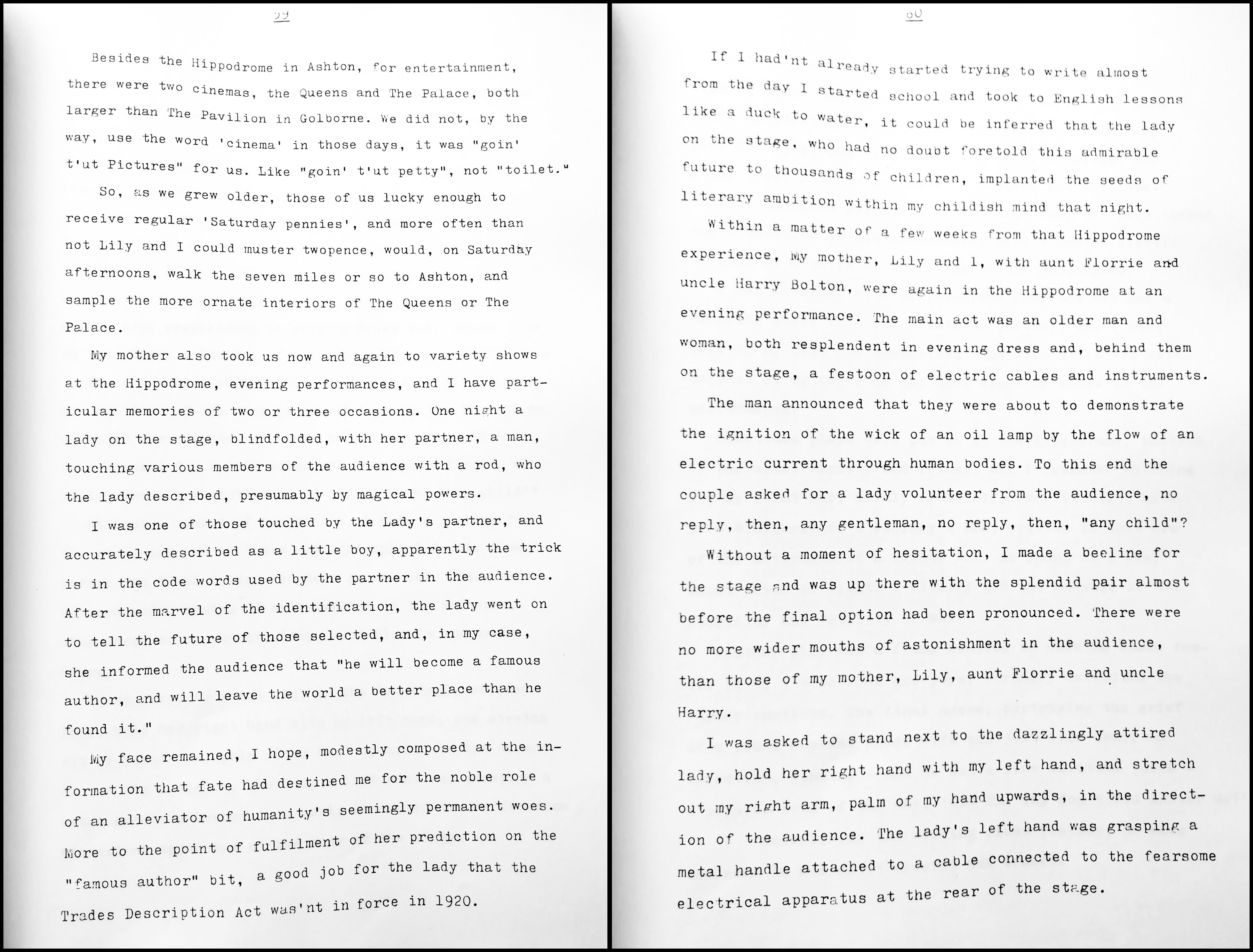
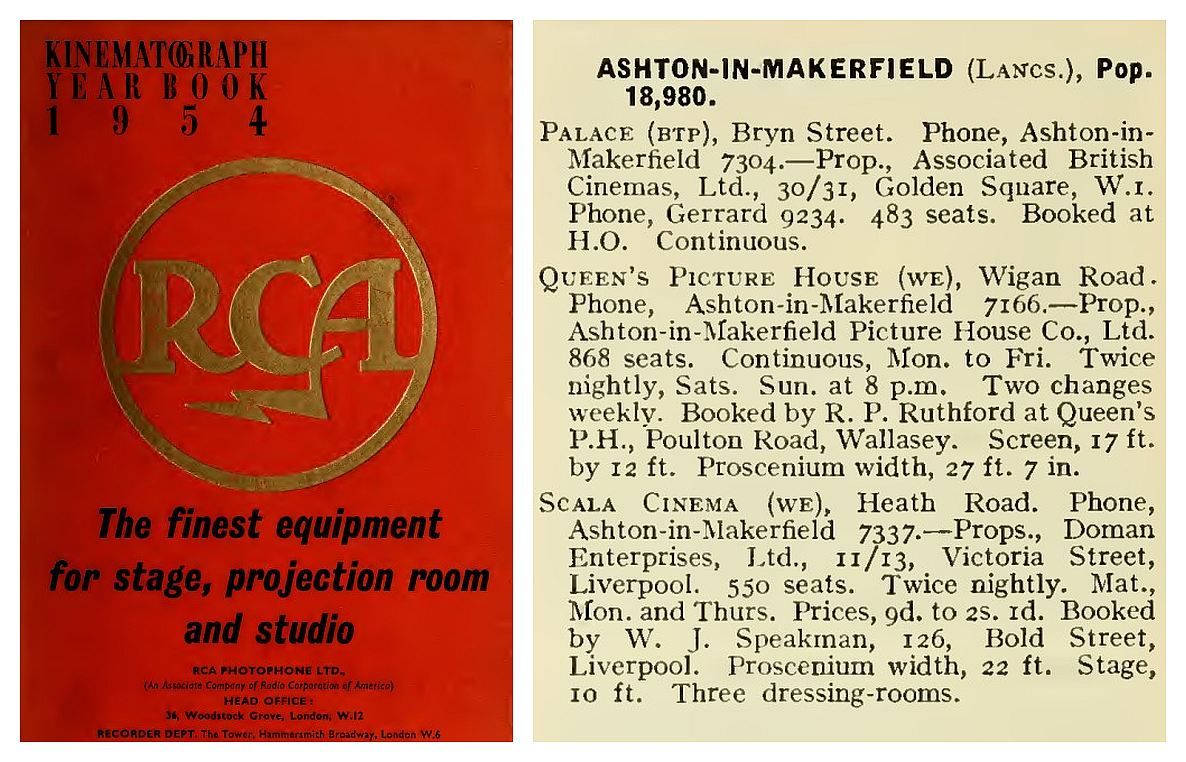
Above: Extract from the Kinematograph Yearbook, 1954, when Ashton still had still had three cinemas: the Palace, the Queens and the Scala (formerly the Hippodrome).

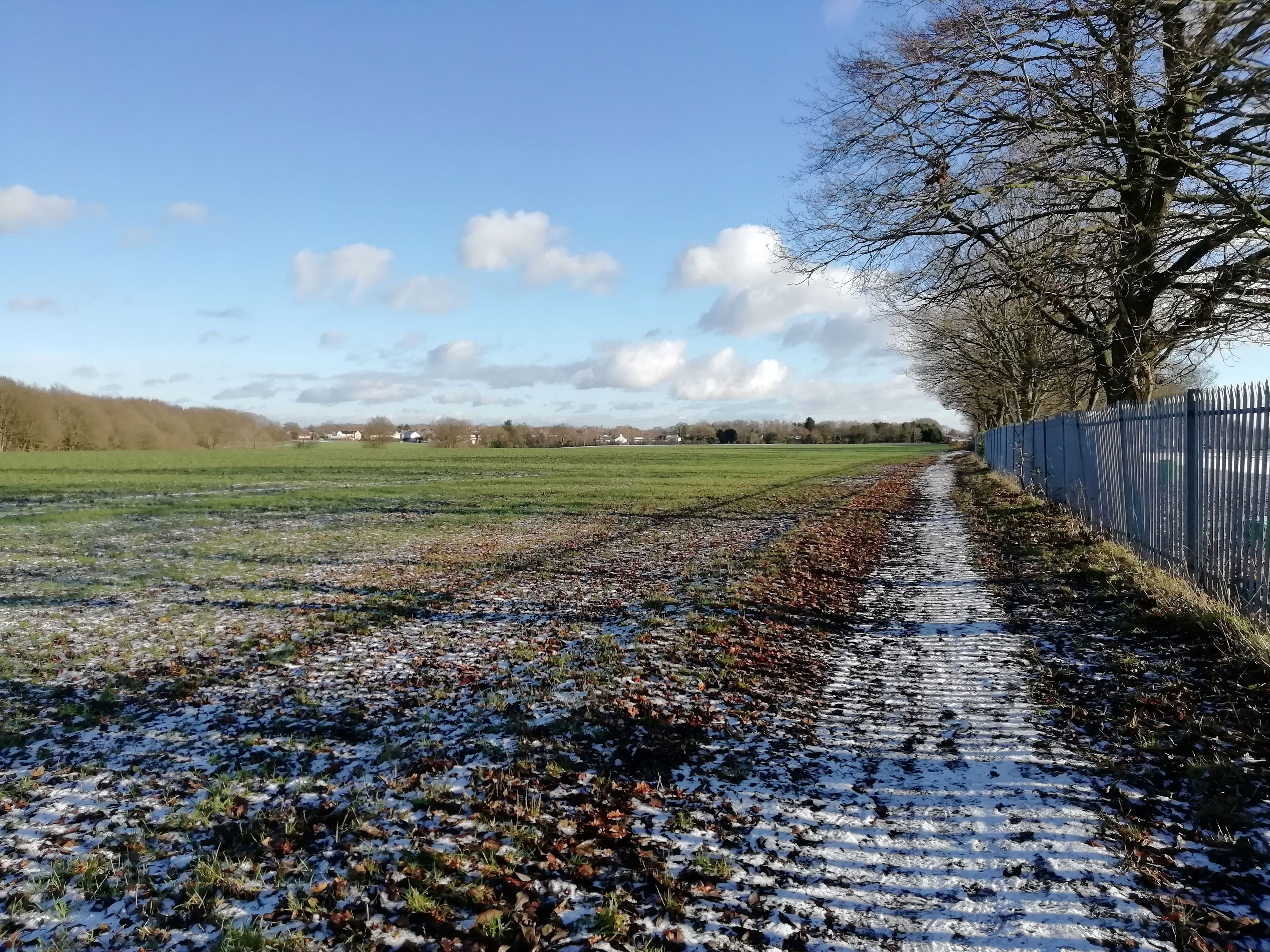
Above: The Plant, looking towards Golborne on 19 January 1923. The name is presumably an abbreviation of “Plantation”.
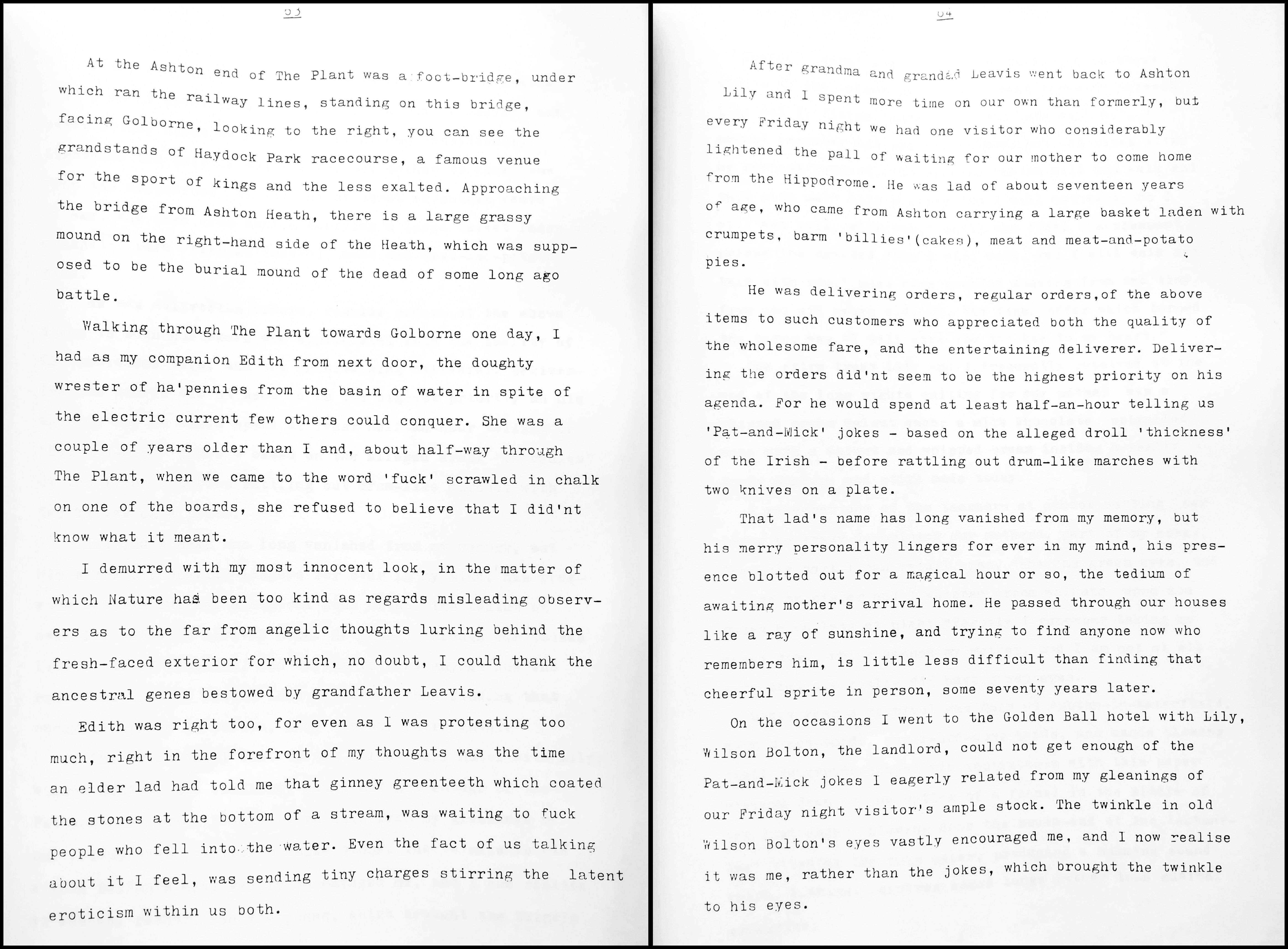
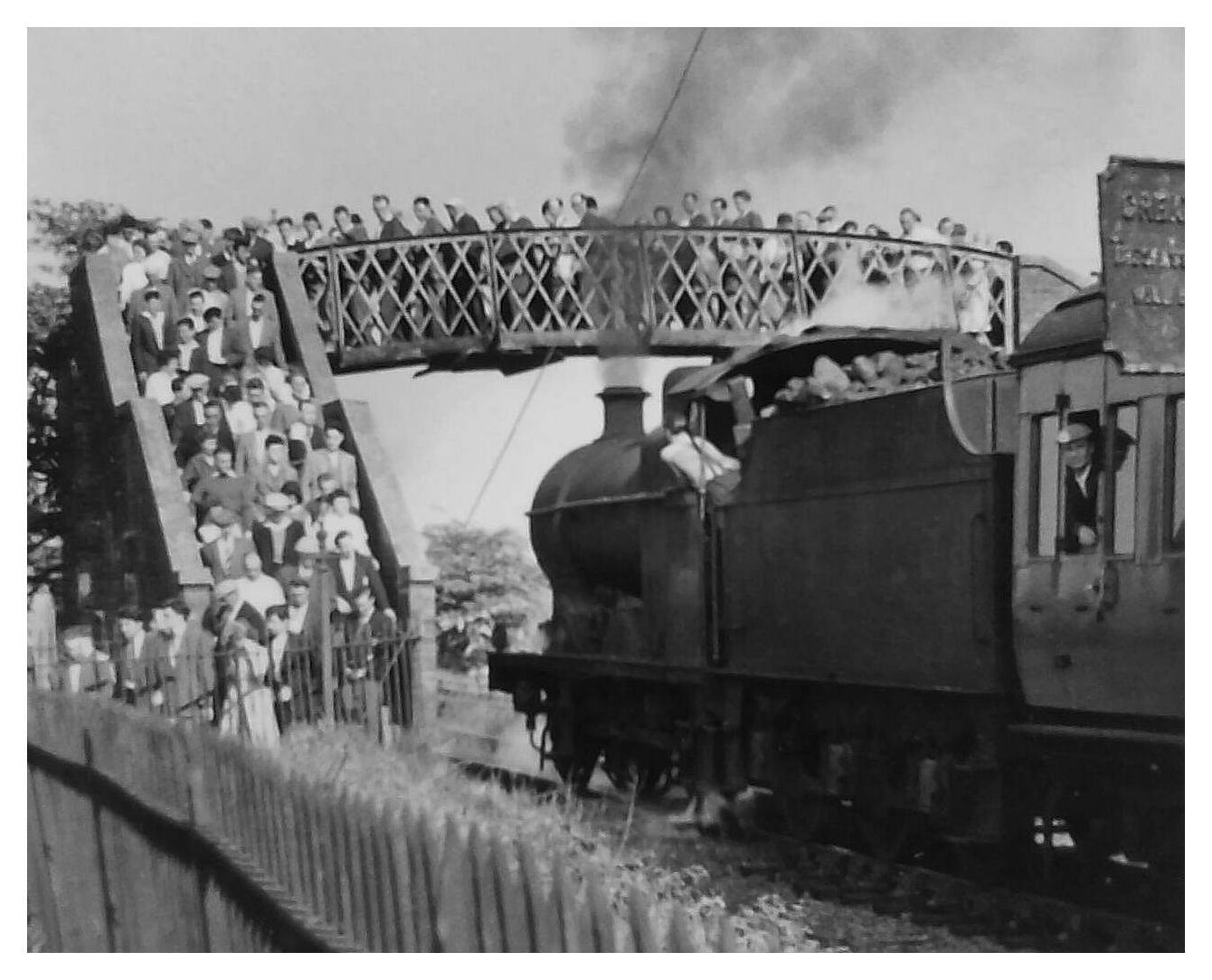
Above: Former railway bridge at Ashton Heath, now demolished apart from part of the left-hand support. The railway carried goods and, for a time, passengers from St Helens to Lowton St Mary's with intermediate stations at Haydock, Haydock Racecourse, Ashton-in-Makerfield and Golborne. The tracks seen here were finally lifted in the 1980s.
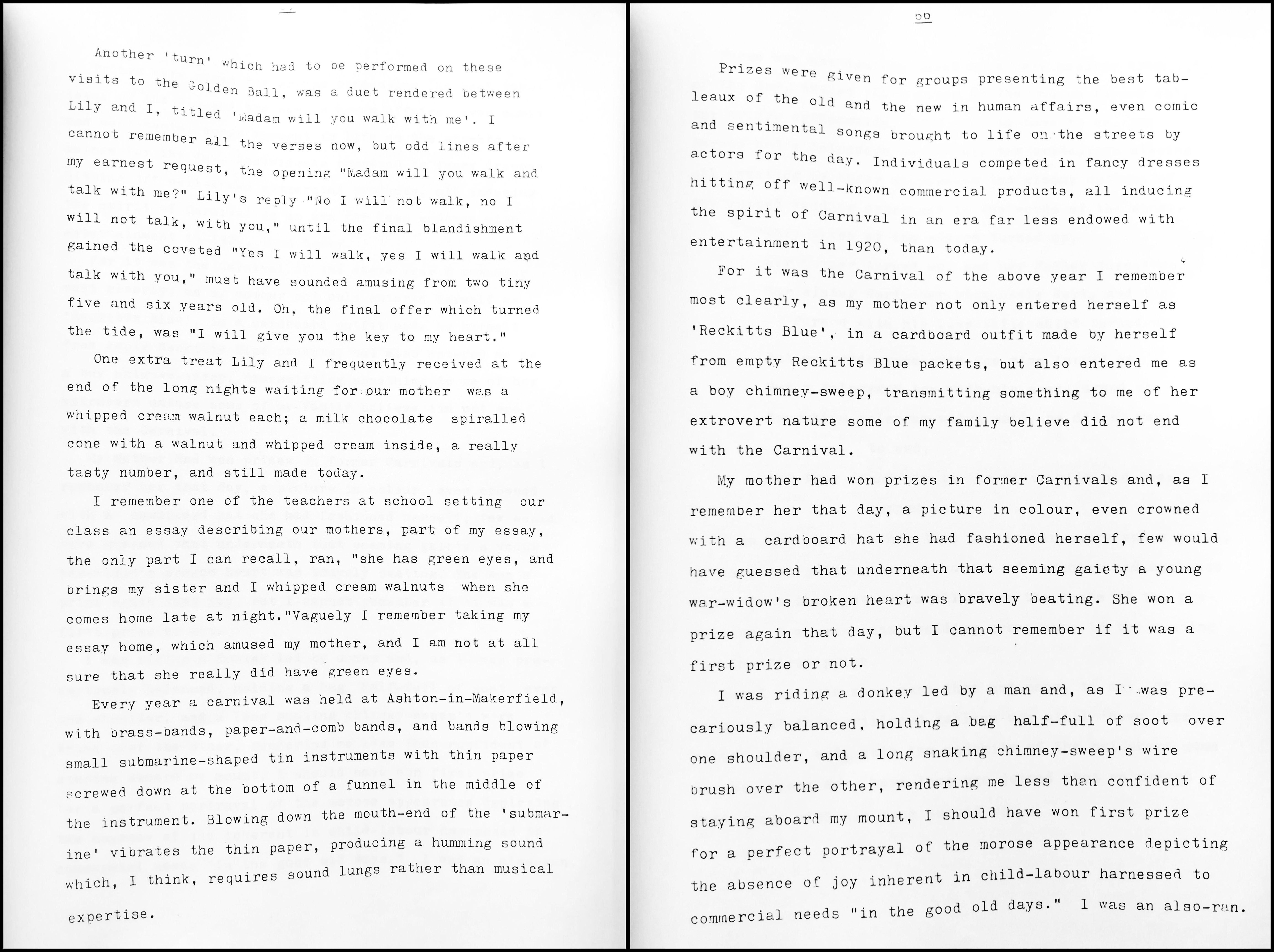
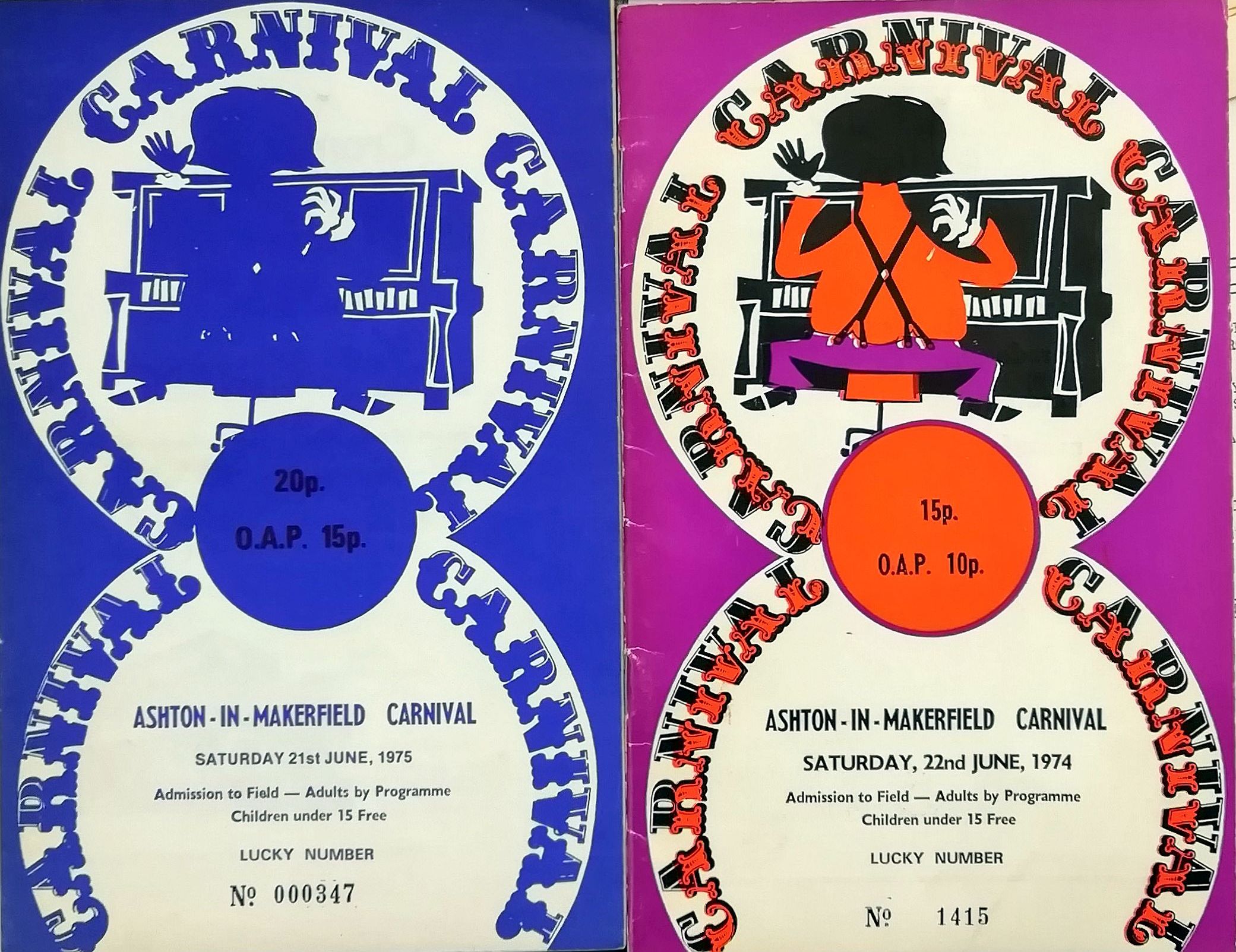
Above: Ashton-in-Makerfield Carnival programmes, 1974-5. Sadly, the event has been discontinued.

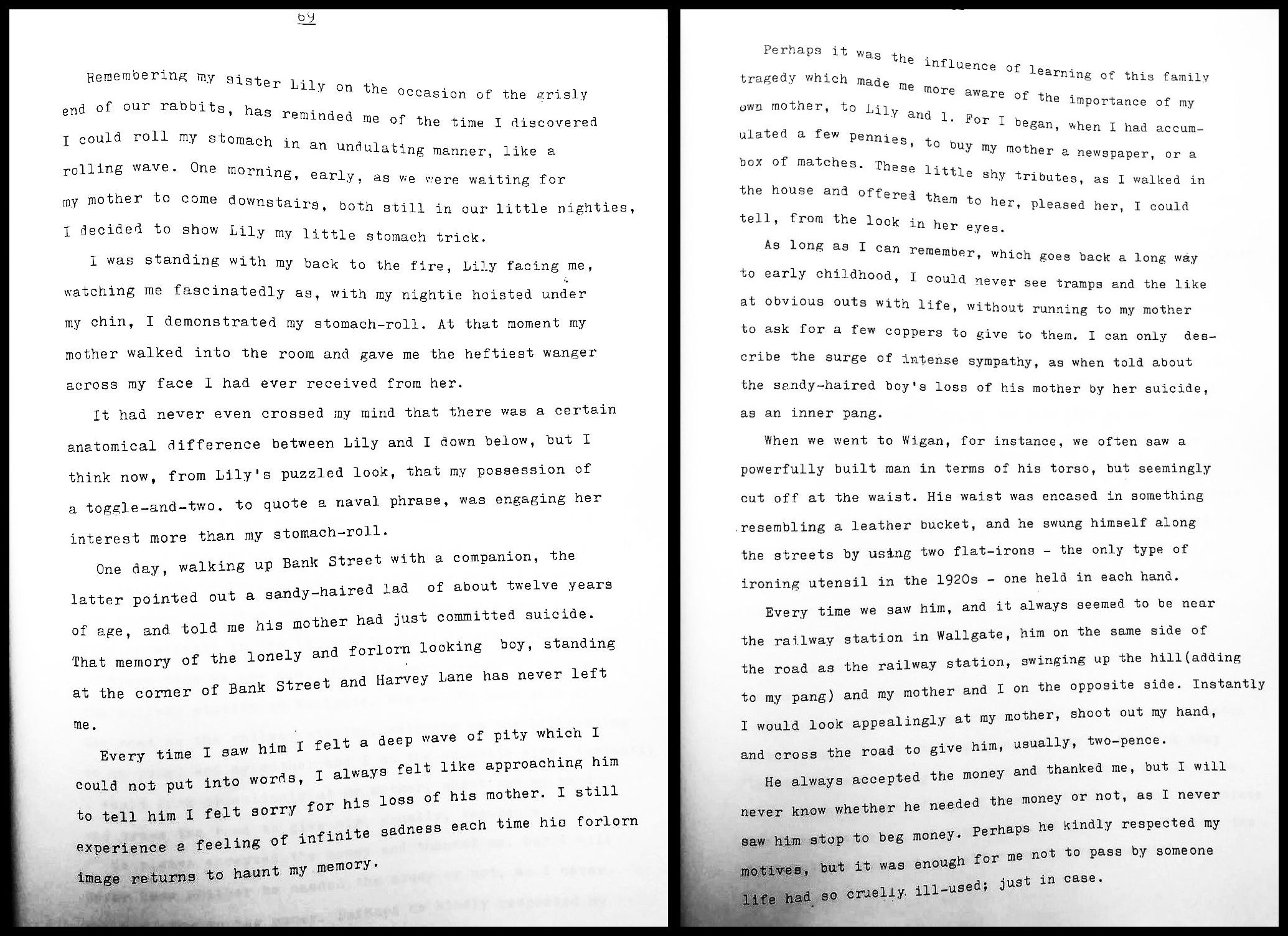

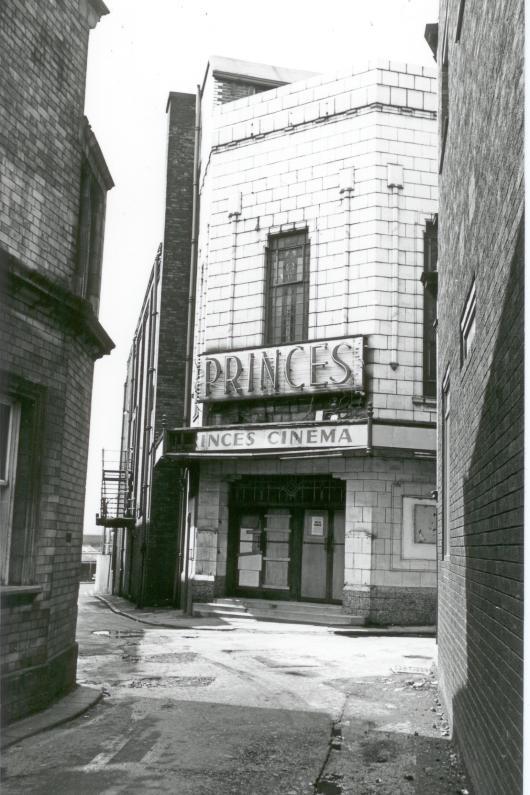
Above: The Princes Cinema Ltd was formed and took over the former Kings Electric Theatre premises in Wigan in 1922. Like many cinemas of the period, it offered live entertainment as well as films. Demolished in 1930s, it was replaced by a new Princes Cinema – now a night club – on an adjacent plot as seen here. Photograph by Ron Hunt/WiganWorld.


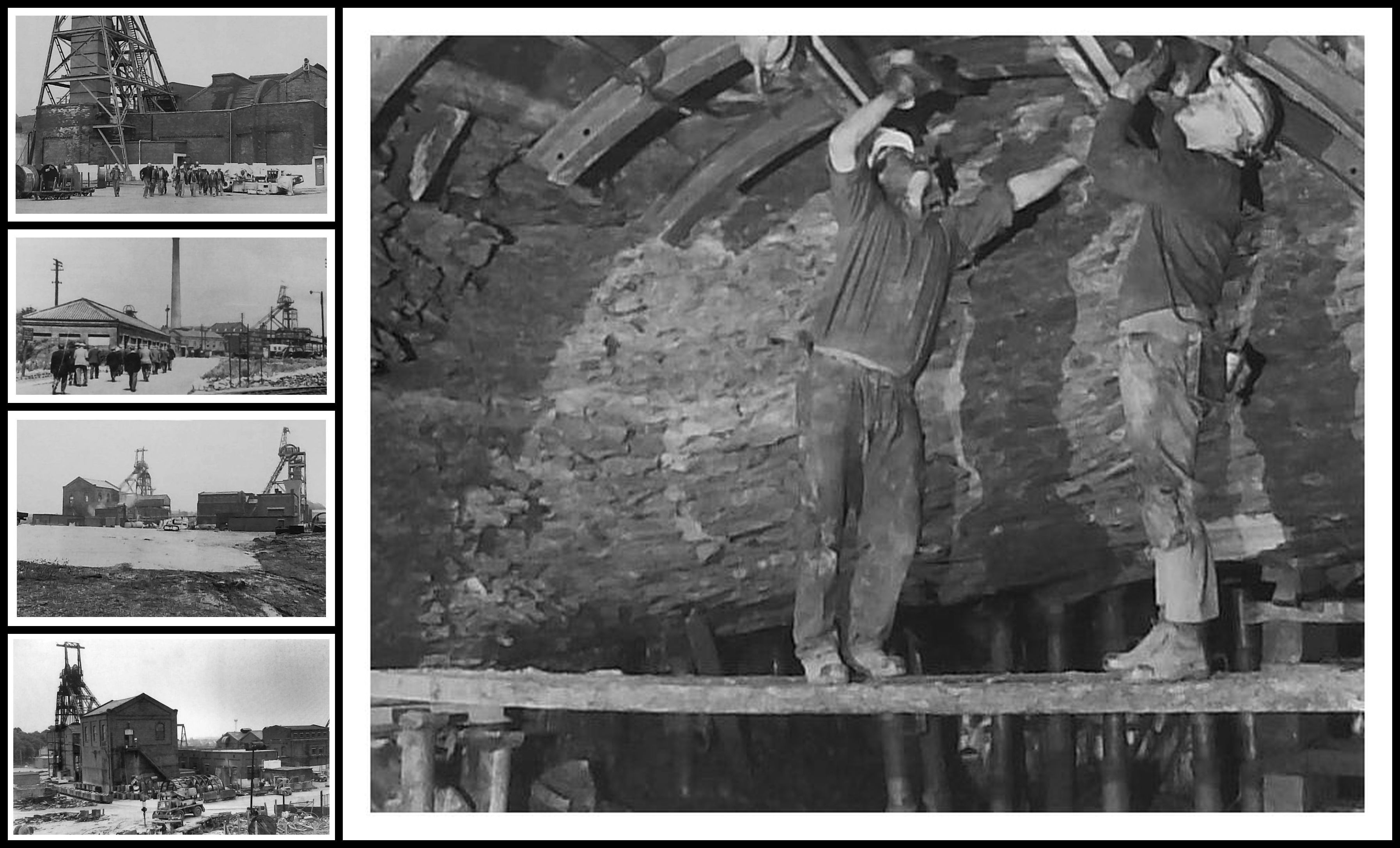
Above: Scenes from Golborne Colliery.
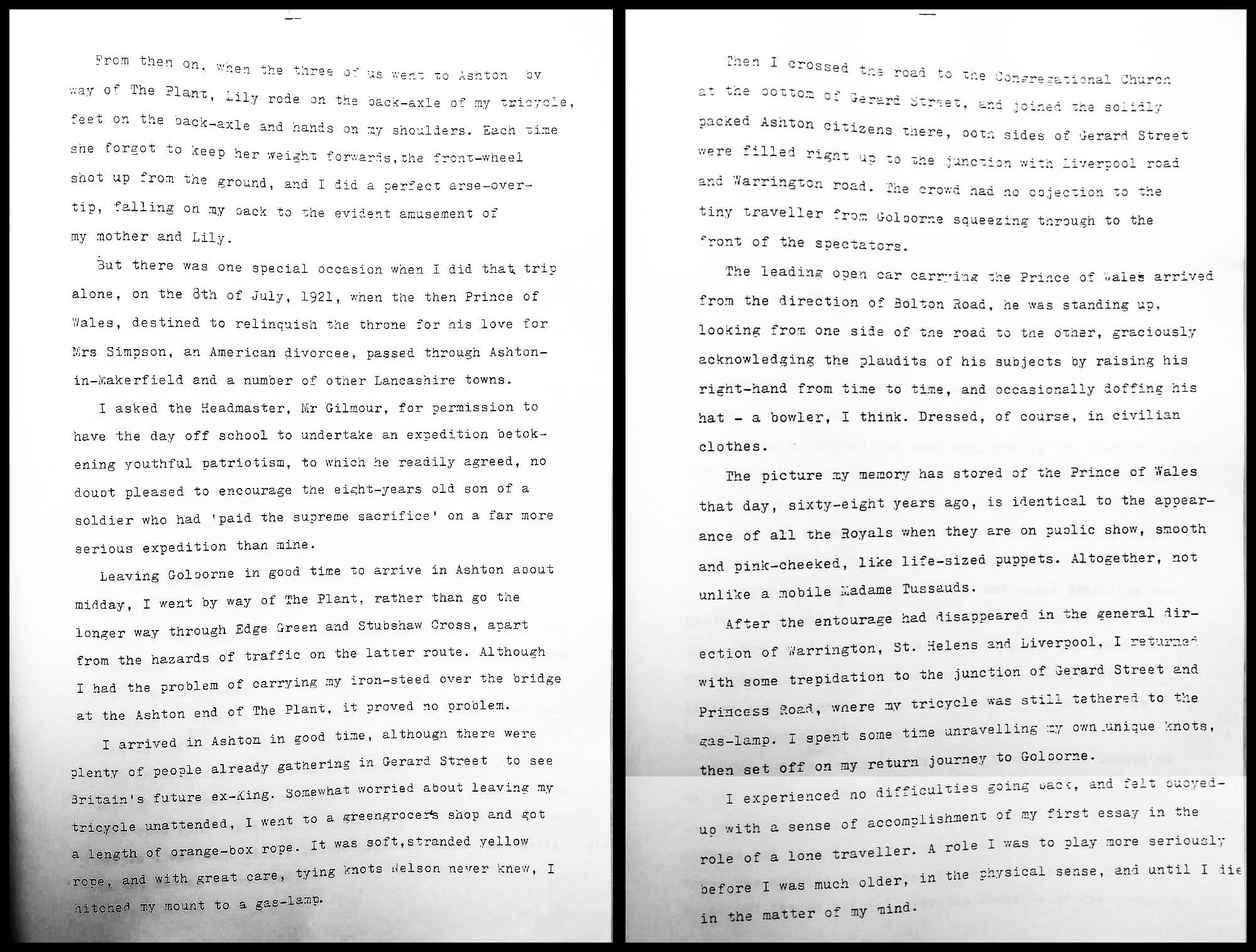
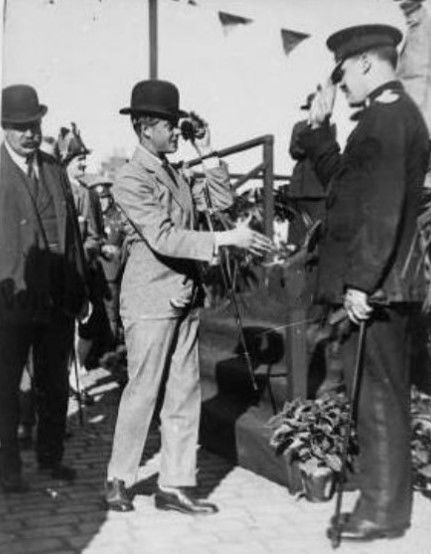
Above: The visit of the future Edward VIII to Lancashire in 1921 began with his arrival by train at Huyton station on 4 July. There he was met by the Earl of Derby who hosted him at Knowsley Hall. The Prince's tour of the county over subsequent days included visits to Hindley, Abram and Ashton-in-Makerfield.
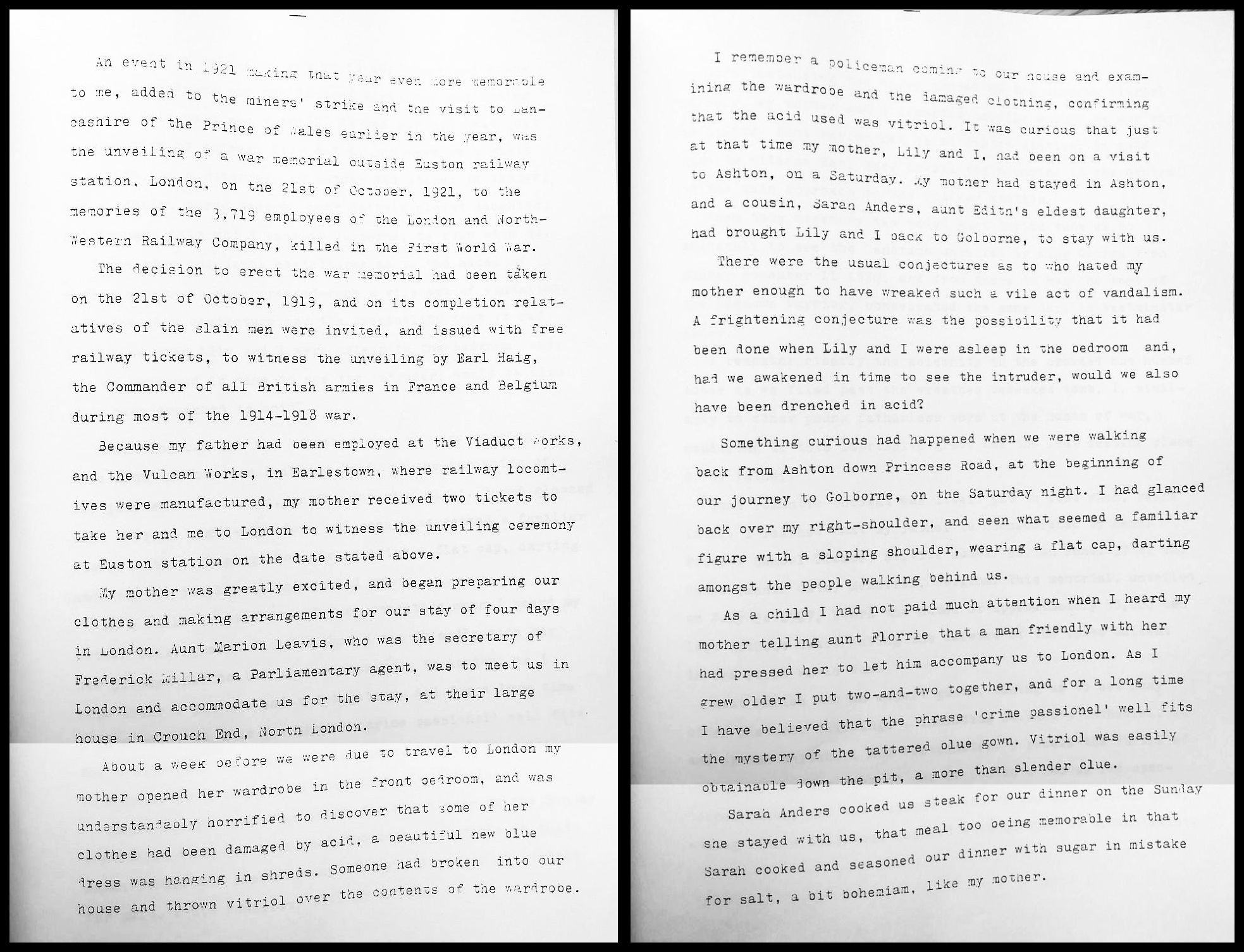
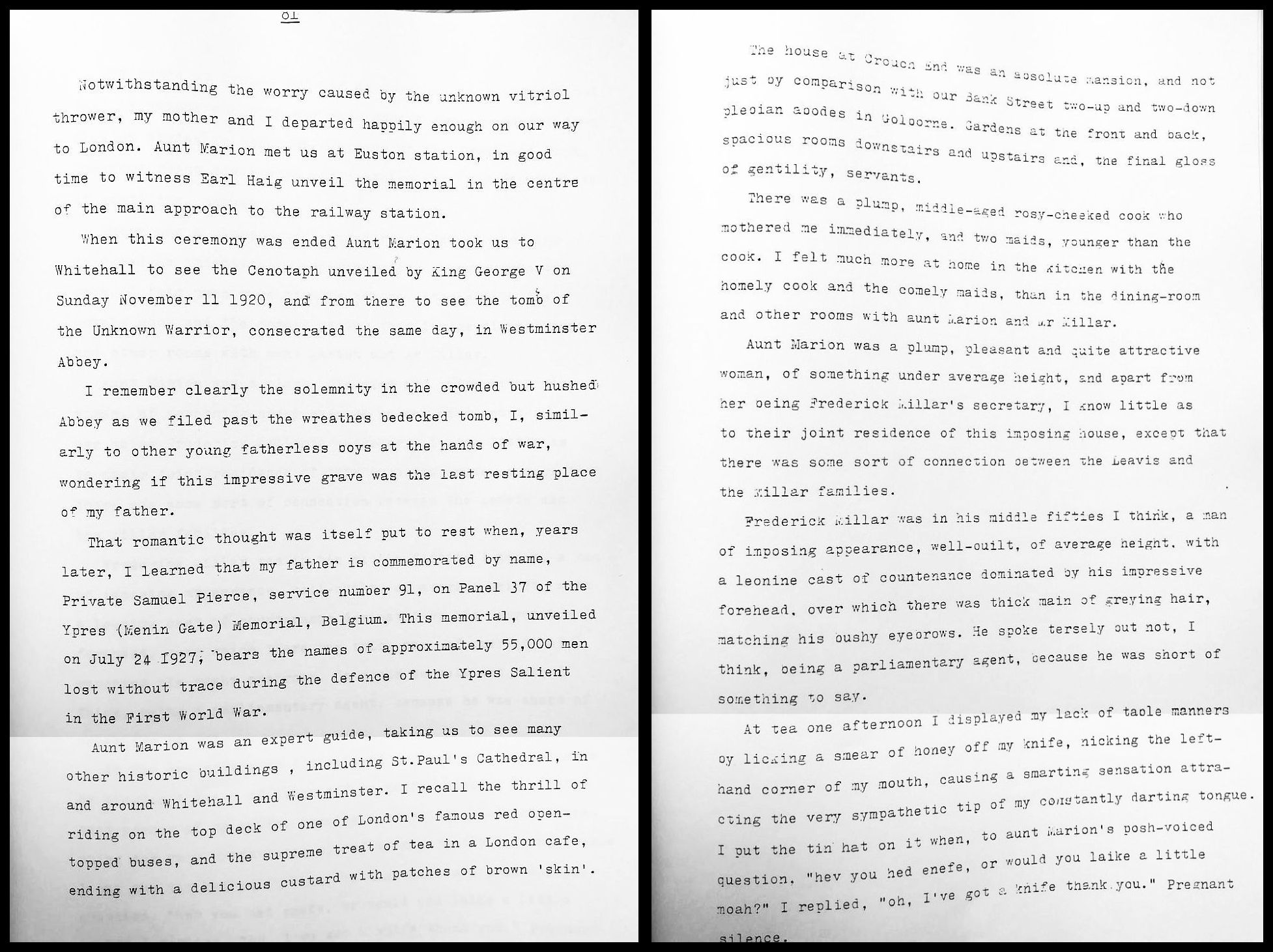
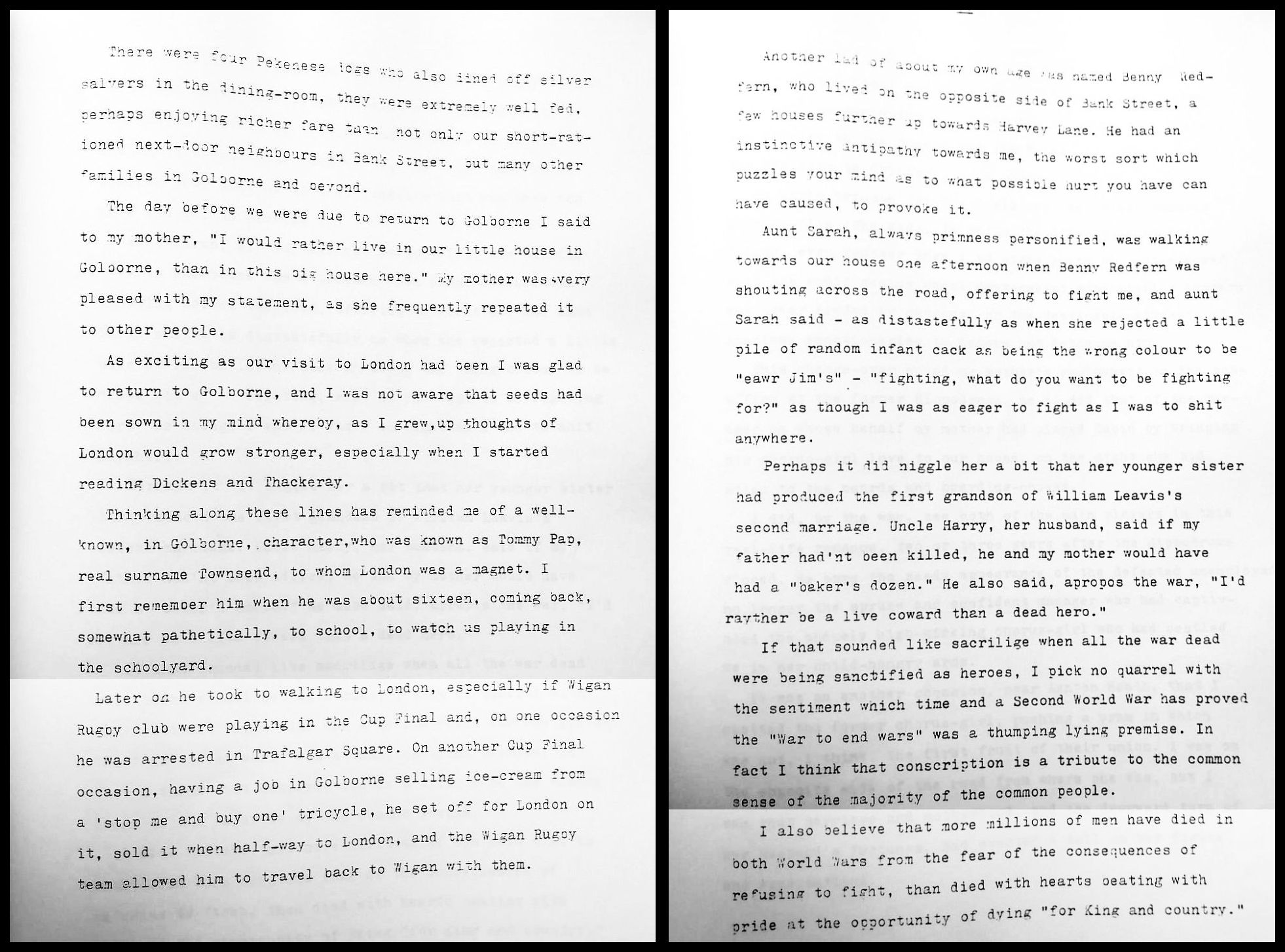
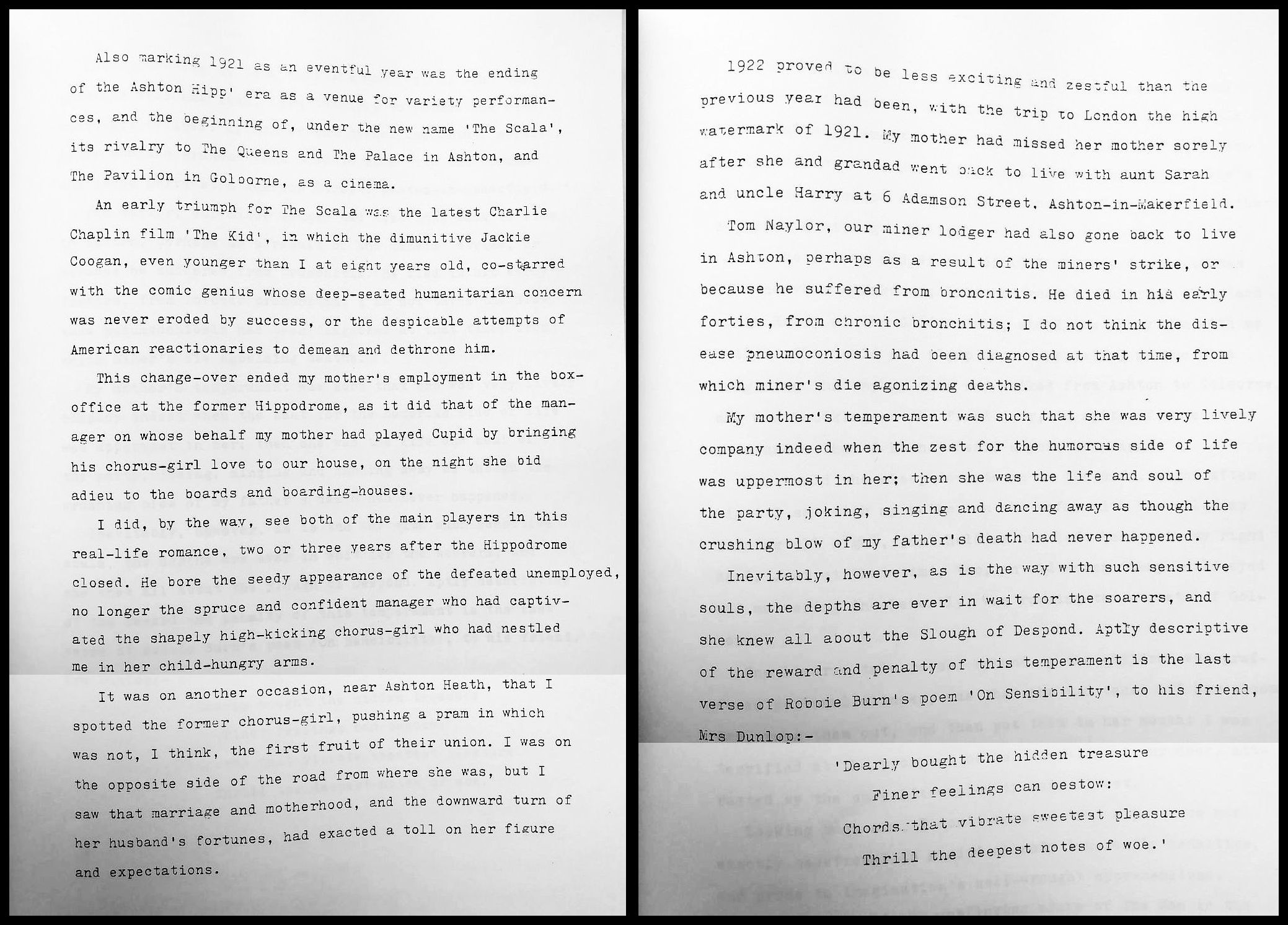

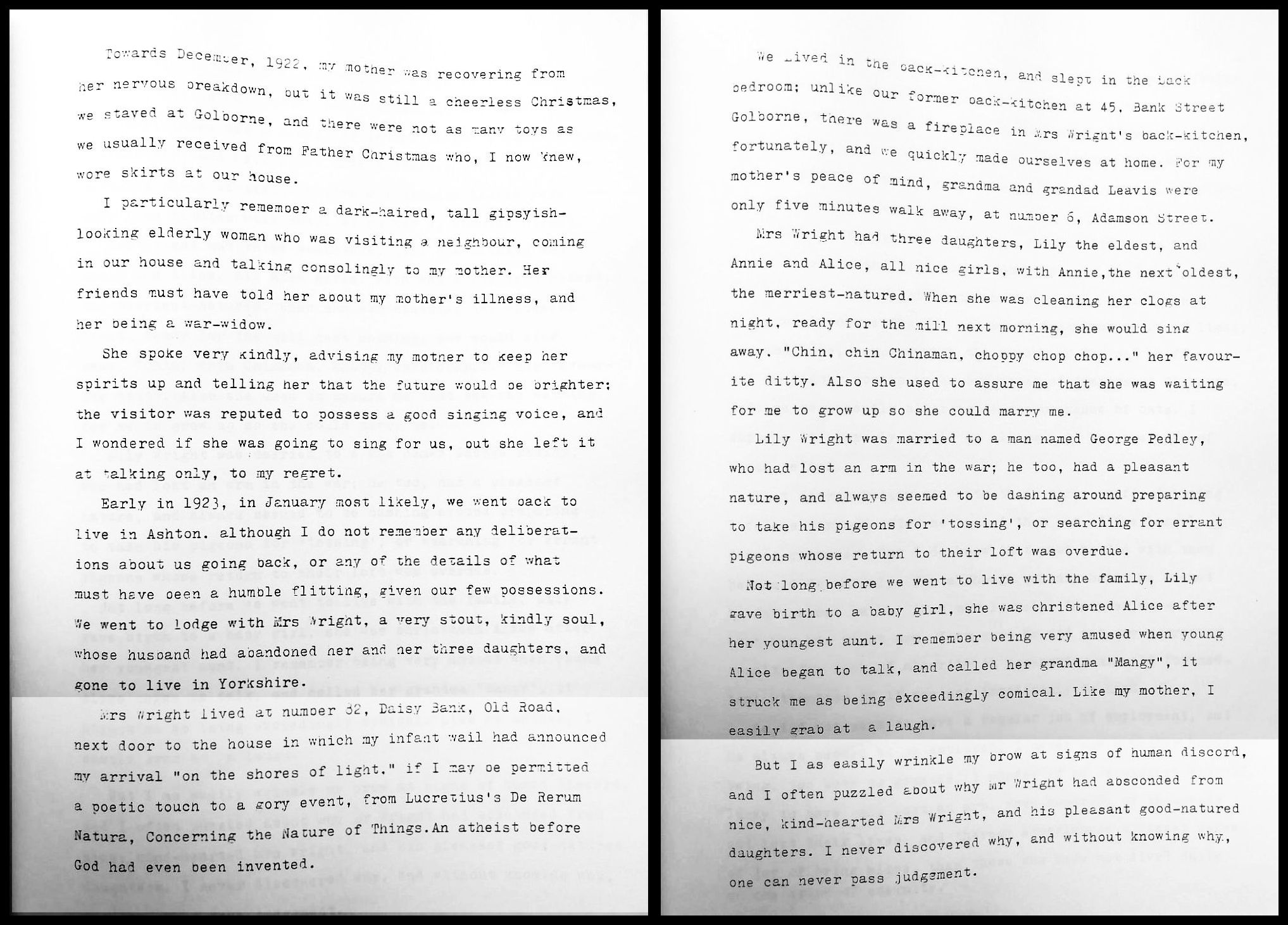
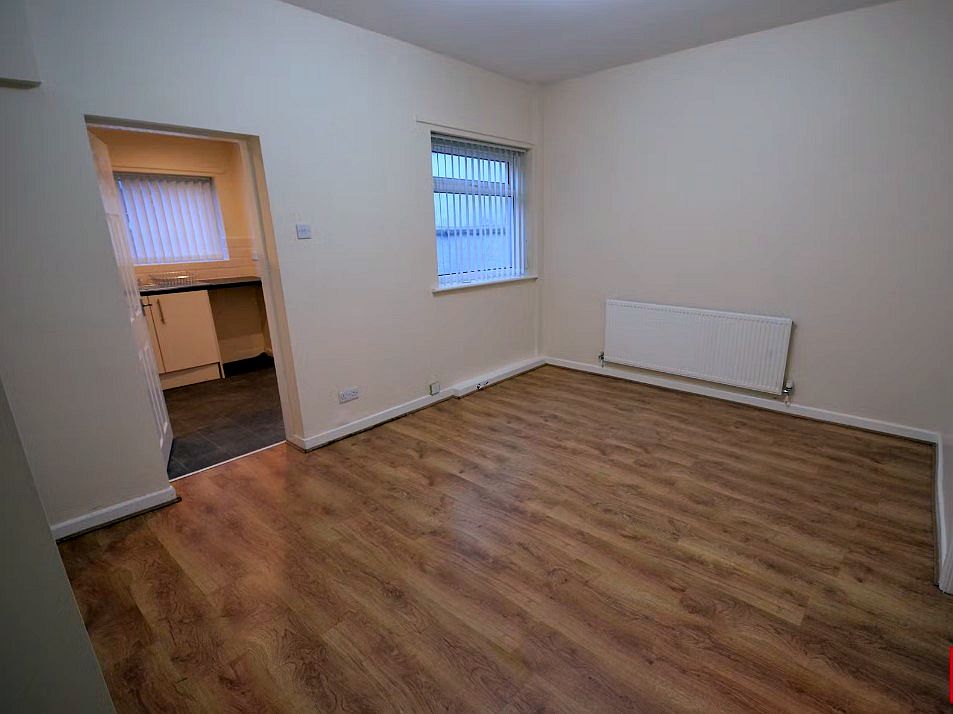
Above: Rear ground floor interior at 82 Old Road, seen here when the house was unoccupied in 2024.
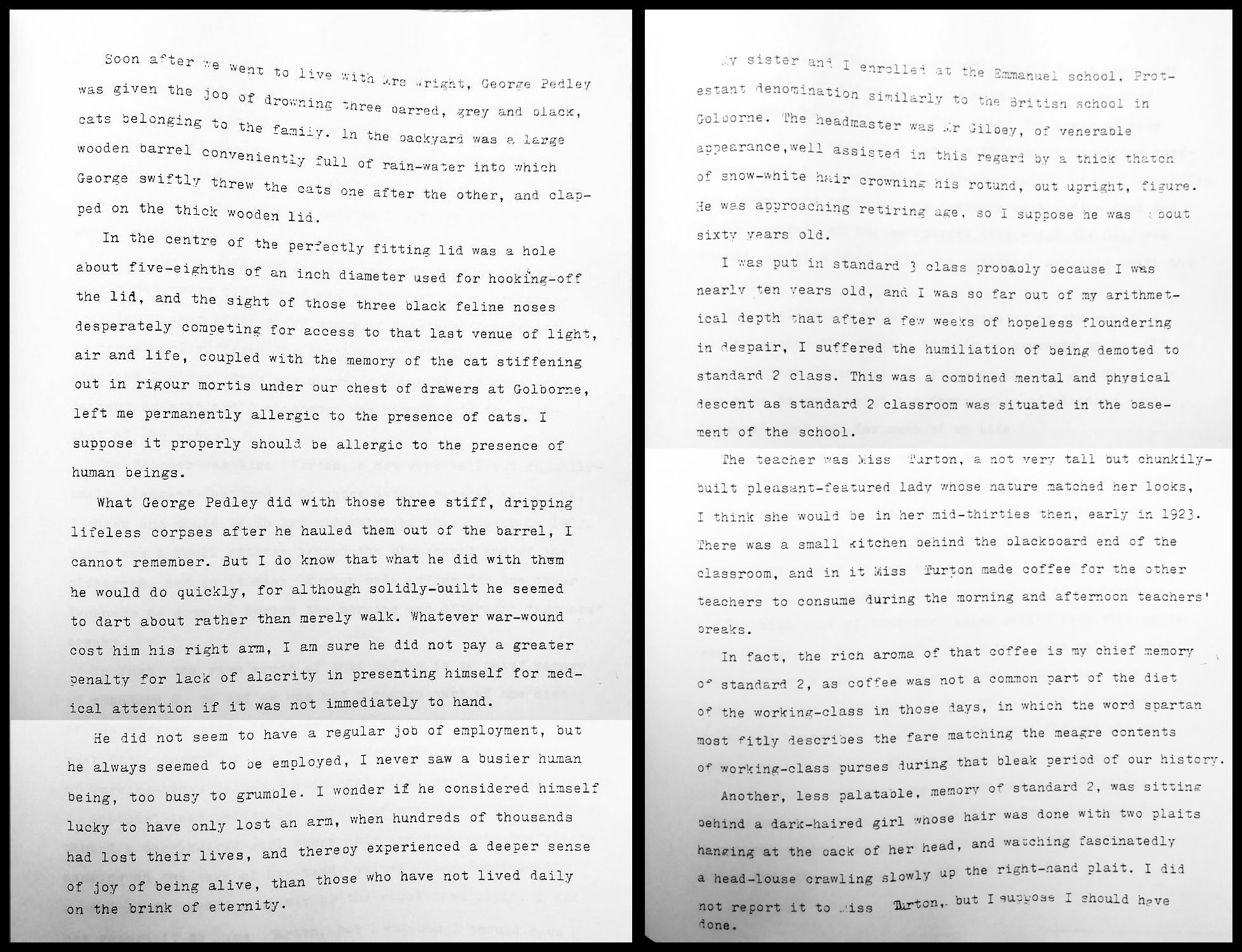
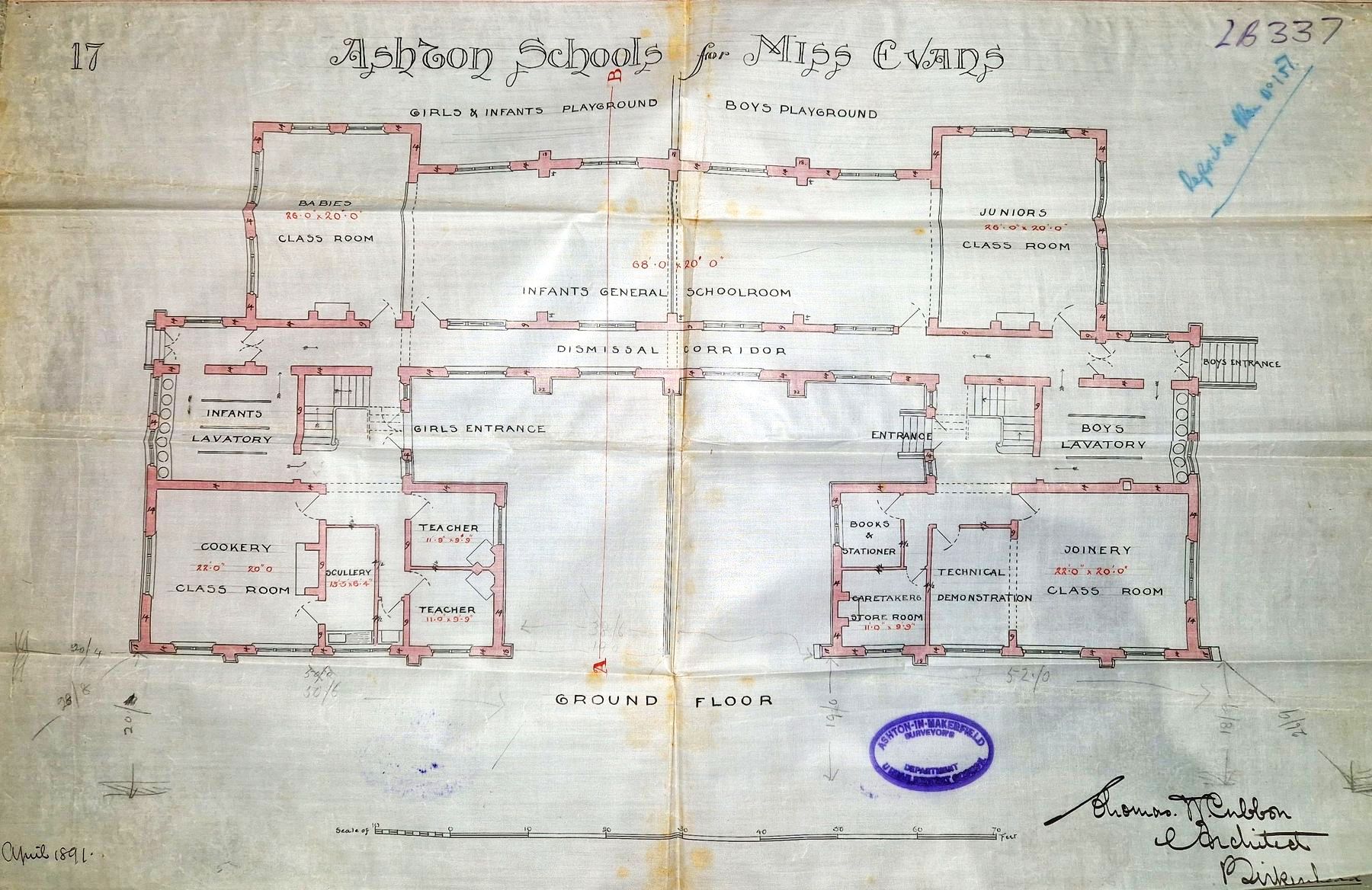
Above: Plans for the Evans (otherwise “Emmanuel”) British School on Wigan Road, Ashton-in-Makerfield. The School was one of several philanthropical projects undertaken by Ruth Evans, daughter of Richard Evans of the Haydock mining company.
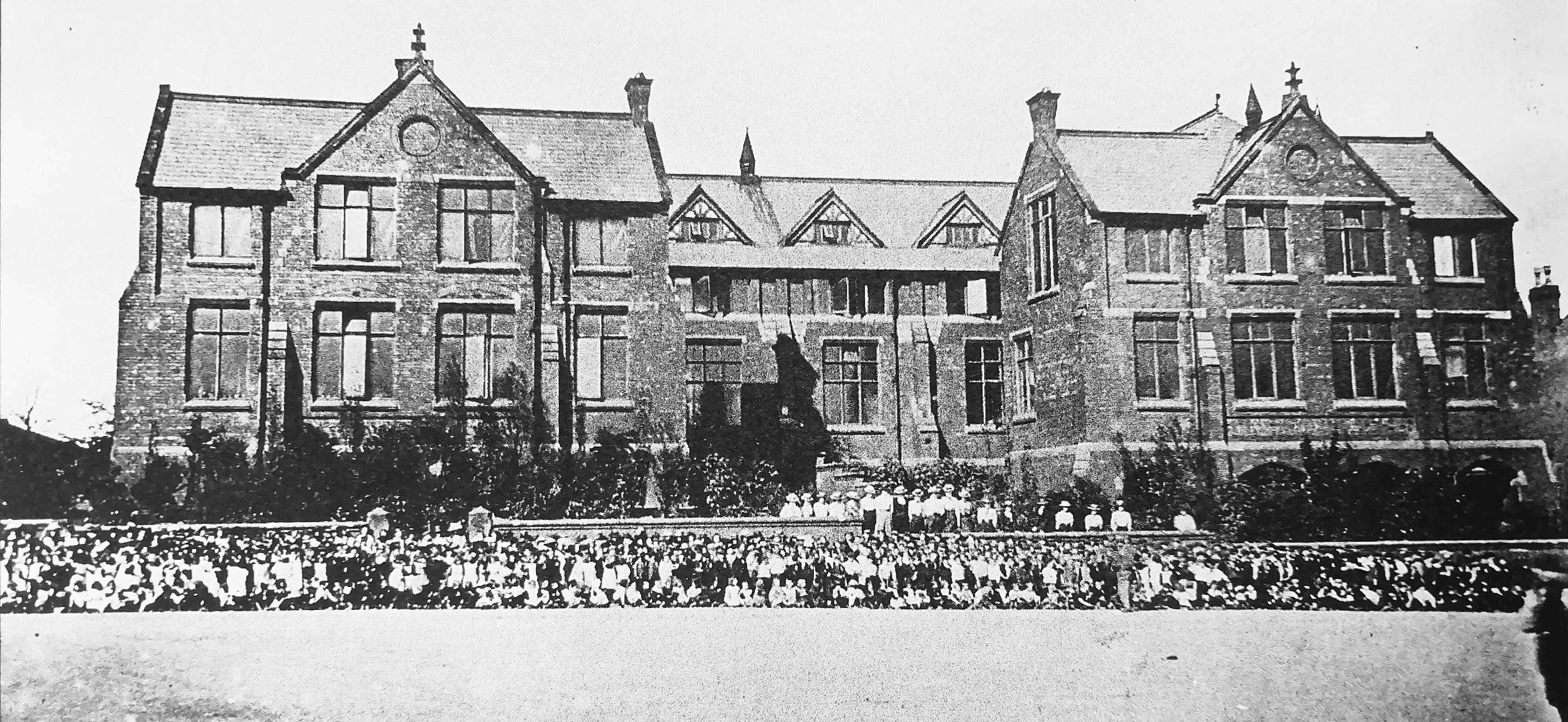
Above: Official opening of the Emmanuel British School, Ashton-in-Makerfield, in 1893.
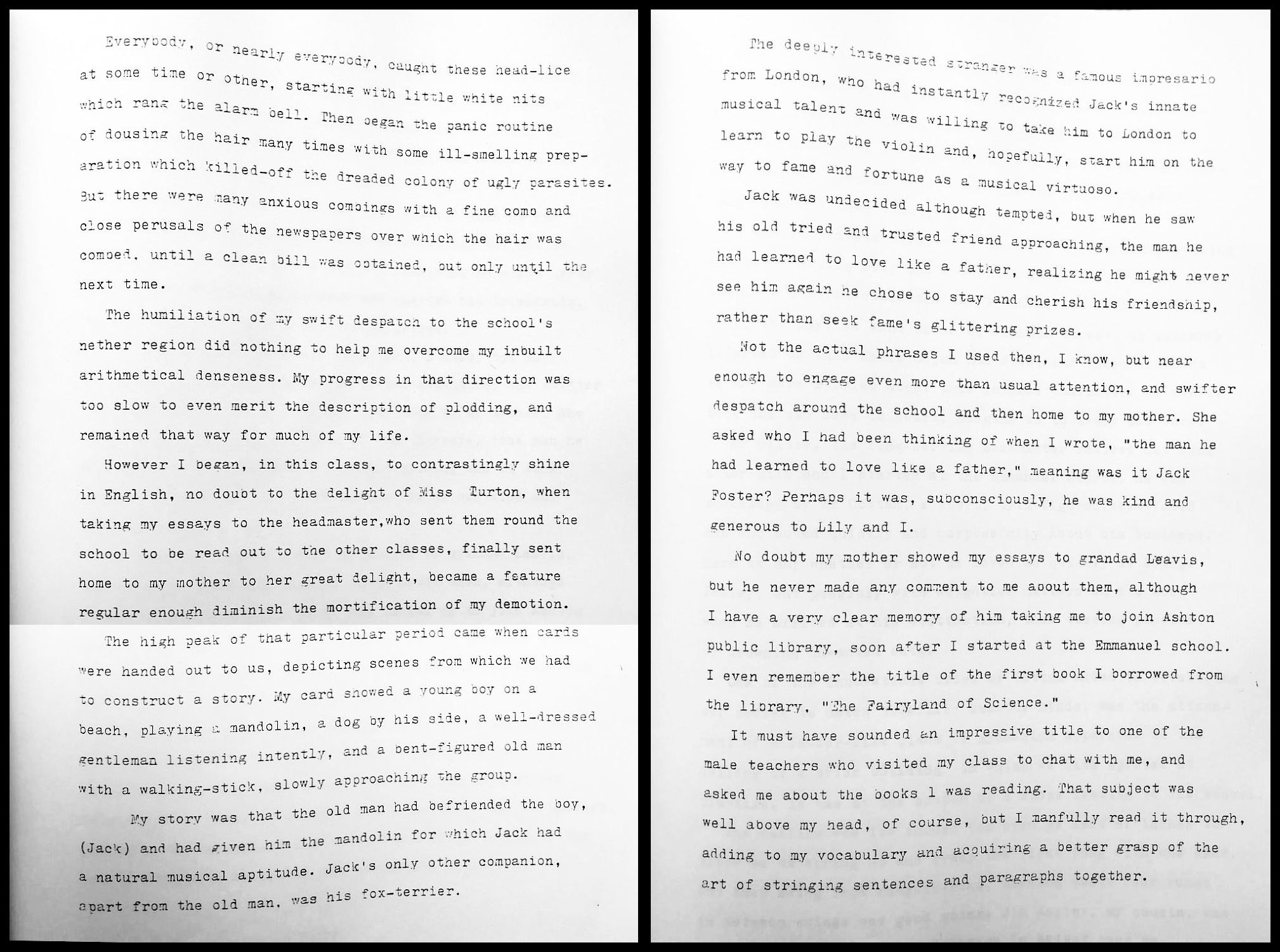
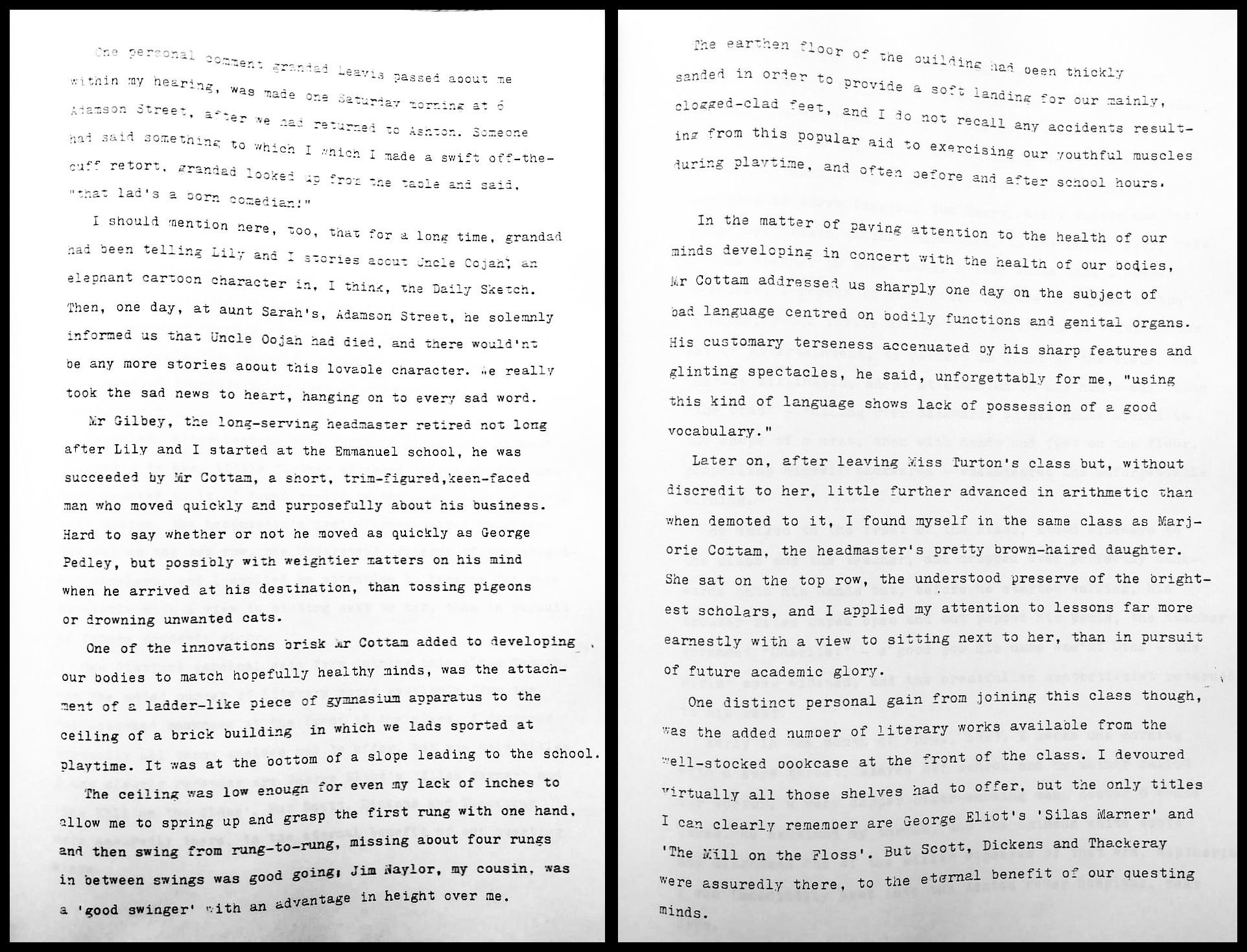
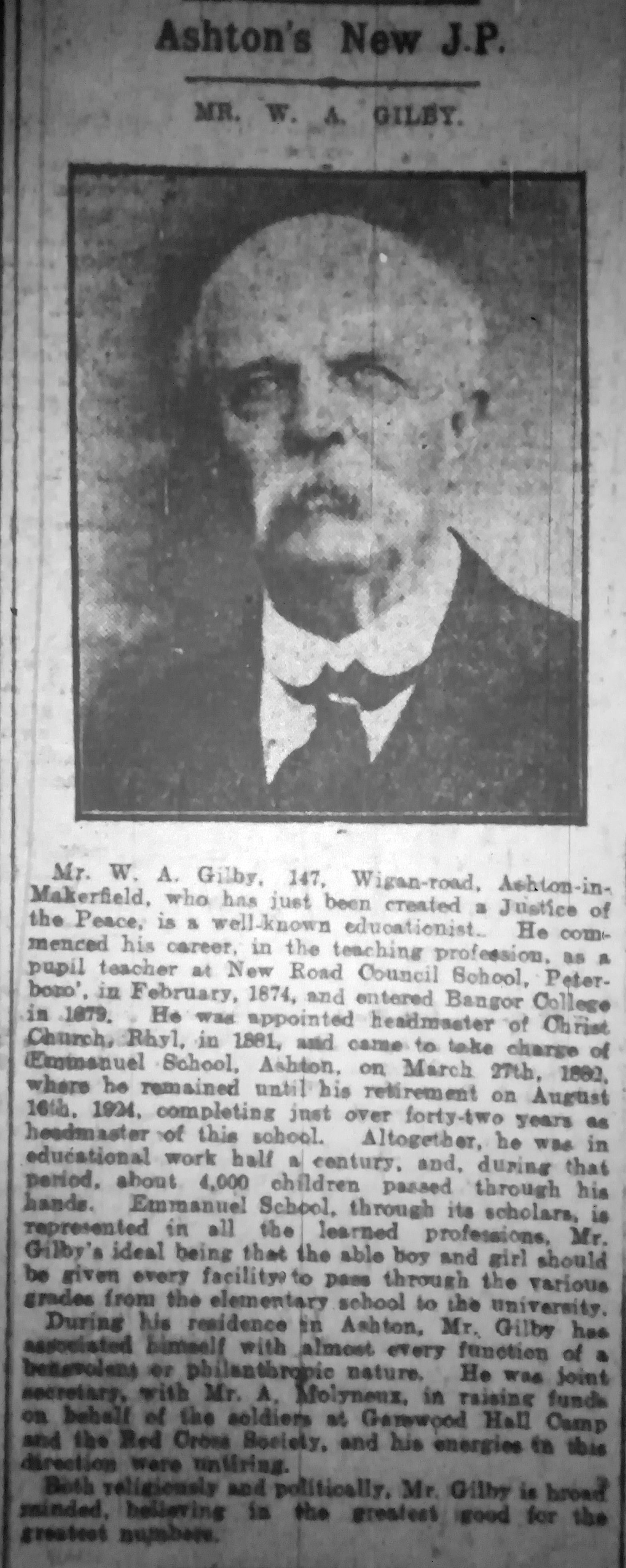
Above: W A Gilby began his teaching career in Peterborough. Moving to Ashton-in-Makerfield to take charge of Emmanuel School, he remained headmaster there until his retirement at the end of the summer term in 1924. As stated in this newspaper article of 27 June 1925 announcing his appointment as a JP, he had, “during his residence in Ashton, … associated himself with almost every function of a benevolent or philanthropic nature”.
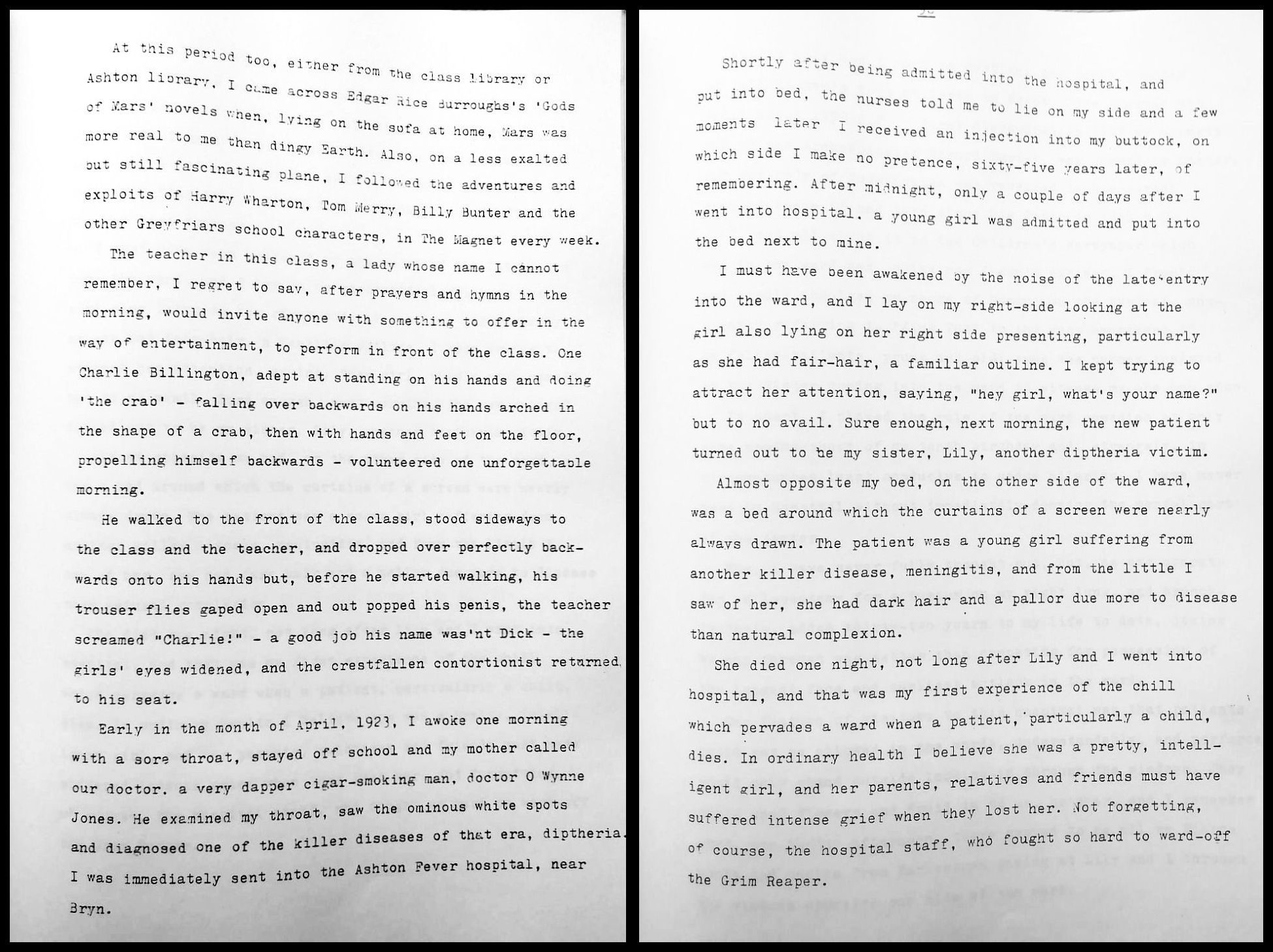
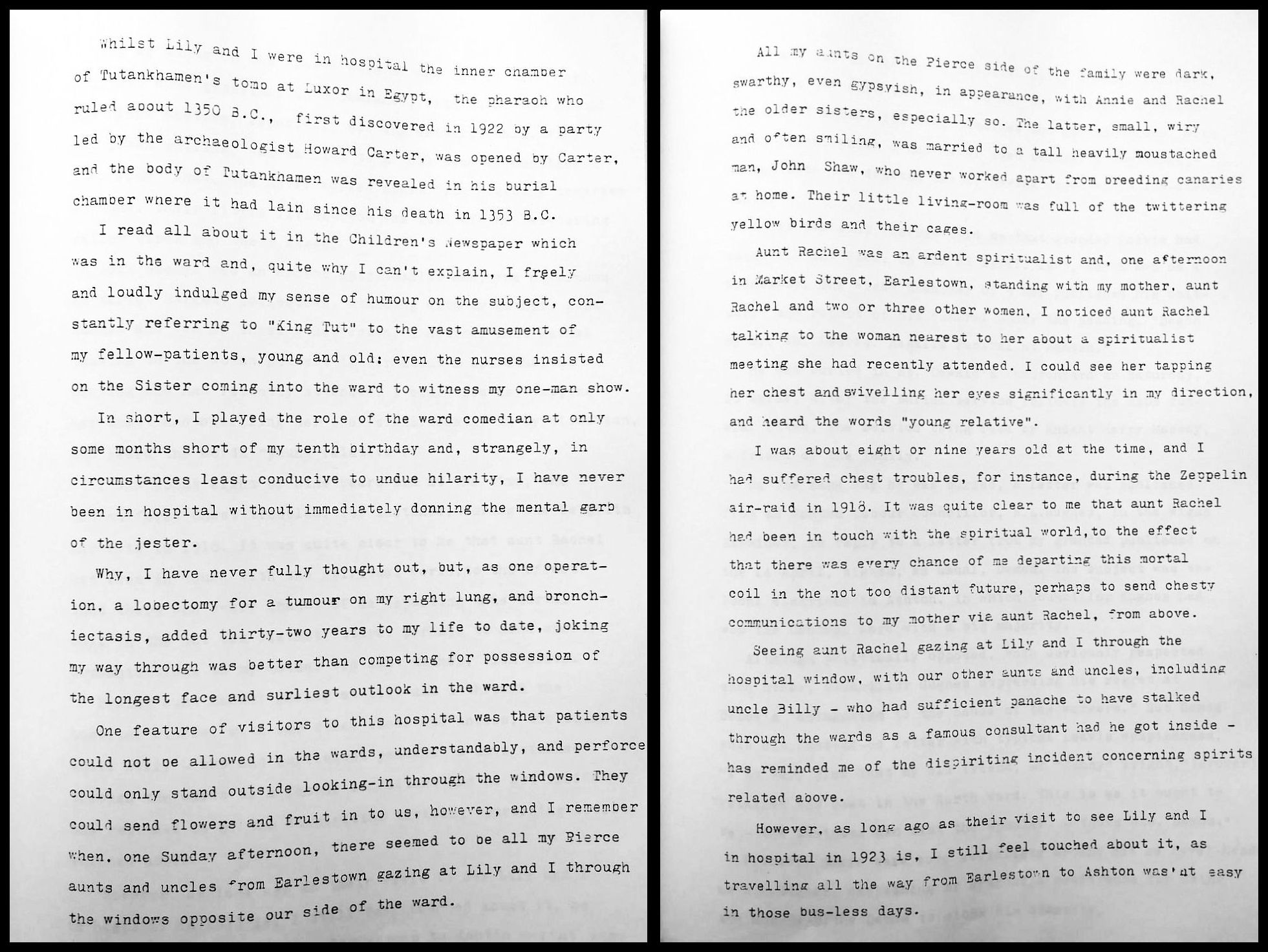
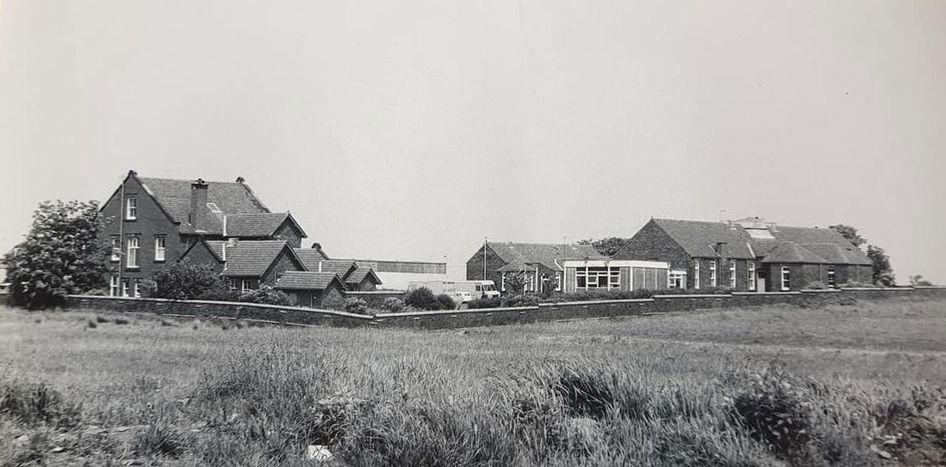
Above: Construction of the former Infectious Diseases Hospital off Bryn Road, Ashton-in-Makefield, began in 1885 and was completed early in 1886. The Hospital was substantially enlarged in 1906. Except for a brief period in 1949-50, the building was in continuous use as a medical facility until 1985. A commercial/industrial unit now occupies the site. The date of the photograph is not known.
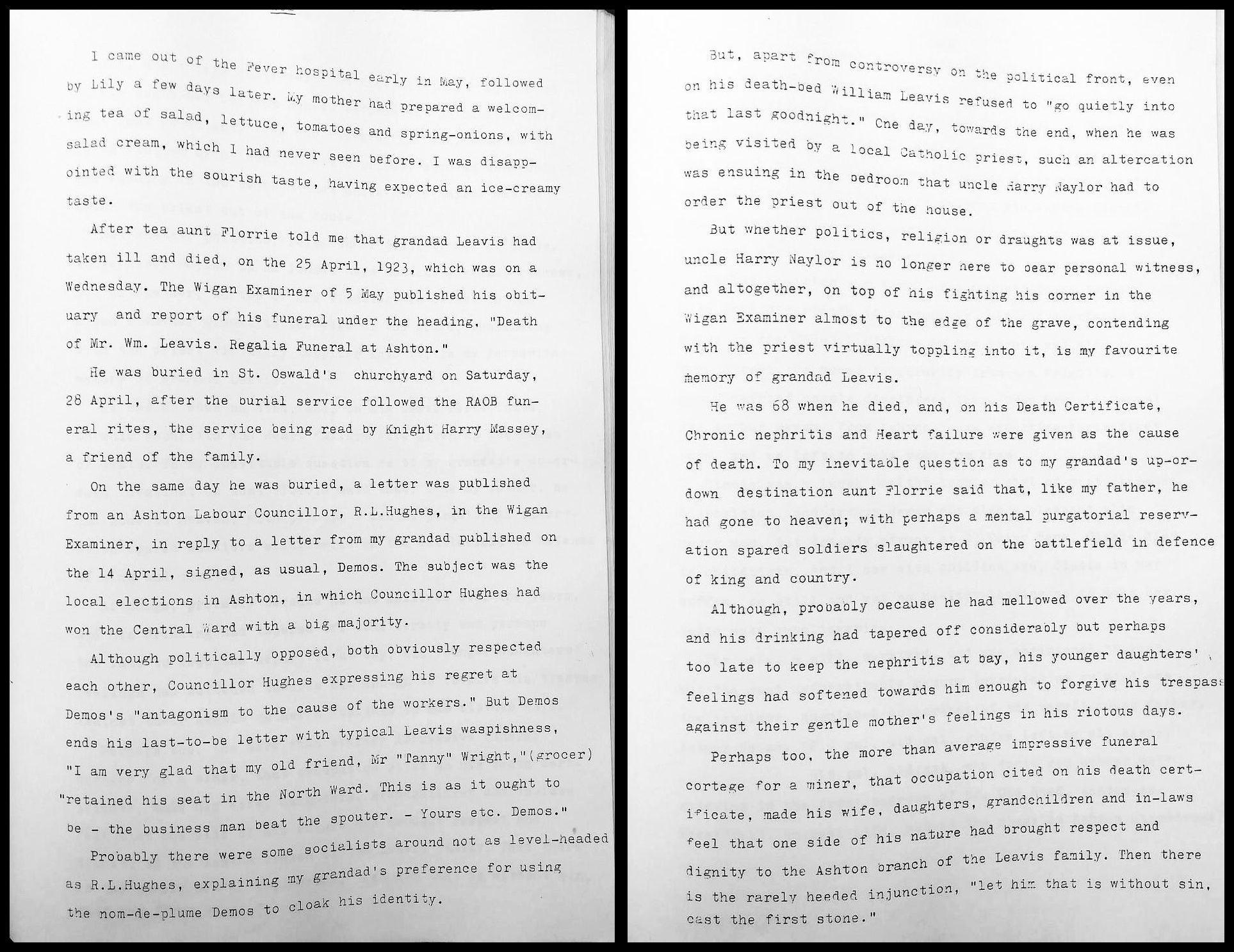
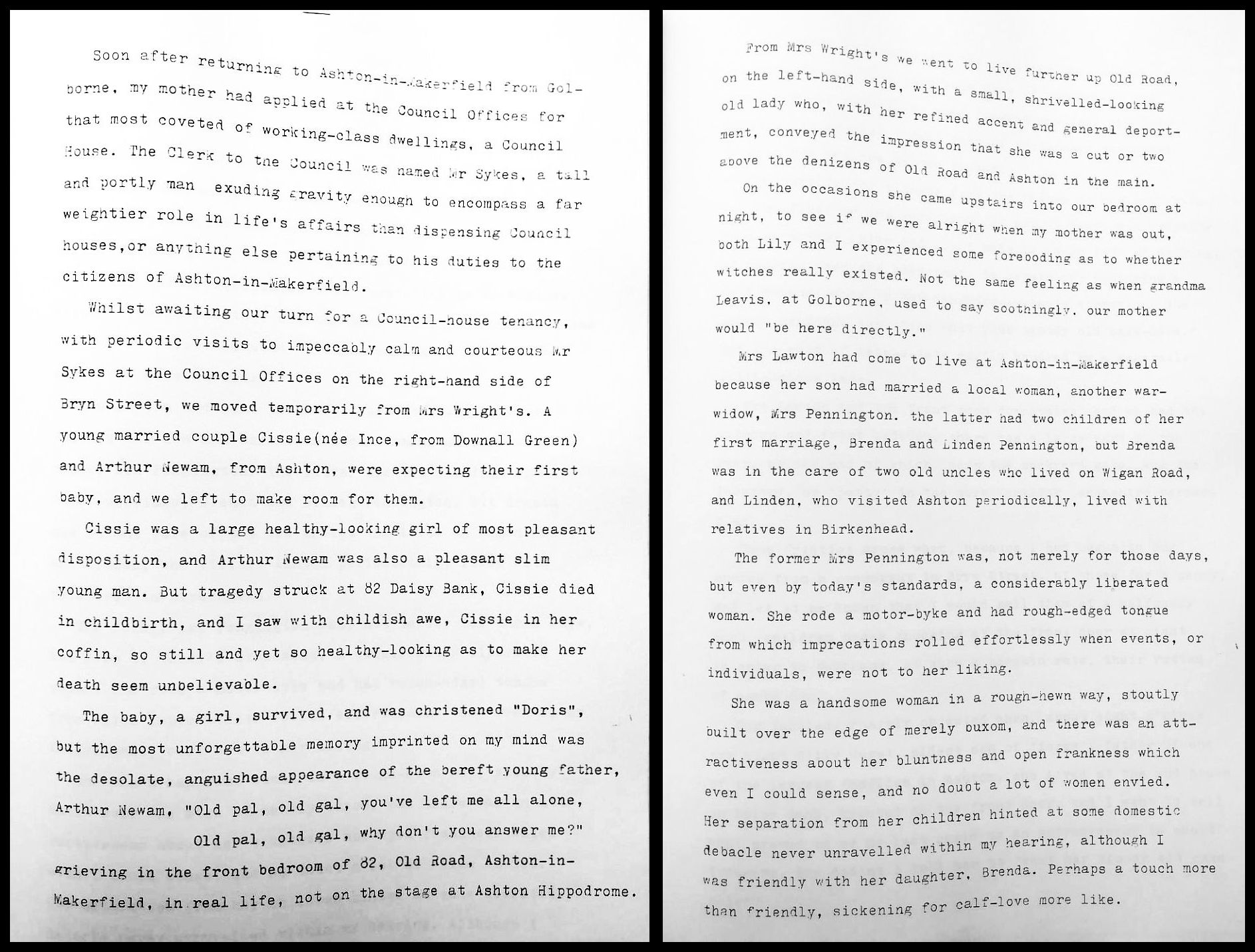
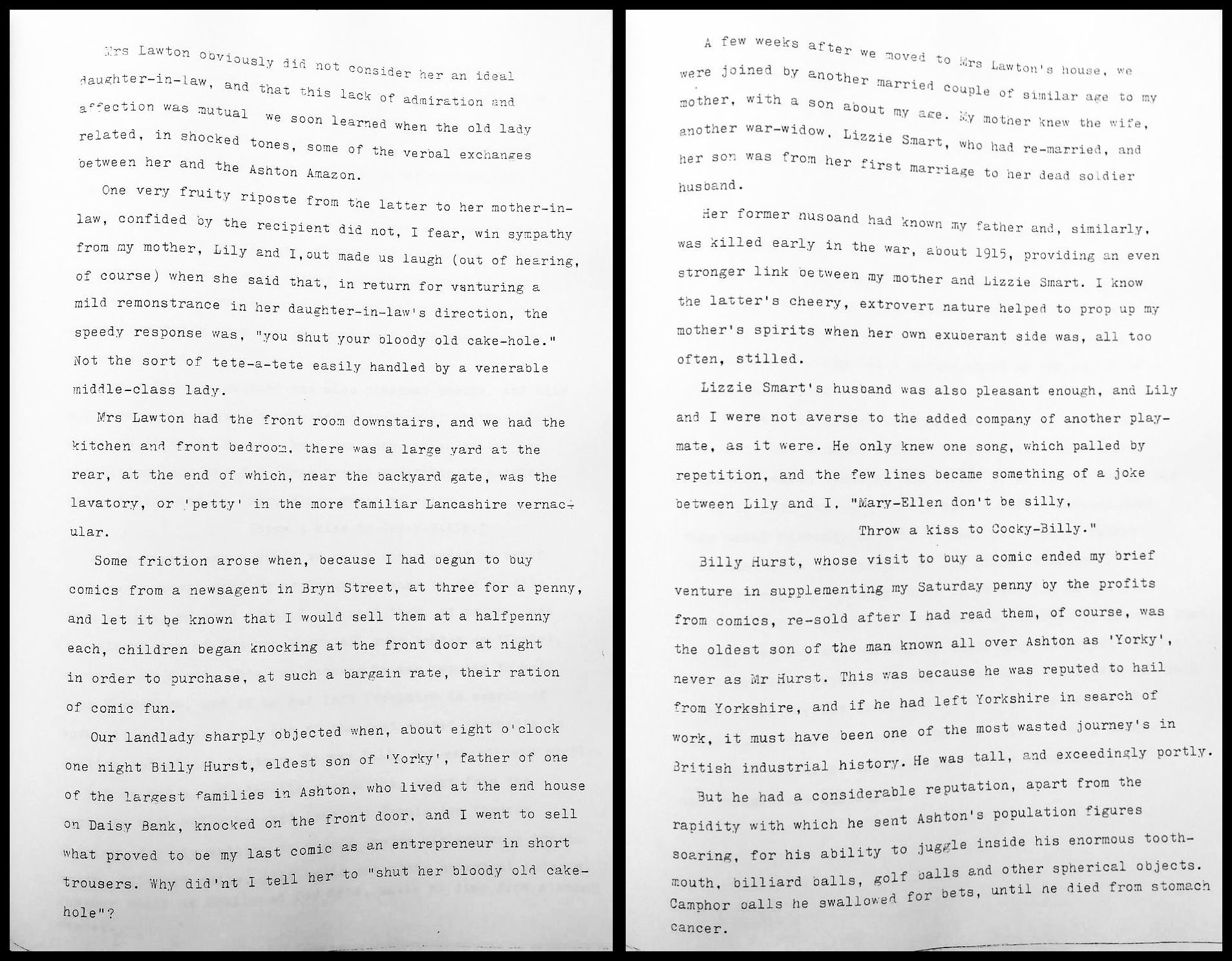
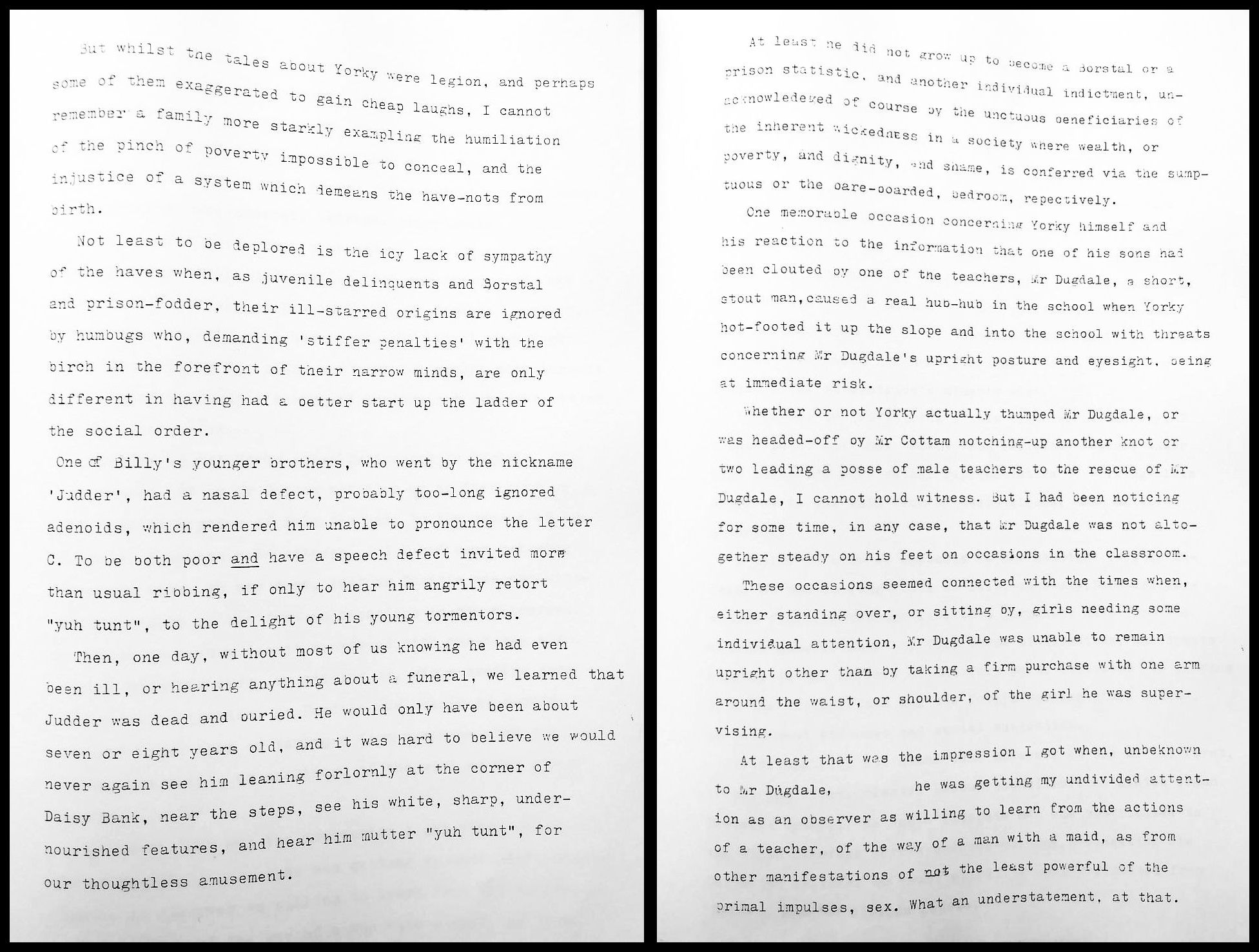

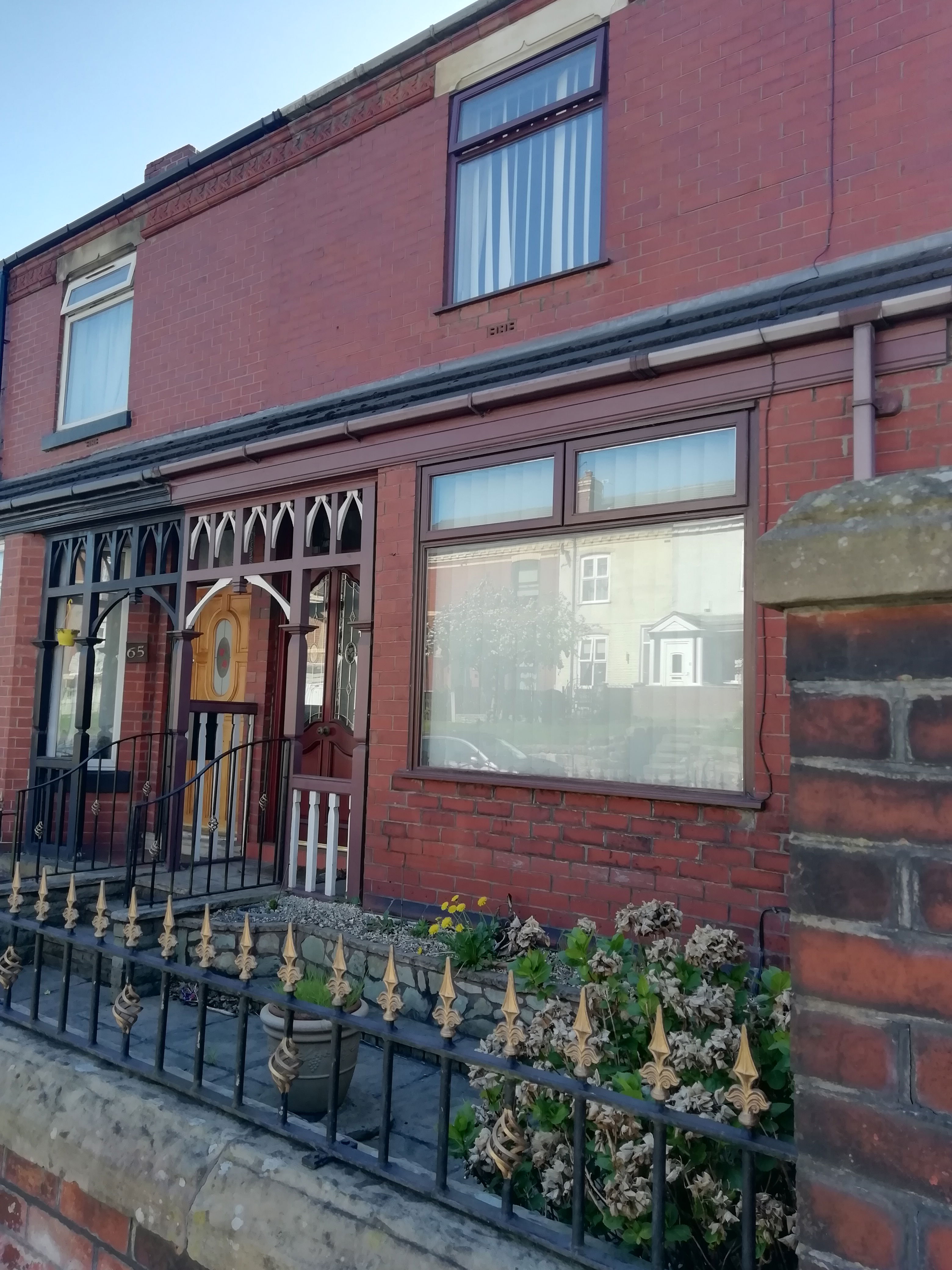
Above: 67 Old Road, Ashton-in-Makerfield, seen here on 17 April 2025.

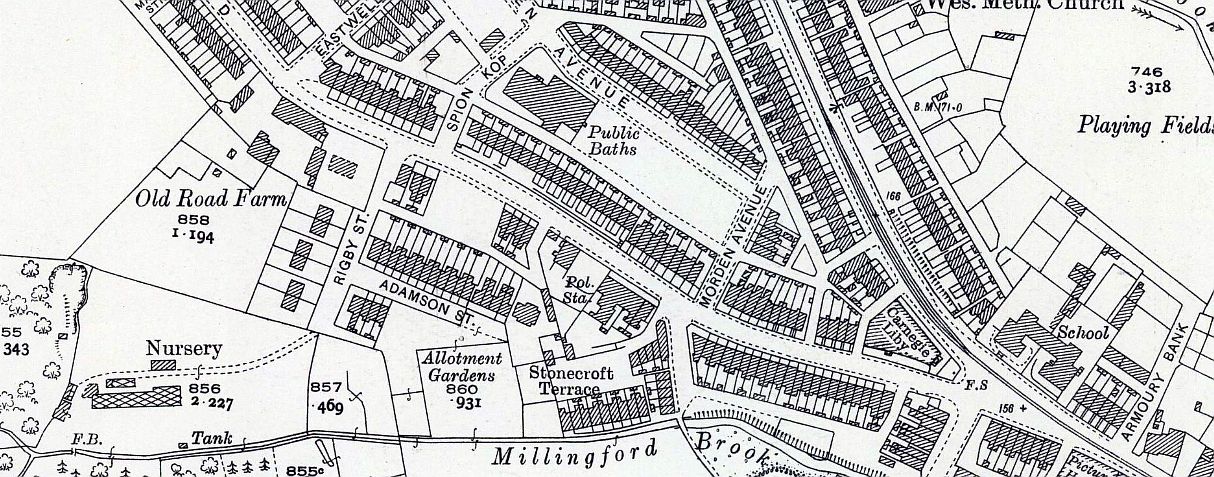
Above: Extract from the 1928 Ordnance Survey map.
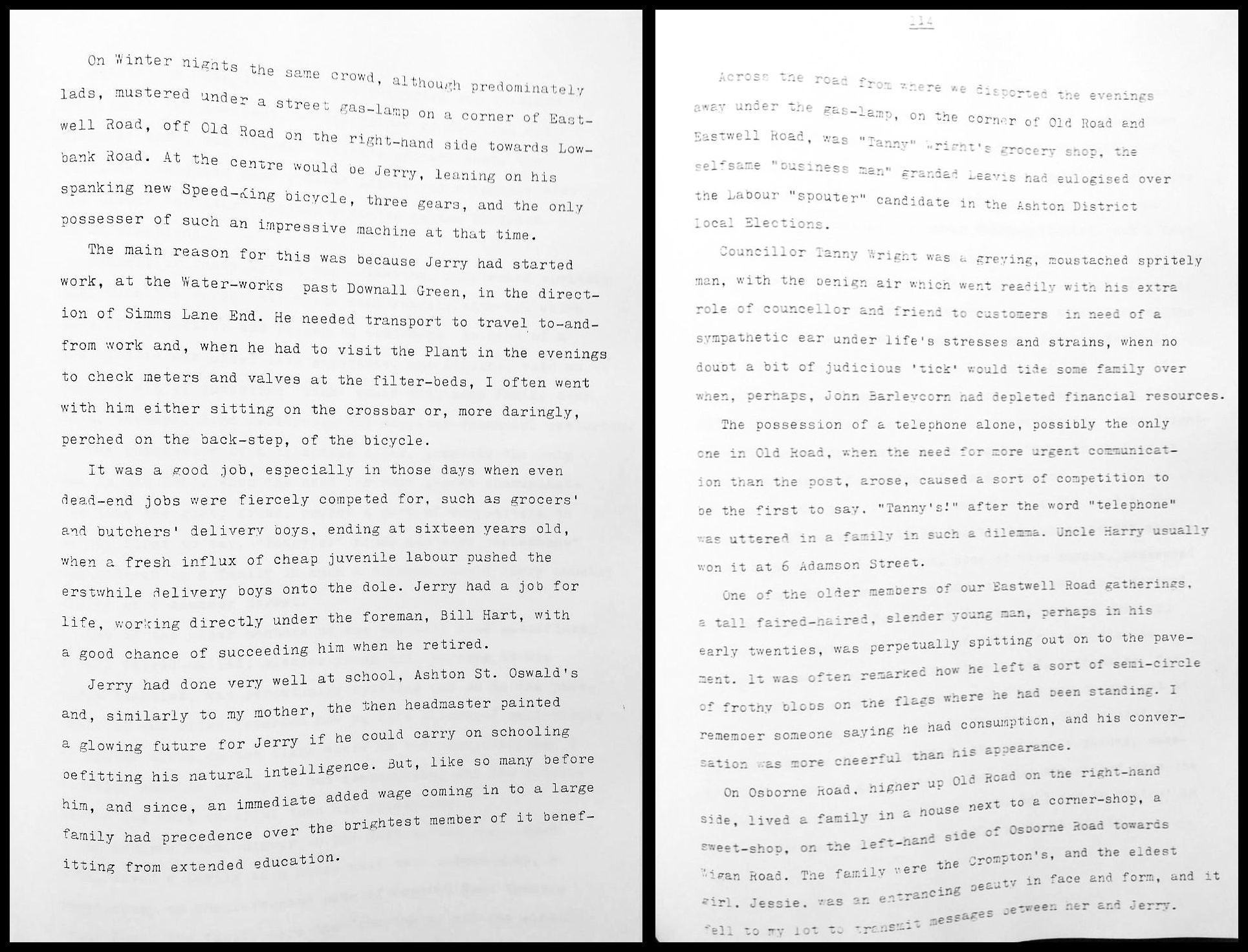
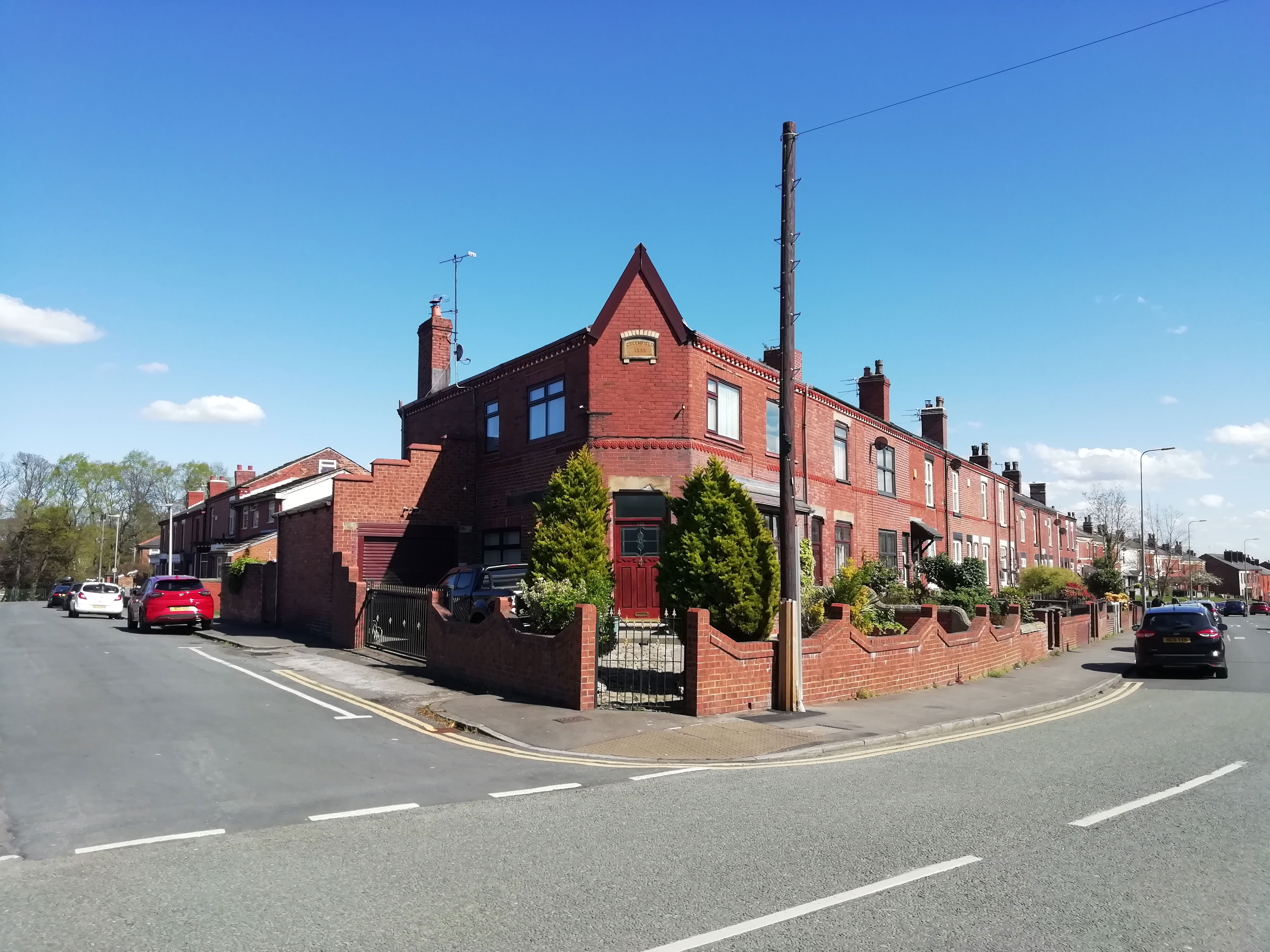
Above: Former Wrights' Grocery Store at 120 Old Road, seen here on 17 April 2025. Nathaniel “Tanny” Wight had retained the North Ward in elections to the Ashton-in-Makerfield District Council in March 1923. He was also, at various times, chairman of the Wigan & District Grocers' and Provision Dealers' Association and secretary to the trustees of Park Lane Chapel.
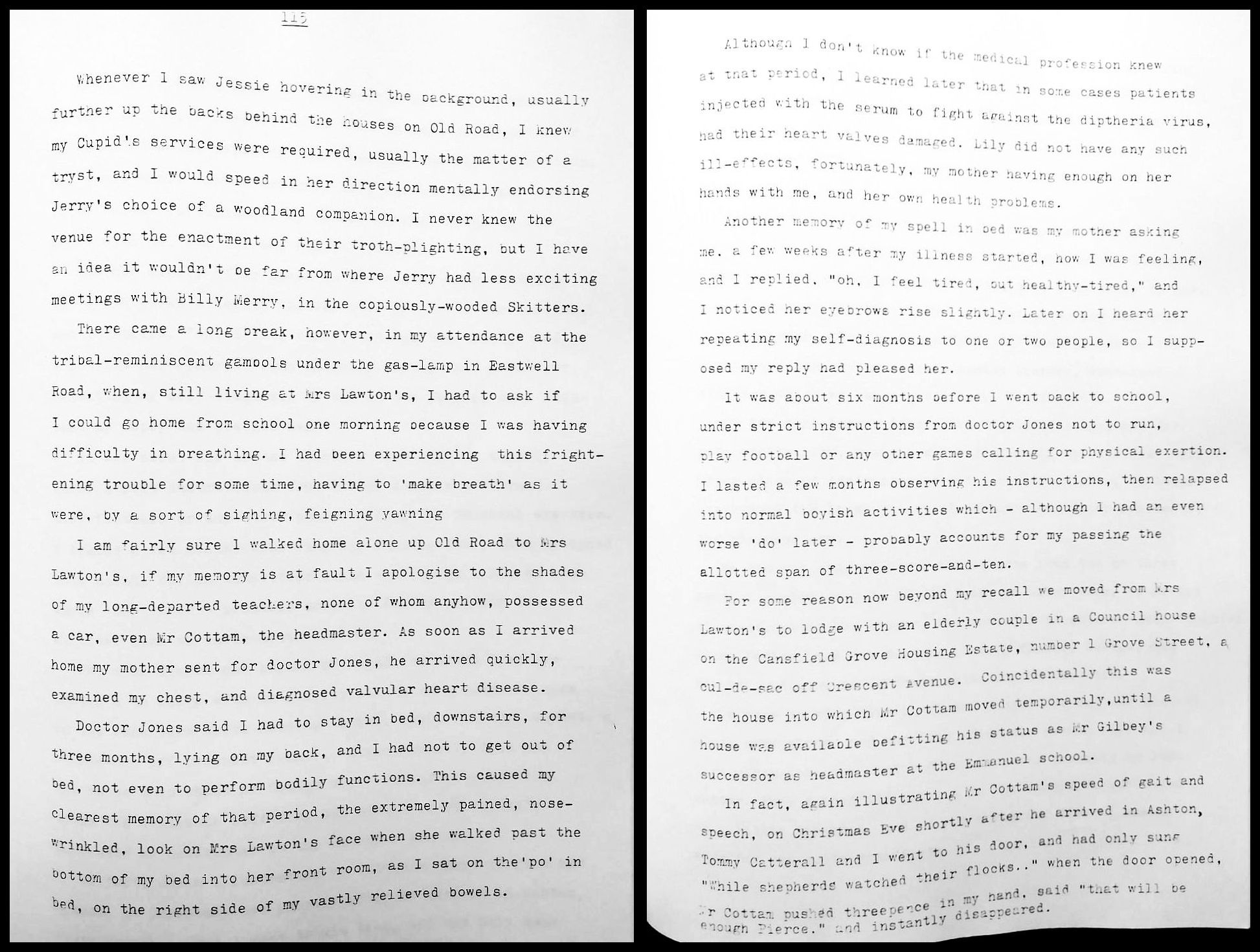

Above: 1 Grove Street, Ashton-in-Makerfield, seen here (right of photograph) on 17 April 2025. The lead architect of the Ashton-in-Makerfield UDC's Cansfield Grove Scheme was George Topham Forrest (1872-1945), a Scotsman whose career coincided with a dramatic increase in the construction of public housing between the First and Second World Wars. The style reflects his preference for plain neo-Georgian architecture, with (originally) square-paned sash windows, unadorned brick facades and plain front doors with basic canopies above. The contractor was local builder John Watson (1879-1939).
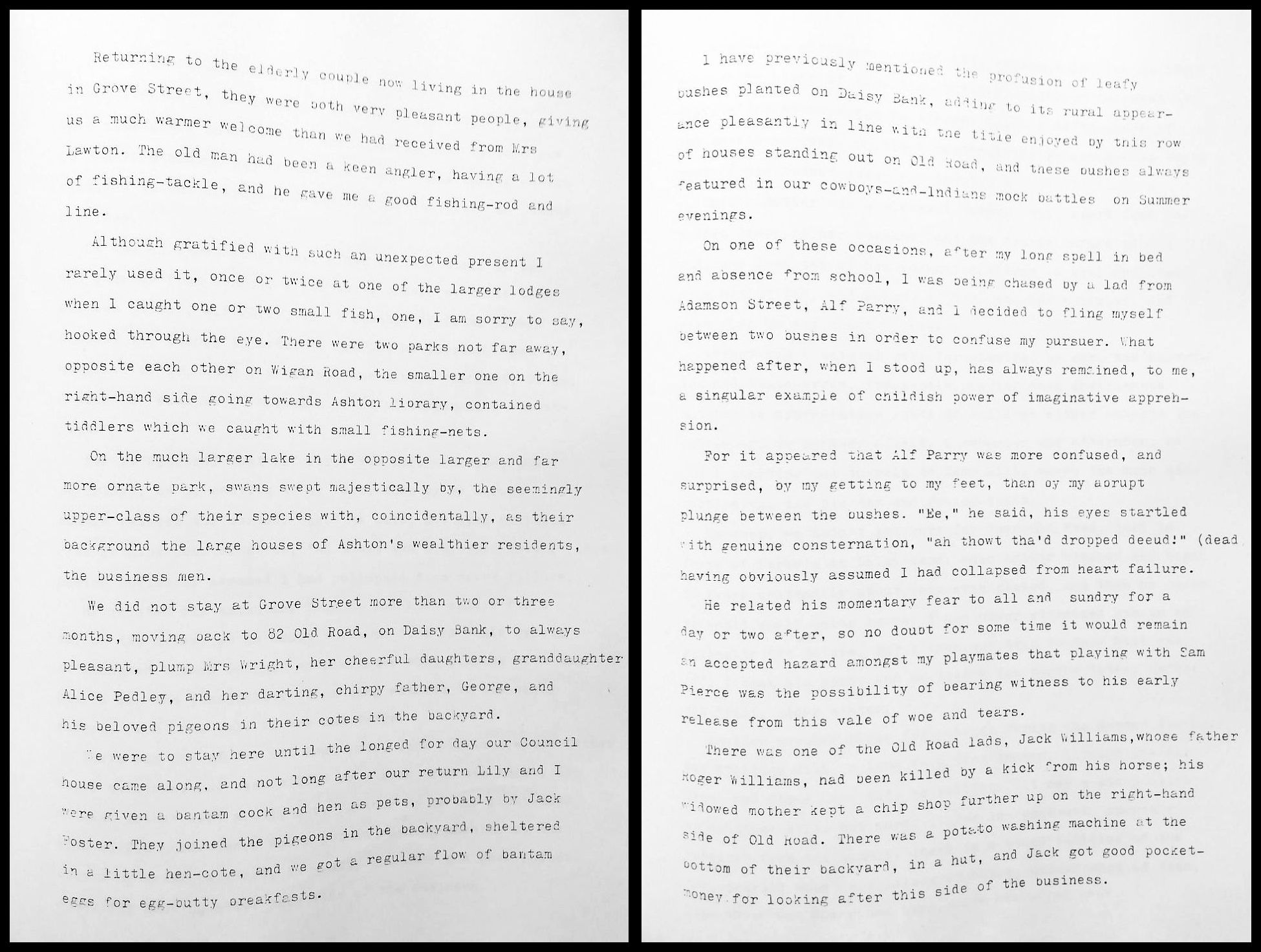
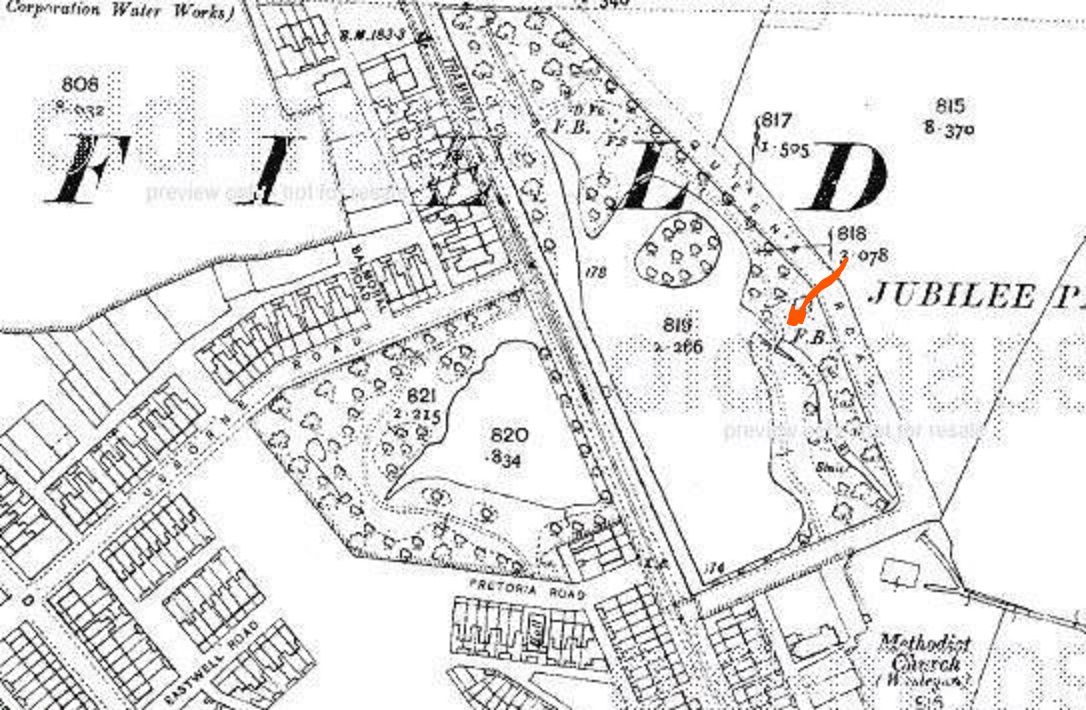
Above: Extract from the 1908 OS map showing the two sections of Jubilee Park straddling Wigan Road at Ashton-in-Makerfield. The gift of William Cansfield Gerard (1851-1902), 14th baronet and 2nd Baron Gerard of Bryn, the parks were opened formally on 24 July 1897. Each park had originally featured an artificial lake but almost from the outset there were complaints from residents about the unpleasant smell and other issues. Eventually both were filled in; that on the west side in 1928 and the larger east-side lake in the late 1950s.
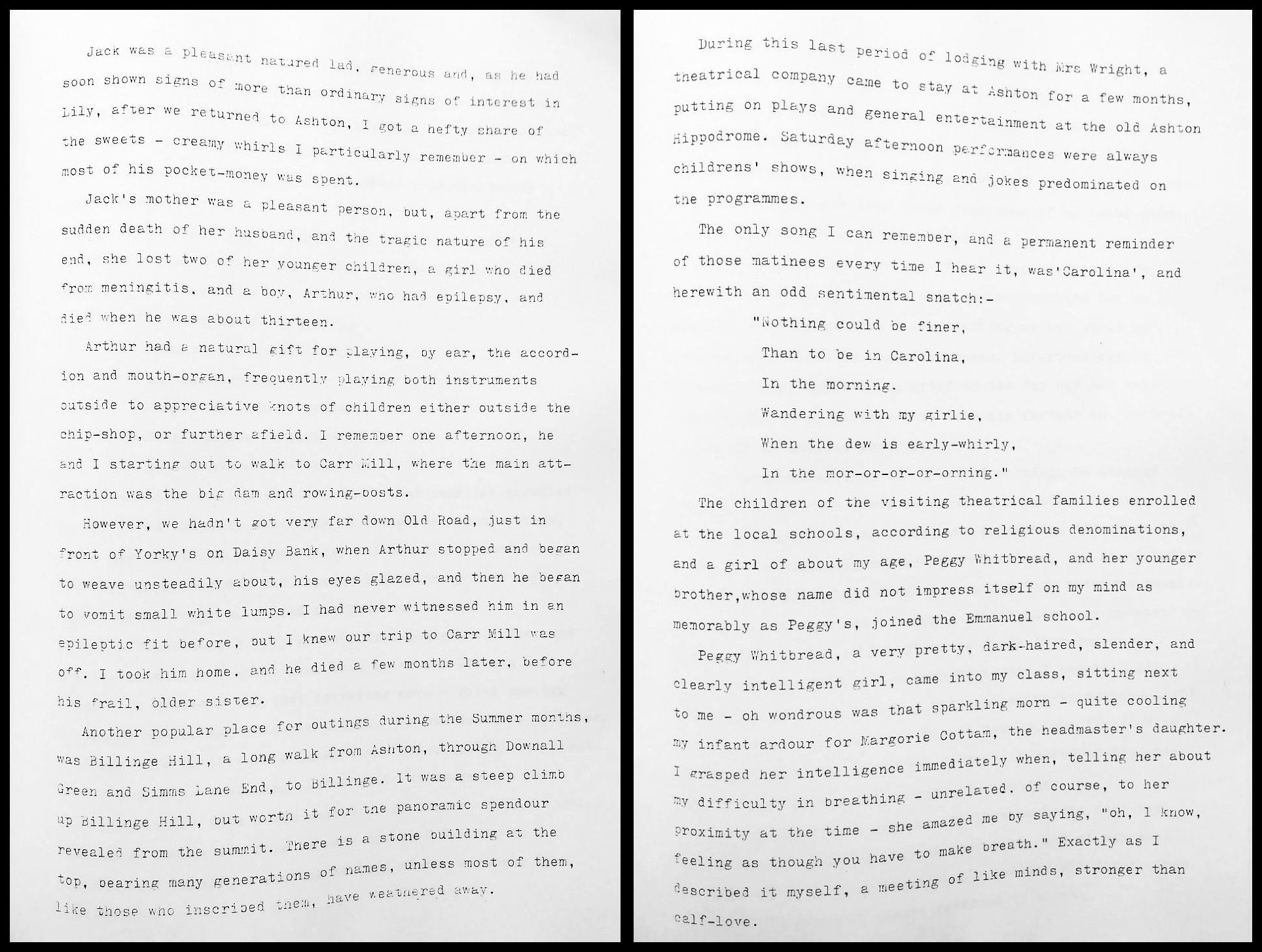

Above: Ashton Hippodrome advertisement, from The Wigan Examiner, 6 January 1917.
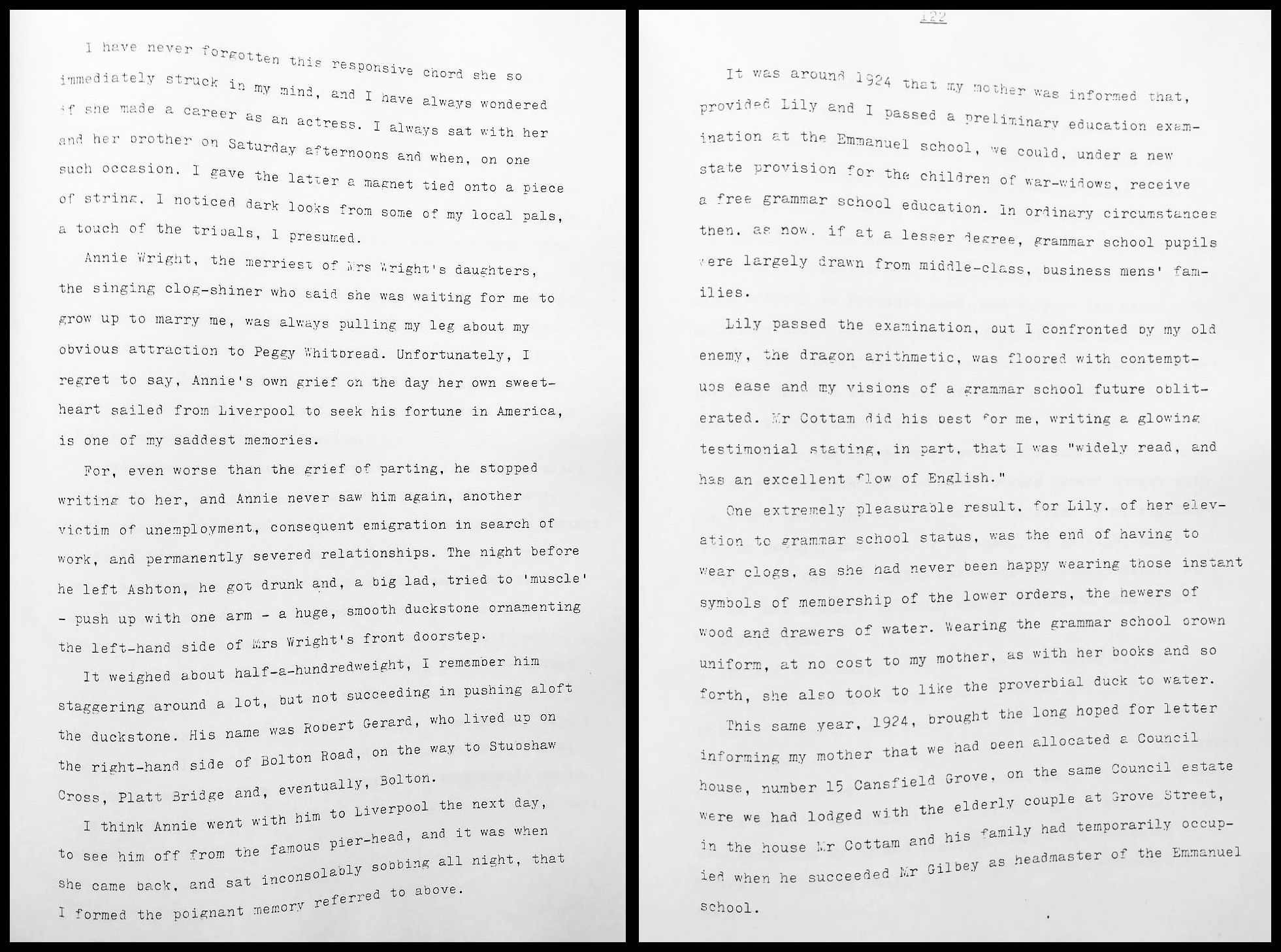
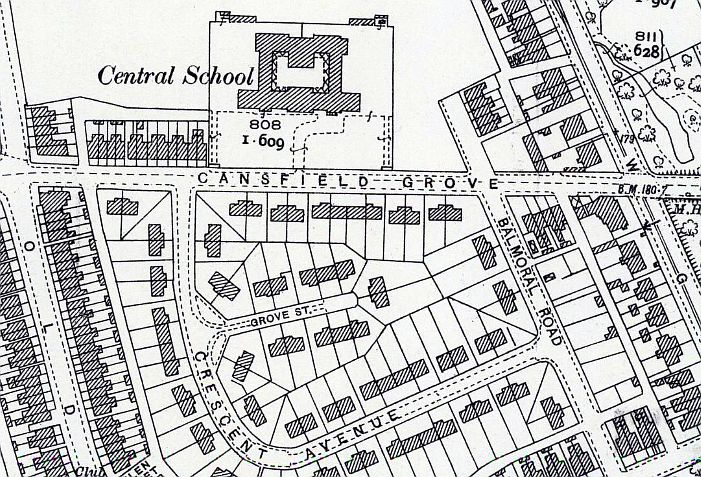
Above: Extract from the 1926 OS map, published in 1928. Most of the Cansfield Grove Scheme houses had already been allocated by the time of final inspection and approval in October 2022 and the remaining allocations, which up to that point had been the responsibility of the Council's Housing Committee, were left to be decided by the town clerk and surveyor.

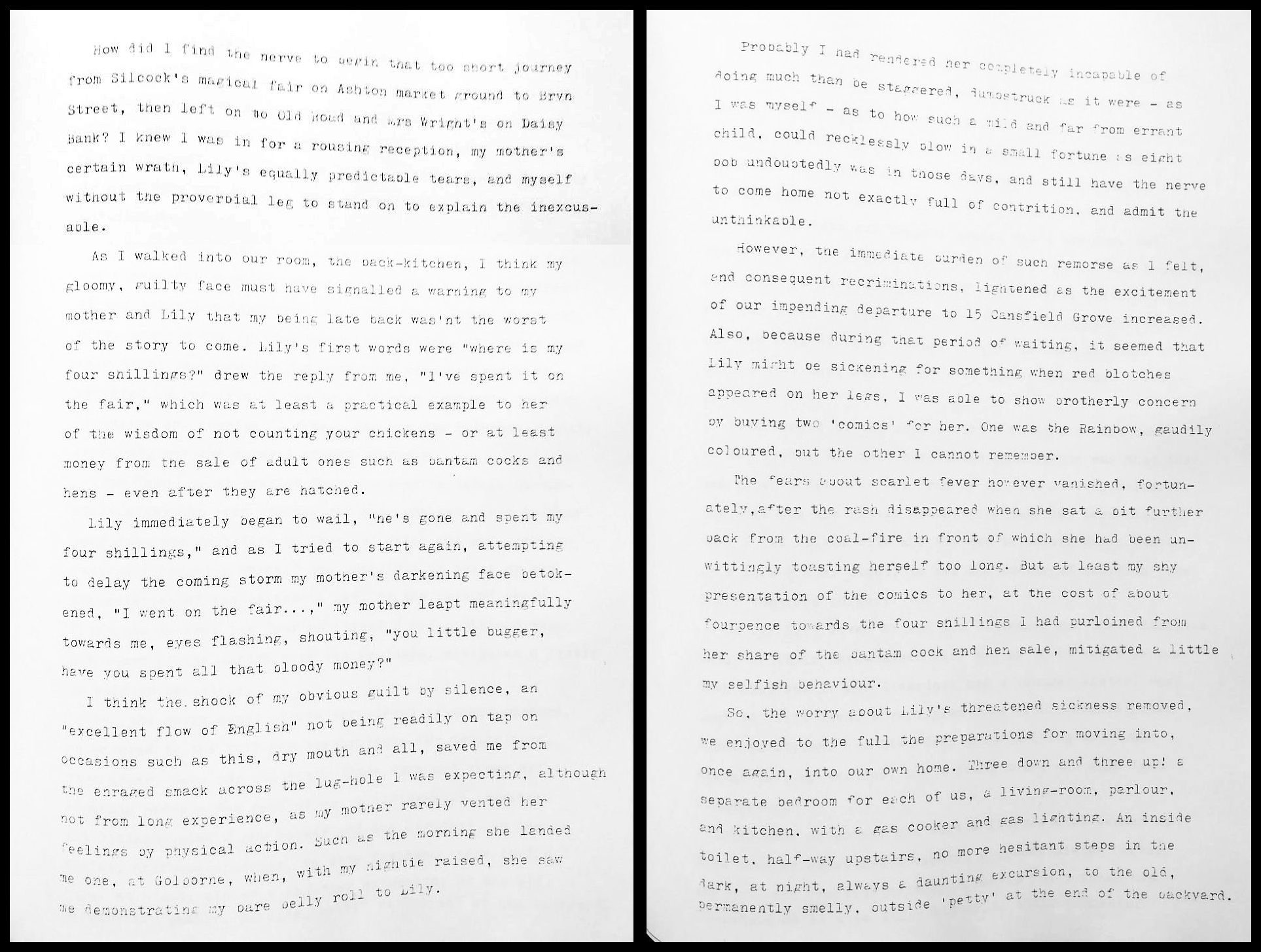
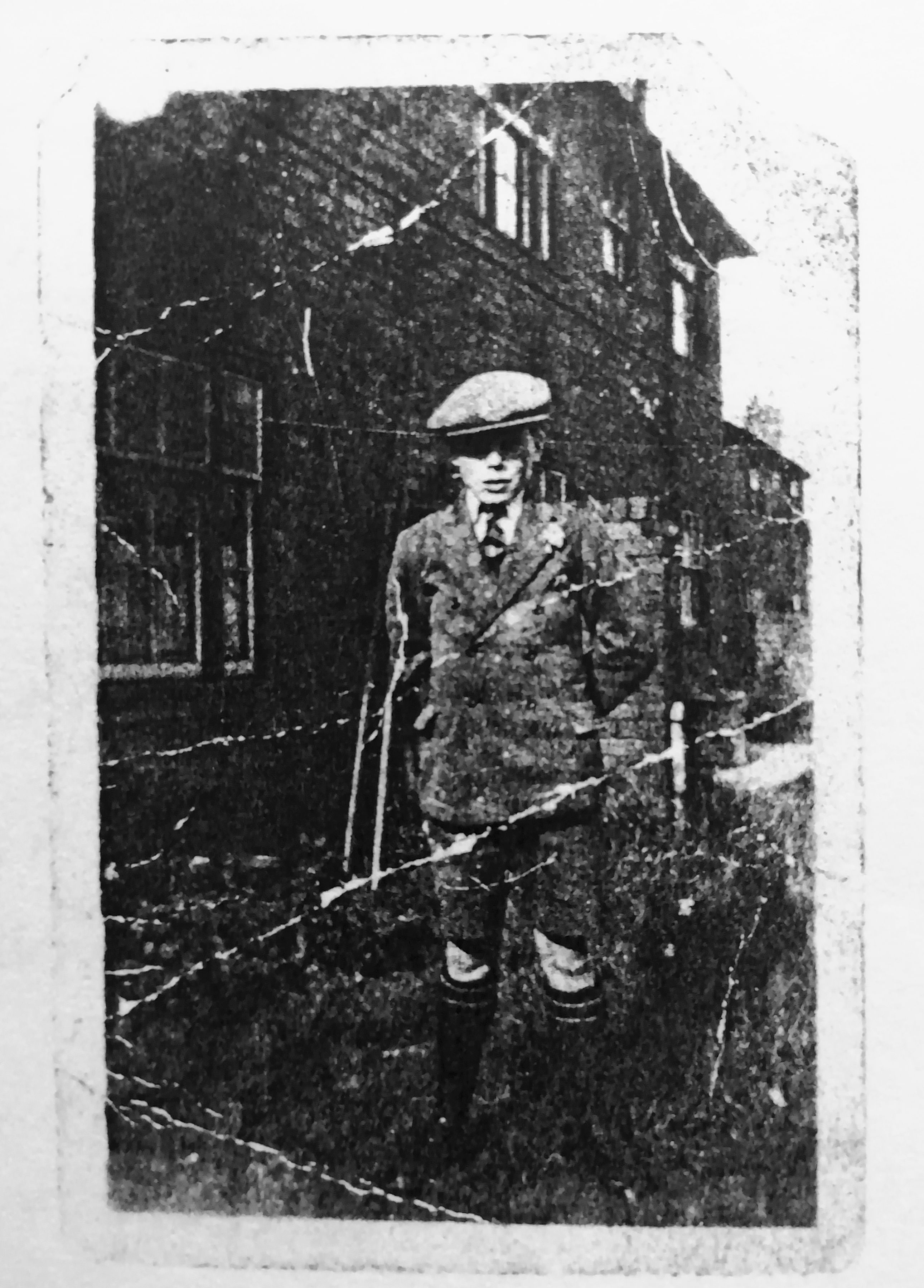
Above: “Self [Sam Pierce] – about 12 years old – 1925. 15 Cansfield Grove, Ashton-in-Makerfield.”

Above: 15 Cansfield Grove a century after Sam Pierce was photographed in the rear garden. Taken on 17 April 2025.
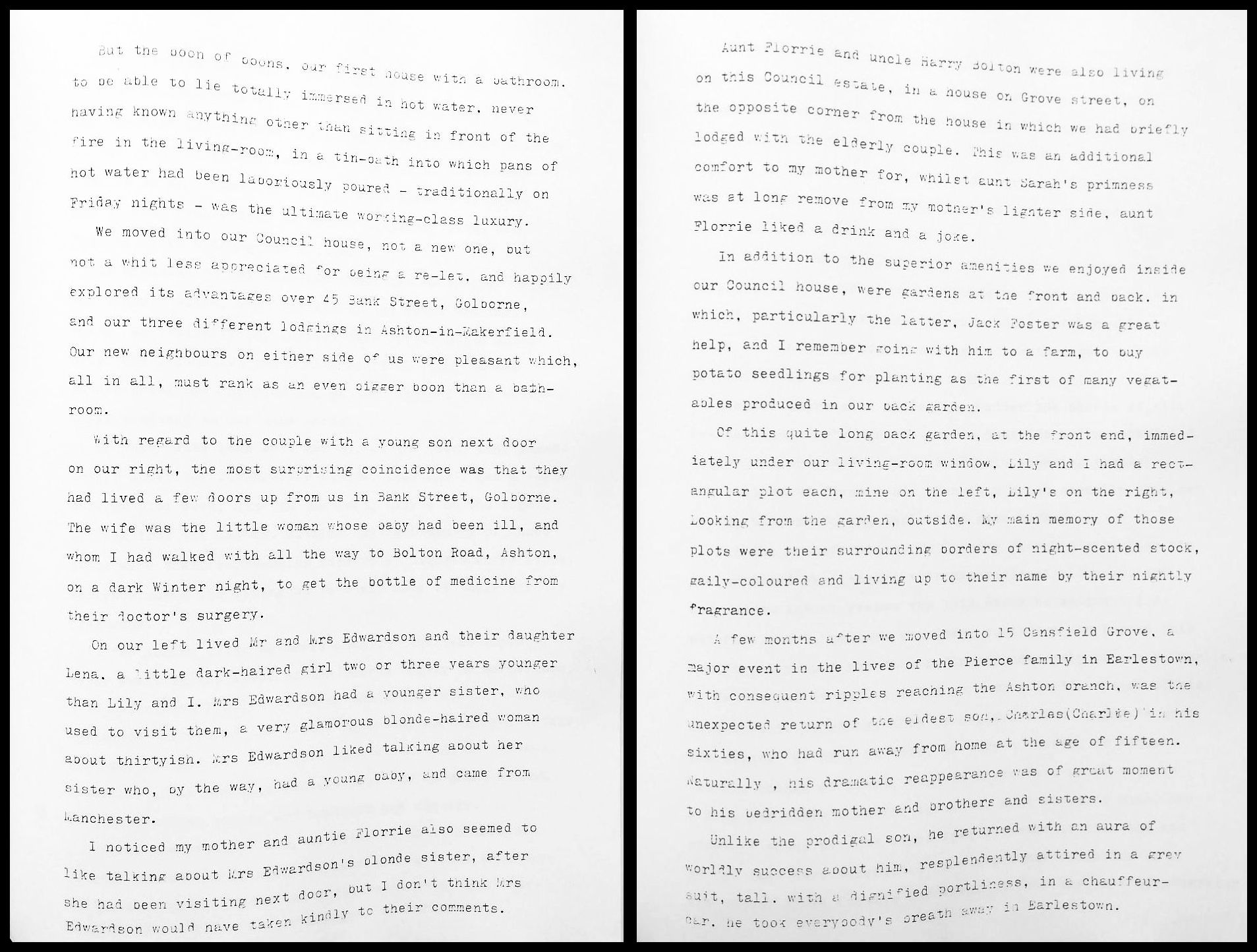


Above: Construction of what was originally called Ashton Central School was prompted by the Education Act of 1918, which had raised the minimum school leaving age from 12 to 14. Local builder John Watson was selected as contractor but the design of the original buildings seen here was by the Lancashire County Architect, Henry Littler. The school was opened by Stephen Walsh MP and admitted its first pupils on Monday 19 October 1925. Image from The Wigan Examiner, 10 October 1925.
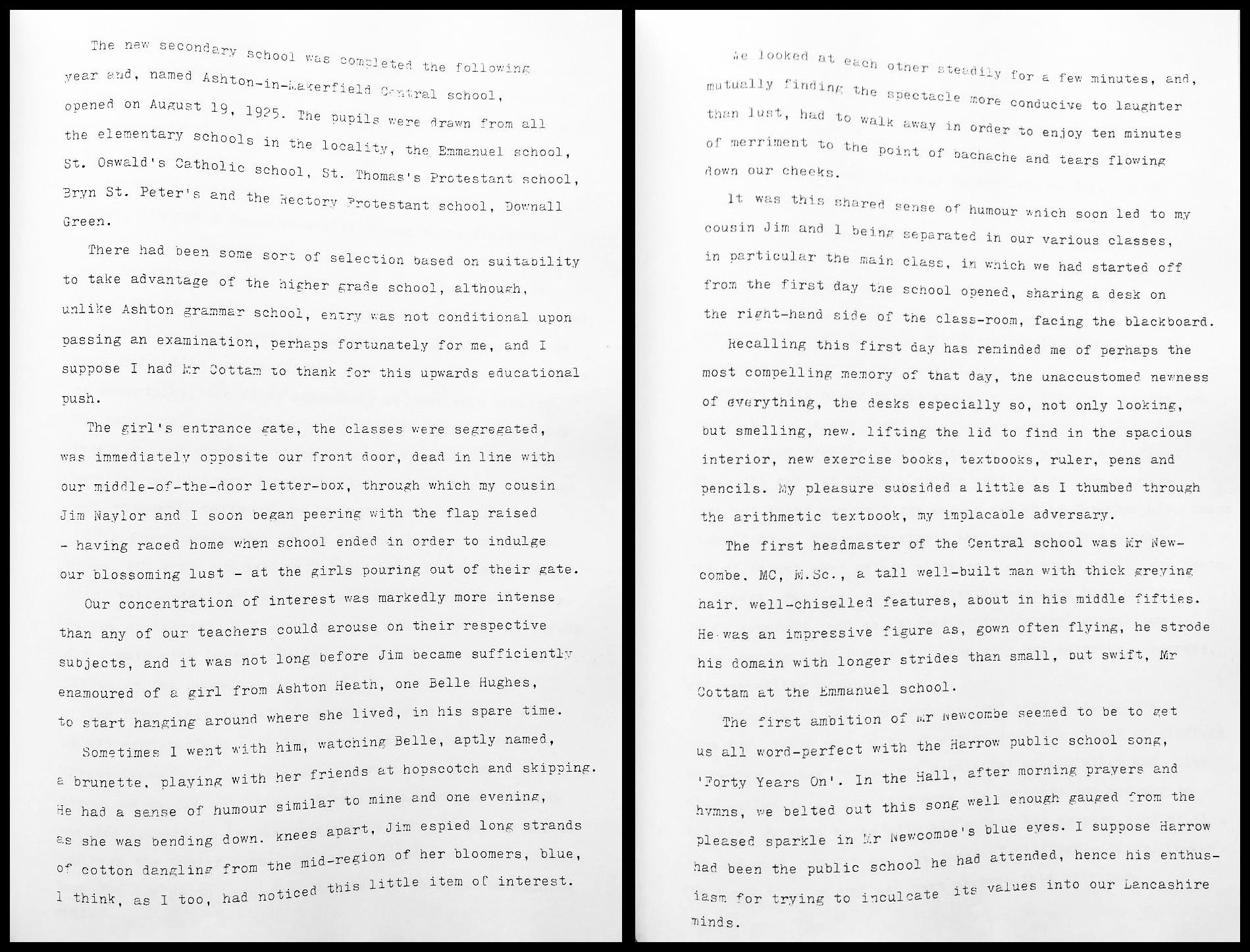
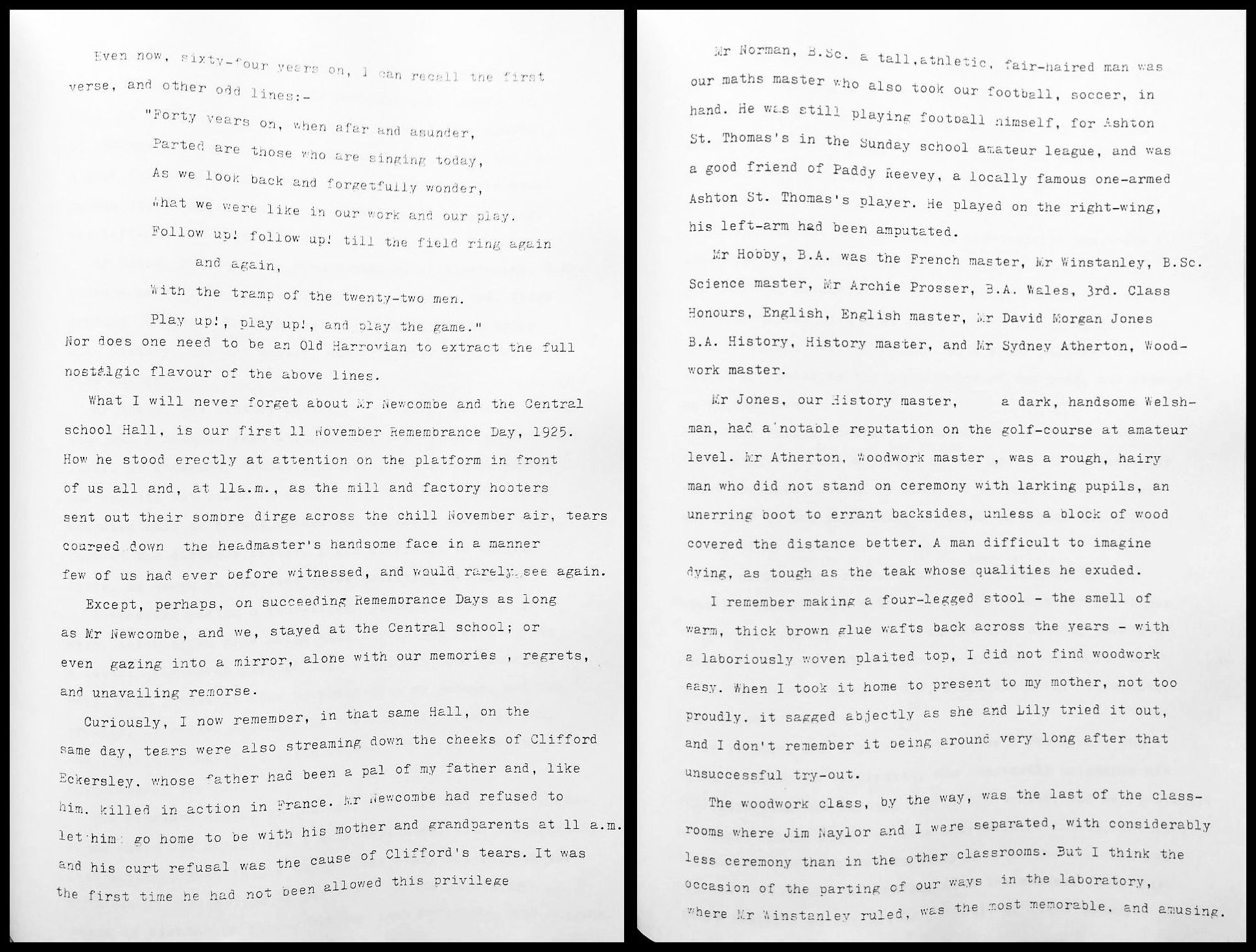
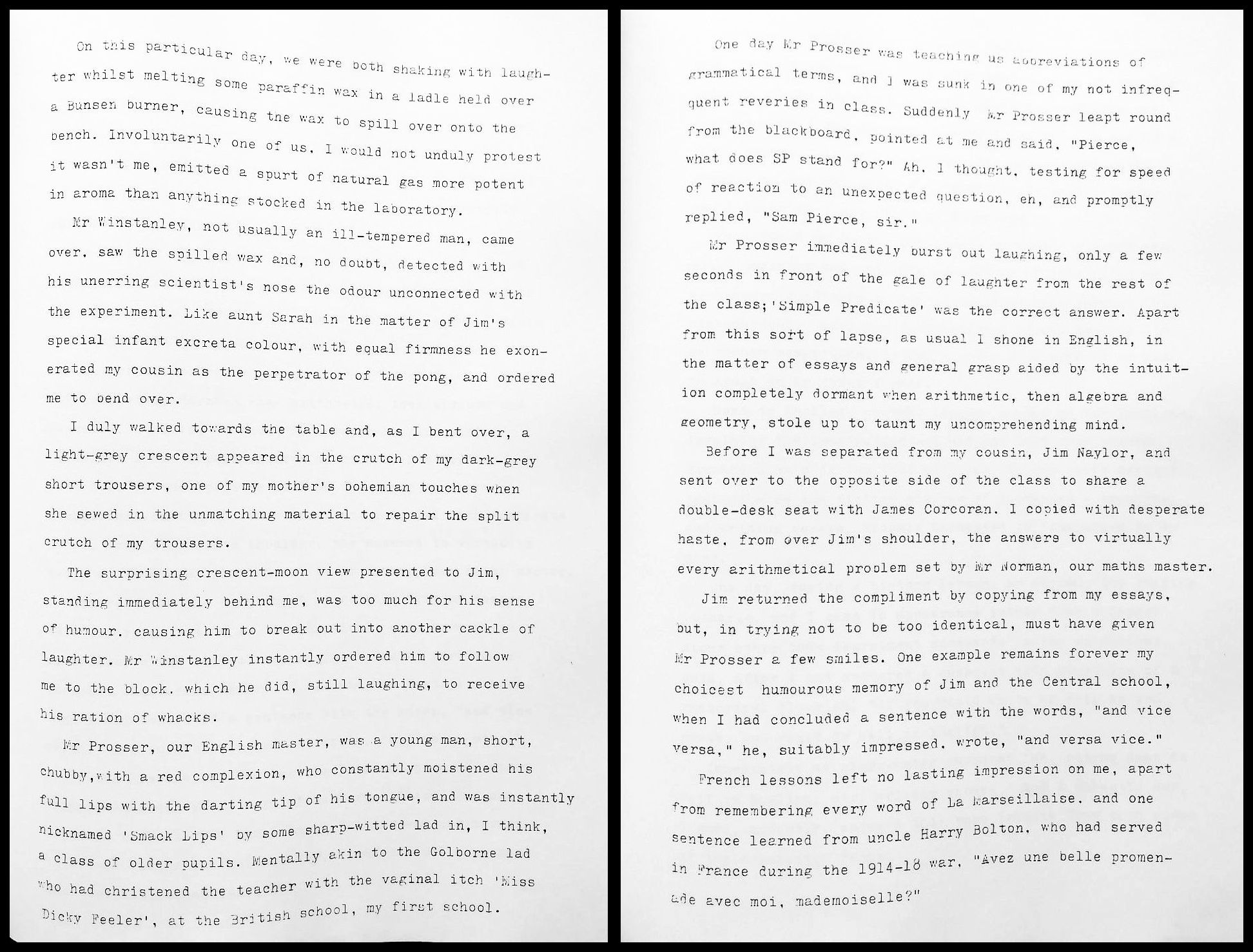
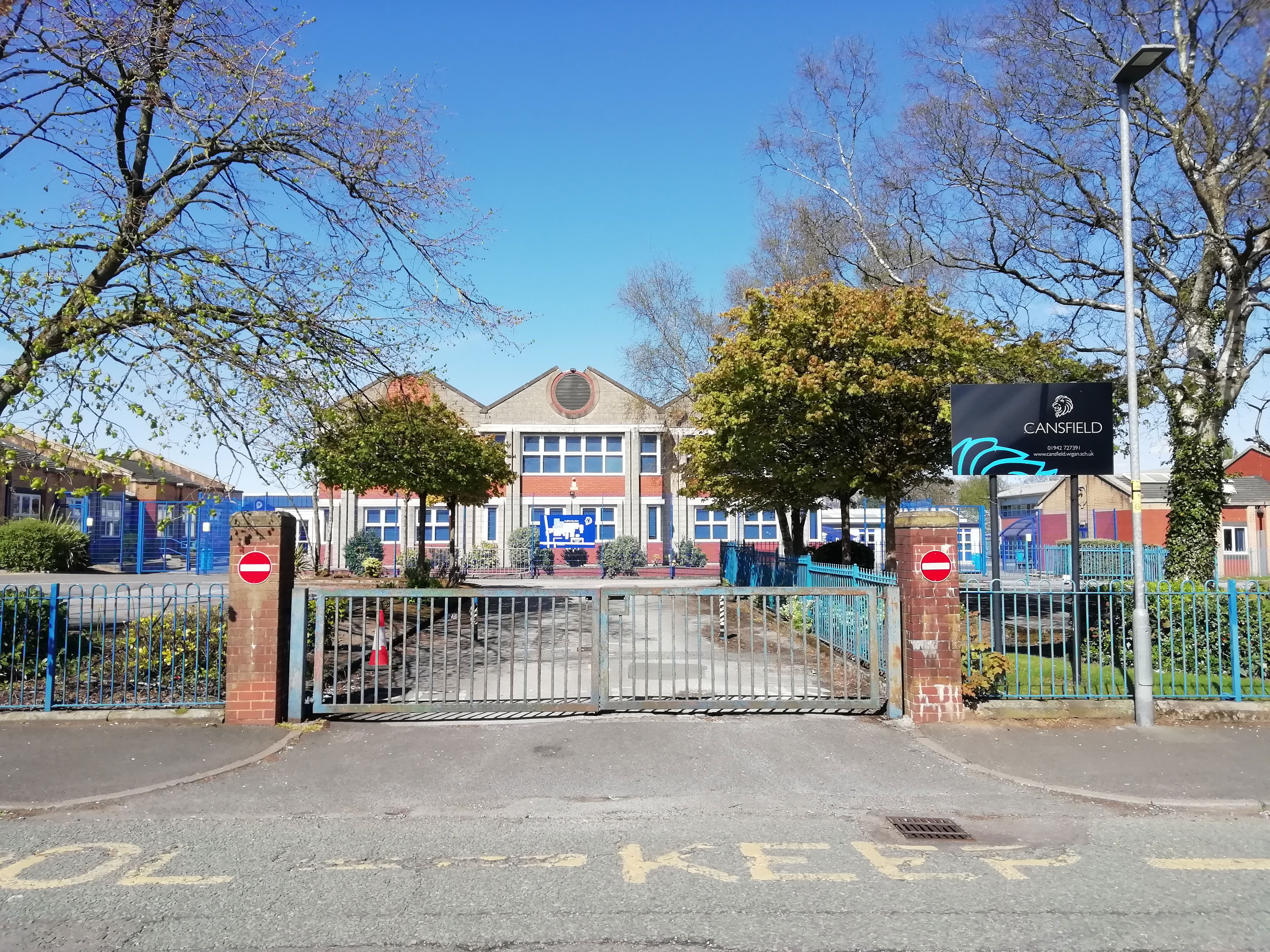
Above: A modern view of the former Ashton Central – now Cansfield – School on 17 April 2025.
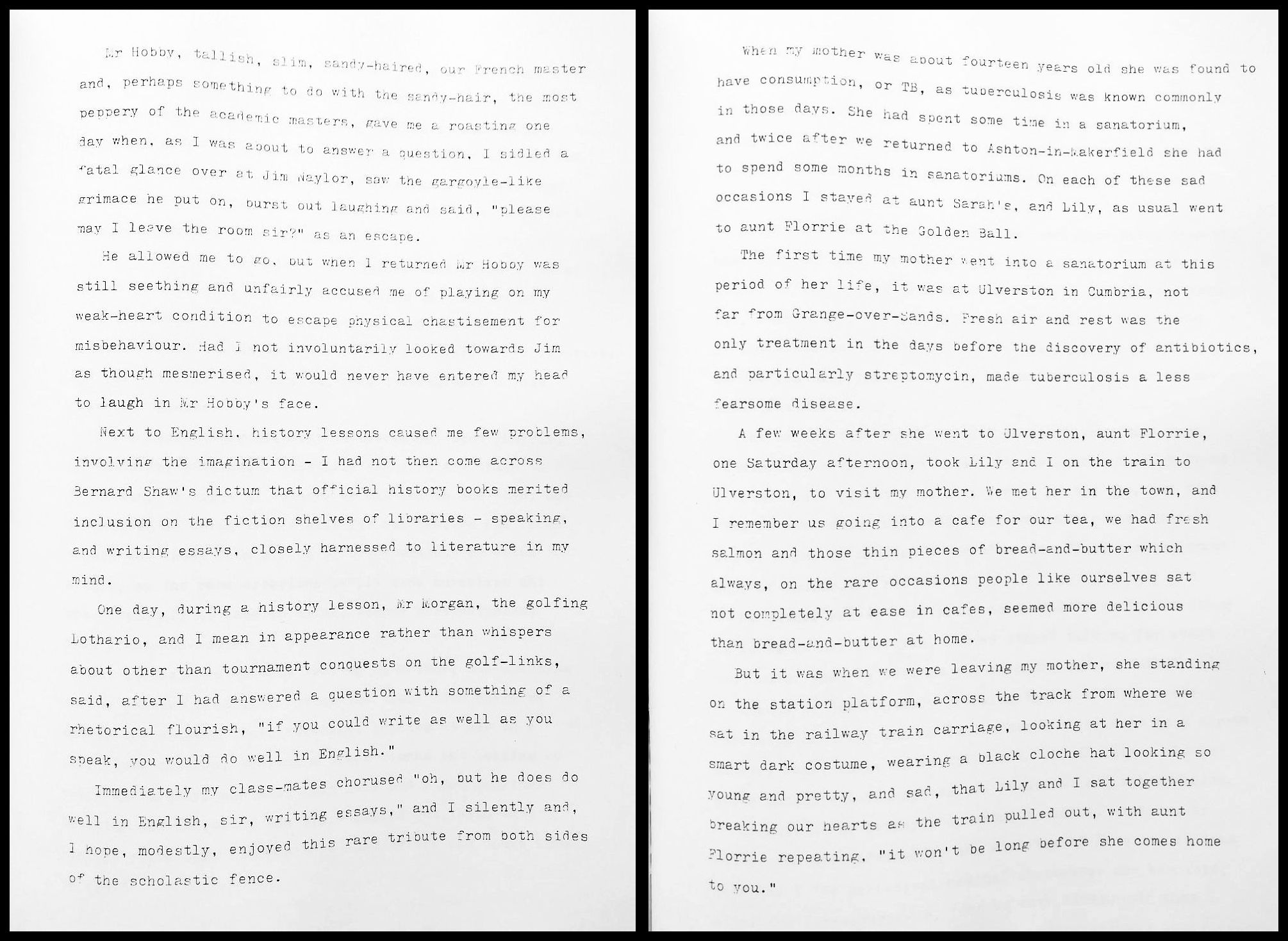


Above: Designed by Owen & Ward for Mr J Worswick. The Grand Hipprodome at Wigan opened on 7 March 1904. Methodist services were also held on the premises until the Queens Hall Mission was completed on nearby Market Street. Badly damaged by fire in 1956, the building was eventually demolished in 1959. Image from WiganWorld via wiganbuildings.co.uk.
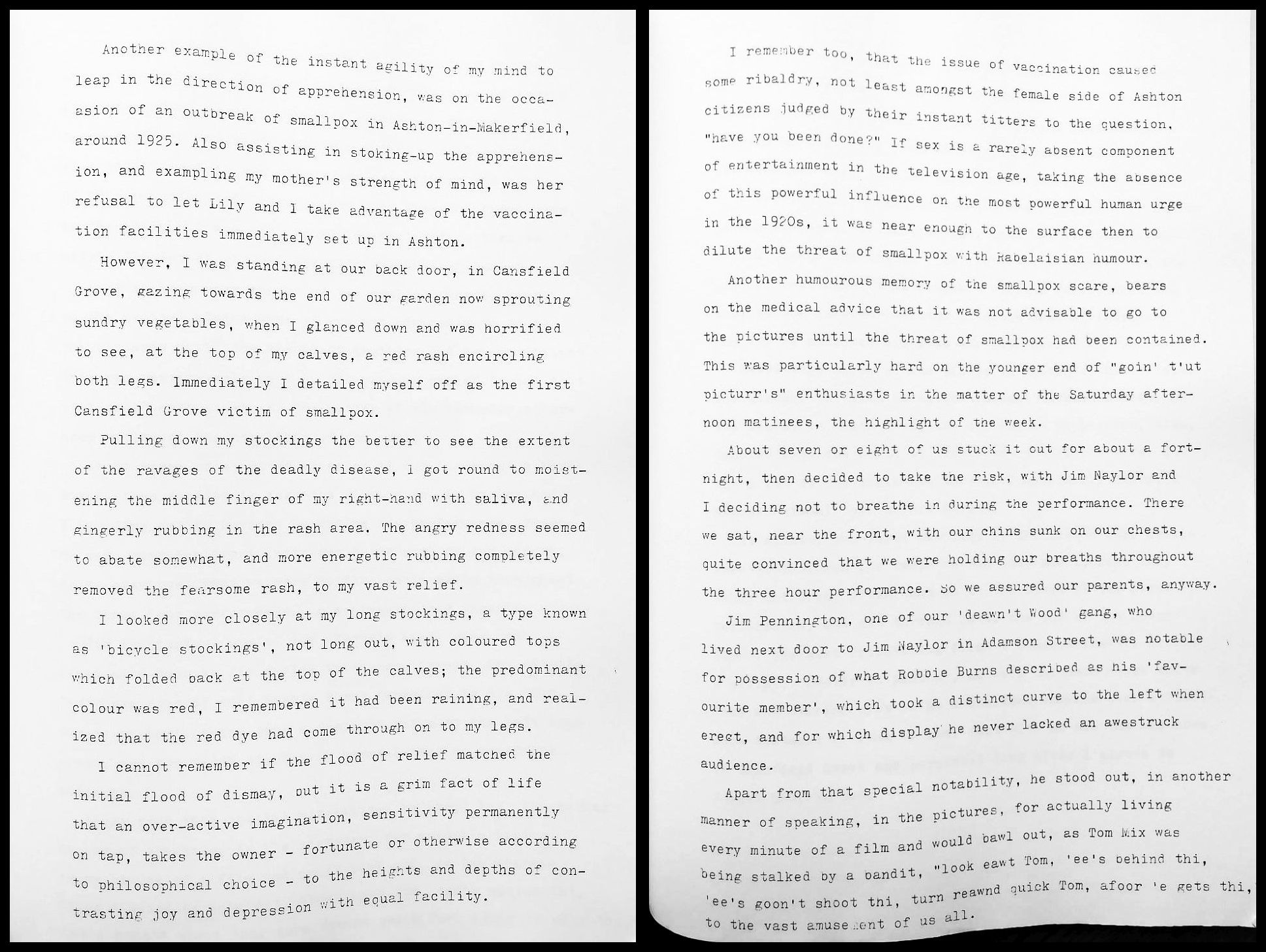

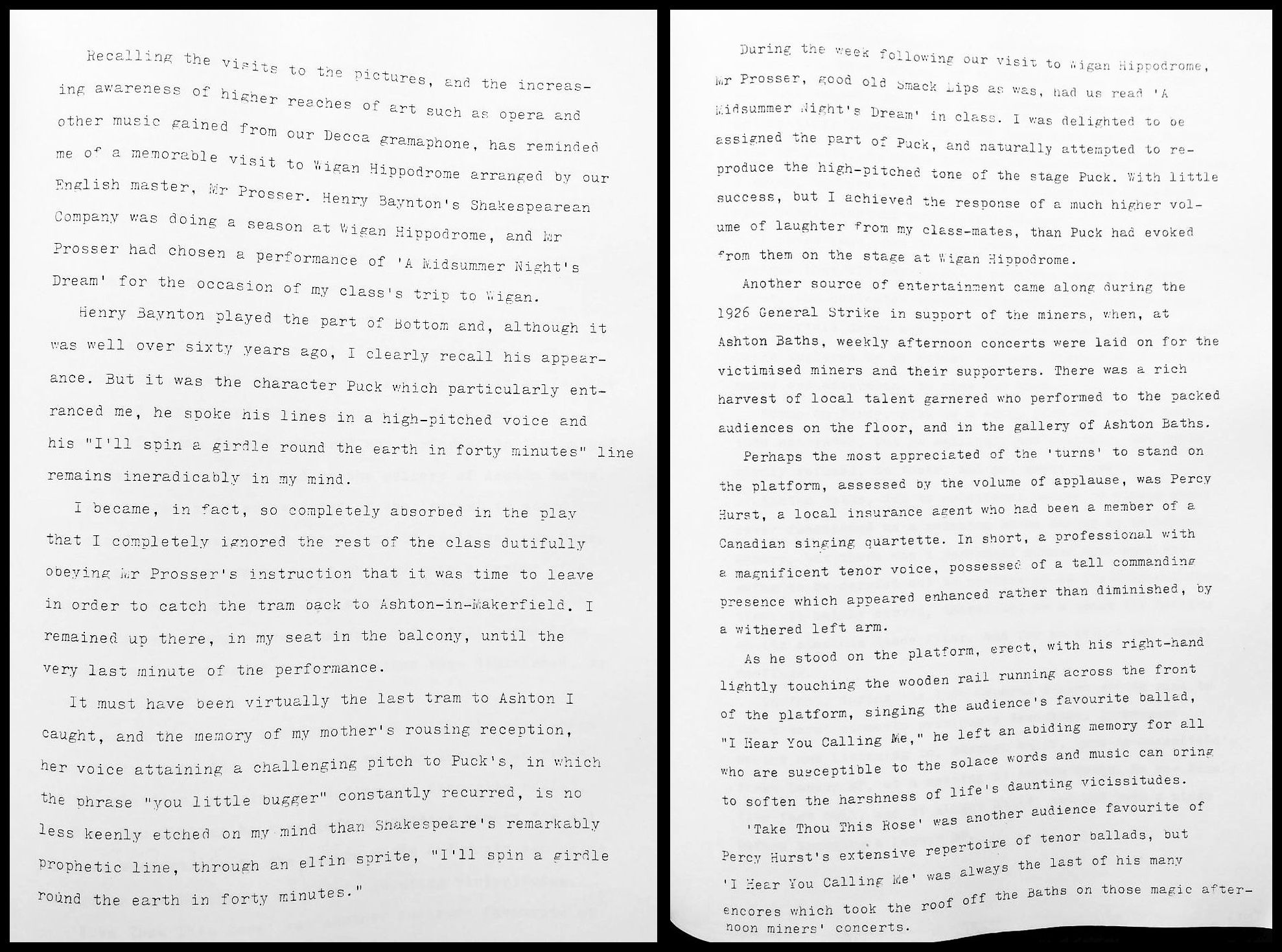
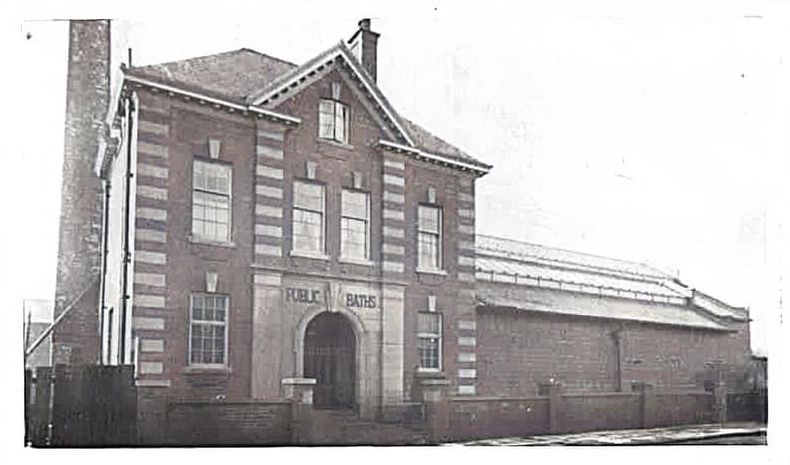
Above: Designed by J C Prestwich of Leigh, the former public baths on Morden Avenue, Ashton-in-Makerfield, were opened in 1910. Water leakage owing to mining-related subsidence meant that the building could not be used for its intended purpose after 1916 but it remained in use for many years afterwards as an entertainment venue, a moveable floor over the plunge pool providing a suitable surface for dancing etc.
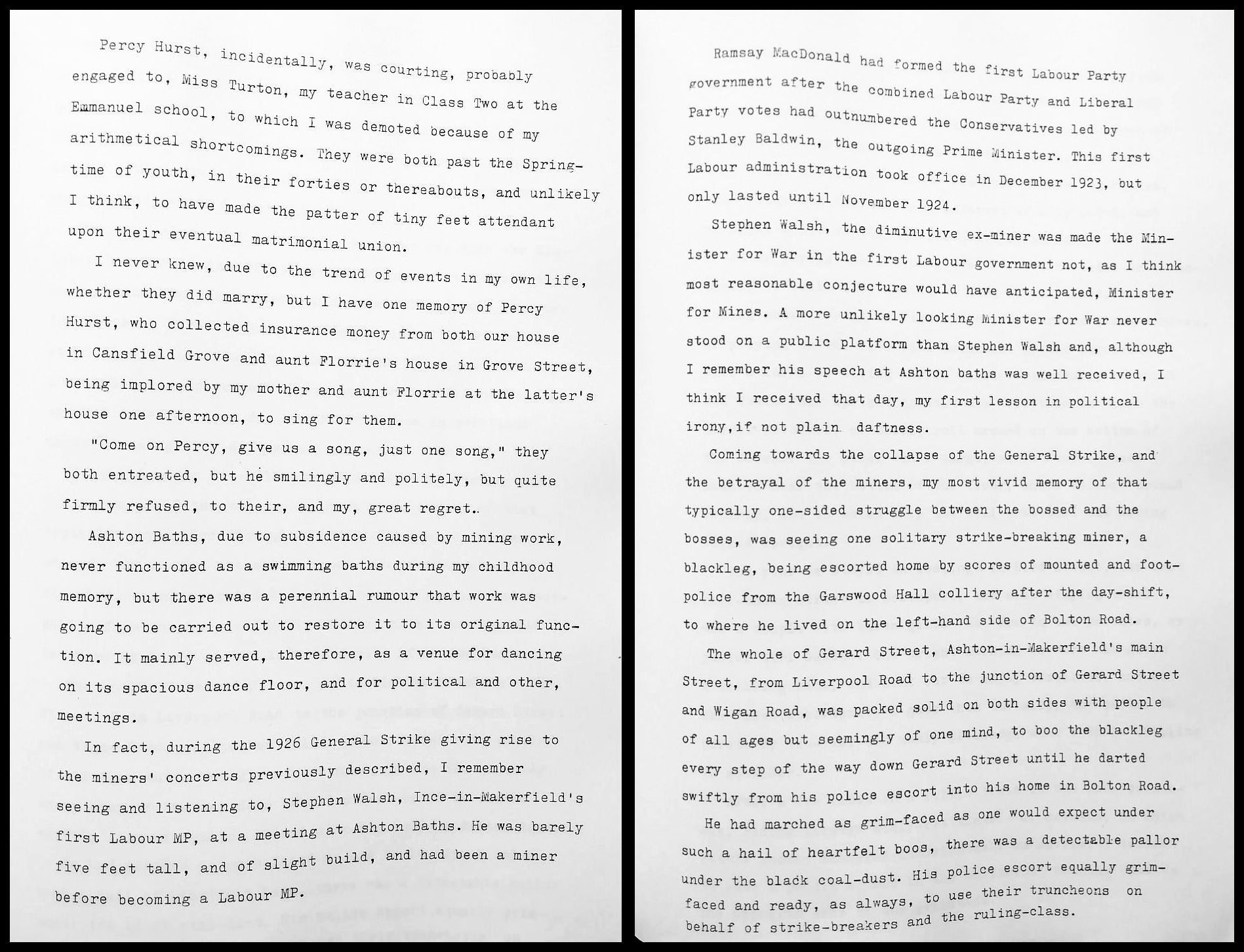
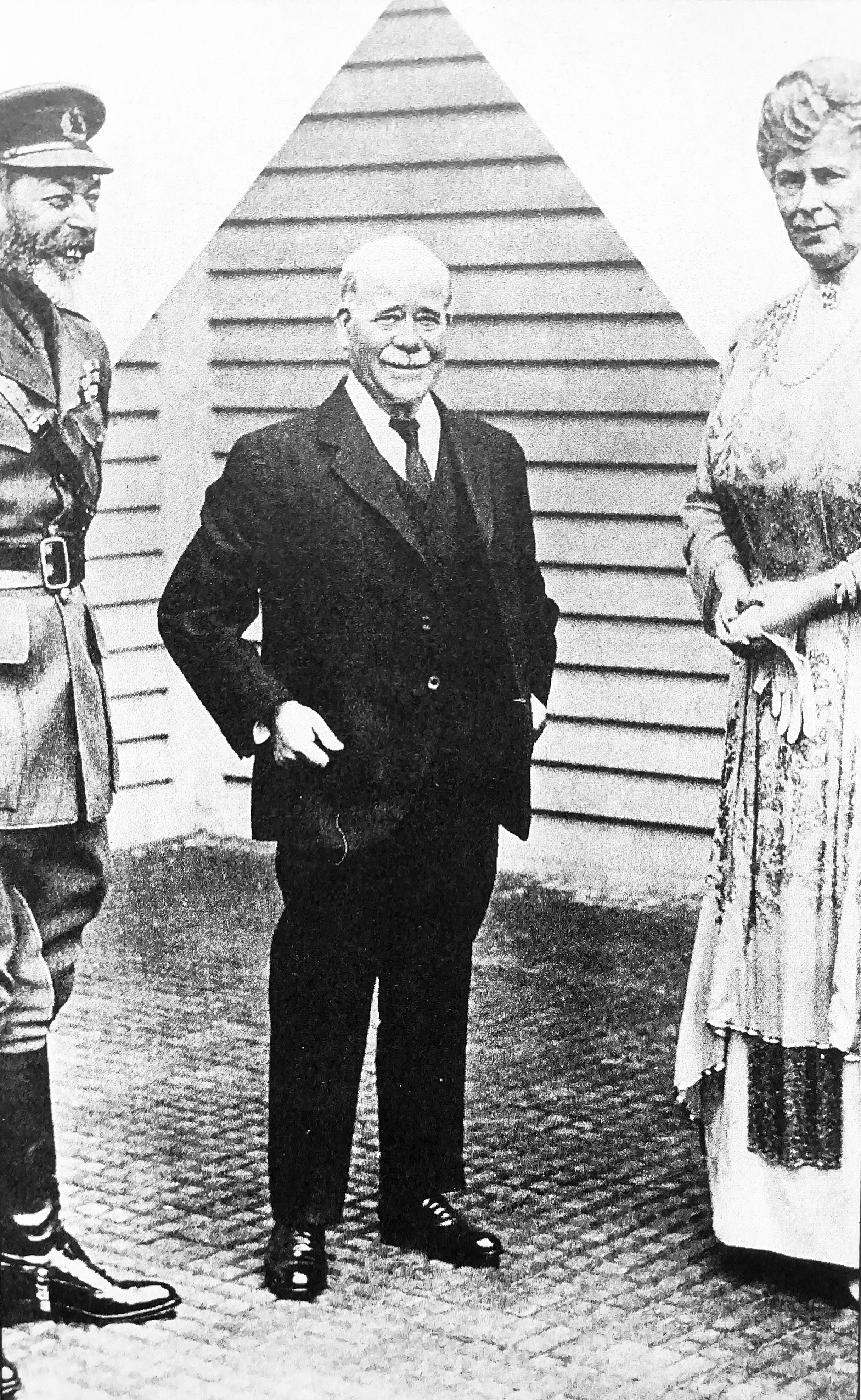
Above: The diminutive Stephen Walsh represented the former Ince Parliamentary constituency from 1906 until his death in 1929, serving as Secretary of State for War and President of the Army Council in the first Labour government. He is seen here at Aldershot with George V and his consort Queen Mary in 1924.

Above: A General Strike occurred in May 1926, when a majority of trade union members stopped work in support of striking miners. The strike was called off by the TUC after nine days, leaving the miners to continue their fight alone. Sam's memory may have failed him in at least one respect, the suggested route from the Garswood Hall pits to Bolton Road being an unnecessarily circuitous one in the circumstances. More reliable, perhaps, is the testimony given by W Whittle (then of Harold Avenue, Ashton-in-Makerfield) on the 50th anniversary of the Strike: “I remember one man whose name I have forgotten who was a blackleg at Stone's Colliery. Every day the police had to fetch him home. People shouted at him and his wife was ignored by other women. But there was no violence....” (from a tape recording made by local historian James Fairhurst, transcript at Wigan Local Studies).
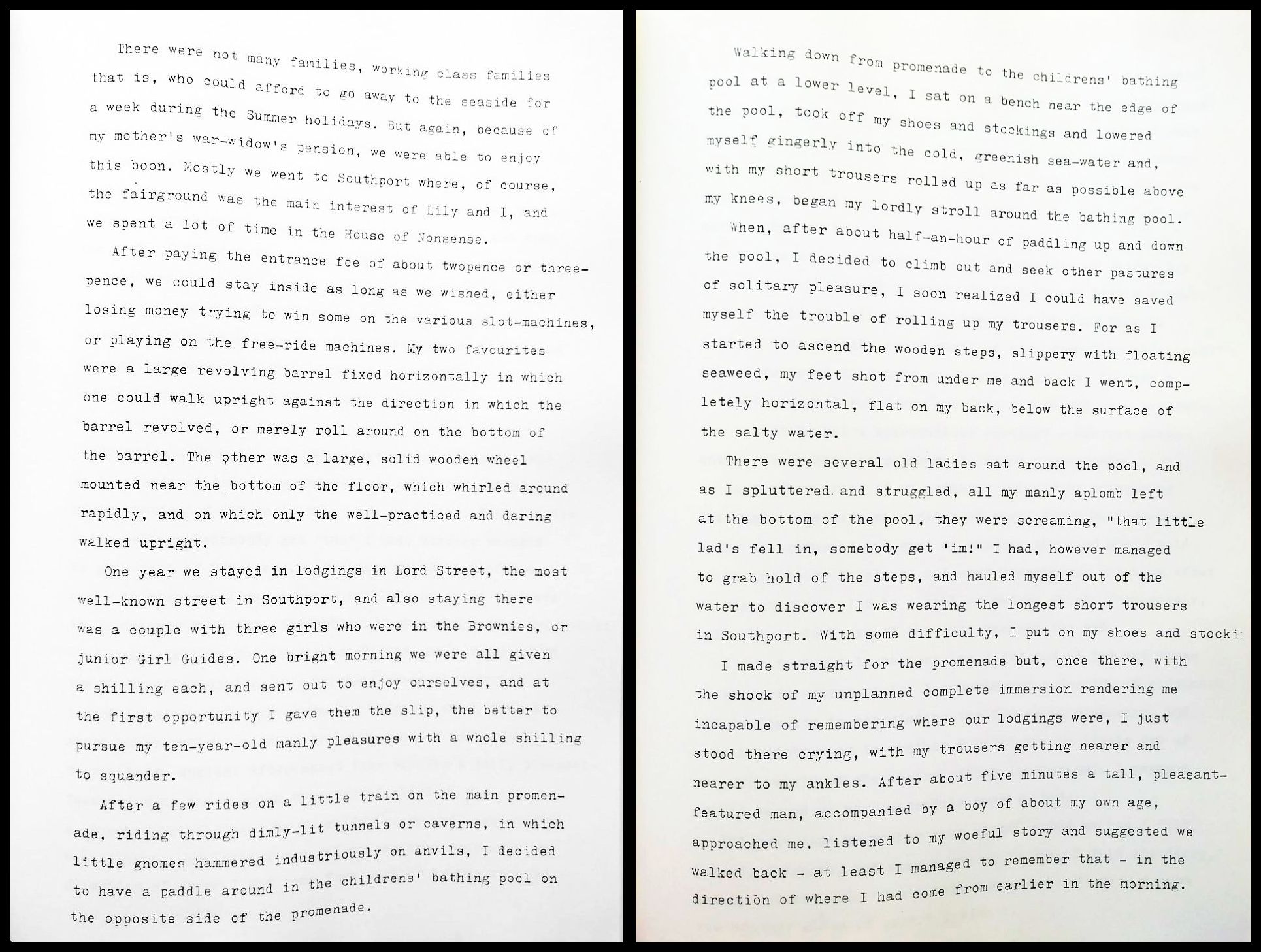
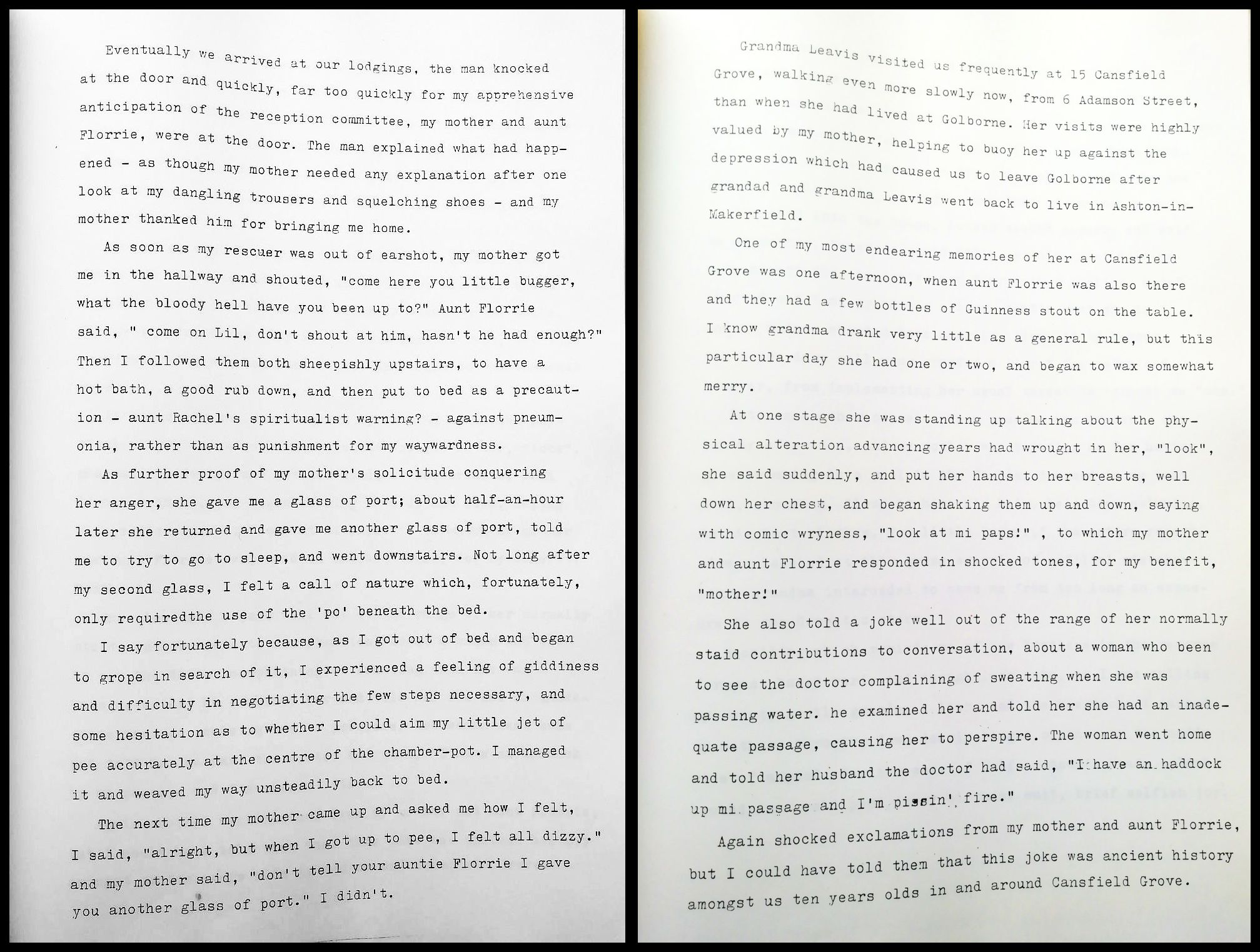


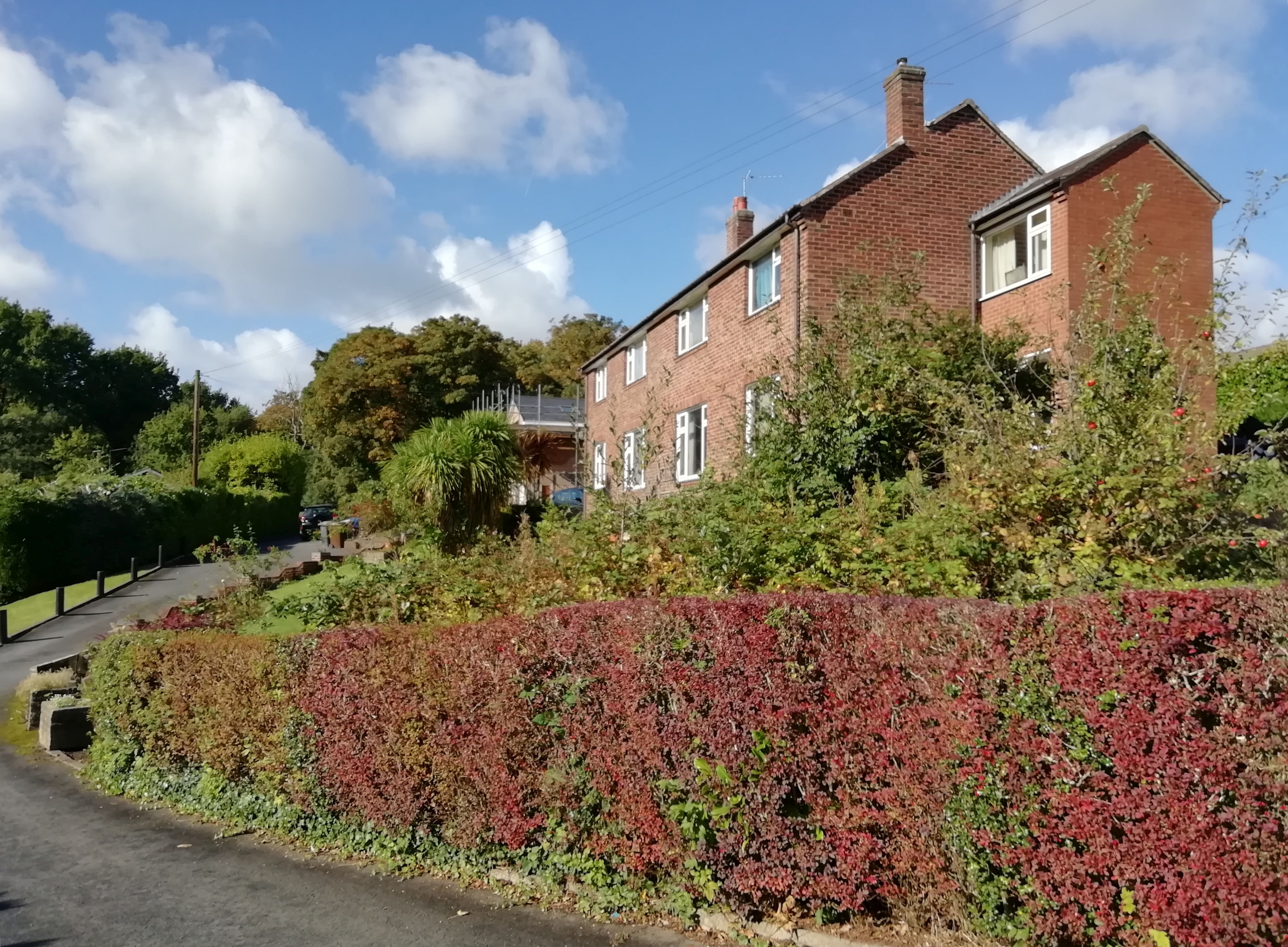
Above: Now developed as an extension of Rigby Street, the path seen here on 8 October 2022 led to Sam Pierce's wooded playground on the banks of Millingford Brook. R L Hughes Primary School occupies the former Suttons Farm site.

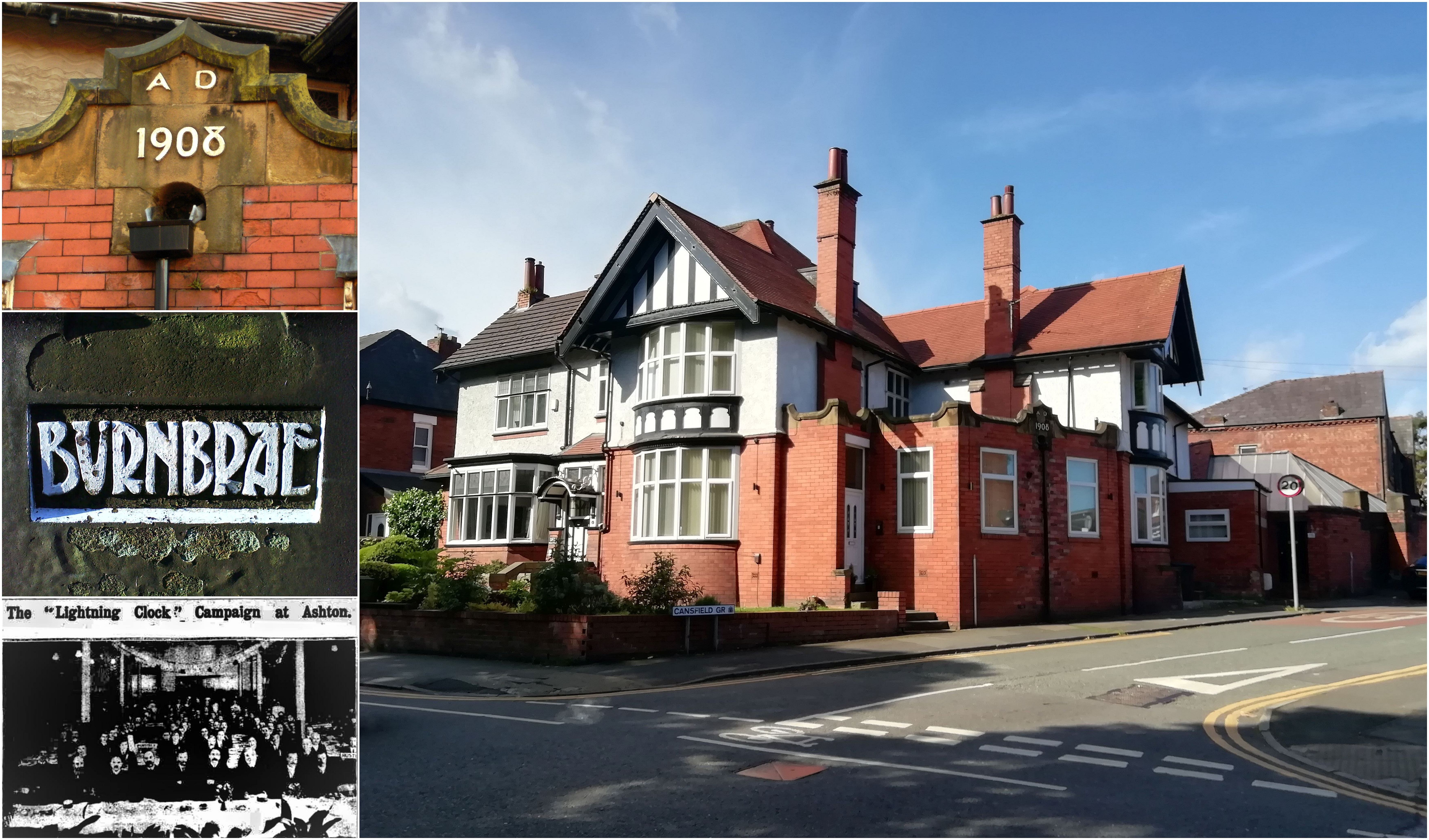
Above: Alexander Lee Cobban was born in 1869 at Rathen, Aberdeenshire. After qualifying as a physician and surgeon, he married Elsie in 1899 and the couple moved south of the border. In 1907, at the second attempt, Dr Cobban secured permission to build a large house and consulting rooms - “Burnbrae” - on the corner of Wigan Road and Cansfield Grove, Ashton-in-Makerfield. By 1912 he was practising in partnership with fellow-Scot Dr James Hunter. Dr Cobban retired about 1942, and died in Edinburgh in 1948. The photographs of “Burnbrae” were taken on 25 November 2016. Dr Cobban is pictured in a cutting from the 25 January 1913 edition of The Wigan Observer, seated 4th from left at the front, in his capacity as president of Ashton YMCA.
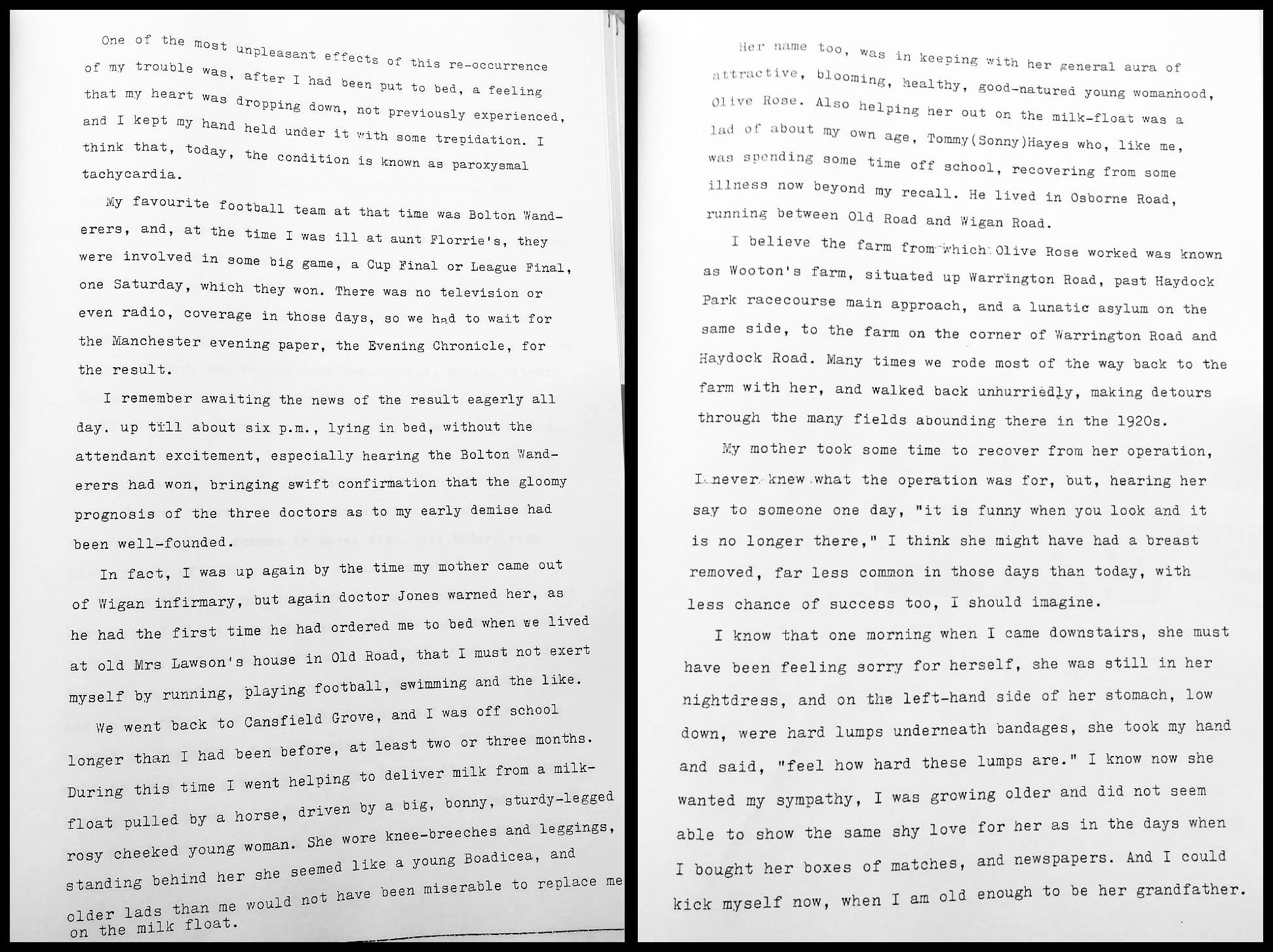

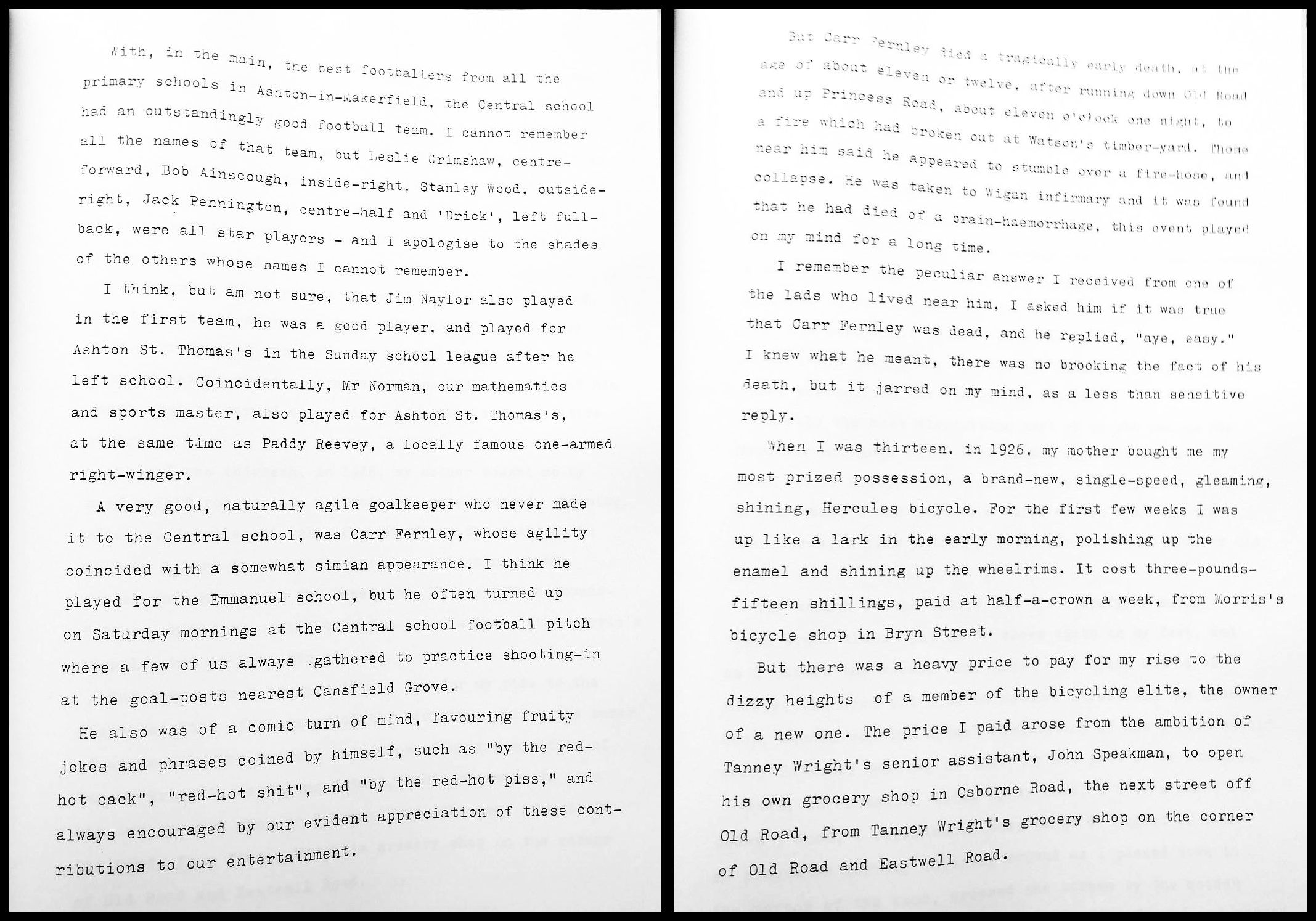

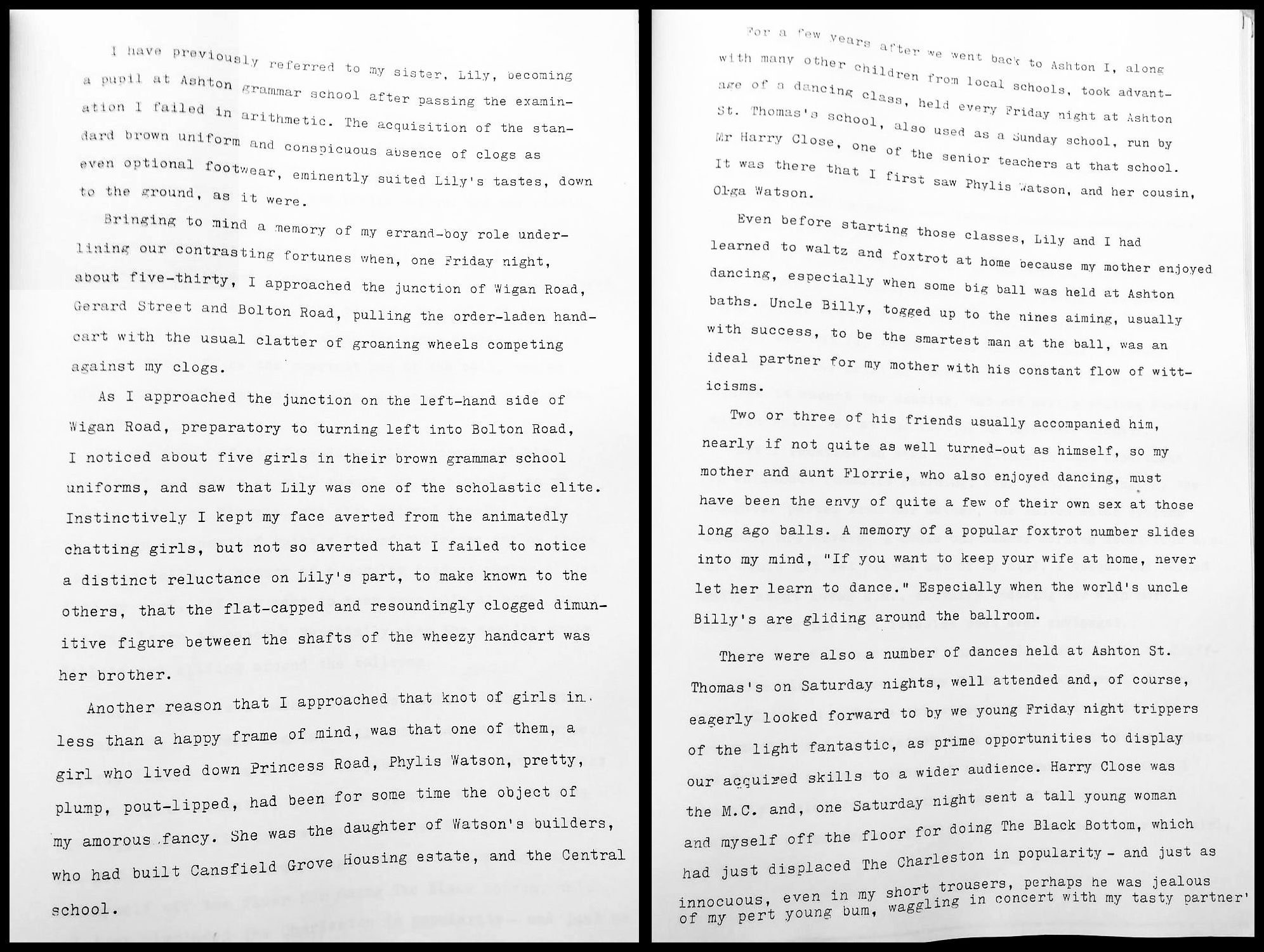
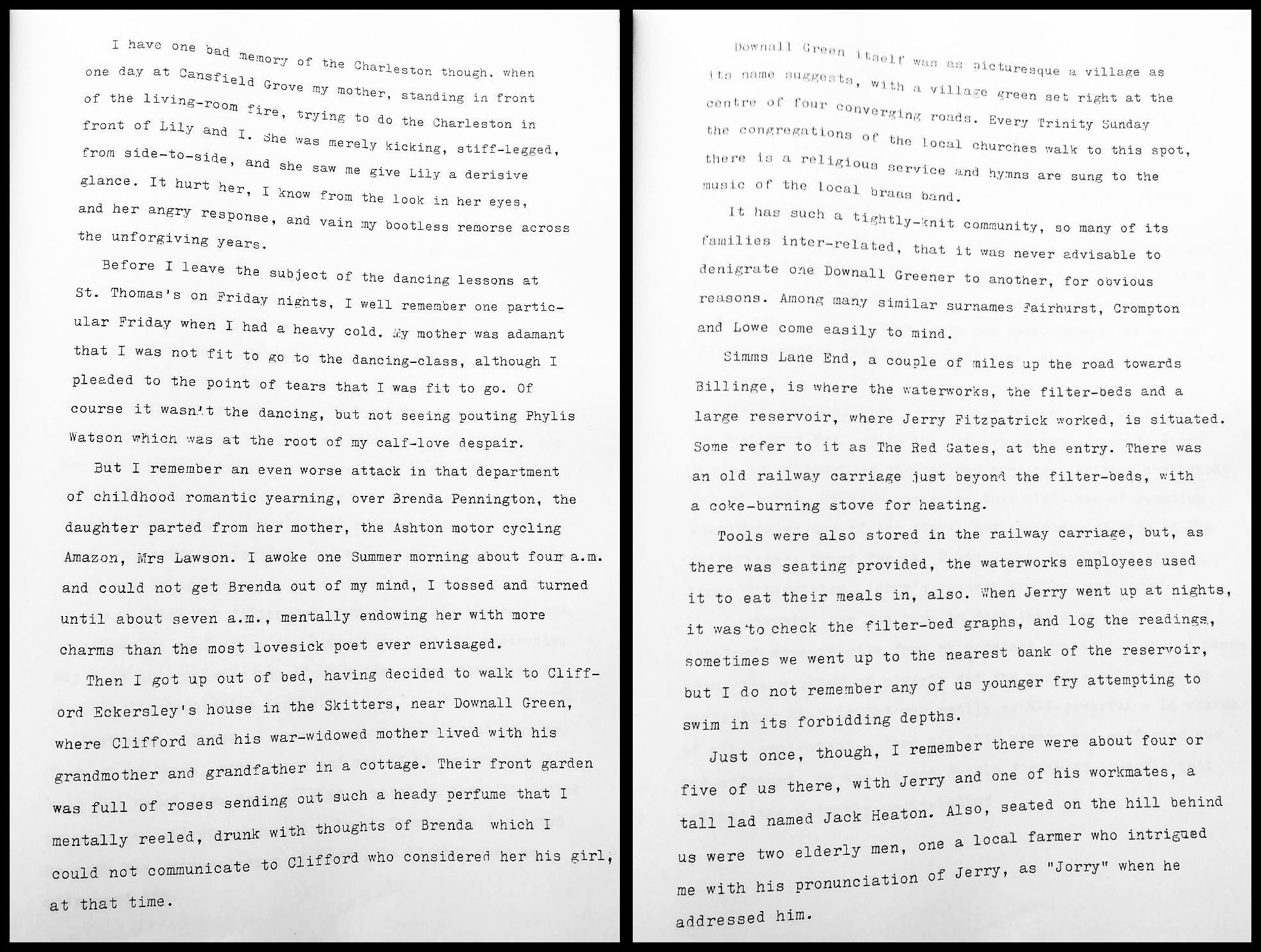
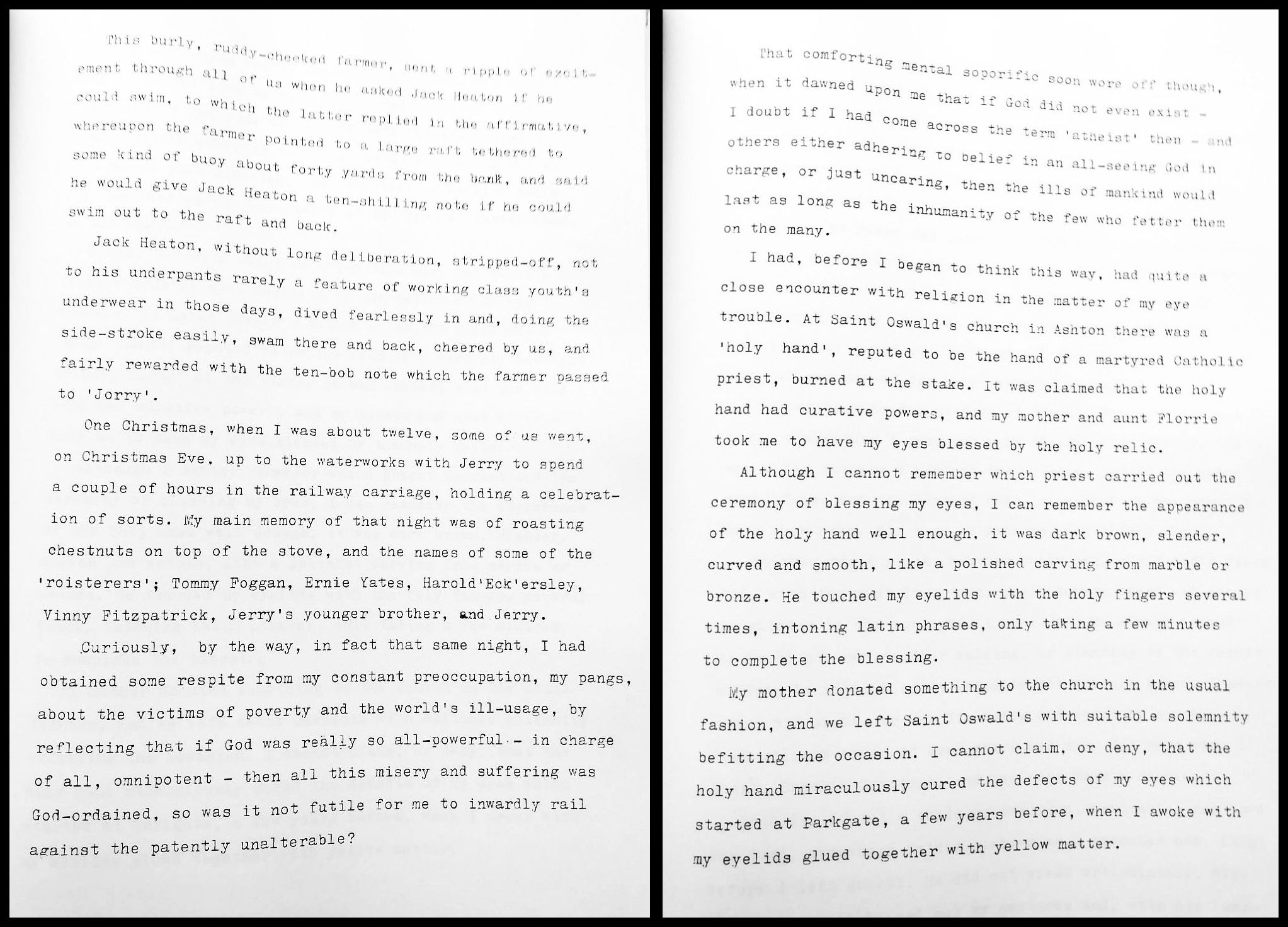
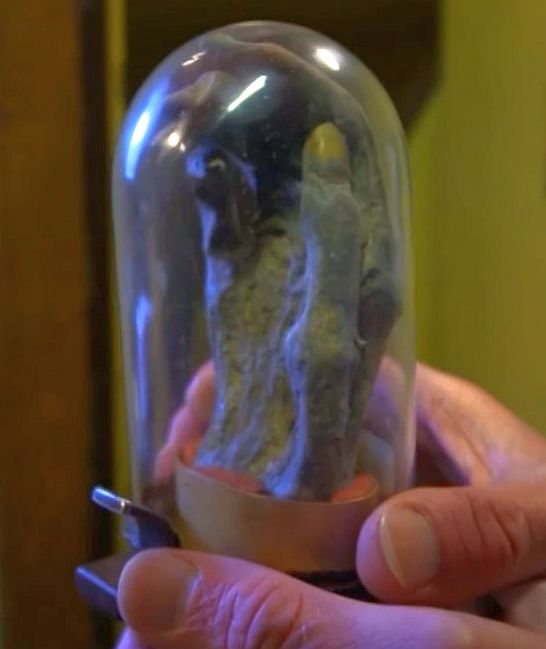
Above: The Church of SS Oswald and Edmund Arrowsmith at Ashton-in-Makerfield preserves what is claimed to be the martyred Edmund Arrowsmith's severed right hand. From at least the middle of the 18th century this object has been associated with numerous cures, said to be brought about by applying it - or some other object that has come into contact with “the holy hand” - to the afflicted part of the body.
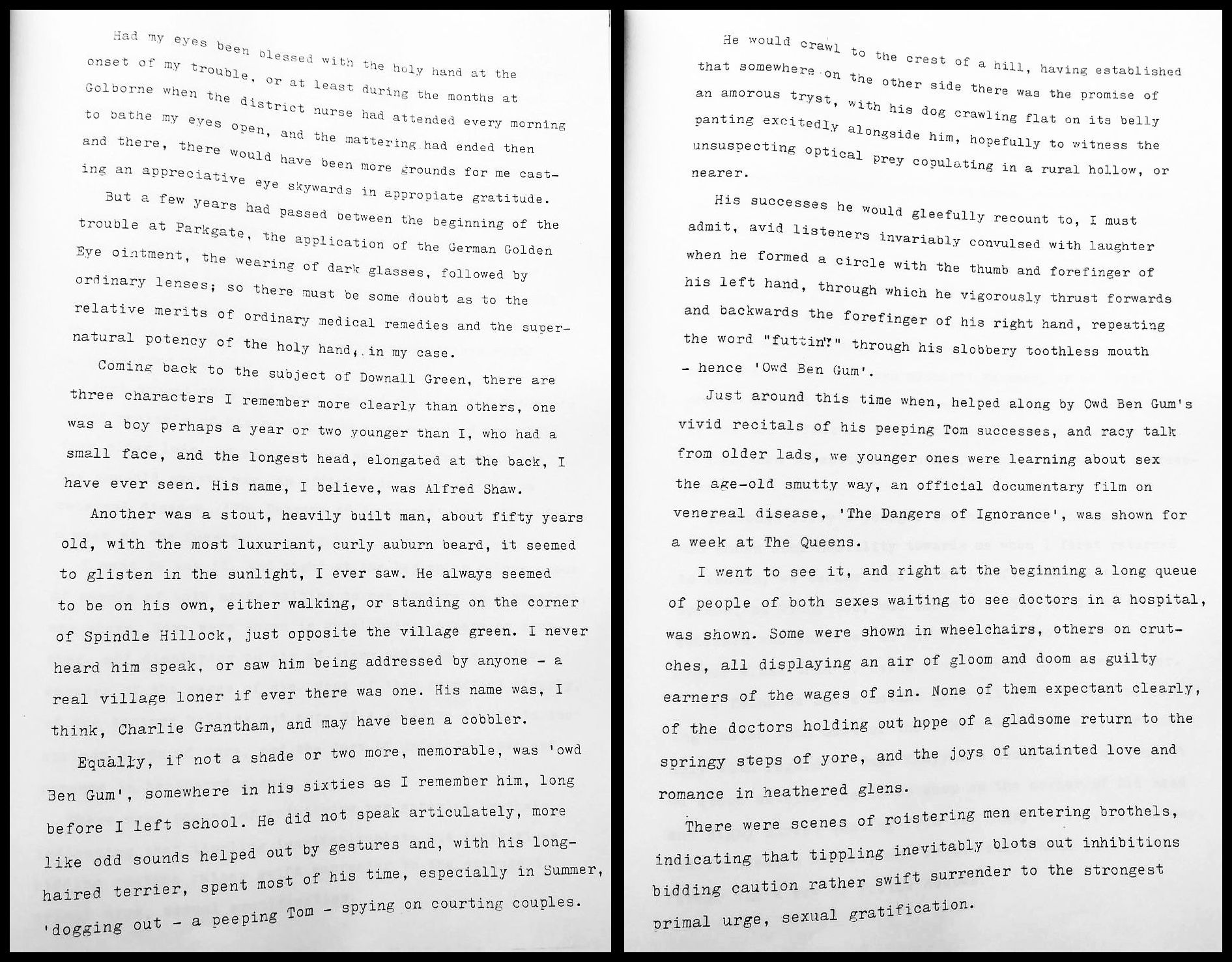


Above: Former police houses at 6-8 Rigby Street, Ashton-in-Makerfield, seen here on 22 October 2022. In 1920, to address an urgent housing shortage in the aftermath of the First World War, the County Council embarked on a programme of erecting Prefabricated Reinforced Concrete (PRC) houses for police and other critical personnel at locations across Lancashire. Ashton-in-Makerfield UDC gave permission for ten such houses, including six at 2-12 Rigby Street. Potentially catastrophic flaws only became apparent in subsequent decades; in particular a tendency for the concrete skin to degrade allowing water penetration and failure of the internal steelwork. Only the pair shown above were still standing just over a century later; no. 8, on the left, appears more or less in its original condition but no. 6 was dismantled and rebuilt in the mid-1990s.
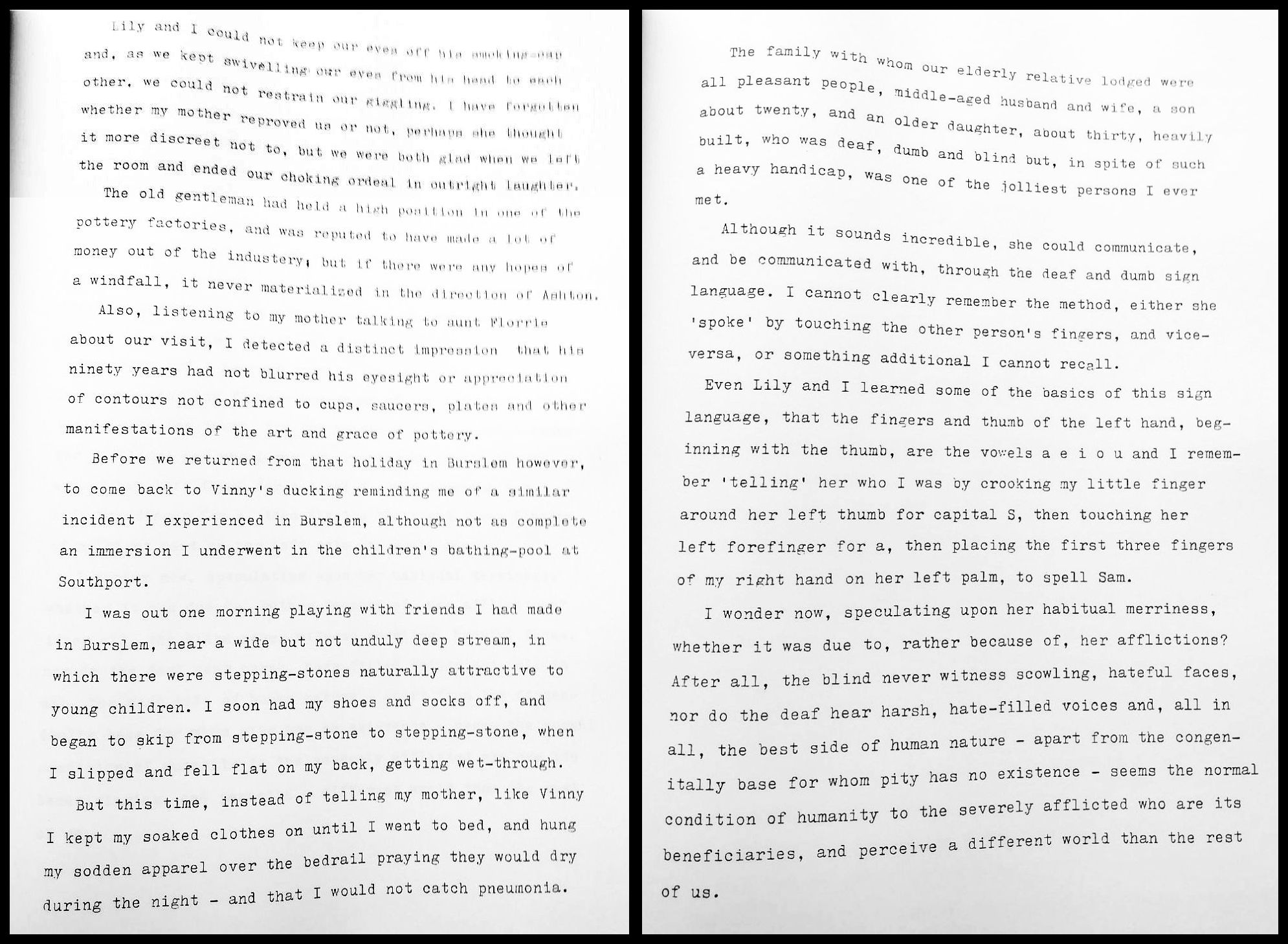
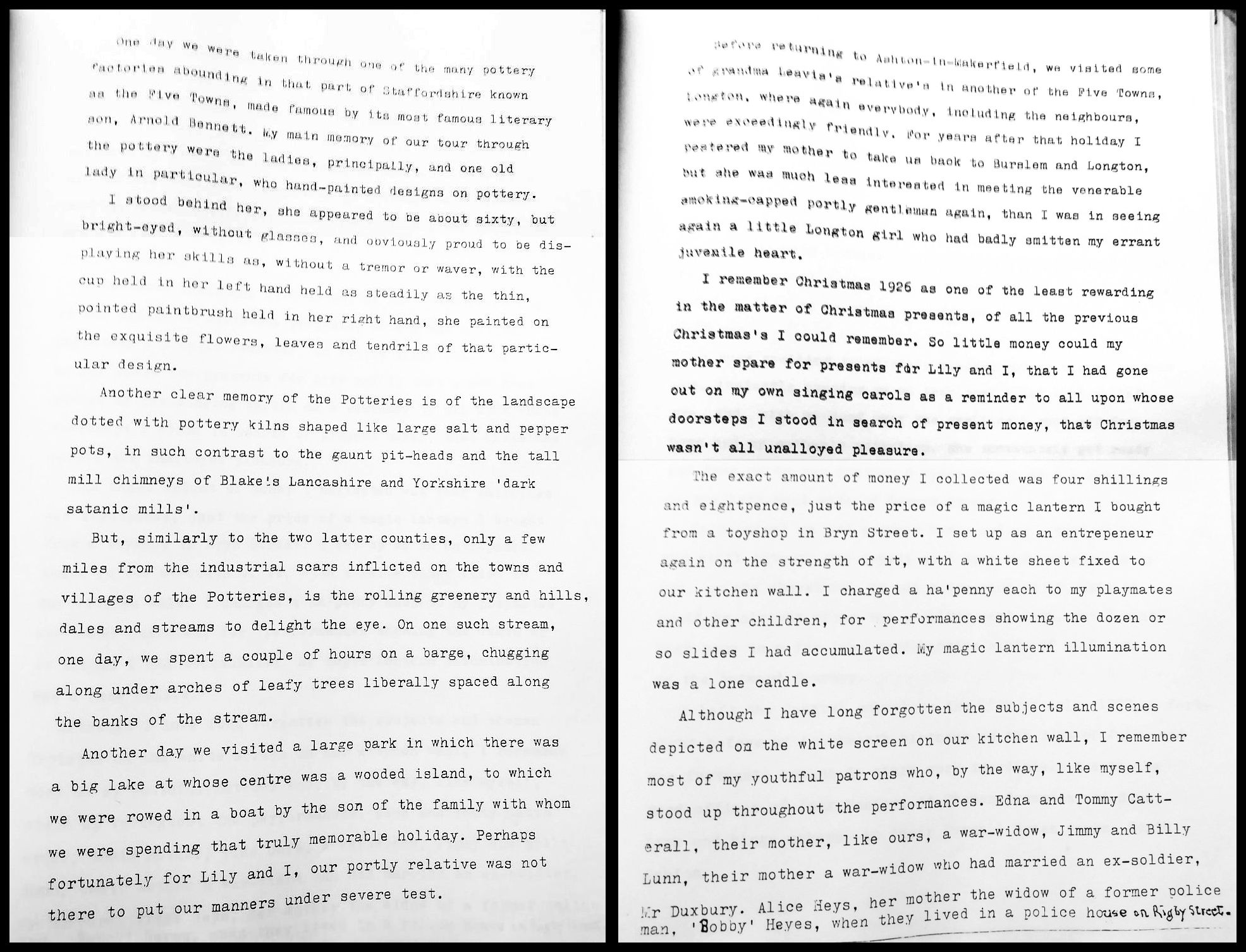
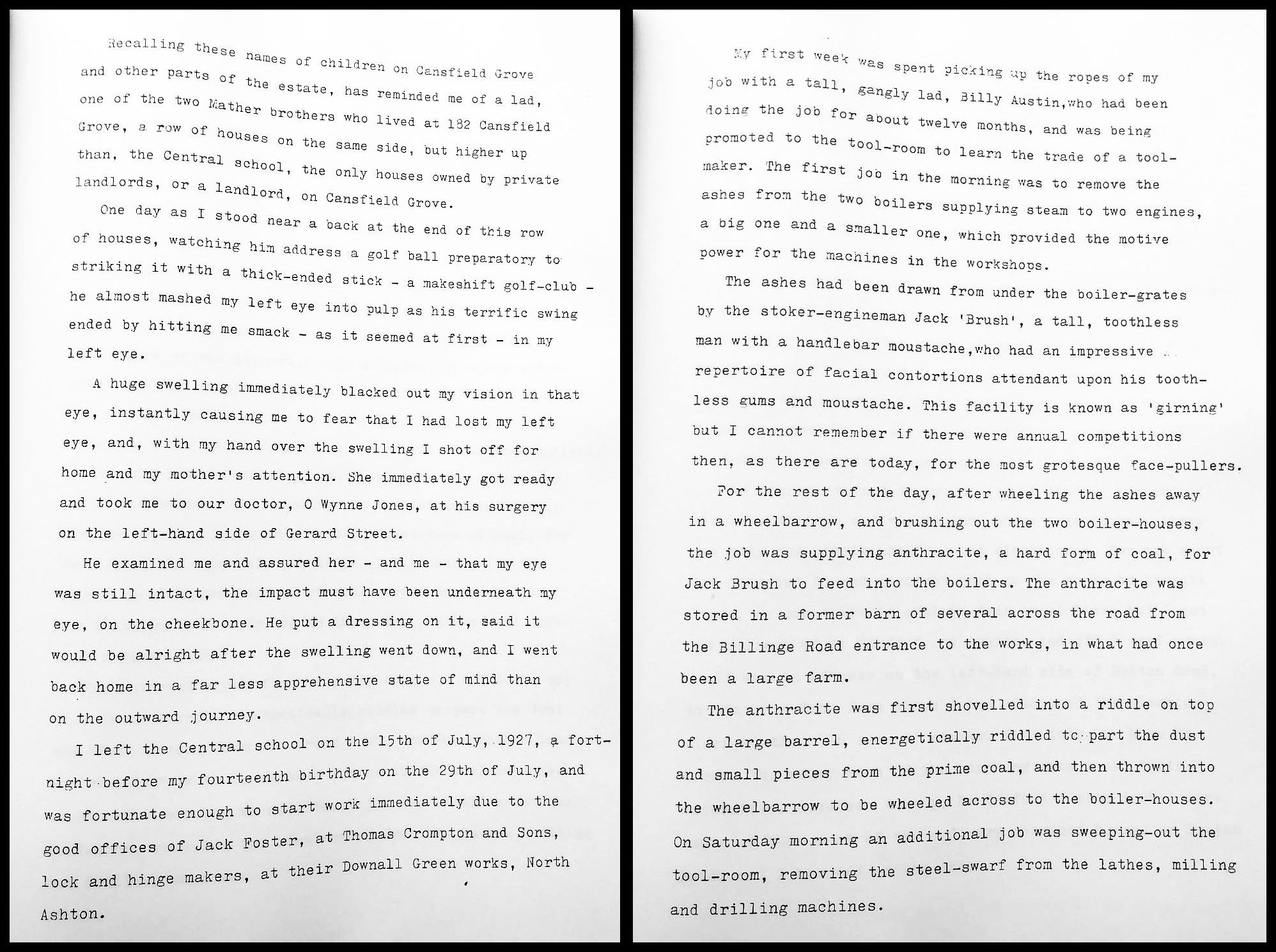

Above: Oswal Wynn Jones qualified MRCS, LRCP at London in 1904, and in 1907 married Martha, daughter of the long-serving Ashton-in-Makerfield Medical Officer of Health Dr Nathan Hannah. Entering into partnership with his father-in-law at both the latter's surgeries at Park Lane Colliery and at Rock House, Gerard Street, Dr Jones took up residence at Rock House following Dr Hannah's death in 1915. In 1929 it was reported that human remains “sixty years old” had been found in the garden: “The house has been successively occupied for over 100 years by members the medical profession, and the coroner has decided not to hold an inquest”. Now demolished, Rock House is seen in the right foreground of this 1930s postcard.
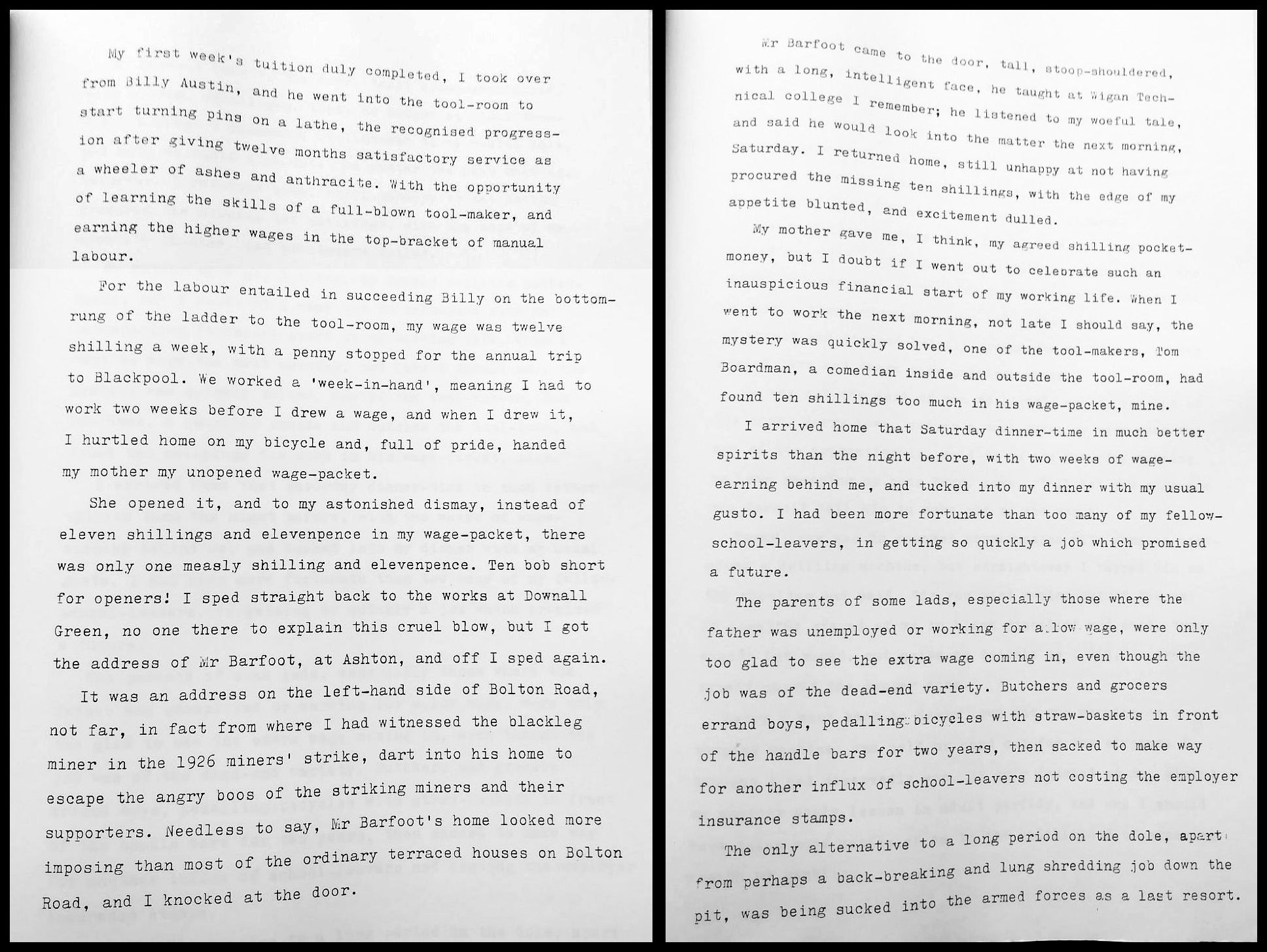
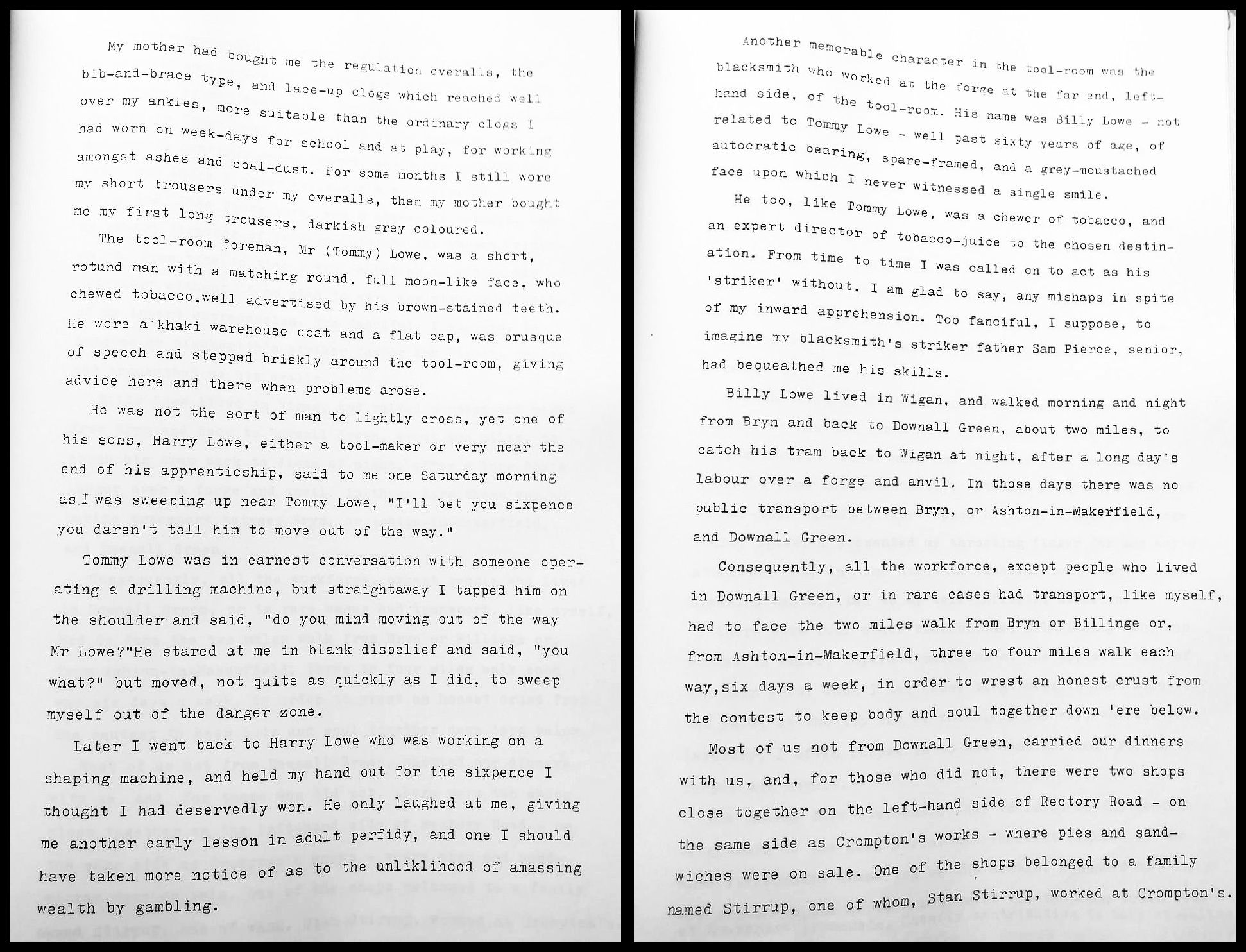
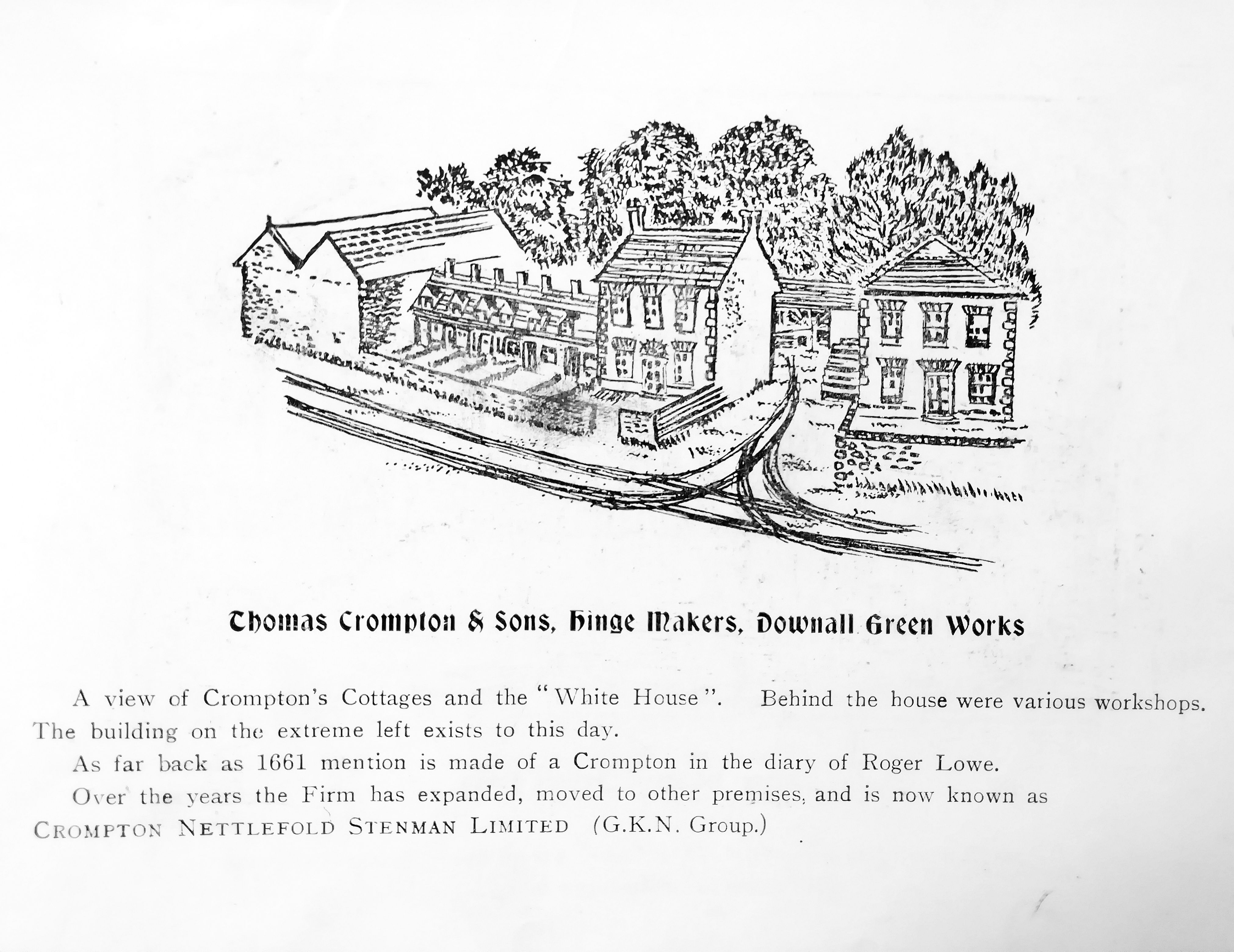
Above: Thomas Crompton (1829-1910) was born at Tapster's Moss, half way between Rectory Road and Simms Road at Downall Green. Initially employed by James Billinge & Co, iron merchants and manufacturers of hinges, locks etc, in 1866 he began selling products under his own name. When in 1869 James Billinge went bankrupt, Thomas bought up the business and by the 1890s was operating from premises at the bottom of Rectory Road near the family home of Highfield House. Sketch of Cromptons' North Ashton (Downall Green) Works by the former Ashton-in-Makefield librarian Sheila Folkes.
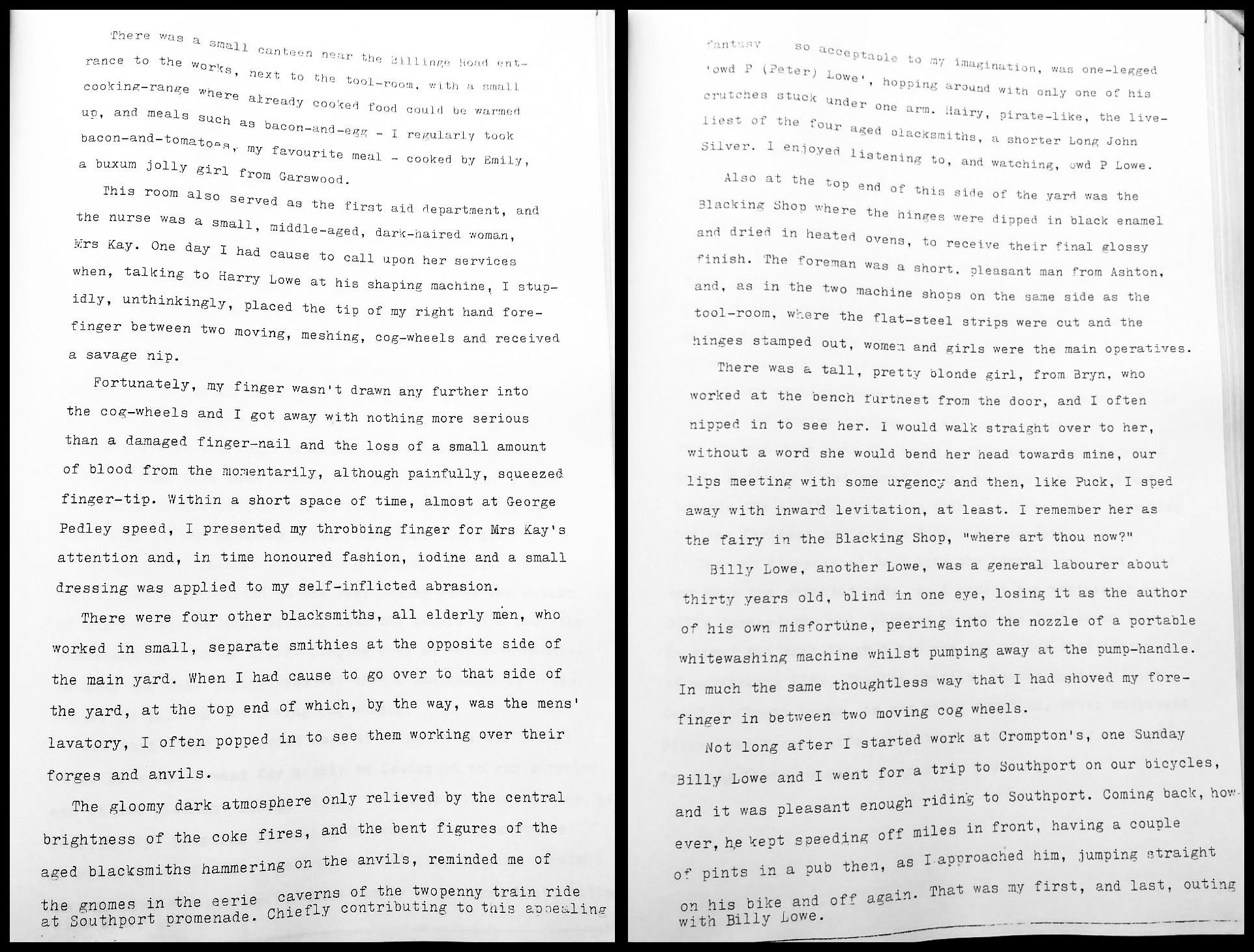
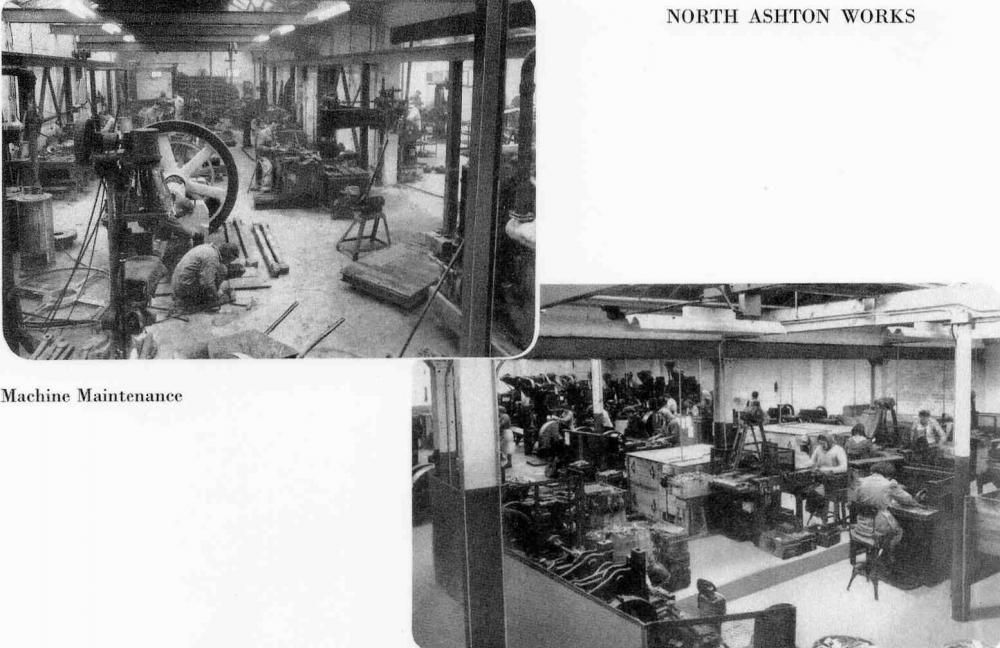
Above: Interior views of T Crompton & Sons' North Ashton works, from a company brochure. For many years after the founder's death the firm continued to be a major employer in the area, his descendants and successors completing the transition from traditional handicraft practices to mechanised manufacturing using the latest technological innovations.
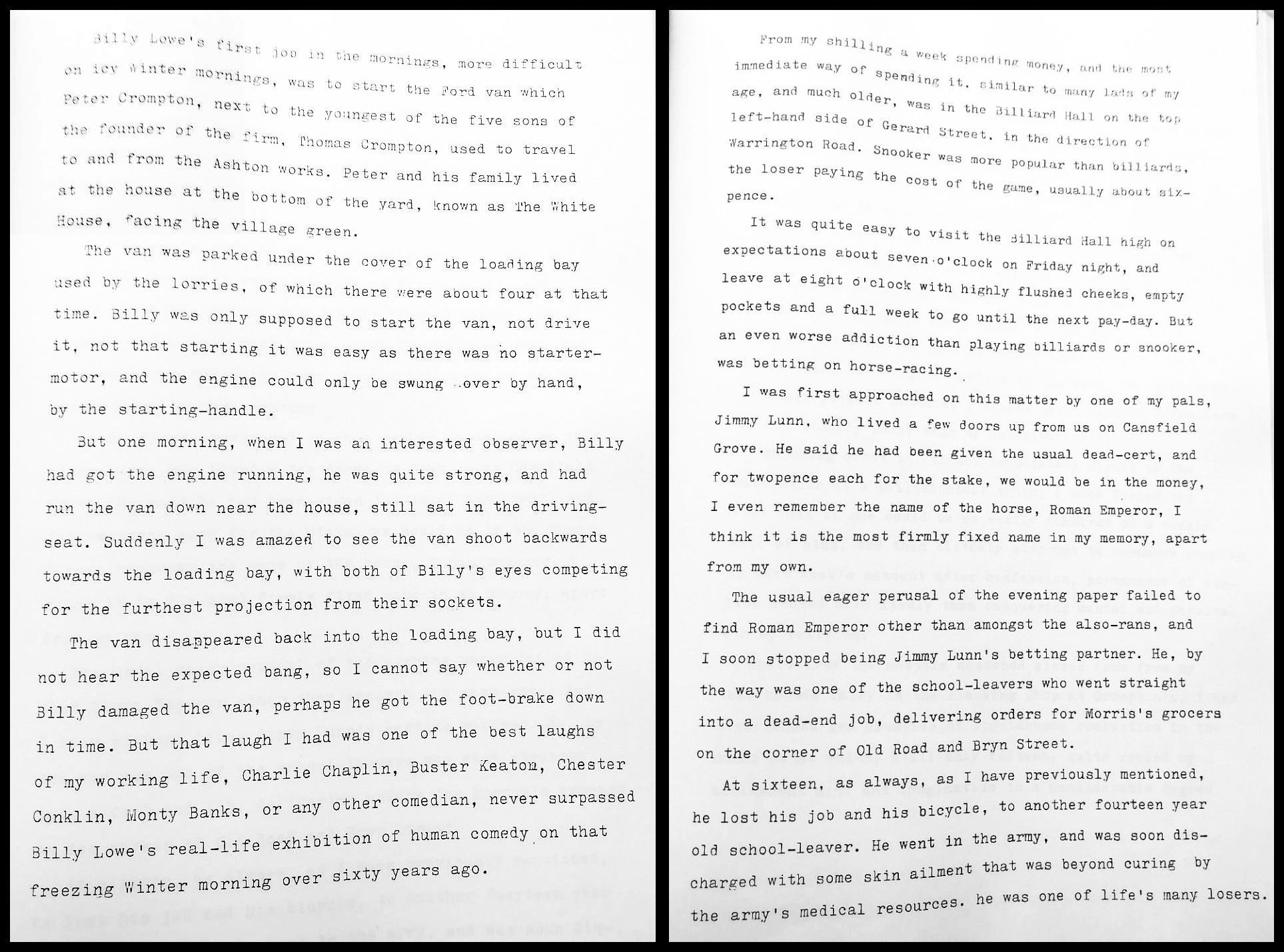
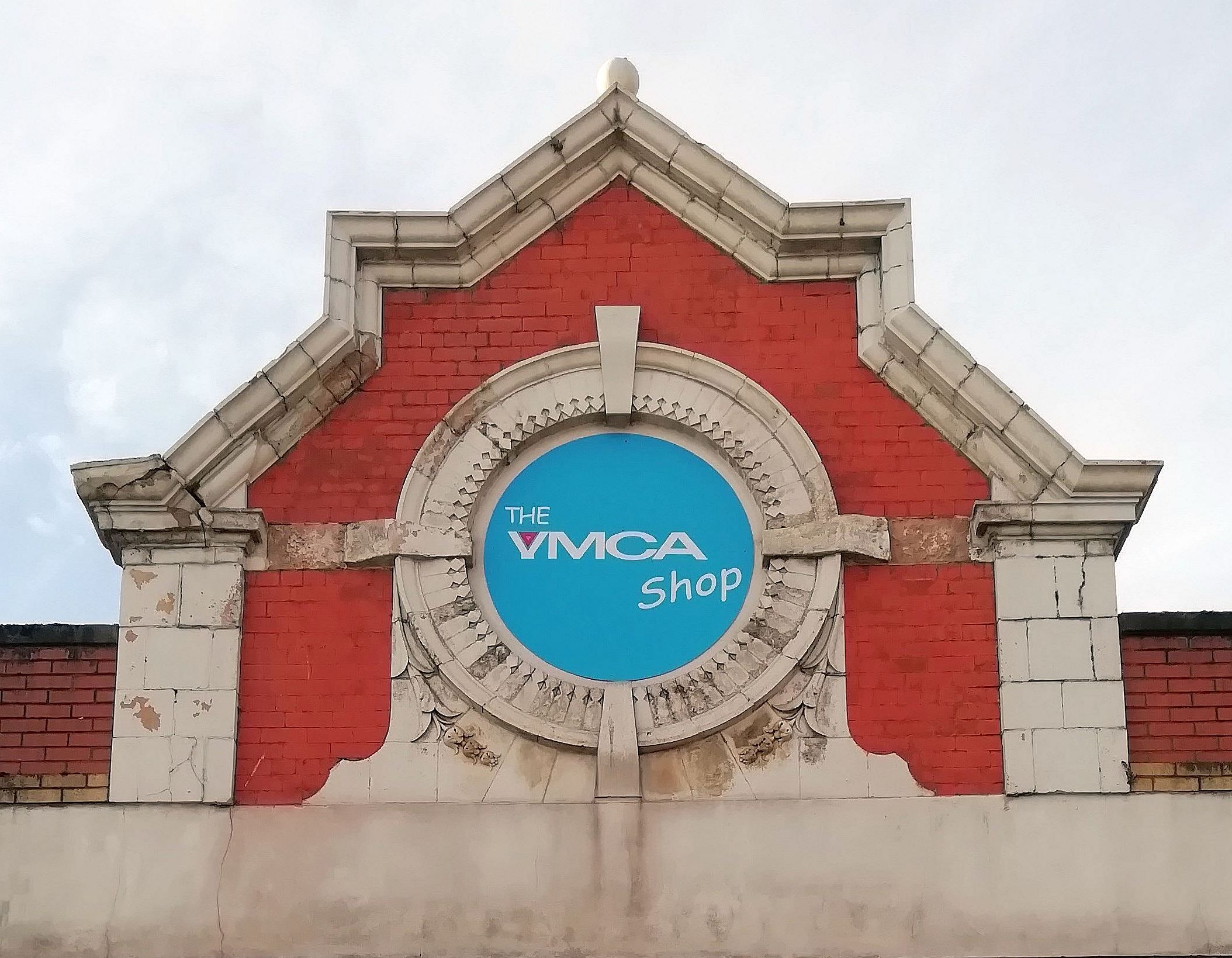
Above: Detail from the former Temperance Billiard Hall at 67 Gerard Street, Ashton-in-Makefield, built in 1911 for sports equipment manufacturer E J Riley Ltd. Whilst somewhat less ornate, the building shares certain characteristics with others of the period designed by architects Norman Evans and T G Somerford for the Temperance Billiard Hall Co: eclectic detailing, characterful Queen Anne-style elevations and strong presence in the streetscape. Closed by February 1961, the Gerard Street billiard hall has since been used for a variety of retail purposes.
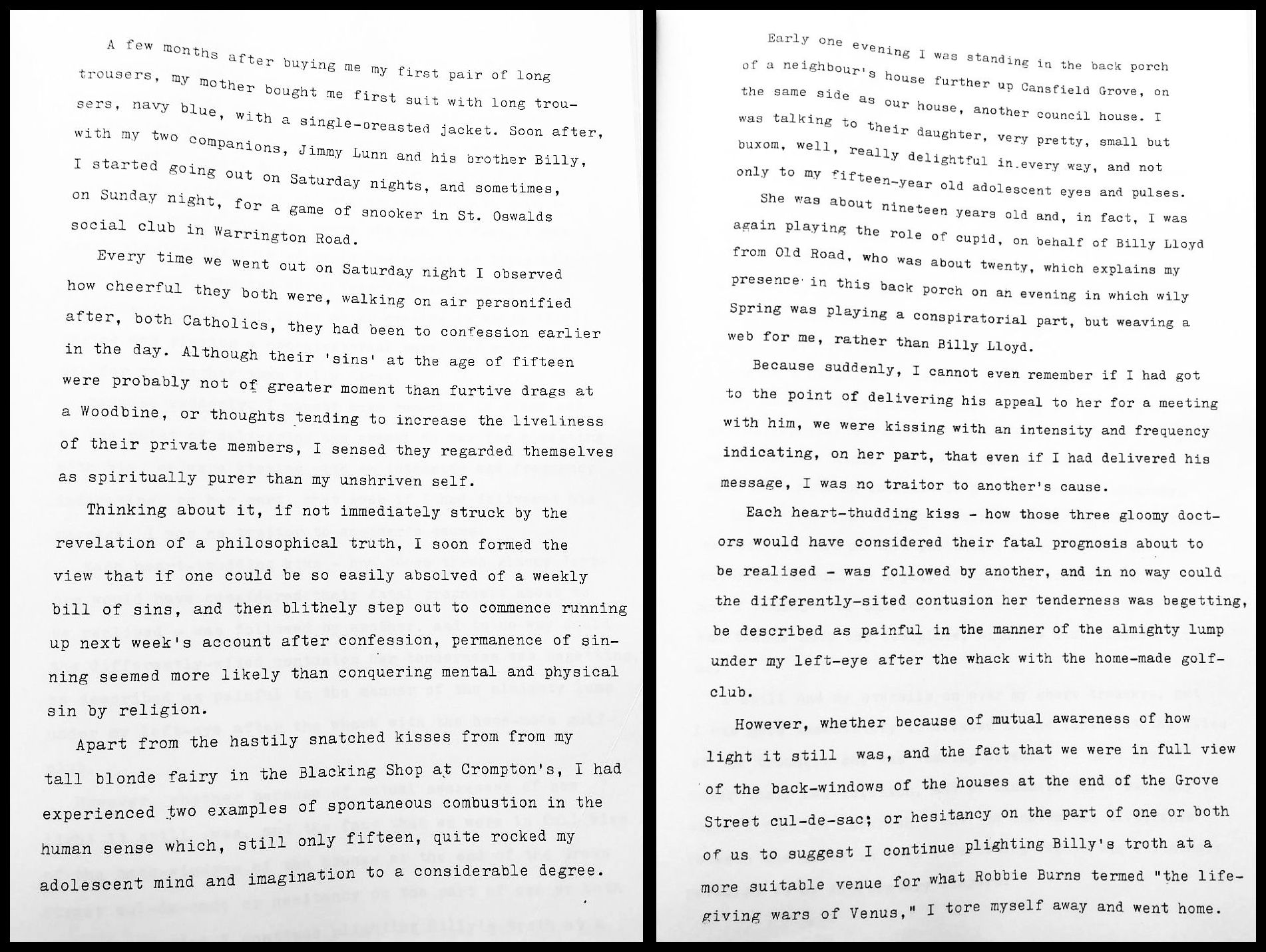

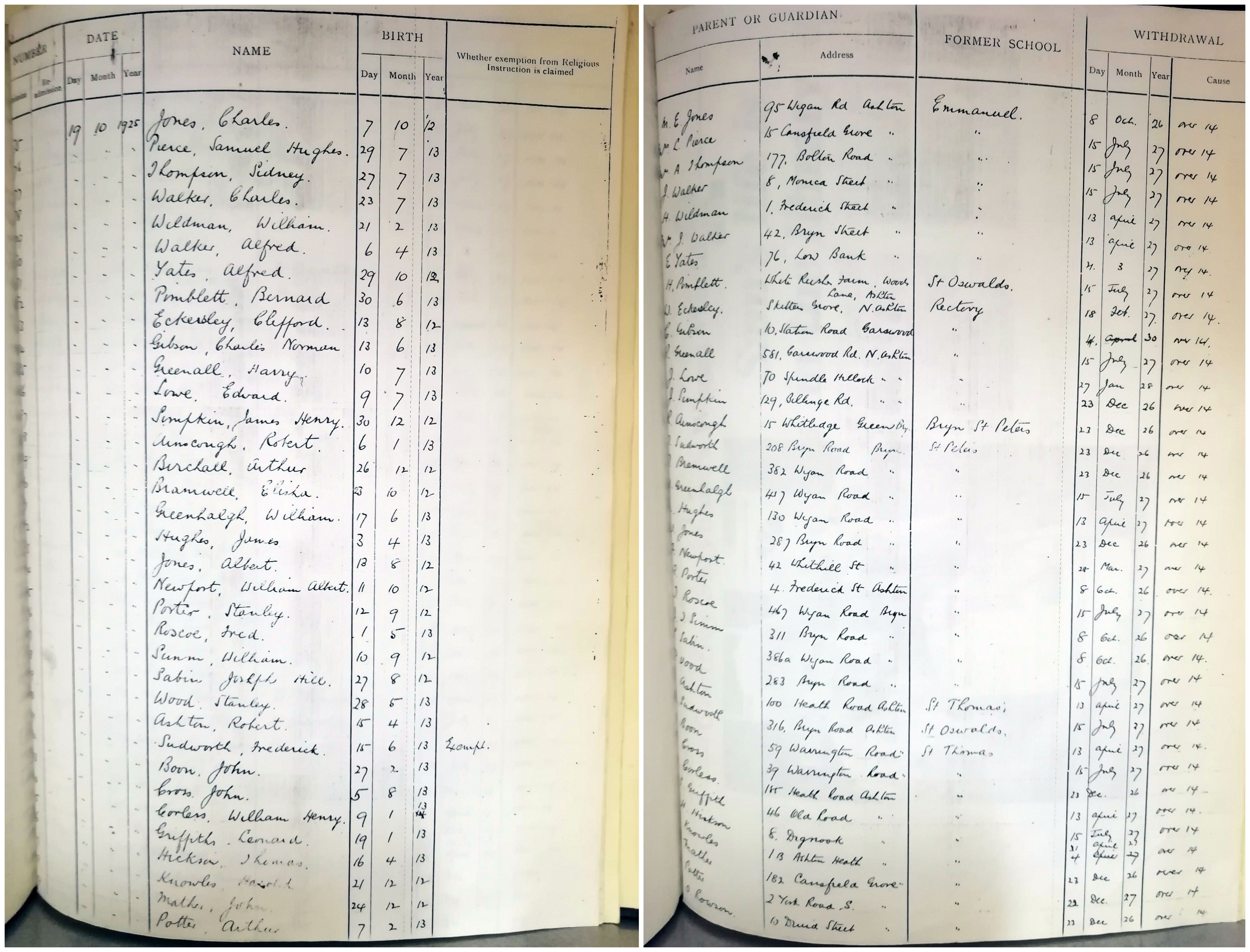
Above: Ashton Central School leavers' register, 1926/7: Sam Pierce appears in the second row from the top, his leaving date and reason for withdrawal confirmed as 8 October 1926, “over 14”.
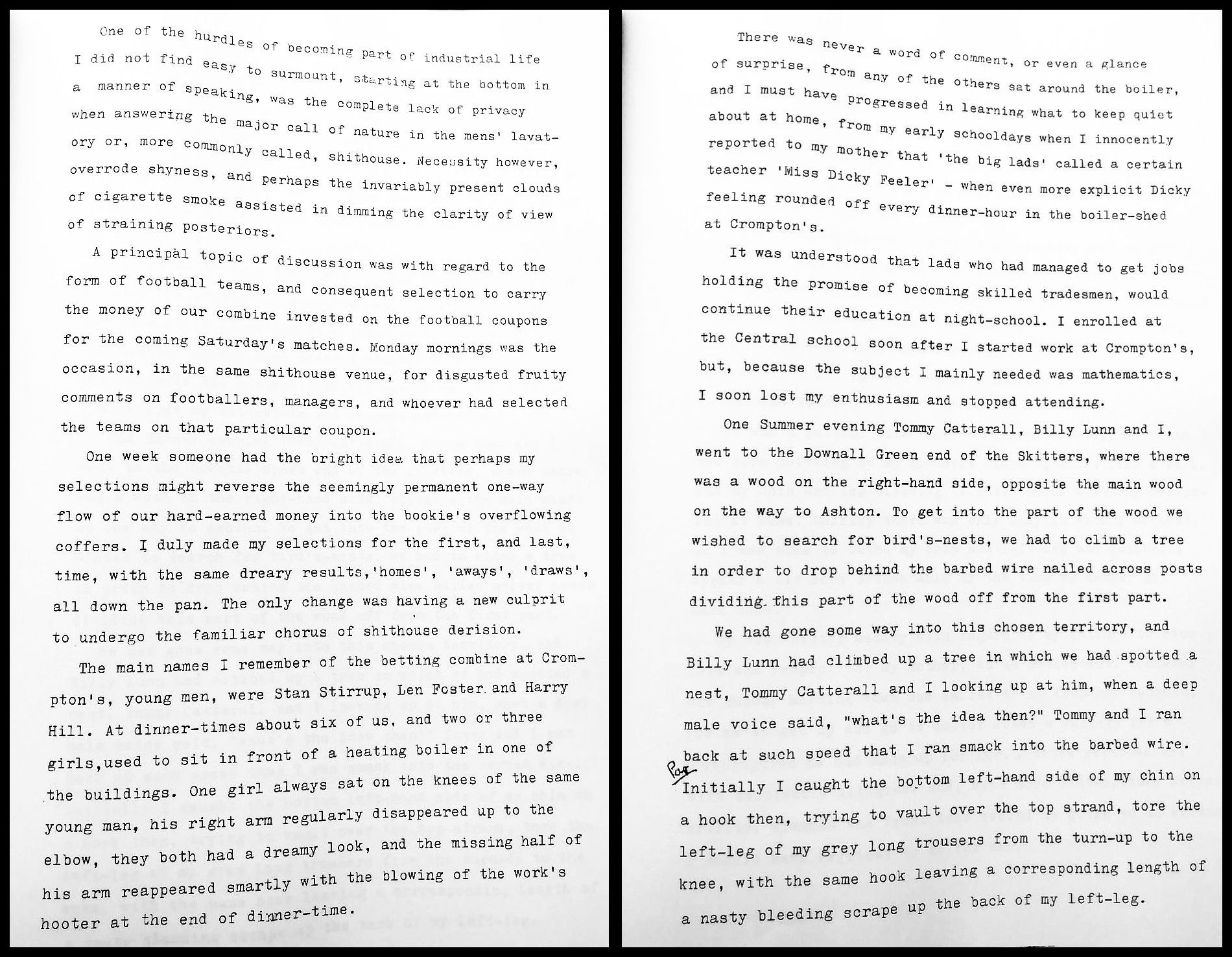

Above: Early 20th century postcard view of Skitters Wood. The name existed by the 1600s, and suggests a possible “Viking”/Scandinavian origin. There is a deed of 1653 in the Gerard Estate papers at Lancashire Archives whereby George Sorocold conveys the coal under “an Estate in Ashton called Skitters”, formerly the possession of Robert Pendlebury, to William Whitfield and another. Later deeds trace the property from 1731 (when it was in the possession of Jason Fairbrother) via the Turner family to Joseph Holt, who bought it from the Turners in 1785.
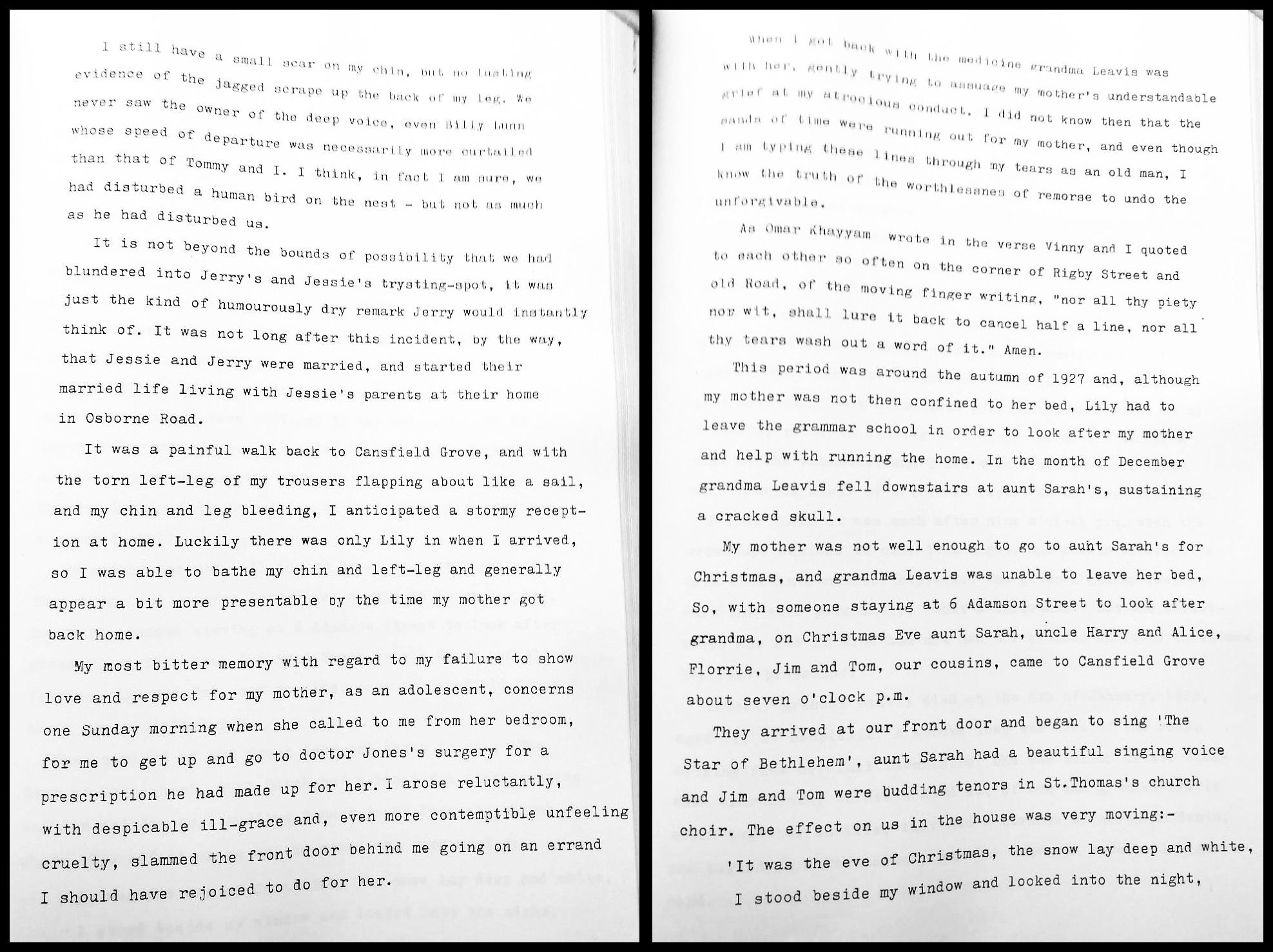

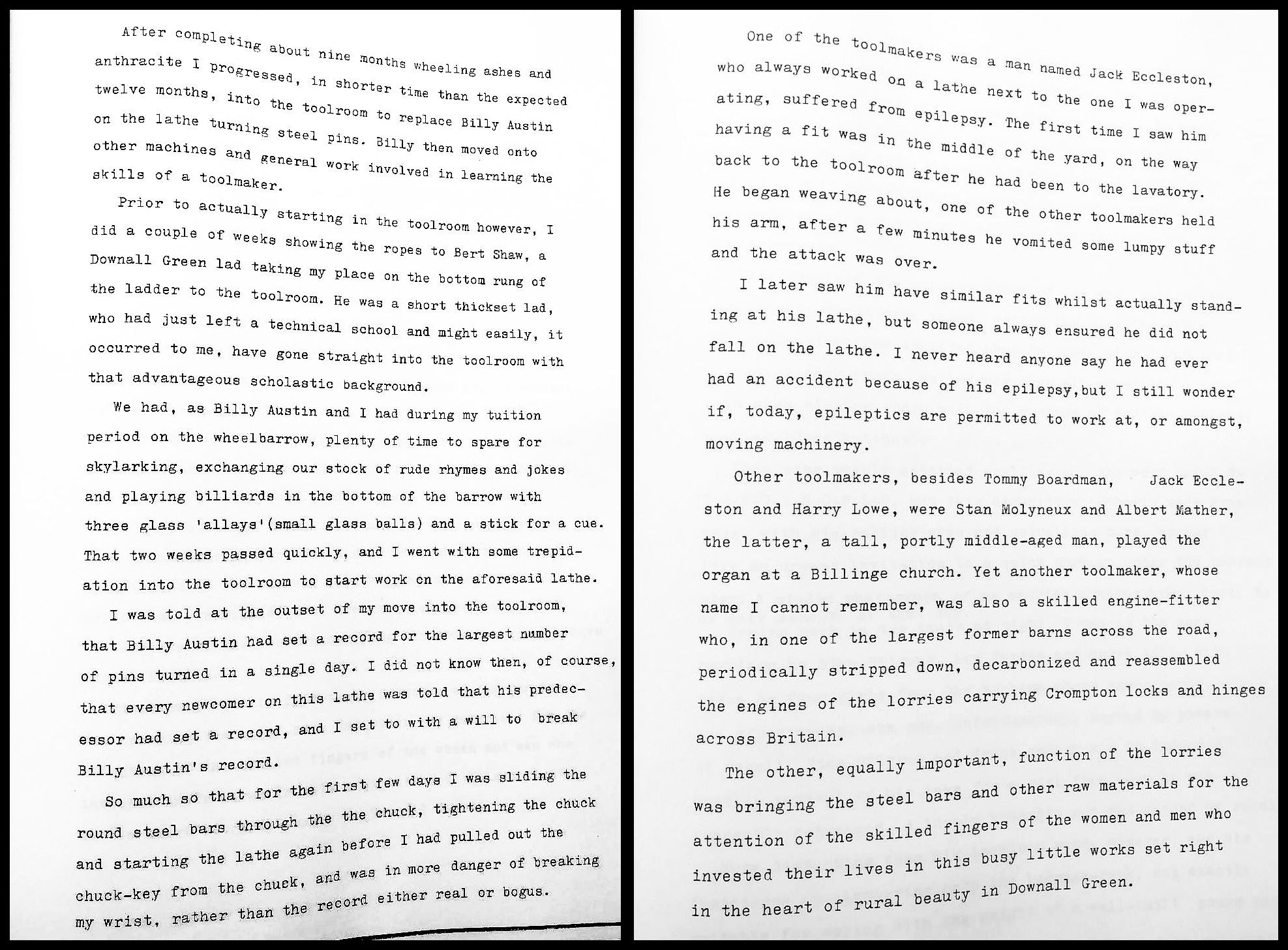

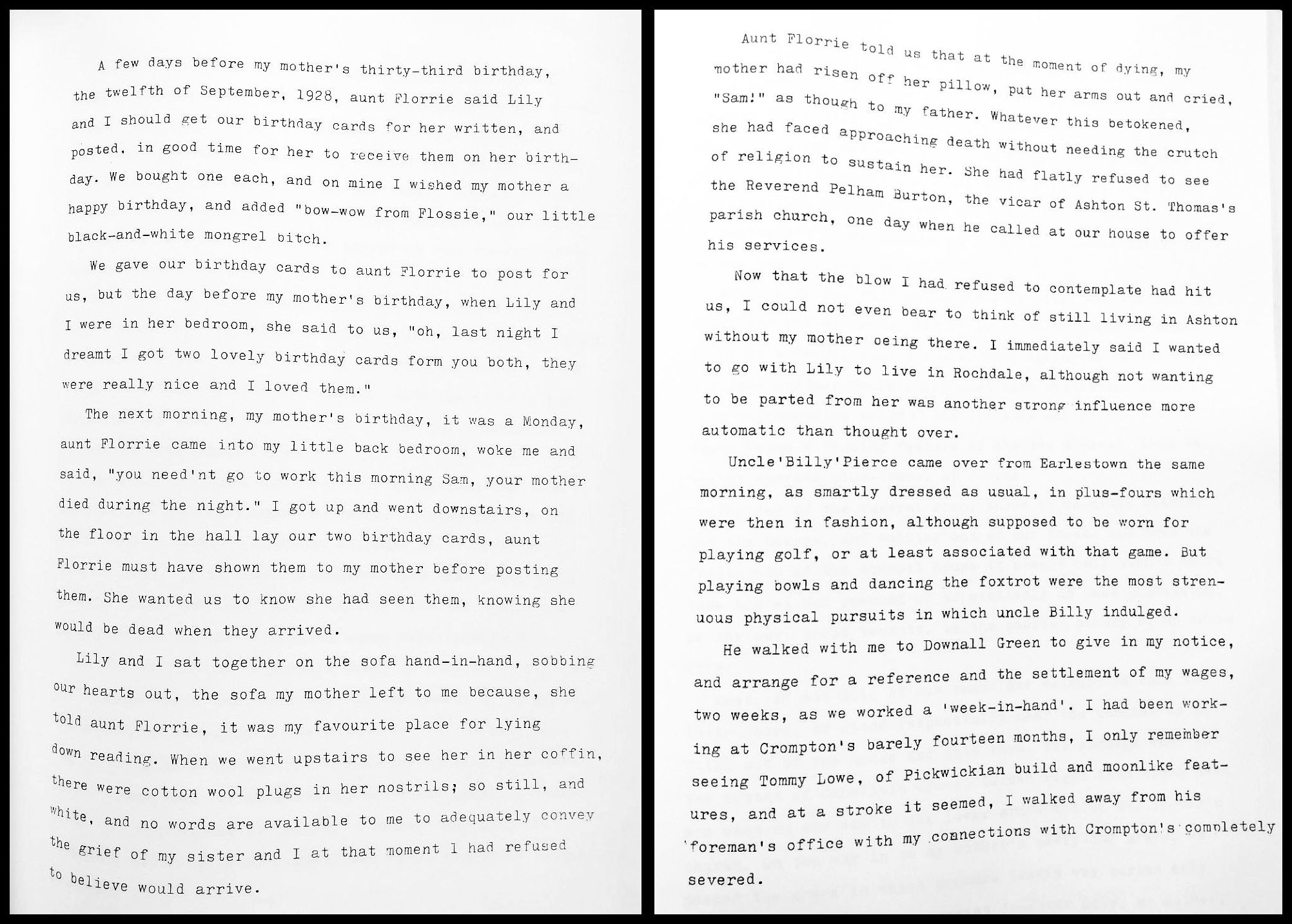
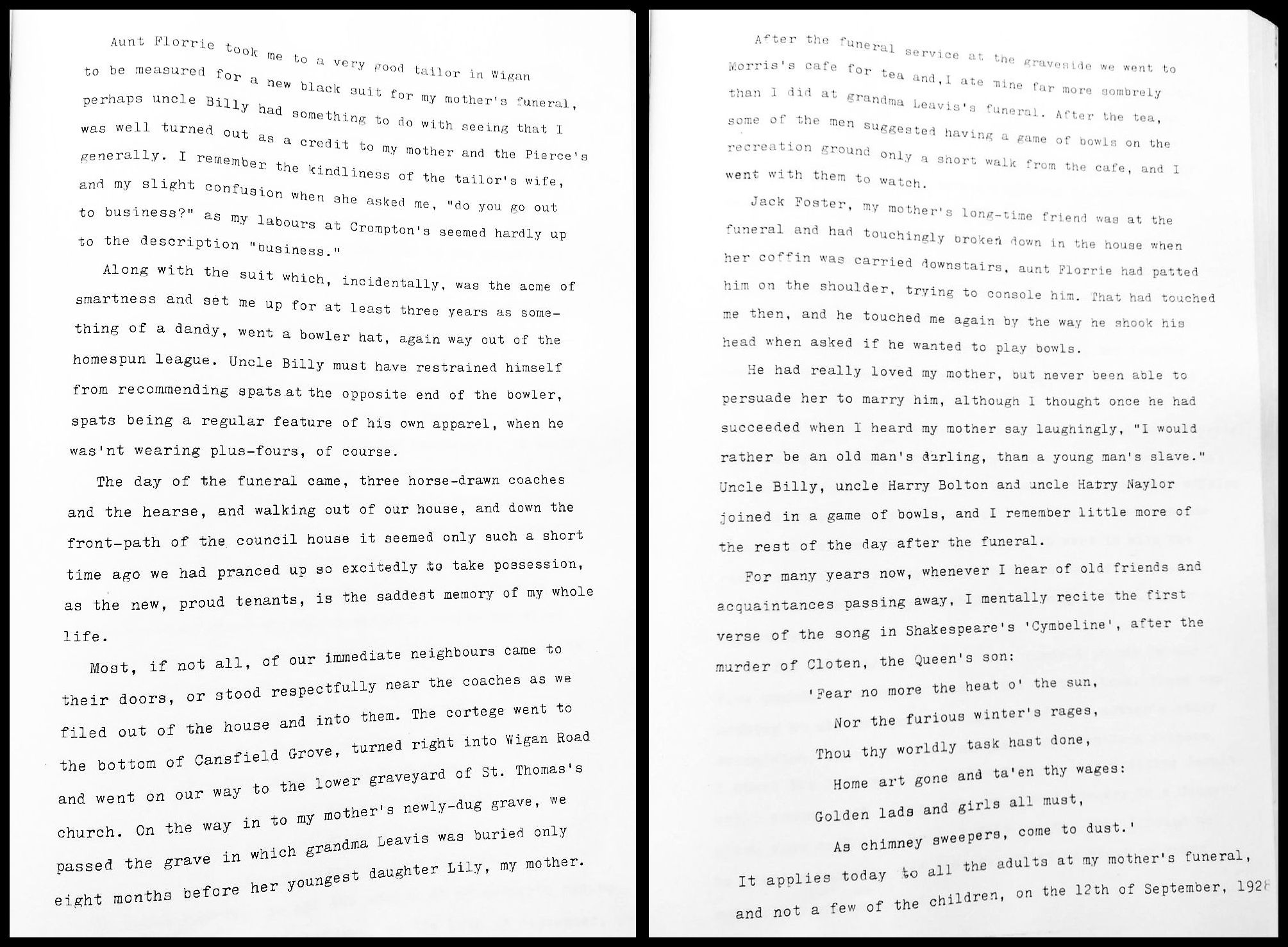
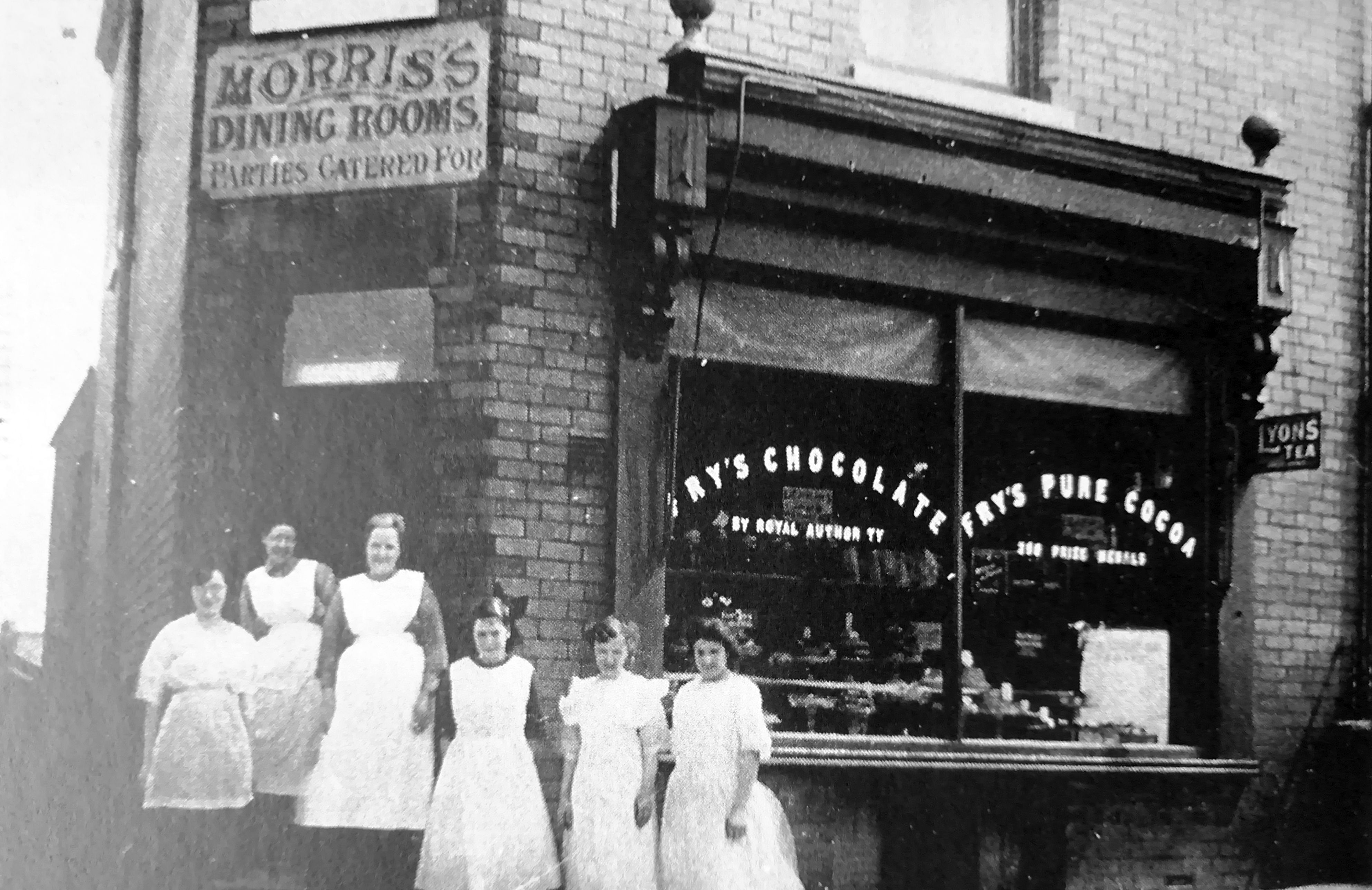
Above: Former Morris' Dining Rooms at 62 Bryn Street, Ashton-in-Makerfield, about 1920.
